

The Cost of Travel in Japan: My 2024 Budget Breakdown
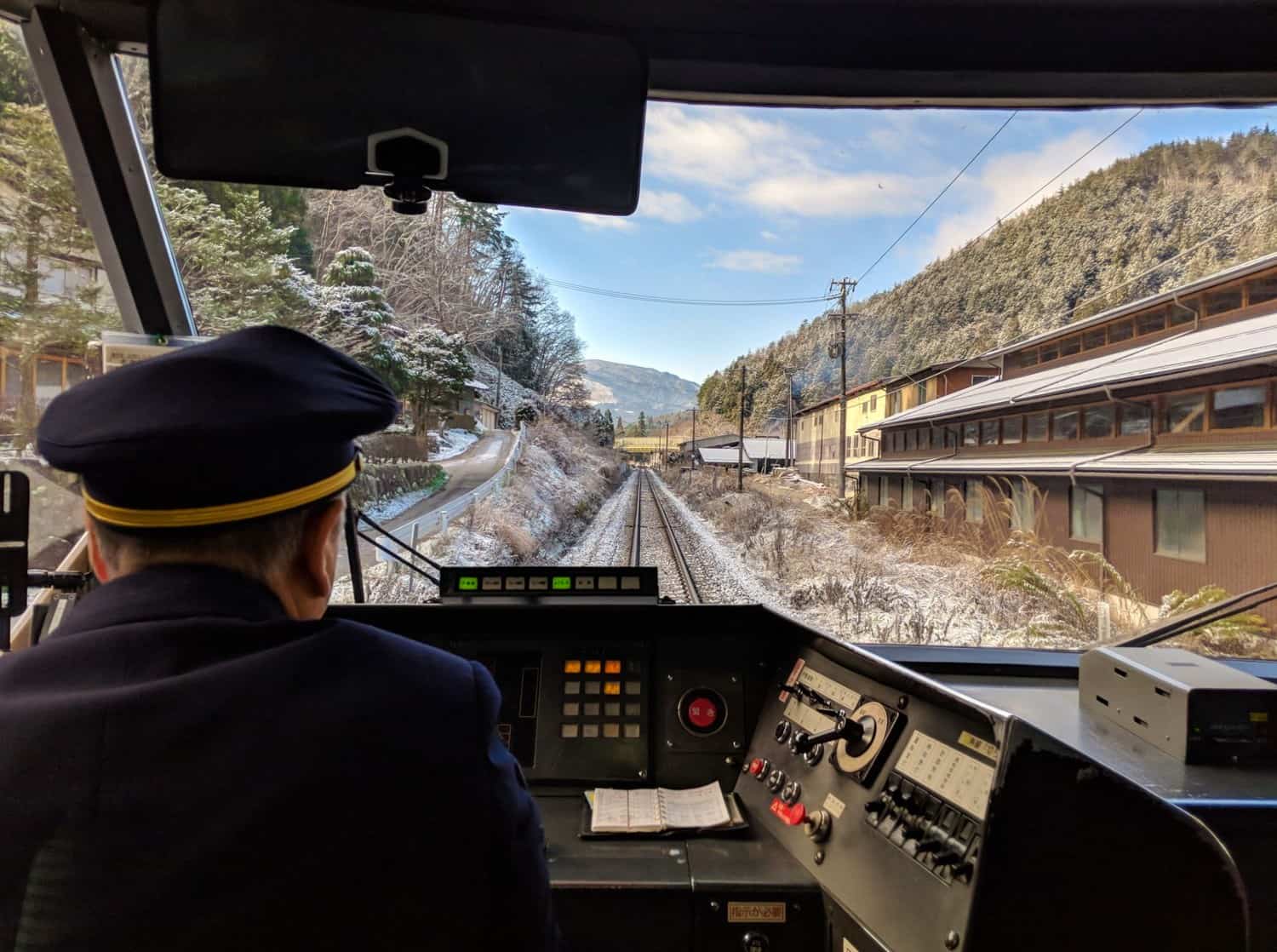
It took me six years to get to Japan.
I didn’t think I could afford it.
Every time I seriously looked into visiting, I would wince at the high cost of the train passes, read about how the hotels were super-expensive, and then fly to Vietnam instead. Or Taiwan. Or even Australia. Japan was simply too expensive for a budget traveller, so I decided to save it for when I was rich.
With that not happening any time soon, I decided to blow my money anyway, because I wanted to go and the gushing blog posts from travel writer friends had convinced me it would be worth the splurge.
Imagine my surprise, then, when I discovered that it really wasn’t that expensive.
I arrived in Japan fully expecting it to be the priciest country I’ve ever been to, but I discovered it’s more on a par with Western Europe or North America, and cheaper than Australia. It was way more affordable than Namibia , where my daily expenses came to $132, and way, way, way more affordable than the Democratic Republic of the Congo , where I averaged, um, $550 a day.
Anyway! This is about the cost of travel in Japan rather than my poor financial decisions, so let’s get started!
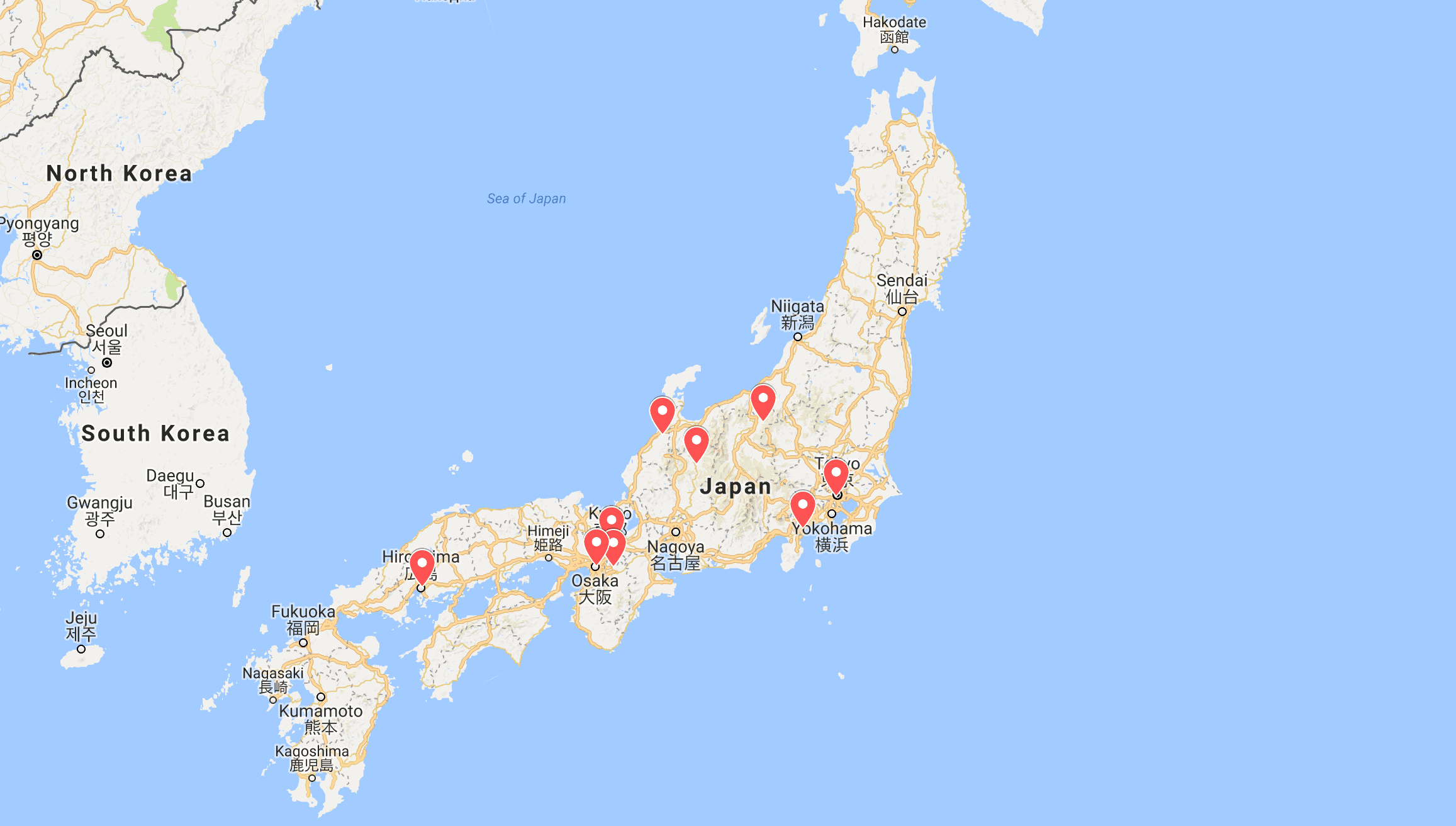
My 16-Day Japan Itinerary
Here’s a brief rundown of where I visited over my 16 days in the country — I think I managed to put together the perfect itinerary for first-time travellers to Japan .
Tokyo: 4 nights Hakone: 1 night Yudanaka: 1 night Kanazawa: 2 nights Takayama: 1 night Kyoto: 3 nights Hiroshima: 1 night Osaka: 3 nights
What’s Included in this Post
This budget breakdown covers how much I spent on accommodation, transportation, activities, food, and whichever miscellaneous items popped up while I was in country.
I’ve not included my flights into and out of Japan because this is going to vary significantly based on where you’ll be arriving from. In case you’re interested, though, I paid $320 for a return flight from Rome to Tokyo, which I scored through browsing my favourite site for flight bargains, Secret Flying .
The amounts in this guide are listed in Japanese Yen and U.S. dollars, simply because the vast majority of my readers are from the U.S. And finally, these are the three rules I always abide by on this site:
- I do not accept sponsored trips, so everything listed in this post is something I personally paid for with my own money
- I travel anonymously to ensure my experiences accurately reflect what yours will be. I don’t want special treatment!
- Every single word of this article was written by me, based on all of my own experiences. I strictly do not use AI to compose my guides.
Okay — let’s get started with my expenses.
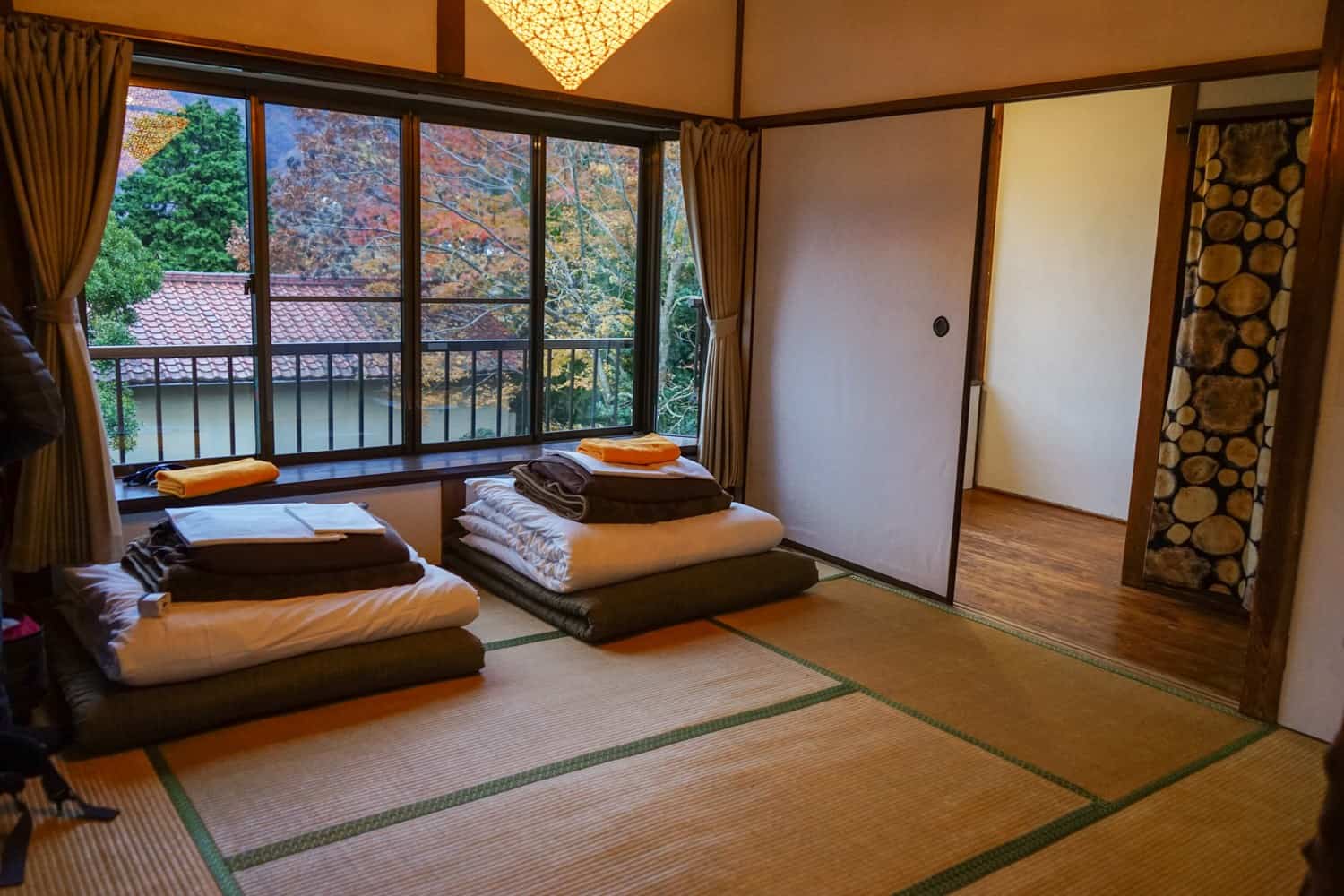
The Cheapest Accommodation Options in Japan
Like practically every country in the world, prices in Japan have increased post-pandemic.
In 2024, you’ll be paying a little more for everything than you would have done a few years ago — in fact, prices almost doubled between my first trip in 2017 and today! — however costs are still on a par with most Western countries. Travel in Japan shouldn’t be too devastating to your travel budget.
I’ll start on the lower end of the spectrum. If you’re willing to put in the time and effort, it’s possible to avoid paying for accommodation entirely.
Couchsurfing exists in Japan and allows you to stay with a local for free , usually sleeping on their sofa and enjoying a local’s insight into life in their country. Yeah, it’s not the most comfortable of living situations, but if your budget’s tight, it’s worth sending out a few requests to hosts to see if anything comes of it. You can browse through the 300,000+ Japanese hosts on the Couchsurfing site — just be sure to read the references of anybody you choose to stay with.
Housesitting is a more upmarket option, aimed at mid-range and luxury travellers. Housesitting involves taking care of somebody’s house for free while they’re away, often (but not always) looking after their pets, too. It’s best for long-term travellers or retirees, as you can’t pick and choose dates and destinations, so you’ll need to have a lot of flexibility as to where you go and at what time of year. If you do have that freedom, though, it’s a wonderful way to cut down your travel expenses, soak up some home comforts, and live like a local for a while. Trusted Housesitters is the main site for getting started with housesitting, as they have the highest number of listings.
Finally, when it comes to free accommodation, you could take a look at WorldPackers in Japan , where you’ll be able to volunteer for locals in exchange for food and board. There are some seriously cool options available on the site right now, from helping harvest honey for a bee farm in the countryside to lending a hand in the garden of a Buddhist temple. Readers of this site get a $10 discount for WorldPackers with the promo code neverendingfootsteps .
If you’re not looking to travel for free and just want a clean and comfortable room to sleep in, there are plenty of great budget options, too.
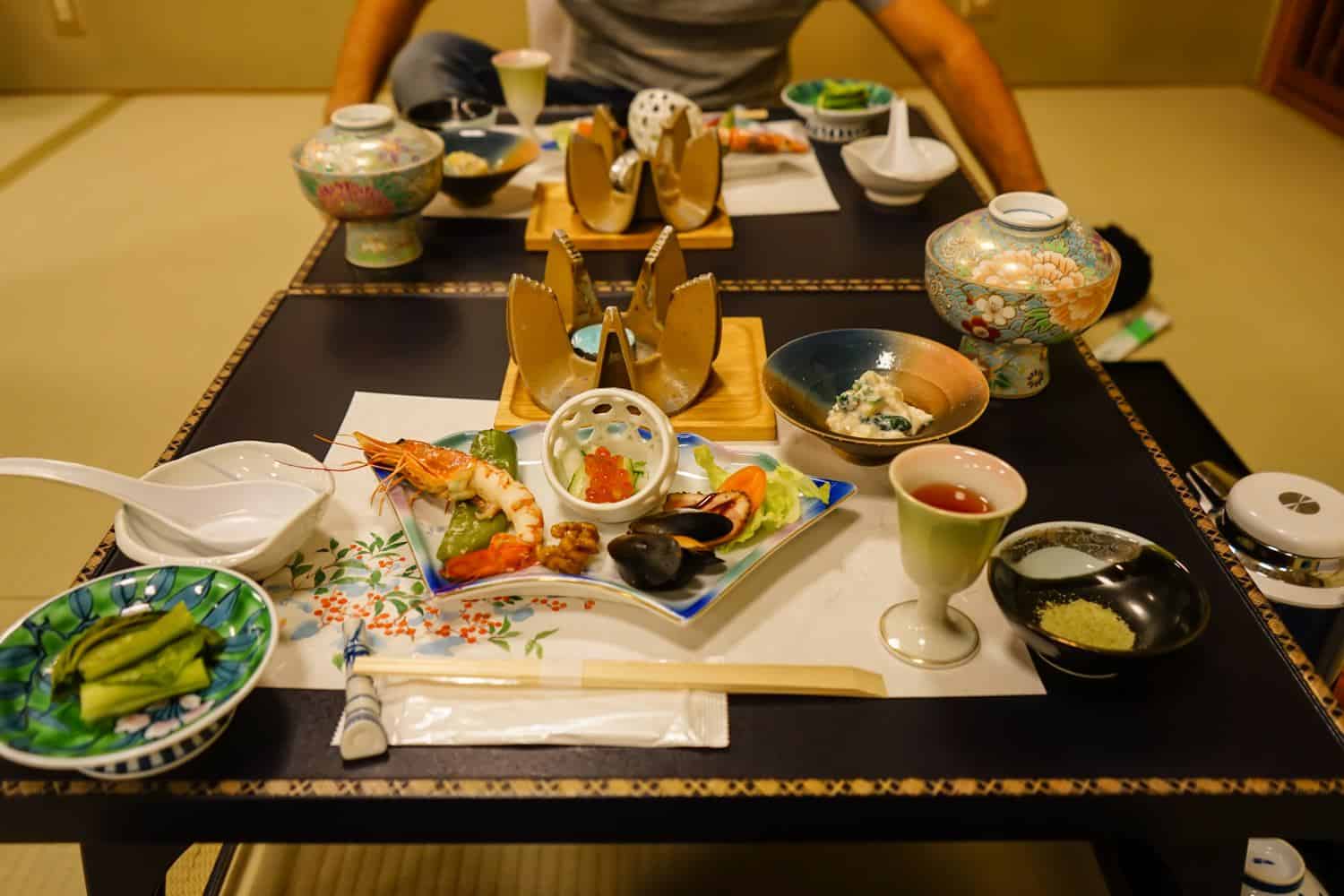
And then we have hostels . In Japan, you’ll come across hostels all over the country, finding them on tiny islands, large cities, and even within the national parks. They’re one of your best options for saving money.
Hostels in Japan are on a par with the rest of major cities in East Asia, and you can expect to spend $25 a night for a dorm bed for a well-reviewed hostel, with the price increasing slightly to around $45 a night for the absolute best of the best.
When it comes to private rooms in hostels, you’ll be looking at $50 a night for a clean, basic room in a good location, so if you’re travelling with friends or with your partner, you may find it cheaper to grab some privacy over settling for two beds in a dorm room. $90 a night will get you an exceptionally well-reviewed private room in a hostel.
I use HostelWorld to find the cheapest hostels, as they tend to have the greatest number of listings at the lowest prices.
And then there are hotels, which I’m going to jump into next.
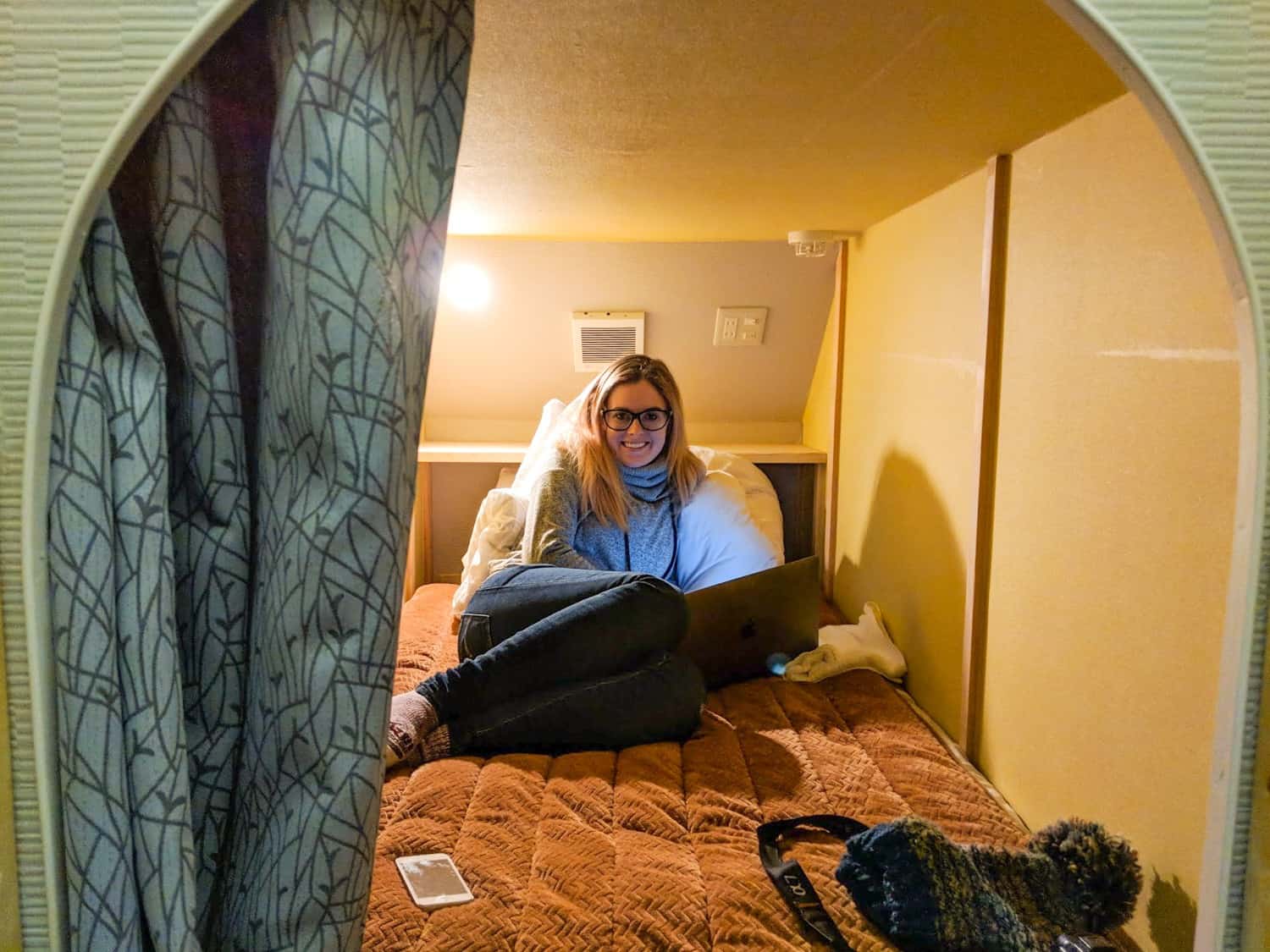
The Cost of Accommodation in Japan
There are so many different types of accommodation in Japan! I attempted to experience as many as possible while I was in the country.
I stayed in a capsule hotel, prioritised hunting down a ryokan, slept on a tatami mat floor, stayed in family-run guesthouses, and checked out some pretty cool hostels. While I did attempt to save money by staying in some cheaper places, I was also happy to splurge on extremely well-rated rooms, too.
As always with these budget breakdowns, I like to share the prices of where I personally stayed, along with a description of the property and whether I’d recommend choosing it, too — hopefully this helps make your trip planning easier!
I visited Japan with my partner, Dave, and we travelled on a mid-range budget; searching out good value accommodation that was highly-rated and in a central location. We prioritised locally-run properties that weren’t too flashy or fancy; for us, a cosy vibe, unique furnishings, and welcoming staff are far more important than the generic decor of a hotel chain.
(Oh and just a quick note: hotels do charge different prices across a range of dates, depending on how busy a certain travel period is going to be. Because of this, it’s hard to be super accurate in the costs that I list. To get to the quoted prices below, though, I looked at the rates across the next six months and took the average: it could be slightly cheaper or more expensive, depending on when you’re visiting.)
Tokyo: $135 a night Odds are, you’re probably going to kick off your Japan adventures in Tokyo, and if so, it only makes sense to really throw yourself into the local experience. That’s why we decided to stay at this lovely onsen-ryokan in Shinjuku. (Whenever readers ask me which neighbourhood to choose in Tokyo, I always recommend Shinjuku or Shibuya.) The reason why I loved this specific property, though, is because it’s a ryokan (traditional Japanese Inn) that also has an onsen (hot pool). It’s a great way to jump immediately into all things Japanese.
And it was wonderful; my favourite hotel in the country. The rooms were small and cosy and felt super-traditional and calming. The views over Tokyo at night from the window were incredible. And the rooftop onsen? With free popsicles afterwards? So good. It’s located in a quieter neighbourhood, but still only a 10-minute walk to the subway. I really recommend this one!
Hakone: $80 a night In Hakone, we opted for a private room in a lovely guesthouse , with a tatami mat floor to sleep on and a private onsen on-site. The photo of the tatami mat room above is of our room here. It ended up being another one of our favourite stays in Japan! The staff were lovely and there was a restaurant/bar that served up fantastic pizzas. It had a cosy and chilled-out atmosphere, with great food and wine, and lots of blankets to snuggle up with as we ate. It was also worth staying here just to experience the private onsen — we got to go in as a couple!
Yudanaka: $105 per night In Yudanaka, we opted for a stay in a wonderful little ryokan ; this one was even more traditional than the one in Tokyo! Often, ryokans can be super-expensive in Japan — as much as $500 a night for the experience — so I was thrilled to have stumbled across a more budget option in Yudanaka. It was run by an adorable Japanese couple and their house came with a private onsen, return transport to see the snow monkeys , and one of the most extravagant meals of my life. A kaiseki is a multi-course (like, 20 courses) meal that will see you eating roughly a week’s worth of food in a single night, sampling fresh, local-to-the-region Japanese cuisine. It was phenomenal, and I loved having no idea what anything was. It even included homemade plum wine, which was so good! I highly recommend the experience (although strongly advise you not to add breakfast to your booking — we were still so full that we couldn’t eat any of it!)
Kanazawa: $65 per night Kanazawa is home to some seriously cool accommodation! We had a hard time choosing where to stay because every property looked so cosy and inviting. In the end, we settled on this minimalist, modern set-up — it was great value for money relative to most other places we stayed in Japan, especially when you consider it’s only been open a year. It’s in a great location, right outside Omicho Market, where you’ll sample the best sushi of your life. Also within walking distance is Kanazawa Castle and Kenroku-en Garden, so you’re really staying in the heart of it all. I recommend signing up for the traditional Japanese breakfast, as you’ll likely not have had anything else like it before! There’s also an onsen and laundry facilities (always appreciated mid-trip!), and the staff were so sweet and kind.
Takayama: $76 per night In Takayama, we stayed in a small, locally-run guesthouse in the centre of town. It felt like particularly good value for Japan, as it was one of the few places we stayed that you could describe as spacious! It even had a kitchen and washing machine. The beds were comfortable and the hotel was within walking distance of everywhere, including the train station. It was quiet, the staff were lovely, and overall, it made for a comfortable stay!
Kyoto: $84 a night In Kyoto, we stayed in a cosy hotel in the heart of town — we loved this place so much in 2017 that when we returned to Japan this year, we knew we’d have to stay there again! The property was in a fantastic location for exploring Kyoto and the bathrooms were nicer than anywhere else we stayed. It’s one of the top-rated guesthouses in the city — while also being one of the cheapest — so when you take that into consideration, I’m convinced you won’t find anywhere better to stay in Kyoto.
Hiroshima: $40 per bed In Hiroshima, we opted for a capsule-style hostel because I didn’t want to leave the country without trying one — you can see a photo of the “capsule” at the top of this section. Fortunately, we found ourselves in a room with only two other people staying there, so our capsule room with 20-odd beds was light on snorers. The owner of this place was ridiculously lovely and it was within walking distance of all of the monuments and activities. Really great bathrooms, a fun common area, and a cheap price: surprisingly, I would have stayed another night!
Osaka: $108 a night I rounded off my time in Japan with a little bit of a treat, opting for this four-star hotel that offered a ton of freebies. It’s all about the onsen here — it’s open all day and is simply beautiful. After you’ve finished your daily bathe, there’s free ice cream to eat, free comics to read, massage chairs to relax in, and even free ramen to slurp on. Yes, really! It was in a great location for Osaka — just a couple of blocks from the nearest metro station. The decor was calming and traditional; the perfect way to say goodbye to Japan.
In total, I spent an average of $97 per day on accommodation over my 16 days in Japan.
The Cost of Transportation in Japan
Okay, so let’s talk about transportation now. And specifically transportation post-2024.
It used to be the case that practically every visitor to Japan would invest in a JR pass (a train pass that grants you unlimited rides over a certain time period). After all, the best way to explore this country is by train, and by buying said rail pass, you’d be saving a significant amount of money on your trip — especially if you were taking a similar route to my one. A JR Pass pre-October 2023 would have saved me a whopping $175 over buying individual train tickets.
Seems like a no brainer, right?
In October 2023, the Japan Rail Pass skyrocketed in price. No exaggeration here: prices increased by an incredible 70% .
What a baffling decision.
What that means is that it’s not such a clear-cut decision anymore. The Japan Rail Pass still holds some benefits: If you’re a first-time visitor to Japan and don’t feel too confident about buying multiple single-journey train tickets, the pass will make it a lot easier: you just show it at any station and get on a train. You won’t need to worry about any extra charges and will have the flexibility to take train-based day trips whenever you want.
For most travellers, however, the value proposition is simply no longer there. For example, my recent 16-day itinerary (Tokyo – Hakone – Tokyo – Nagano – Kanazawa – Takayama – Kyoto – Nara – Kyoto – Hiroshima – Osaka) cost me 50,000 Yen ( $350 ) with single tickets. However, a 14 day rail pass is priced at 80,000 Yen ( $530 )!
Alas, the Japan Rail Pass is no longer something I recommend — unless you’re going to be taking enormous, lengthy rail journeys (like across the whole country) in a short period of time. Alternatively, if you do want that added sense of security and ease by not having to juggle a dozen train ticket bookings, you may find the extra price worth it.
So with all that being said: you’re most likely going to be using the JR West website to book your single train tickets online. This covers the entirety of Japan that’s west of Tokyo (all of the places I visited were west) and allows you to book your train tickets all in one place — and then you can reserve a seat on said train one month before its departure date. Honestly, it’s pretty easy to use, book, and reserve — and being able to do it all online means you can get everything sorted before you step foot in the country.
Let’s take a look at the some of the prices that a typical train journey in Japan costs — in this case I’ll use my itinerary mentioned above to plot out the costs:
Tokyo – Hakone: 2,500 Yen ( $17 ) Hakone – Tokyo: 2,500 Yen ( $17 ) Tokyo – Nagano: 7,500 Yen ( $50 ) Nagano – Kanazawa: 8,500 Yen ( $57 ) Kanazawa – Takayama: 5,000 Yen ( $33 ) Takayama – Kyoto: 9,000 Yen ( $60 ) Kyoto – Nara: 700 Yen ( $5 ) Nara – Kyoto: 700 Yen ( $5 ) Kyoto – Hiroshima: 10,500 Yen ( $70 ) Hiroshima – Osaka: 10,000 Yen ( $67 )
So if you were to replicate my Japan route exactly, you would end up spending $381 on rail tickets. It sounds like a lot of money but I do want to stress that the trains in Japan are some of the best in the world. They’re spotless, comfortable, modern, and lightning-fast. You will feel like you’re travelling in luxury.
If you’re not down to spend hundreds of dollars on trains, then the buses are going to be your best option. They’re cheaper, slower, less comfortable, often run overnight, and are complicated to book. The best sites I’ve found for booking long-distance buses is Willer Express and Japan Bus Online — but even they don’t run buses for several of the routes I took on my trip.
I thought it would be a good idea to share the cost of buses for the trip I took, so that you can compare them to the train and see how much money you could save.
Tokyo – Hakone: 2,250 Yen ( $15 ) Hakone – Tokyo: 1,800 Yen ( $12 ) Tokyo – Nagano: 2,200 Yen ( $15 ) Nagano – Kanazawa: No bus for this route Kanazawa – Takayama: 3,300 Yen ( $22 ) Takayama – Kyoto: 3,800 Yen ( $25 ) Kyoto – Nara: No bus for this route Nara – Kyoto: No bus for this route Kyoto – Hiroshima: 4,300 Yen ( $29 ) Hiroshima – Osaka: 4,000 Yen ( $27 )
As you can, see prices are generally around half what they are for the trains. You’d be looking at paying $212 in total for taking the bus, with three trains replacing the routes where I couldn’t find any existing buses.
We’ve covered the main ways to get in between the destinations, so now it’s time to take a look at how much you could spend on transportation within the cities.
Fortunately, this was where I found Japan to be really affordable. I love to explore cities on foot and I found many of the places I visited to be surprisingly walkable. In total, I spent $6 on the metro in Tokyo, $7 on the metro in Osaka, and $2 on the metro in Kyoto! Everywhere else, I just walked.
A reasonably big expense was our Hakone Free Pass (spoiler: not free), although this was more of a combined transportation and activity cost. At a cost of 6,100 Yen, or $41 , It provides you with unlimited transport around Hakone (where you’ll find Mount Fuji), and discounted entrance to all the attractions in town. If you’re going to Hakone, this will save you money because it covers everything you’ll definitely do there.
The Cost of Food in Japan
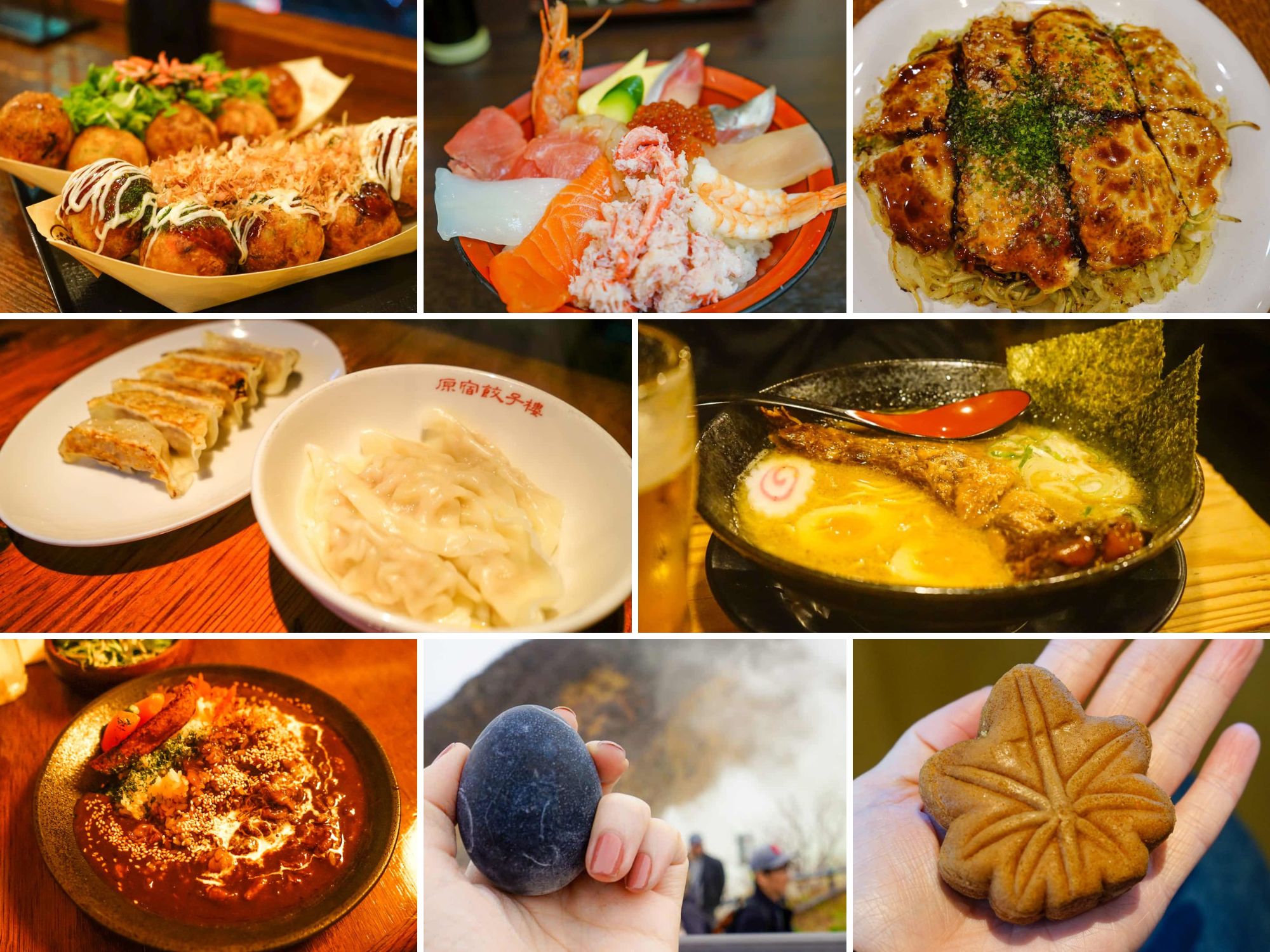
If you love Japanese food but have yet to travel to its homeland, you have such a treat in store for you. The food in this country is phenomenal; packed full of flavour and surprisingly inexpensive. It’s true: eating out is the easiest way for you to cut costs in Japan.
In fact, the vast majority of my meals in this country came to less than ¥1000 ($6.50) .
I’ll start first by breaking down the typical costs that you can expect to spend on the most well-known of Japanese dishes. Then, I’ll cover what you’ll be likely to eat for breakfast, lunch, and dinner, along with the costs associated with each of these meals. Finally, I’ll round out the section off by sharing some of my favourite food experiences in the country and describe which options are worth a splurge and which ones you can happily skip.
You can’t think of Japan without picturing sushi, so that feels like the most logical place to start. If you eat fish, this is going to be such a revelation for you! The sushi and sashimi in Japan is better than any I’ve had in the world and it was here that I finally understood how raw fish could ever be described as buttery.
To combine your sushi/sashimi-eating with a cultural experience, head to Tsukiji Outer Market in Tokyo or Omicho Market in Kanazawa. For a bowl filled with a selection of sashimi, like in my photo above, you’ll pay between ¥1,800 and ¥4,000 , depending on the size and quality of the fish. That’s the equivalent of $12-$25 .
Slurping on a steaming bowl of ramen is my personal definition of a true travel joy, so I opted for this cheap and cheerful dish most evenings as a way to save money. Note: the ramen in Japan is incredible , so don’t interpret my frugality as a hardship. Once you’ve tried the ramen here, I’d be surprised if you didn’t immediately start planning a return visit.
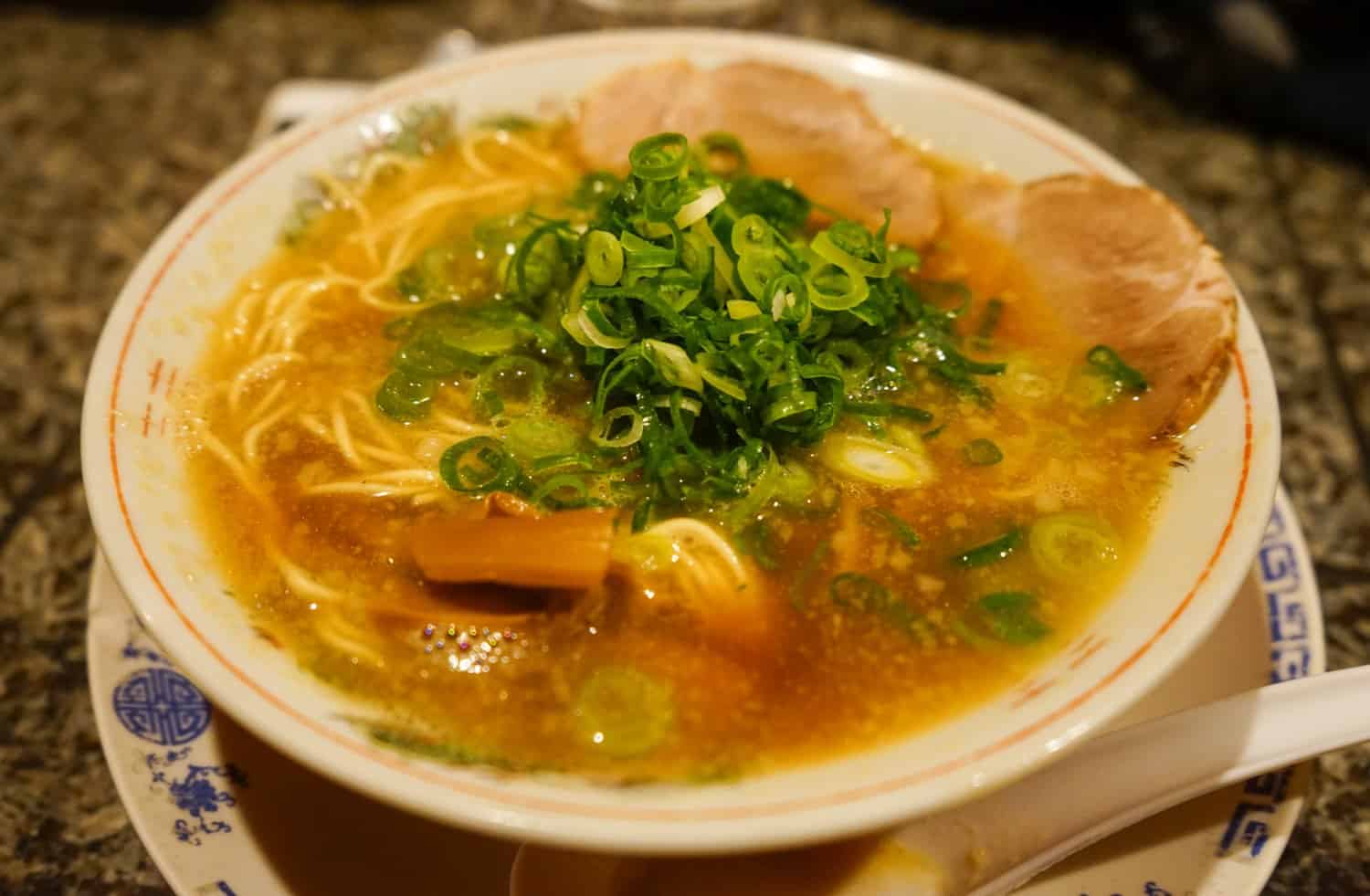
One of my favourite aspects of ordering ramen in Japan is how you’re given the option to customise the dish to your own tastes. It’s not uncommon to be handed a small slip of paper where you’ll get to mark down all of your preferences. Do you want your broth to be rich or light? Your noodles to be firm or soft? Added spiciness or none at all? Extra spring onion? A hard- or soft-boiled egg? Most options come out to ¥1000 ($6.50) for a bowl of pork ramen.
Speaking of cheap and delicious food options, I highly recommend sampling a couple of versions of okonomiyaki while you’re in town. This savoury pancake dish is so delicious, extremely filling, and inexpensive at just ¥1000 ($6.50) – ¥1500 ($10) . The cities of Osaka and Hiroshima each offer up their very own version of okonomiyaki and strong opinions are held by many over which is best! If you’ll be heading to both destinations, make sure you try one of each and let me know which is your favourite.
A dish that I tried for the first time while I was in Japan was Japanese curry and what a wonderful experience that turned out to be! In comparison to Indian curries, I found the Japanese version to be richer, sweeter, and less creamy, with plenty of umami vibes. Once more, you can expect to pay ¥1000 ($6.50) for a plate of katsu (pork cutlet) curry.
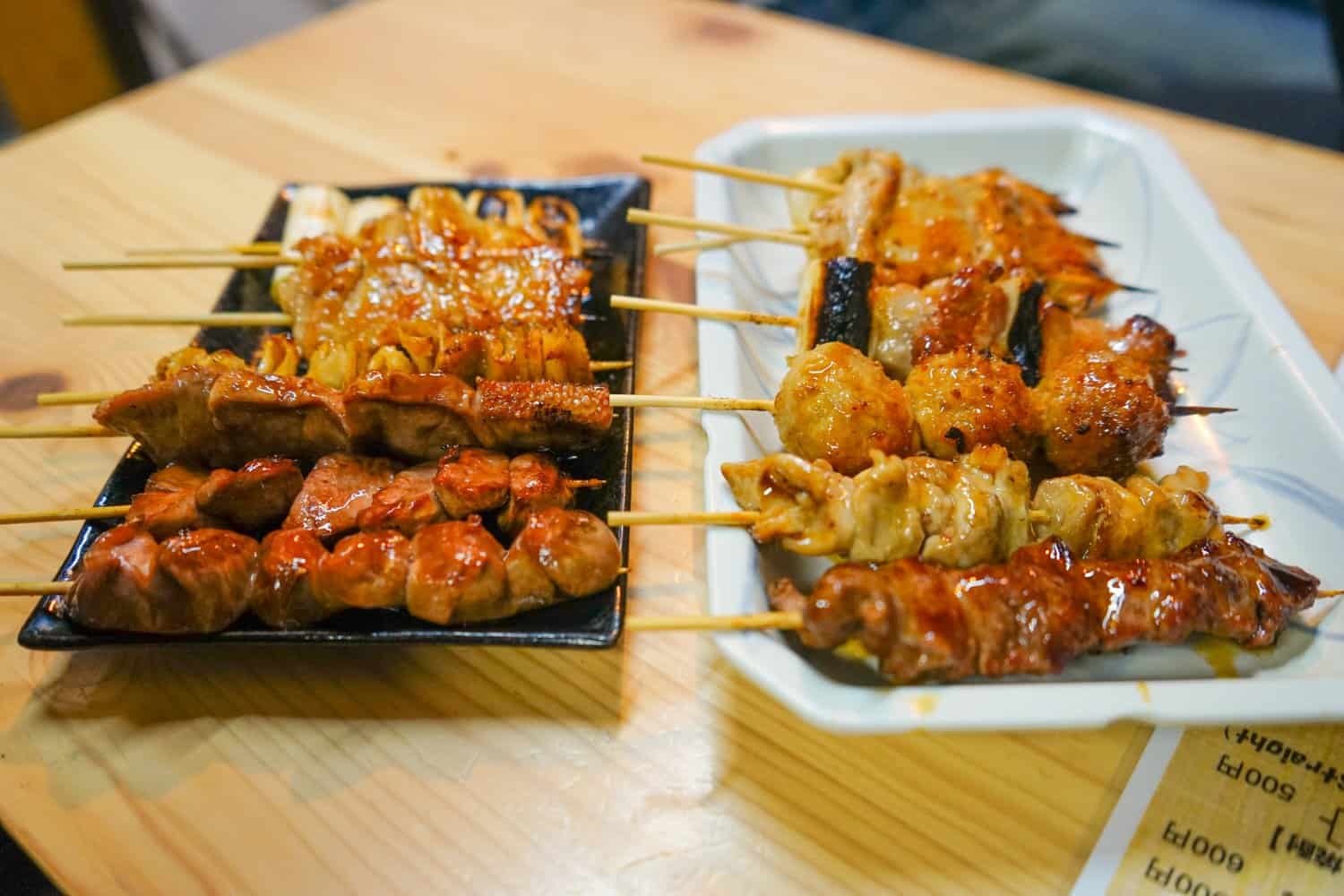
One of the most delightful aspects of my Japanese eating experiences was sampling all of the different snacks in the country.
Street snacks like takoyaki were ¥500 ($4.50) . We splurged on our kaiseki experience at our guesthouse in Yudanaka and paid ¥4000 ($36) for our food extravaganza. It’s a budget option compared to many other kaisekis, which can easily come to $100 for the experience, but still our most expensive meal. Another splurge was on sushi in Kanazawa, which I paid ¥2000 ($18) for.
Whether you’re on a budget or ready to splurge, it’s essentially impossible to eat badly in Japan. If you’re on a really tight budget, you can even get surprisingly decent food from 7-Eleven !
My total cost of food in Japan averaged out to $23.20 per day.
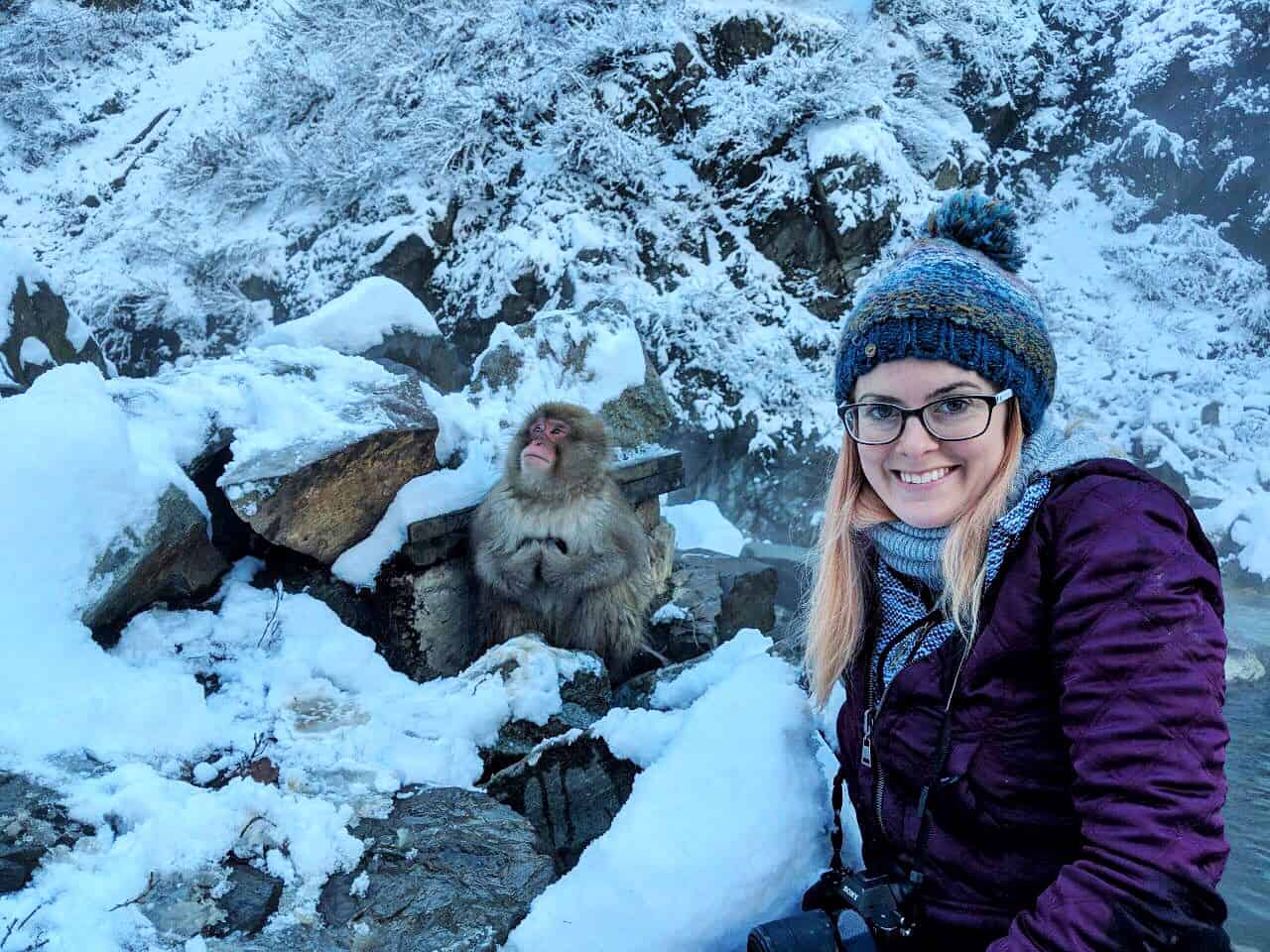
The Cost of Activities and Entrance Fees in Japan
Activities and entrance fees in Japan were very reasonably priced, and I never found myself outraged over the cost of anything. You’ll typically pay less than $5 to enter most temples, museums, and gardens.
Here’s how I spread my cash around:
Entrance fee for the hedgehog cafe in Tokyo: $13/1400¥ Entrance to the Snow Monkey Park : $7/800¥ Entrance to Kenroku-en gardens in Kanazawa: $3/310¥ Entry to the Golden Pavilion in Kyoto: $3/300¥ Entry to Ryoan-ji zen garden in Kyoto: $5/500¥ Ticket for the Hiroshima Peace Memorial: $2/200¥
My total cost of activities in Japan averaged out to $2 a day.
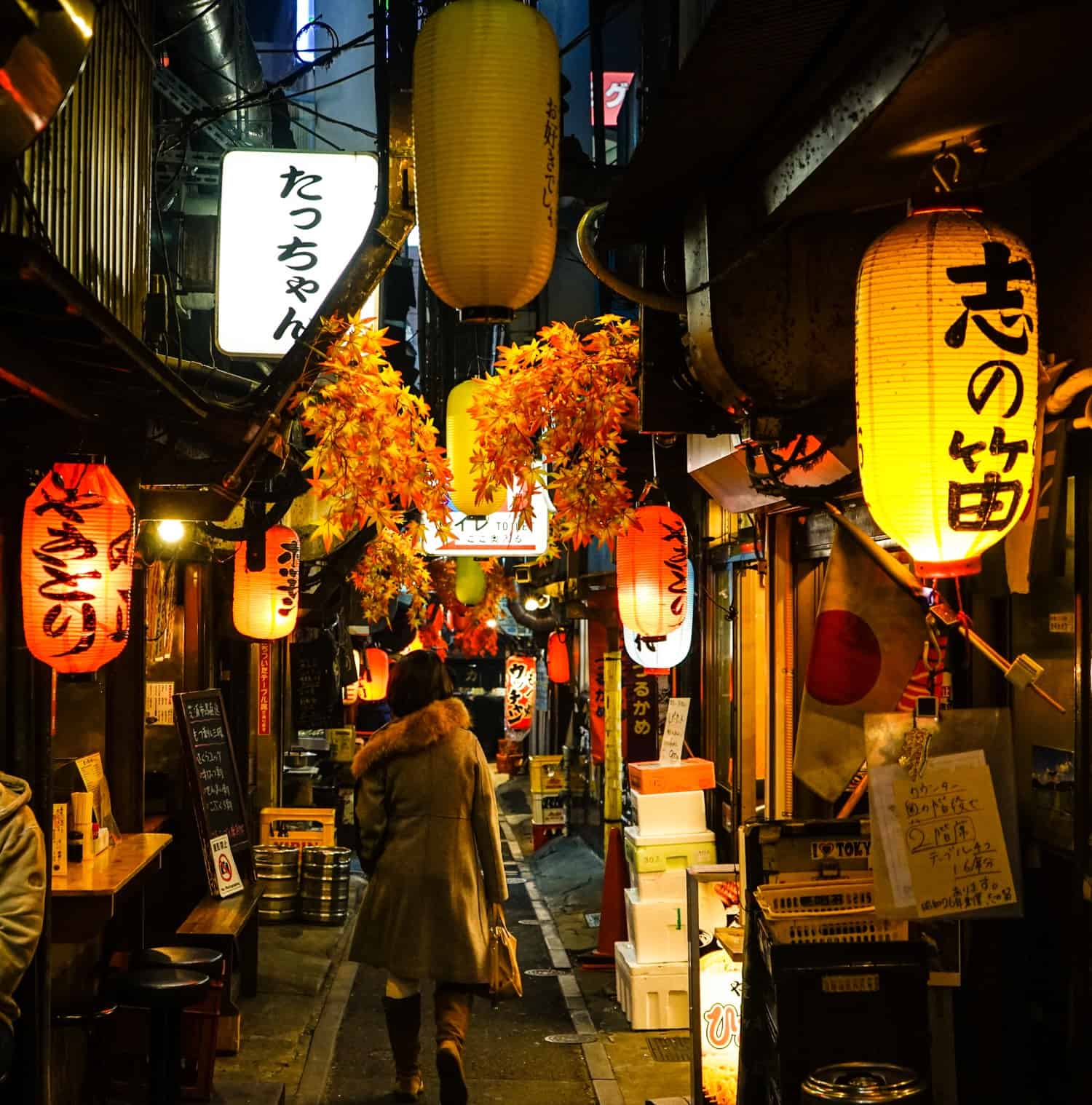
Miscellaneous Expenses in Japan
A local SIM card: $14
I mentioned above that I was able to buy a local SIM card when I purchased my rail pass. If you aren’t going to be using a rail pass in Japan, I recommend taking a look at Airalo instead. Airalo is a company that sells local e-SIM cards for travellers. What that means is that you can buy a virtual SIM card online before you arrive in Japan, and then as soon as you land in the country, can switch on your data and start using it.
It’s worked flawlessly for me and I’ll never go back to physical SIM cards. It’s just so easy! You’ll pay $6 for 1 GB of data or $14 for 3 GB for Japan and can also top-up through the Airalo app.
If you’re going down the Airalo route, just make sure your phone is e-SIM compatible first (all recent iPhones and many Androids are).
Insight Guides guidebook to Japan: $10
My sister bought me this guidebook as a gift before I left for Japan and at first I was like, Insight Guides? Meh. I wish she’d got me the Lonely Planet instead. Then when I opened it up and started reading, I swiftly discovered that Insight Guides are my new favourite guidebook company. It was so, so useful!
What I love about Insight is that their books focus heavily on the history and culture of Japan, with big, beautiful pictures, tons of information about local customs, food, and how to travel responsibly and respectfully. I recommend picking up a copy before your trip to Japan, but not taking it to the country with you — they’re big and heavy, so this is one for inspiration, planning, and education.
Luggage storage at Snow Monkey Park near Yudanaka: ¥500 ($4.50)
We had our backpacks with us when we visited the snow monkeys, so utilised the on-site storage facility while we hiked up the mountain in the snow. You can also hire snow shoes and winter gear if you’re unprepared for the climb, but I was fine in my totally impractical sneakers.
Travel insurance for 16 days in Japan: $60
If you’ve read any other posts on Never Ending Footsteps, you’ll know that I’m a great believer in travelling with travel insurance. I’ve seen far too many Go Fund Me campaigns from destitute backpackers that are unexpectedly stranded in a foreign country after a scooter accident/being attacked/breaking a leg with no way of getting home or paying for their healthcare. These costs can quickly land you with a six-figure bill to pay at the end of it.
In short, if you can’t afford travel insurance, you can’t afford to travel.
Travel insurance will cover you if your flight is cancelled and you need to book a new one, if your luggage gets lost and you need to replace your belongings, if you suddenly get struck down by appendicitis and have to be hospitalised, or discover a family member has died and you need to get home immediately. If you fall seriously ill, your insurance will cover the costs to fly you home to receive medical treatment.
I use SafetyWing as my travel insurance provider, and recommend them for trips to the Japan. Firstly, they’re one of the few companies out there who will actually cover you if you contract COVID-19. On top of that, they provide worldwide coverage, don’t require you to have a return ticket, and even allow you to buy coverage after you’ve left home. If you’re on a long-term trip, you can pay monthly instead of up-front, and can cancel at any time. Finally, they’re more affordable than the competition, and have a clear, easy-to-understand pricing structure, which is always appreciated.
With SafetyWing, you’ll pay $1.50 a day for travel insurance.
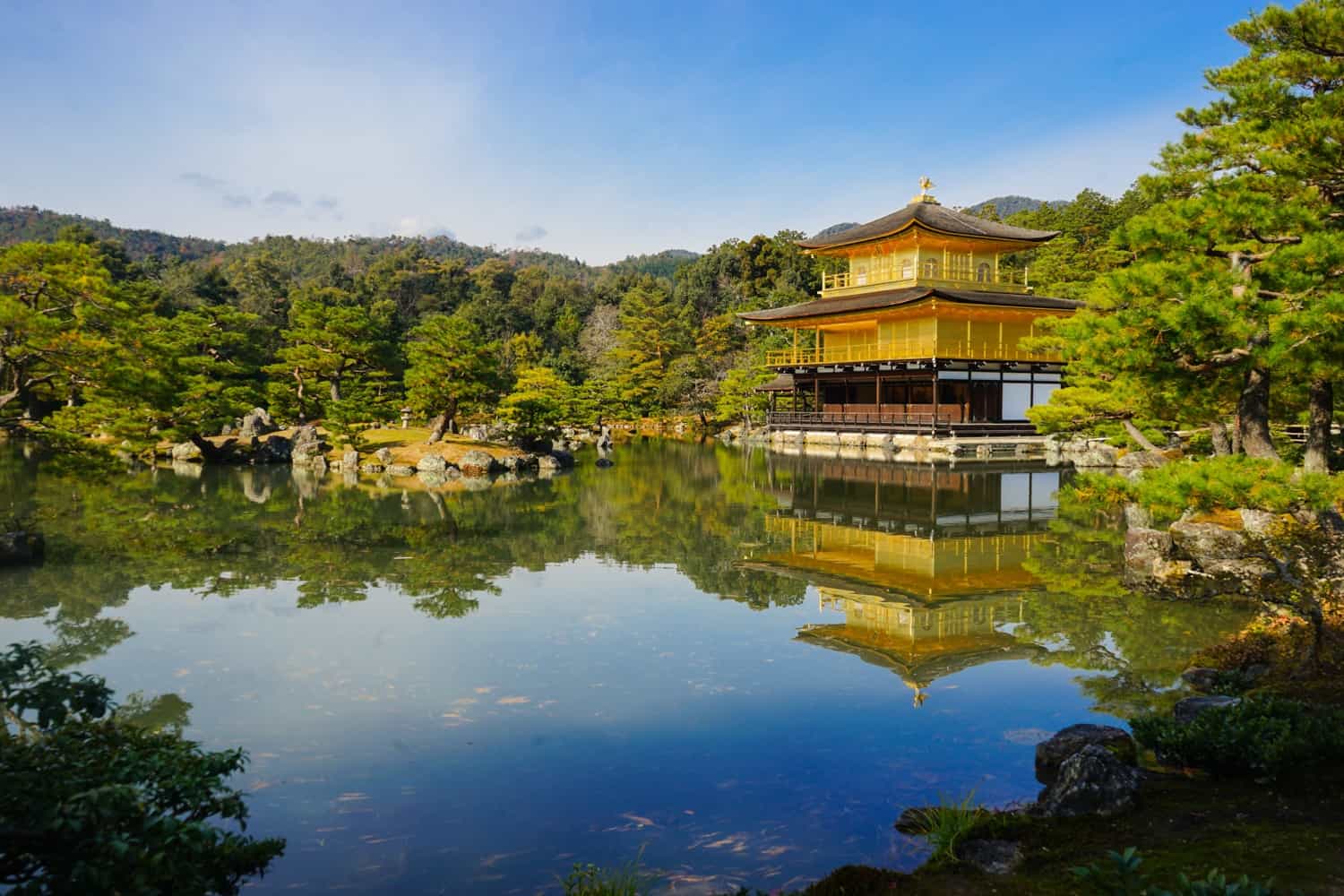
How I Track My Expenses While I Travel
Every time I share my expenses, you guys always want to know how on earth I manage to keep track of so many details from my travels!
Because Never Ending Footsteps is my company, the vast majority of my travel expenses are business expenses. I therefore studiously record everything I spend everywhere I go. I take photos of every receipt I receive and use Xero accounting software to record these expenses. In cases where I can’t get a receipt, I’ll take a photo of the price list and my ticket or food, or something as evidence.
Once a week, I then sit down and spend an hour or so uploading my receipts to Xero and making note of every penny I spent in each country I visit. It makes writing these posts super easy!
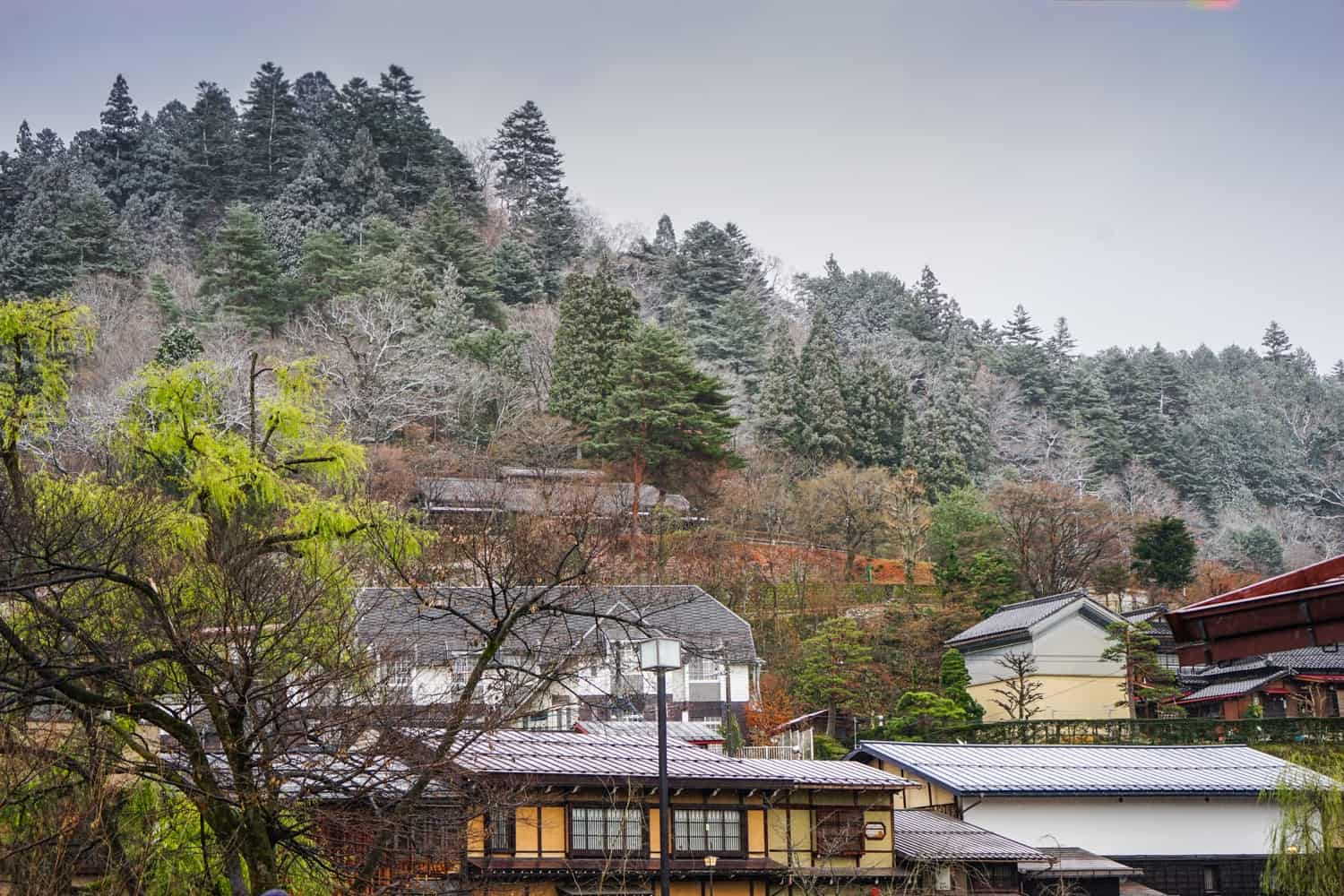
How Much Does it Cost to Travel in Japan?
It’s time to tally up all of my expenses to see my total travel costs!
Accommodation: $97 per day Transportation: $27 per day Food: $23 per day Activities/Entrance Fees: $2 per day Miscellaneous: $2 per day
Average amount spent in Japan: $151 a day!
I don’t know about you, but given Japan’s pricey reputation, I’m fairly impressed with the amount I spent in the country, especially as I included quite a few splurges in there.
How about you? How expensive were you expecting a trip to Japan to be?
Related Articles on Japan 🇯🇵 What’s it Like to Travel in Japan? 🏯 How to Spend Two Weeks in Japan: An Itinerary for First-Time Visitors 🍣 15 Weird and Wonderful Things to Eat in Japan 🎌 23 Incredible Things to Do in Osaka, Japan 🗼 21 Spectacular Things to Do in Tokyo, Japan 😎 Hipster Harajuku: The Coolest Neighbourhood in Tokyo 🦔 Should You Go to a Hedgehog Cafe? My Experience in Japan 🐒 Why Seeing the Snow Monkeys in Japan Sucked
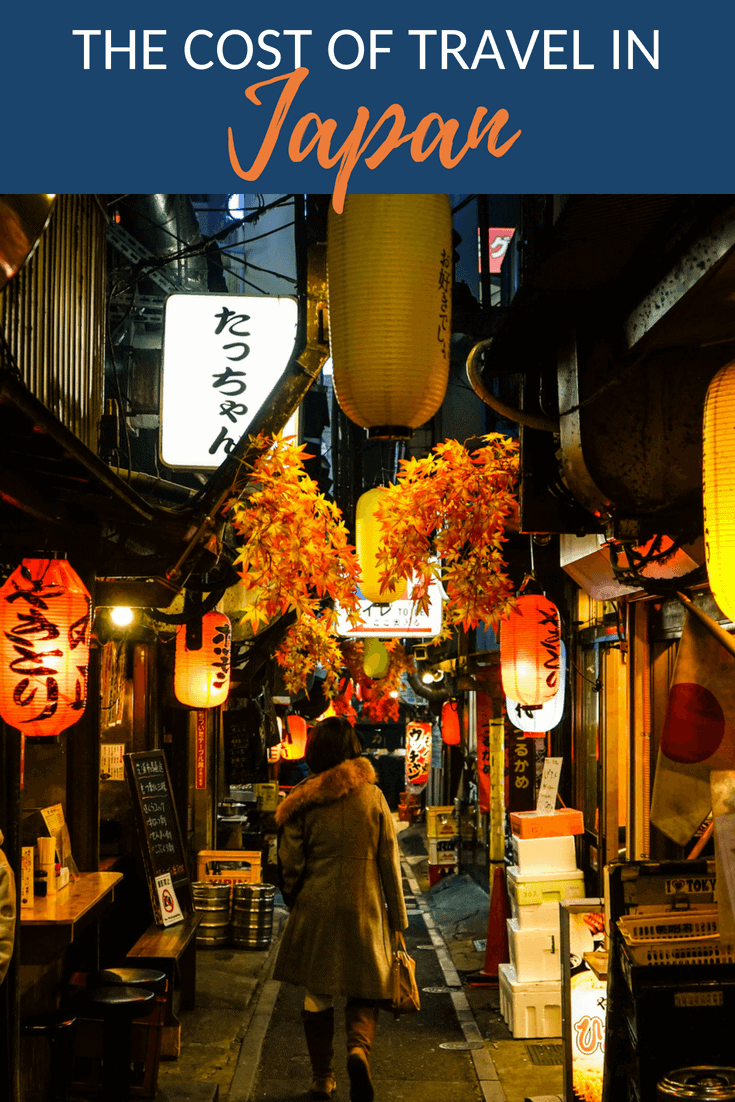
Lauren Juliff
Lauren Juliff is a published author and travel expert who founded Never Ending Footsteps in 2011. She has spent over 12 years travelling the world, sharing in-depth advice from more than 100 countries across six continents. Lauren's travel advice has been featured in publications like the BBC, Wall Street Journal, USA Today, and Cosmopolitan, and her work is read by 200,000 readers each month. Her travel memoir can be found in bookstores across the planet.
Related Posts

The Cost of Travel in Mauritius: My Detailed Budget Breakdown

The Cost of Travel in Thailand: My Detailed Budget Breakdown

2023: My Travels in Review

The Cost of Travel in South Korea: My 2024 Budget Breakdown

How to Spend Three Perfect Days in Delhi: An In-Depth Itinerary

Pushkar Travel Guide: 11 Things to Do in Pushkar
106 comments.
Wow! that’s amazing. I especially got fascinated seeing the capsule hotel…must have been a unique experience.
It was surprisingly cosy! I would totally stay in one again.
Thank you so much for your information. We will go to Japan in October 2023 for 1 month. Have paid fully for 16 days. Using your guides to budget the remaining 2 weeks. Thanks again.
This is great! Do you think it would be much more expensive in summer or any of the peak holiday seasons? I’m going over July this year and wondering if the prices change much with the seasons.
Wow! That’s quite an eye-opener! I’ve wanted to visit Japan for years, and this has certainly nudged me a little closer, as I assumed it was expensive too. The costs seem much better than I found in Amsterdam this spring! (my boyfriend still gets a thousand-yard stare when I mention how much we paid for drinks in one bar.)
Yay! Yeah, it really did feel about the same price as Western Europe, if not cheaper. The transportation is more expensive, but the food was cheaper in Japan.
This is super awesome! I, too, was under the impression that Japan was a super expensive place to visit! Good to know that you can save so much on accommodation and activities! Are you going to be posting about food in Japan? My knowledge of what to eat there is very minimal…
Yes! I published a guide to my favourite things to eat in the country last week: https://www.neverendingfootsteps.com/best-food-japan/
Ditto for here in New Zealand Lauren. All said it would be expensive. But we house sat – rent-free – and saw that food and travel are on par or cheaper than New Jersey. We also saw that virtually all things are cheaper than folks said. Methinks many labeling Japan and NZ as expensive as can be are used to paying $1 for lunch in Chiang Mai LOL. Budget folks see all Western lands as expensive. Granted I am from NJ; living by NYC makes for a high cost of living. But not bad at all, living in these lands.
Yeah, definitely true. I know that when I wrote off Japan as being too expensive, it was in the early days of my travels, when I could only afford to live in Southeast Asia!
Loving the posts about Japan so far. Do you have many more articles planned? I’ve a trip booked in November and this has been the most useful of the blogs so far for help in planning – thank you. Although I’ve had to cut the hedgehog cafe off my plans after reading your article as I hadn’t quite considered the ethics enough!
Yes! So many. I’ll probably post another half a dozen or more over the next few weeks :-)
I always assumed Japan to be very expensive. Thanks to your blog I don’t anymore. Cheers!
This is all very useful info! I’m impressed with your budgeting skills. Awesome, Thanks for sharing this!
Ha! Thank you :-) It comes naturally (finally) after seven years of doing this.
Great article. I’m planning a visit for early 2025 to go with my grandson … was the budget breakdown for one person or a couple … because you mentioned going with your partner?
The accommodation prices are the total cost of the room (rather than just my share), while the transportation, food, and activities are all my share of the costs.
Fantastic article. Love your budget posts because you never leave anything out.
I try not to! Thanks so much :-)
Beautiful photos, Japan look amazing and thank you for sharing your budget tips as well. :)
No problem! :-)
Thank you so much for this! I’m going to Japan in September and I’ve been worrying about my budget. This has definitely put my mind at rest!
Yay! Happy to hear that :-)
I’m so happy that you have posted so much lately, you’re my favourite travel blog and I check this page a lot more often now that the pace of the posts has increased :)
Thank you! :-) I’m aiming to stick to a three-times-a-week posting schedule now that I have a base and more time to dedicate to writing.
This is so much cheaper than I expected. Do you have any idea about prices for solo travellers though? Would I have to pay for a double room most of the time (apart from dorm beds of course)?
No, lots of hotels and guesthouses have single rooms, so you wouldn’t need to pay out for two people very often, if at all.
Thanks, that’s good to know!
Very useful breakdown that would be very helpful for first-timers to Japan.
Just to share, one of my own major expenditure in JP is … vending machine contribution! I simply can’t resist them and can end up buying seven times a day. “P
Yes! I couldn’t believe how many vending machines there were in the country, as well as the variety of things you could buy from them.
Hello! This is a very timely article for me to read as I’m actually going to visit Japan for a week on September. I really love Japan’s culture and their people. There are a lot of places that I want to visit and a lot of things I want to do but I am on a strict budget. Hopefully, your article would be able to help me fix my budgeting for my trip to Japan.
I hope so! I really didn’t find it horrendously expensive, so I think you’ll be surprised by how much you can do there for free.
I love your budget posts because they give me such a good idea of how much I can expect to spend in places around the world. Are you thinking of doing them for everywhere you visit?
That’s my plan! I’m slowly working my way through my records and adding more and more to the site.
Hey, thanks so much! :-)
I’ve planed to visit Japan next year, Thank you for sharing your budget, I’ll try to not exceed 100$/day, following your information on this post.
Have a fantastic trip, Ingrid! :-)
Which month you visited Japan? I am thinking for Cherry blossom (April 2019) and everything is coming up too expensive. Are those above for cherry blossom season you visited?
Ah yeah, unfortunately, the cherry blossom season is the most expensive time of year to visit Japan. I was there in December, so prices will be higher than the ones mentioned in this post. I’ll add that detail to my post now!
I was under the impression that Japan was a super expensive place to visit! Good to know that you can save so much on accommodation and activities! This article includes all the places you can visit in Japan and their expenses. It is very educative and it can be improved by providing expenses in INR. Thank you for posting this useful information.
Thank you! I usually just price these articles in the local currency and USD, which is where the vast majority of my readers are located. If I started including currencies for everyone, the post would quickly get ridiculous :-)
Seems a dumb question, but I’m assuming all the values are in USD, is it correct?
Yep! I write at the start of the post: “The amounts in this guide are listed in Japanese Yen and U.S. dollars, simply because the vast majority of my readers are from the U.S.”
That is a very good breakdown cost analysis there. i am planning to go to japan as well with my wife. and planning to stay for 10 days only. 4 in tokyo 3 in kyoto and 3 in osaka. i like to idea of 100 aud / day it’s a good target to keep but i guess the expense on buying cloths and souvenir would be uncontrollable though i heard things in japanese is not that dear if you know where to shop and avoid tourist trap. i didn’t see you mention buying internet data in advance ? or i missed it somewhere. i guess the expense for a couple will be double up. but i guess 3000 aud for 2 people is unavoidable.
amazing detailed guide
You’re welcome!
I’m so glad I found your website! I love the detail and photos. I just booked a trip to Japan with my boyfriend for this upcoming October, and your site will be very helpful. Question: do most hostels and accommodations that you experienced have you sleeping solo? I’m wondering if I should expect to sleep in a separate area than my partner for most of the trip…
Hi Lauren, Thanks for such a detailed description of your time in Japan! I’m going to Japan October this year with my wife and my major concern is how you managed to book sleeping pods for you and your boyfriend as almost all accommodations are either “male only” or “female only” from the options I’ve seen so far. Did you have to get separate beds for those nights?
Yeah, the capsule hotel-style accommodation is all single beds. You can see in my photo in this post that there’s not much room for anybody else!
My wife and I are heading to Japan in mid May and I plan to use your itinerary.
Would it be possible for you to write something about the travel logistics if you can remember them – ie to get from Tokyo to Mt Fuji we booked the following train, leaving at…from the following platform which took X hours and arrived at Mt Fuji at. We then bought our day pass from….and ……..
This would be really helpful to me and other independent travellers – from where did you buy your JR pass and how did you book your individual train rides?
Cheers Paul
Oh, man. That would take me hours and hours to put together and I’m sure times and platforms change so it would be impossible for me to keep the information up-to-date and accurate.
I recommend downloading the mobile app Hyperdia — you can plan your train travel out using that. Just enter in your destinations and it will tell you which train to take and from which platform. Super easy to use! :-)
The site I used to buy the JR Pass is this one . I booked the other train tickets in person at the stations when I arrived — there weren’t many that weren’t covered by the rail pass. Just the small regional ones to get to and from Yudanaka, I think.
Hello Lauren, I love the details in your blog. Your expenses were for 1 or 2 people?
I cover that at the start of the blog post: “And finally, these are the expenses I paid while travelling with my boyfriend. That means that accommodation prices (with the exception of the dorm bed in Hiroshima) have been halved to indicate my share.”
Great super helpful article. THANK YOU!
Hi Lauren, Thanks so much for this article, it is so helpful!!! on which dates did you fly to japan? what dates are you recommending on?
I spent the first two weeks of December in Japan. I’d recommend looking at May or September as the best months to travel there.
Hi Lauren I’d love your advice. I’m traveling with my 22yr old daughter to celebrate her graduation and my birthday. I booked the first two nights a hotel in Tokyo and then figured we would VRBO or Airbnb but after reading your post it looks like things have changed. I love the idea of the capsule hotels and the standard tatami mat rooms look enchanting. So how do I search for either? We’d like to experience both for the trip. oh by the way, I’m a traveler too, let me know where in the world are you now. Perhaps we can meet up and collaborate, I do video production, just got back from Colorado and am going to Cancun in June.looking forward to hearing back from you, Peace and Love always, “L” oh let’s connect on IG
Just book them through Booking.com — no need to go to any specific site. I’m in Bristol, in the UK. I actually don’t have an Instagram account — it wasn’t doing good things for my mental health, so I deleted it :-)
G’day Lauren,
Loved your detailed description of your travels through Japan. However; I’m not so brave as you travelling around on my own, especially with the language problem. I am a single traveler from Bangalore, India and would love to spend 7-8 days in Japan, with my journey starting and ending in Tokyo, reasonably priced hotels or local hostels, but preferably single accommodation, if possible. (willing to pay extra).
I love train travel and Japan is one of the best places to do that..your take on that would be appreciated. If you feel, I meet your requirements, would love to get an itinerary and costing for my 7-8 day stay in Japan.
Hello! I am really curious on how you got a 14 days pass JR for only 420$, from where I am from (Canada) it is 567!
If you click the link in the post, you can buy it through there. It’s currently listed for 414 USD.
$95/day seems cheaper than what I had expected – is that a tight budget? What can you do more with $150/day? I’d prefer to spend that extra on living in nice hotels + do more activities. Does that seem possible with $150/day?
No, not really. It was a mid-range budget and all of the hotels we stayed in were nice — I made zero effort to stick to a tight budget.
Hope you’re well. I’m wondering if you still advise from not booking Airbnb for Tokyo? Thanks.
Until moments ago, I had always assumed Japan to be too expensive to even consider. Never thought the cost of activities and entrance fees would be so cheap. This is an encouraging article, thanks, Lauren!
Really remarkable post, Lauren. Extremely thorough and helpful. I’m looking to plan a trip to Japan soon and stumbled across your blog. As you clearly hoped from city-to-city, (this may be a silly question) what did you do with your luggage on a day-to-day basis?
Thanks for any insight.
Oh, just left it in my hotels. If I spent less than a full day somewhere, it was visited as a day trip, so I didn’t take my luggage with me. And then whenever I arrived somewhere, I’d time my arrival with the check-in time of the hotel, drop my bags first, then head out exploring.
great article! As I have said in the past you always put out great stuff that’s very valuable information.
I just came across your website when searching for trips for Japan for my son. I have to say I am really so happy and want to thank you so much for the information. My eldest son has been taking Japan as a language course for the last 3 years and was looking forward to trying to get into the high school Japan trip in end of july beginning of August 2020. He also wanted to go to TUJ(Temple University Japan).
However, because of the olympics the high school Japan trip has been canceled for 2020. Unfortunately, he will be a senior next year so the 2021 high school program will not be available for him. Plus going to olympics are so expensive. If you can give me any advice, I would greatly appreciate. Thank you so much in advance for your time!!!
What advice do you need? About what?
Hi Lauren, I really liked you post and I think is really helpful. When exactly did you go in Japan? We have to change our plans for next February (previous planned for Philippines but to risky for my wife pregnancy) and we consider to go in Japan instead. So, do you think it is good idea travelling in Japan in February? Thank you and advance.
I went during the first half of December. As long as you keep in mind that it’ll be pretty cold (5-10 celsius), I think it’s a great time of year, as it won’t be as crowded as peak season.
is it favorable to use credit card or cash is much preferred? thanks
Hi. Thank you for the information! I am so inspired to go to Japan now. My mom who was from Japan, always told me it’s too expensive to go back and visit. I am now 56 and it has been my lifelong dream to go. My husband and I will go with backpacks like we did when we were younger and before having kids. Is October a good time to go? I read September can be humid. I want to follow your itinerary for the most part. My mom lived in Kanazawa. My heart is full right now and my eyes are misty. Thank you for making my dream a little bit closer.
Hey Lauren!
Thank you so much for the information. I actually got invited on a delegation to go to Japan this evening and am trying to get the average cost to travel in the country. Obviously, your trip was on a very impressive budget. I have two questions, 1. Based on the $95/day over the course of your 16-day trip, would it be right to say that (flight included) you only paid ~$1,600 for your entire trip? 2. Would you say for a trip including cultural experiences, transportation and stays in nice hotels for a week, a grand total of $3,700 is reasonable?
In advance, I appreciate your advice on this!
Hi Lauren, Are you able to name all the accomodations you stayed with? I would like to visit Japan next year on a very tight budget. Thanks.
Yes, they’re already linked in the post along with the reviews of them under the accommodation section.
Hi Lauren. I’m debating spending 5 nights in Osaka and doing day trips to kyoto, nara and himeji castle. (I have hotel points where i can stay at osaka). Based on your experience – is that ok? or is better to stay 2 nights in Osaka and 3 nights in kyoto. There is a lot of different opinions online, thought id ask you if you think i’d be missing out on anything if staying in osaka. The one plus is i can save some money if using points and also staying in 1 location for 5 nights vs packing and moving to another location. Thanks so much for your posts!
Hey i found this really helpful but I’ve been planning to visit japan for a while and have hopes of going after i graduate high school. With some research i found that the JR pass isn’t needed if you’re just staying in one city. How much do you think i would spend on transportation for 2 weeks in Tokyo? Will it come out to more than what you spent or less?
Definitely less! You can walk to a lot of places, but otherwise the metro won’t cost much at all — a dollar or two per trip.
Would you be able to give recommendations for food places in Kyoto that are affordable.
Hi Lauren. Came across your site on a Google search for budget travel. It convinced e that a trip to Japan is affordable. Never have done international travel and would like your advice on a couple of things. 1. What is the best way to pack? Do I have to just use a back pack? 2. Can I use a credit card or should cash be used? 3. Can I get cell phone coverage in Japan.
Thanks, you site is great!
1) I prefer to travel with a backpack, but you’ll do okay with a suitcase, too. I personally find backpacks easier for navigating train stations, as you don’t have to drag it up and down stairs, etc. It doesn’t really matter either way, though. Depending on how long you’ll be staying there, I usually pack for a week no matter how long my trip is, then do laundry once a week.
2) Japan is mostly cash-based, so plan for lots of trips to the ATM. I didn’t find many places that accepted cards, although I also wasn’t looking very hard either.
3) Yep, you can pick up a local SIM card at the airport when you arrive. I bought mine through the rail pass company I link to in this blog post, but you can also just buy one when you arrive. Super easy to do and they’ll get it set up for you in the shop, too.
Love your posts! have been browsing but when I stumbled upon your page found it really helpful! Planning for Japan and Singapore so finding both blogs is perfect timing :) We are still not sure if the JRpass will help us- when we did calculation for the main routes we are going it resulted not worth it, however then not sure if we will require any additional rails/trains in between these. Tokyo>Hakone>Kyoto> Osaka without returning back… your input will be appreciated :) P.S. Feel free to visit the island of Malta, my home country
Wooow !! This is amazing , My wife and I have been planning to visit japan and we always had a misconception that Japan is expensive to visit .. This is a great blog .. So the overall cost including your flight tickets and local travel in japan would cost around 2500 $ per person ?
This was so incredibly helpful! Normally I don’t find myself reading entire articles but yours was so informational and in depth. Thank you so much for helping me get an idea of how much I would roughly spend!
Ah, no problem! Thanks for reading, and I’m glad you found it useful :-)
I super love this article Lauren! I thoroughly enjoyed it. When all is well and my country allows us to travel again, this is going to be on my top 3 places to visit (the 1st 2 will be diving spots as I’m a freediver). I made sure to bookmark this page for reference. Again, thank you for writing this. One question though, when you say $ do you mean USD?
Yep, USD! “The amounts in this guide are listed in Japanese Yen and U.S. dollars, simply because the vast majority of my readers are from the U.S.”
How much did you spend on transportation in Tokyo? I mean if you hadn’t had the JR Pass? How much did you save in Tokyo by having the pass?
Oh, I didn’t activate the pass when I was in Tokyo — I activated it on the day I left — so that was my total expenses without using it.
Hi Lauren! I just read your post. My boyfriend and I are backpackers and we are planning our next trip to Japan. I wanted to ask you when did you go there? (what time of the year). Because we can only take time off during winter time (dec-jan) and I don’t know if that’s a good time of year to go. We are from Denver and snow doesn’t bother us but we also want to enjoy it.
Thanks in advance! Love your blog
I was there in December! There’s fewer crowds then, which makes it a great time to go! As an added bonus you get to enjoy all of the cosy onsens in the snow :-)
Even in these unprecedented times, I feel as if I have already traveled to Japan! I loved every minute of the information you gave me. This place is definitely next on my list, of course! It can be months or a year from now.
It appears you’re still getting traffic in the comments here (excellent) so I thought I would ask a broad question. Wife and I are thinking to take our 6 and 9 year old to Japan for about 11 days. Any destinations you might leave off your itinerary given a bit less time and traveling with kids?
Fantastic! I’ve never seen any article about travelling to japan so specific and detailed before!! It sure will help me prepare for my own first&solo trip! thank you so much
Great post, but the prices are wildly outdated now. Your $30/night hotels in 2018 are going for around $220/night in 2023. Insane!
Hi CS, what time of year are you looking to visit? I’ve had a quick check and every hotel I link to still displays roughly the correct prices (a couple were out by about $10-20 a night, but nothing like $190!). If you’re looking at going in May, for example, Hakone Tent prices their rooms at $176 a night, but then offers rooms at a price of $73 a night a month later in June, so the time of year can affect the pricing. I’ll make a note to mention this in a future update to the post.
I visited in the low season, in December, so the prices I paid were lower than they might be at a more popular time of year.
This is amazing on every level. Thank you! only issue is prices for accomodations double during sakura season so what can I do
Thank you Lauren, for this insightful and complete post.
Out of curiosity, do you know what was the average USD/YEN exchange rate when this trip took place?
Kind Regards,
I update the prices in this article every two months so the exchange rate used in the post is recent
How recent was your travel to Japan and what exact dates were you there? I’m planning to take my family of 4 there in 2025 and would like to schedule it during cherry blossom season. I heard prices usually go up during this time so I was wondering if your trip happened during peak or off-peak season.
I was there in December. Prices do increase a lot during cherry blossom season, unfortunately — that’s the most expensive time to visit.
very good post for budget travellers. thanks for sharing.
Leave a reply Cancel reply
Your email address will not be published. Required fields are marked *
Meet Lauren Juliff

- Travel Budget Japan: How much it costs and how to save
This article may contain links to products and services we use and recommend. We may receive compensation when you click on links to those products. For more information, see our Disclosure Policy .
Download our 2024 Minimalist Travel Wardrobe and Carry-On Packing List
What is the currency of japan, travel cost assumptions.
- Japan Travel Cost Summary
Map of Accommodation, Points of Interest, Eateries and Transport
How much does accommodation cost in japan, laundromats, communications, how much to budget for experiences in japan, gifu prefecture, ishikawa prefecture, nagano prefecture, yamanashi prefecture, hiroshima prefecture.
- Hyōgo Prefecture
Kyoto Prefecture
Naha prefecture, tokyo prefecture, kanagawa prefecture, okinawa prefecture, how much to budget for dining and groceries in japan, recommended foodie experiences, how to save money on dining and groceries, how much to budget for transportation in japan, train travel, how to save on transport costs in japan, rail transportation, japan-wide rail pass, regional rail passes, without rail passes, what are ic cards, bus transportation, other expenses you may incur when travelling to japan, travel insurance, finance and bank fees, luggage transfer and storage services, haircuts and massages, donations and gifts, how much did it cost you to explore japan, author: paul ryken.
Are you planning a trip to Japan and wondering how much it will cost you? You’ve come to the right place. In this article, we outline our actual travel costs during our three-month trip to Japan in 2023. Contrary to popular belief, Japan can be an affordable travel destination, with surprisingly reasonable accommodation and dining options. Plus, with the current exchange rate working in your favour, now is the perfect time to explore the Land of the Rising Sun . We also share some useful tips on how to save money during your time in Japan .
This list for women and men was created as a result of more than seven years of full-time travel around the world in all seasons with only carry-on luggage. This is the packing list we have used as we embark on our adventures into 2024.
The fine print: I agree to receive the Minimalist Journeys newsletter full of news, actionable tips and practical advice every month. I know I can unsubscribe at any time. I have read and agree to the Terms of Use and Privacy Policy .
The Japanese Yen (JPY) – the word yen meaning circle or round object – has been in existence since 1871. In circulation these days are
- Banknotes in JPY1,000, JPY 2,000, JPY5,000 and JPY10,000 denominations; and
- Coins in JPY1, JPY5, JPY10, JPY50, JPY100 and JPY500 denominations (though the latter two are most commonly used).
When reading this article, please keep the following in mind:
- Our travel costs are based upon a couple travelling together.
- We are independent travellers, researching and organising our own itinerary using our go-to travel planning tools .
- Accommodation: We usually stay in self-catered accommodation (homestays, locally owned guesthouses, hostels and short-term rentals) - in our own room with (preferably) our own bathroom, though the kitchen may be shared.
- Dining and Groceries: We have at least two meals a day at home . We like to eat out once a day to every few days (and prefer locally owned restaurants and small eateries away from the tourist hotspots).
- Transportation: We walk a lot, and wherever possible, we travel by public transport . Only occasionally do we hire a vehicle.
- Experiences: Many of the activities we do are free of charge or cost very little. When we pay for attractions or activities , we are selective as our funds are limited (just like everyone elses).
- In addition to above expense categories, we include in our total daily costs our mail scanning and forwarding service , mobile phone plans and travel insurance - though only for the period we are in the country.
- We use a multi-currency personal account with Wise to manage our currencies XE to transfer money as required.
- Not included are the costs for entry or exit transportation into/out of the country.
During our most recent visit, we spent the maximum time we could in Japan (that is, 90 days on a tourist visa ), which means we travel slower and see fewer attractions/do fewer activities each day than someone who spends two or three-week vacation in Japan and tries to see and do as much as possible each day.
Japan Travel Cost Summary
Bearing those assumptions in mind, we spent on average JPY9,205 per person per day in Japan (or USD69 using the foreign exchange rate applicable at the time).
Certainly not the cheapest country we’ve visited to date , but surprisingly more affordable than we thought.
Below is a map of the recommended accommodation, points of interest, eateries and transport terminals/stops mentioned in this article.
If you are interested in our other detailed maps containing recommended accommodations, points of interest, eateries, and transport terminals/stops, check out the following destinations:
As independent travellers, we booked almost all our accommodations ourselves via the various platforms we recommend below. We only used the help of an agent when organising accommodation for our two multi-day hikes – the Kumano Kodo ( Kumano Travel ) and the Nakasendo (the Tsumago Tourist Information Center). Most accommodations were short-term rentals – studios or one bedroom apartments with a small kitchen (where basic meals could be prepared), bathroom and laundry facilities. During our hikes , we also stayed in family-run guesthouses (minshukus), often with onsen facilities.
During our three months in Japan , our accommodation costs averaged JPY7,720 (USD58) per room per night :
Our most expensive accommodation was at Koyasan Saizenin [ Google Maps location ], a Buddhist Temple in Koyasan – at JPY14,199 per night. While not cheap compared with our other accommodations in Japan , the temple stay (shukubō) was well worth it, as it allowed us to experience a multi-course shōjin ryōri dinner and breakfast (not included in above price), bathe in the traditional onsen and attend the Buddhist early morning prayer.
At just JPY4,500 per night , our most affordable accommodation was a stay at Guest Cafe Kuchikumano [ Google Maps location ] on Day 0 of our Kumano Kodo Hike. This was a traditional Japanese guesthouse (minshuku) with a large shared kitchen and bathroom. The host was super nice, and we had a lovely evening around the fire, toasting mochi balls (the Japanese version of marshmallows) and then dipping them in zenzai, delicious sweet red bean soup .
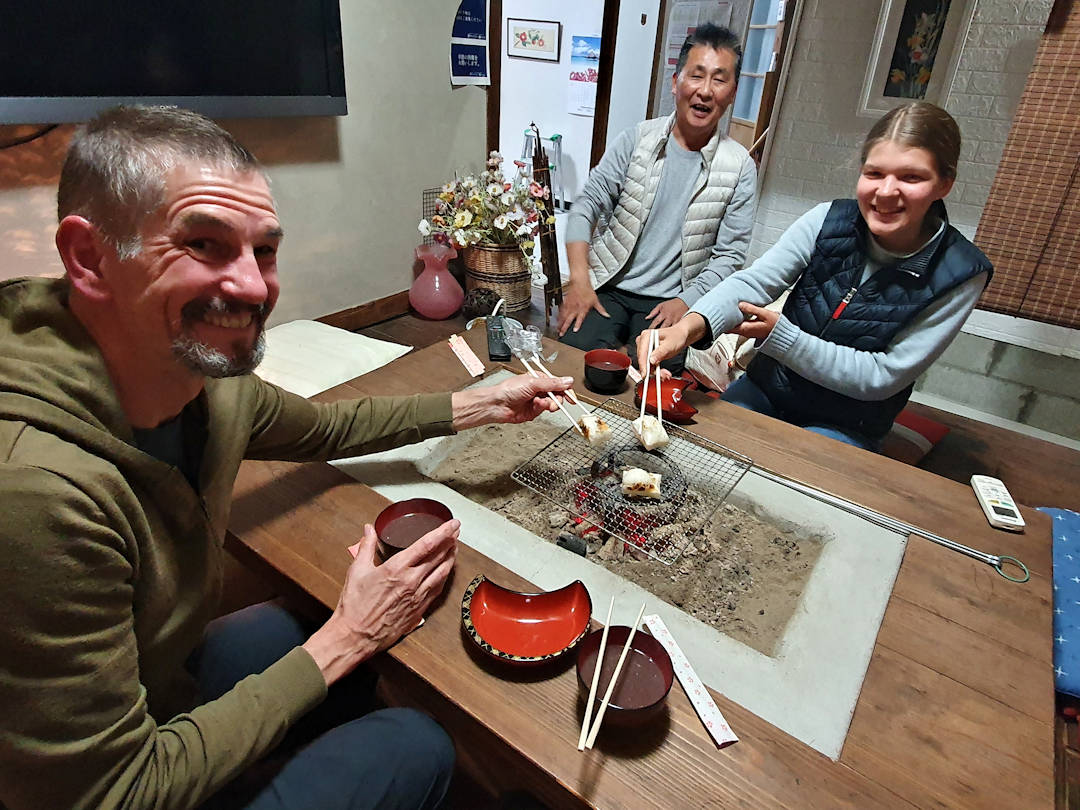
Interacting with your Japanese hosts and other guests is a wonderful experience
Although most of the accommodations we booked had a washing machine, over the three months in Japan , we did use laundromats eight times, costing us a total of JPY4,600 (or JPY575/USD4 per laundromat use ).
Prior to arriving in Japan , we purchased and received two NIPPON 4G-LTE SIM cards (one for each of our mobile phones) at a cost of JPY3,280/USD25 each – to use when we didn’t have access to Wi-Fi while travelling. Each SIM card came with 15 GB of data, valid for 180 days.
You can pack a lot into a three-month trip in Japan , and we did. All our experiences added up to JPY131,583 (USD984) between the two of us – on average, JPY756 (or just under USD6) per person per experience.
Here are some of our favourite things to see and do (including the cost per person when we visited – note that some were FREE):
- Chubu Region
- Chugoku Region
- Hokkaido Region
- Kansai Region
- Kanto Region
- Kyushu Region
Kamitakara-no-Yu Onsen , Shinhotaka [ Google Maps location ]: JPY800 Kanda House , Shirakawa-go [ Google Maps location ]: JPY400 Matsuri no Mori Museum , Takayama [ Google Maps location ]: JPY1,000 Takayama-Shinhotaka Ropeway (Bus and Cable Car) Two-Day Pass, Takayama [ Google Maps location ]: JPY6,800
Yasue Gold Leaf Museum , Kanazawa [ Google Maps location ]: JPY310
City Museum of Art , Matsumoto [ Google Maps location ]: JPY410 Miyamoto shōkai one-day bicycle rental, Nagano [ Google Maps location ]: JPY1,500 Nagano Marathon Foreign Athlete Entry Fee: JPY15,437 Obuse 3-in-1 Museum Pass (Hokusai, Kozan Takai and Obuse Museums), Nagano: JPY1,300 Togakushi Bus Day Pass , Nagano: JPY3,000
Bike ride around Kawaguchi and Saiko Lakes, Fujikawaguchiko: FREE (bicycle was provided by accommodation) Witnessing Magomi Matsuri/Chigo-no-Mai at Kawaguchi Asama Shrine and Hike to Tenku no torii, Fujikawaguchiko: FREE Kubota Itchiku Art Museum , Fujikawaguchiko [ Google Maps location ]: JPY1,300
Mt Misen Hike, Miyajima : FREE Hiroshima Castle , Hiroshima [ Google Maps location ]: JPY370 History and Folklore Museum , Miyajima [ Google Maps location ]: JPY300 Mitaki-dera Temple, Hiroshima [ Google Maps location ]: JPY200 Peace Memorial Museum , Hiroshima [ Google Maps location ]: JPY200
Hokkaido Museum , Sapporo [ Google Maps location ]: JPY1,200 Okurayama Ski Jump Stadium , Sapporo [ Google Maps location ]: JPY1,000 Sapporo Snow Festival : FREE Teine Ski Field (Day Pass and Gear Hire), Sapporo [ Google Maps location ]: JPY11,800 TV Tower , Sapporo [ Google Maps location ]: JPY1,000
Hyōgo Prefecture
Great Hanshin-Awaji Earthquake Memorial , Kobe [ Google Maps location ]: JPY600 Himeji Castle and Koko-en Garden , Himeji [ Google Maps location ]: JPY1,050 Nunobiki Herb Gardens , Kobe : JPY1,130
Botanical Gardens , Kyoto [ Google Maps location ]: JPY400 Free Walking Tour , Kyoto: FREE/Donation Hike Mt Inari , Kyoto [ Google Maps location ]: FREE Gion Corner Cultural Performance , Kyoto [ Google Maps location ]: JPY5,500 Ninomaru-Goten Palace , Kyoto [ Google Maps location ]: JPY1,050
Todai-ji , Naha [ Google Maps location ]: JPY600
teamLab Planets , Koto City [ Google Maps location ]: JPY3,500 Hokusai Museum , Sumida City [ Google Maps location ]: JPY1,000 Japan Olympic Museum , Shinjuku City [ Google Maps location ]: JPY500 Watching the sunset from Carrot Tower , Setagaya City [ Google Maps location ]: FREE Yayoi Kusama Museum , Shinjuku City [ Google Maps location ]: JPY1,100
Open-Air Museum , Hakone [ Google Maps location ]: JPY1,600
Rental Charinko Bike Ishikawa , Zamami [ Google Maps location ]: JPY2,800 Fukushuen Garden , Naha [ Google Maps location ]: JPY200 Himeyuri Peace Museum , Naha [ Google Maps location ]: JPY310 Japanese Naval Underground Headquarters , Naha [ Google Maps location ]: JPY600 Okinawa Prefectural Museum , Naha [ Google Maps location ]: JPY555 Shuri Castle Grounds, Naha [ Google Maps location ]: FREE Tsushima-maru Memorial Museum , Naha [ Google Maps location ]: JPY500
As mentioned above, during our time in Japan , we stayed mostly in accommodation that had a kitchen with basic cooking facilities, enabling us to have at least two meals a day at home . That said, it was sometimes easier and cheaper to buy ready-to-eat meals from convenience stores such as Lawsons, 7-Eleven or Family Mart – though we did try to limit those occasions to avoid adding to Japan ’s plastic waste problem .
Our daily dining costs in Japan averaged JPY1,193 (USD9) per person , with our most expensive dining experience costing us JPY2,350 per person at Steakland Kobe-kan [ Google Maps location ] – a worthwhile luxury to taste the famous beef the city is renowned for.
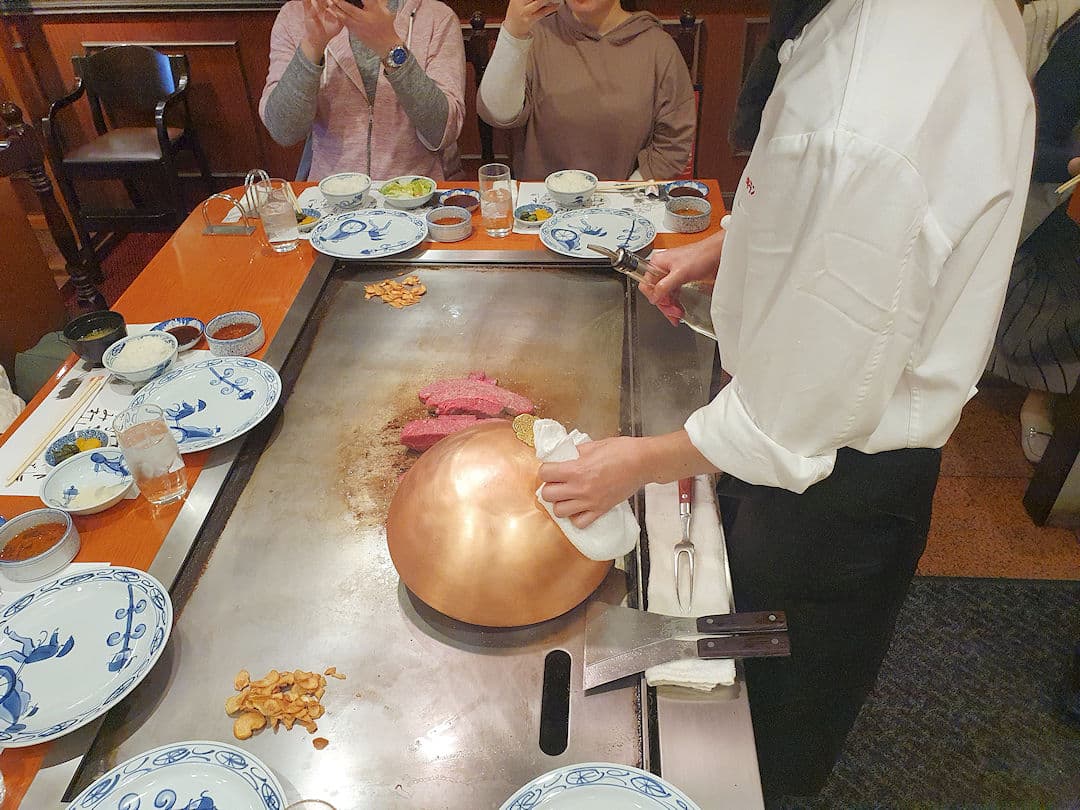
Our most expensive meal was at Steakland Kobe - but it was well worth it
Our daily groceries expenses in Japan averaged JPY1,043 (USD8) per person . We found Aeon supermarkets offered some of the best value for money, and between the major convenience store brands of 7-Eleven, Lawson and FamilyMart, we found Lawson offered the best range at the most affordable prices.
If you happen to visit Sapporo, make sure to pop into a Bostonbake branch [ Google Maps location ]. They have delicious pastries and buns daily (which are super affordable) – great to stock up on some items when you’re out and about during the Snow Festival . Sadly, Bostonbake only exists in Hokkaido.
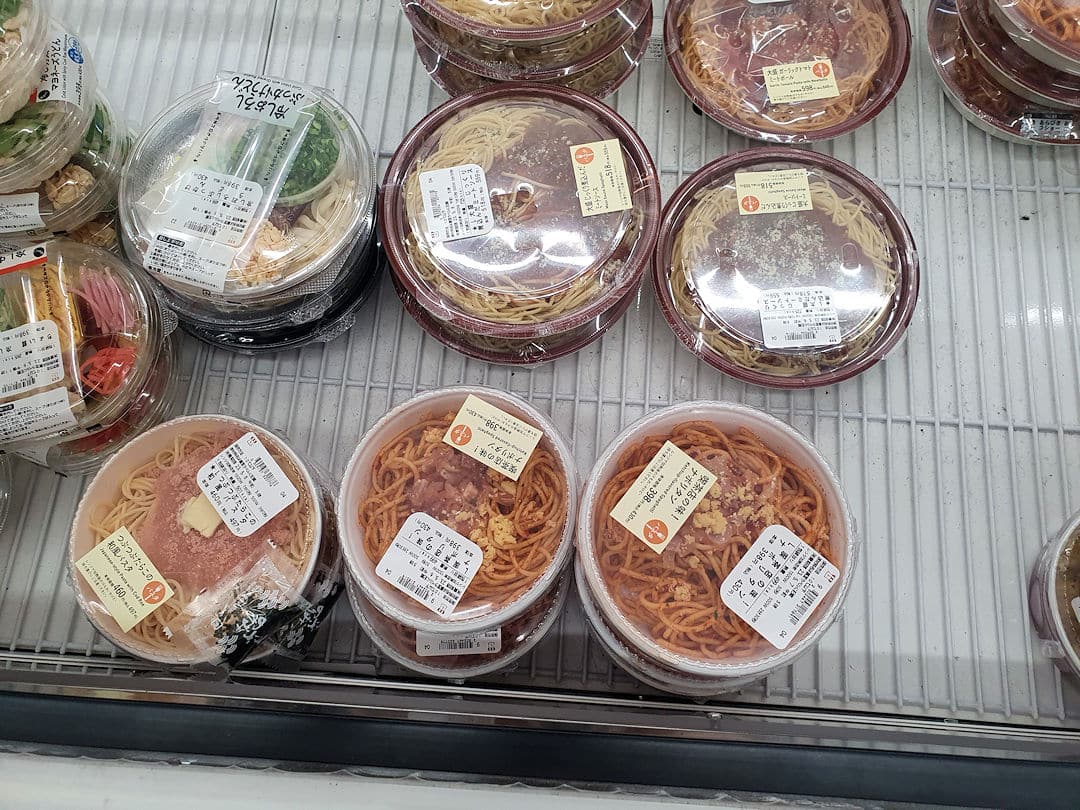
In Japan , ready-made meals are always available at supermarkets and convenience stores
As Anthony Bourdain is famously quoted as saying: You learn a lot about someone when you share a meal together. And the best way to learn about a destination is by spending it with locals, in their homes and in local markets. If you're a foodie and would like to join some incredible cooking classes and food tours, here are our recommended EatWith offers in Japan :
- Food and Sake Pairings in a Traditional Kyoto House
- Home style Ramen and Gyoza cooking class in a Japanese home
- Tokyo West-Side Walking and Street Food Tour
- Izakaya Food Tour in Shinjuku
Dining out all the time can quickly get expensive. We always try and book accommodation where we have access to a kitchen - either our own little kitchenette or the kitchen of our host. That way, we can store food in the fridge and make our own meals. We usually have breakfast and one other meal at our accommodation, and one meal when we're out and about.
Restaurants (even in tourist hotspots) often have special lunch offers (for example, a three-course meal for EUR10). Portion sizes in many parts of the world are usually quite substantial, so we often share a three-course meal. The same applies if you go out for dinner: Order a starter or salad and a main, and that's usually enough for two people. An added benefit: there is less food waste.
As for groceries: every country has more expensive and cheaper supermarkets. Ask your host what the cheaper options are (for example, Aldi or Lidl in many European countries) and avoid convenience stores as much as possible.
Experiencing the local cuisine is one of the reasons why WE travel… Paul and I tend to only eat out once a day (sometimes only once a week), usually at lunchtime. This allows us to try local dishes while taking advantage of awesome lunch deals. It also means we don’t have to roam around unknown parts of town every night in search of a restaurant.
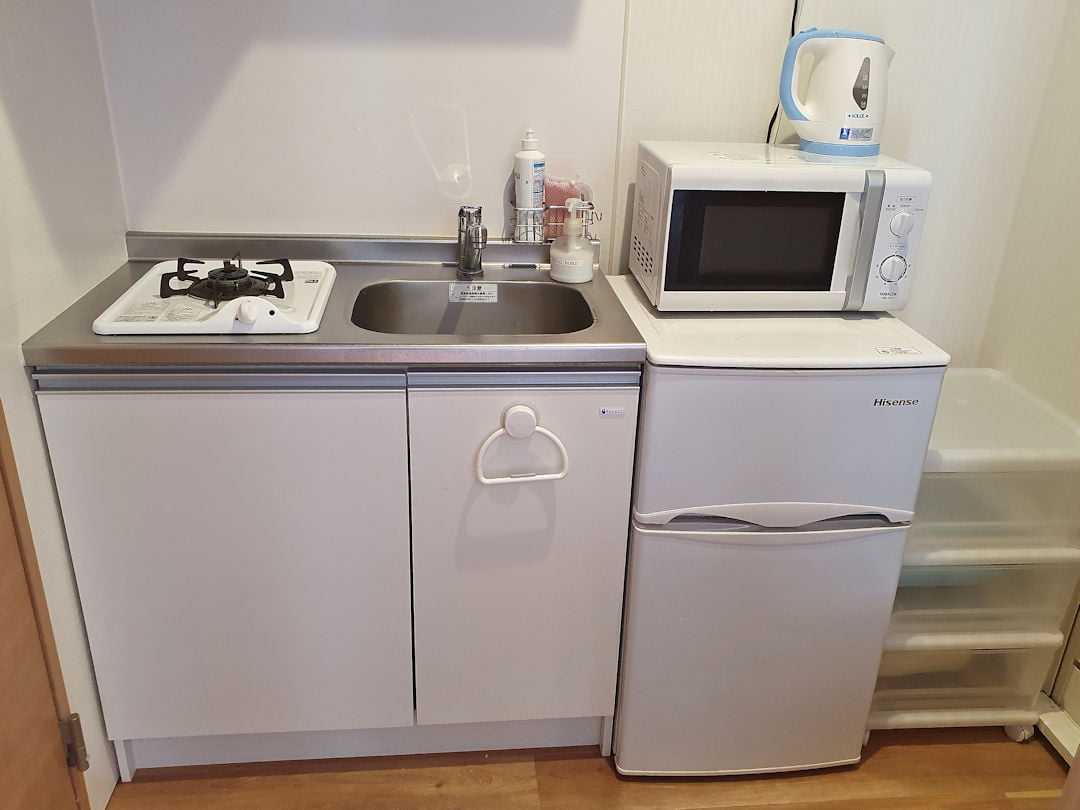
A Japanese apartment kitchen is not big but allows you to prepare your own meals (and save on dining out)
Our transport costs over the three months we explored Japan averaged at JPY1,569 (just under USD12) per person per day .
Given Japan is an island country, we ended up taking two internal flights: The flight from Sapporo, Hokkaido to Nara, Okinawa cost us JPY16,580 each (with Peach Aviation ); while the flight from Nara, Okinawa to Hiroshima on Honshu cost JPY14,460 per person (with ANA ). In both cases unfortunately, we had to check in our travel packs as the strict carry-on limit was seven kilograms.
As we were keen to see the country and had more time to explore Japan than most foreign tourists, we always considered taking slower (and thus cheaper) train options over the Shinkansen. That said, we did want to ride the Shinkansen (and in some cases, there was just no feasible alternative). In the end, we took the bullet train three times: Our Hiroshima to Himeji trip cost JPY8,040 per person ; the Kanazawa to Nagano journey JPY8,590 each and the train ride from Odawara to Tokyo JPY3,280 per person .
The Shinkansen was always markedly more expensive than slower train options. As an example, the distance from Hiroshima to Himeji was 239 kilometres, with a per kilometre cost of JPY33.64 on the Shinkansen, whereas the (slower) Rapid Express train from Himeji to Kyoto – a distance of 127 kilometres – cost JPY2,310 per person or JPY18.19 per kilometre. So if you have time, take the slow train and save money.
And speaking of travelling slowly: If you’re in the Hakone area, make sure to ride the Hakone Tozan Train [ Google Maps location ] between Gora and Odawara. The scenery is stunning, and the train does a number of switchbacks as it journeys down the mountain (or up if you do the trip in reverse) – a very unique experience.
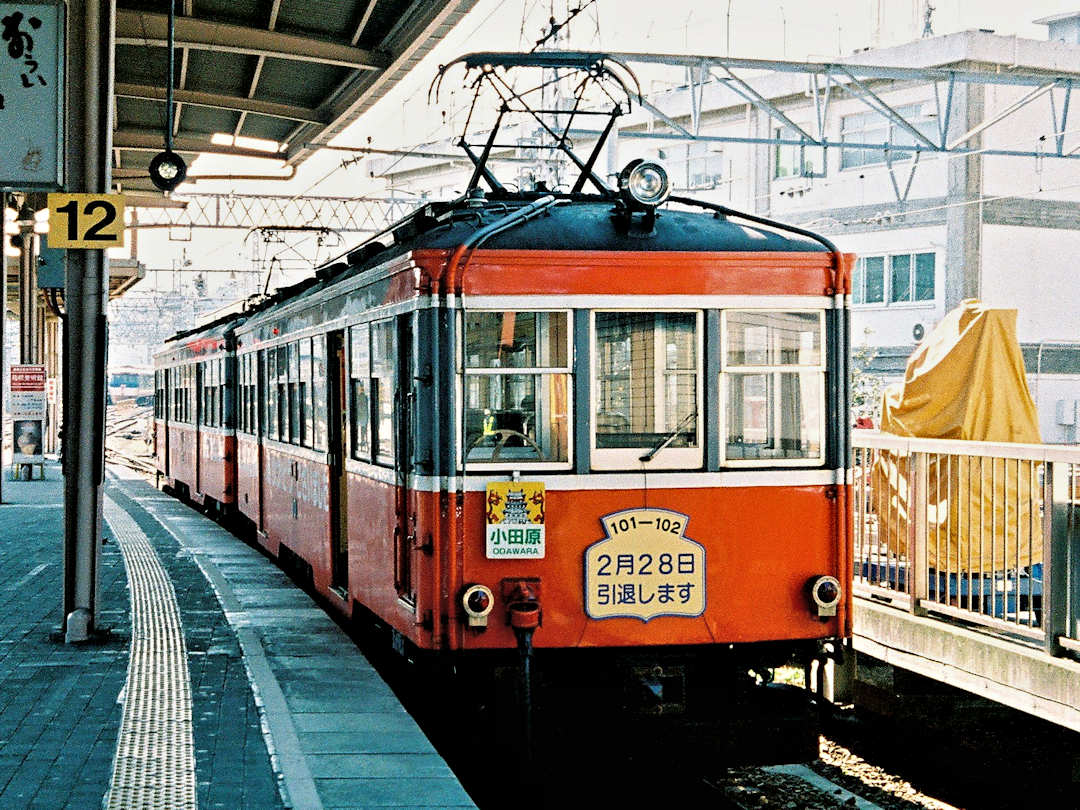
Take the Hakone Tozan Railway for its unique switchbacks down (and up) the mountains | Photo on Wikimedia Commons
Japan boasts an efficient transportation system. But, as we found out, transportation costs add up quickly, especially if you’re travelling a lot around the country.
The Japan-wide JR Rail Pass is a cost-effective option for visitors who plan to move around a lot during their stay. It’s available for 7, 14 and 21 day periods and valid on consecutive days within the chosen timeframe. The pass allows unlimited travel on JR-operated services, including JR trains – even the Shinkansen (just NOT the Nozomi and Mizuho) – and JR-operated city buses. Seat reservations are included with the JR Rail Pass but need to be obtained (free of charge) prior to travel.
The Japan-wide JR Rail Pass can only be purchased by foreigners outside of Japan and must be exchanged for the actual pass upon arrival.
Although the JR ( Japan Rail) Pass is a popular option for foreign tourists visiting Japan , it’s not the only way to save, and it may not even be worthwhile pending your itinerary. To determine if the Rail Pass is worthwhile, use an online route calculator to compare the costs of individual ticket purchases against the price of the pass.
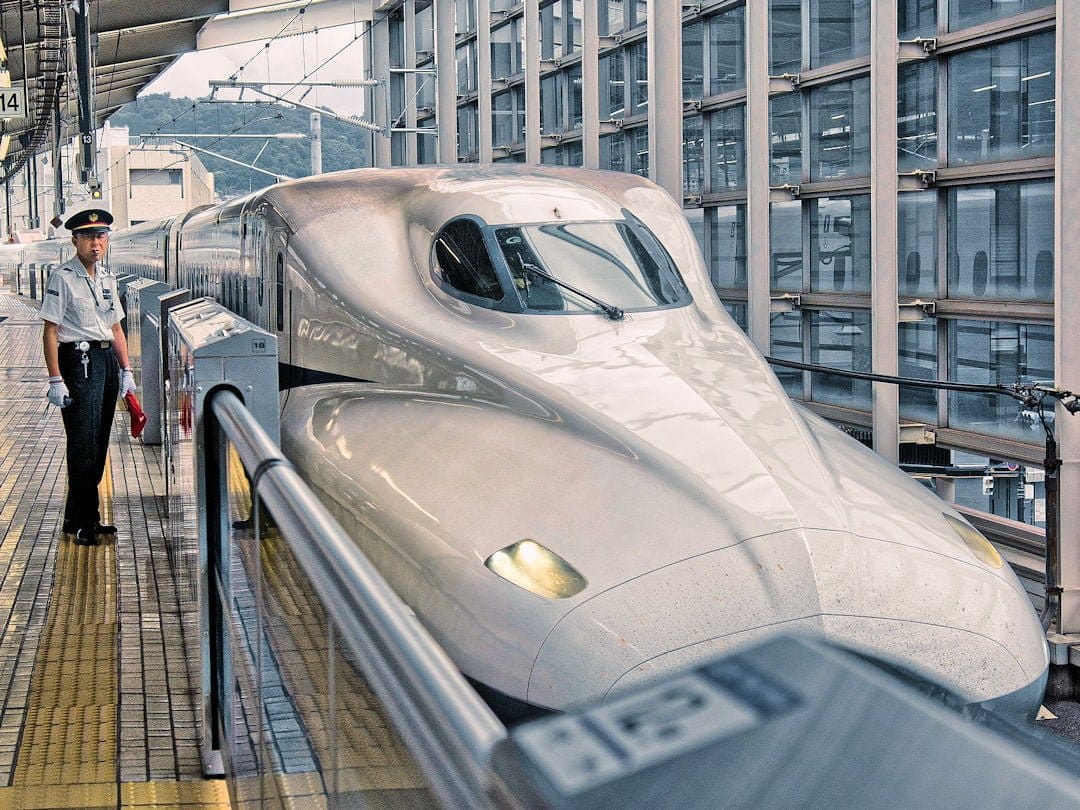
Trains in Japan are (almost) always on time, making train travel easy and convenient | Photo by Armin Forster on Pixabay
If the Japan-wide JR Rail Pass is of no use to you, one (or several) of the many Regional Rail Passes might be worthwhile. A big difference to the Japan -wide Rail Pass: you can buy these passes while already in Japan (though they are slightly more expensive than if you bought them from overseas). Worthwhile options to check out include:
- JR East: the JR Tokyo Wide Pass
- JR West: the Kintetsu Rail Pass, JR West Kansai Area Pass, JR West Kansai Wide Area Pass or the JR Kansai-Hiroshima Area Pass
- JR Central: the JR Takayama-Hokuriku Area Tourist Pass or JR Alpine-Takayama-Matsumoto Area Pass.
Even without any of the rail passes, there are still ways to save on train travel in Japan :
- Shinkansen – Buy a non-reserved seat ticket (where available): This also offers greater flexibility as you’re not bound to a specific train. Which carriages are non-reserved varies from train to train (most often it’s carriages 1-3 or 1-5). Arrive at the platform early to check out where the non-reserved carriages are located and position yourself/queue at the door marker of one of those carriages to increase your chances of getting a seat as you board.
- Alternatives – Opt for Limited Express trains: You may need to change trains along the way, but the trains in Japan are usually on time, and changing trains in Japan is not really stressful, especially if you travel light. Unless you’re travelling during rush hour, Limited Express trains are often less crowded than the Shinkansen, which also means you can save the seat reservation cost (where possible).
Extra tip: In many areas in Japan , you can use an IC card to tap on/off rather than having to purchase individual paper tickets for each journey. This saves time and makes train travel more convenient.
In Japan , you will come across the term IC card a lot (IC stands for Integrated Circuit ). IC cards are essentially plastic cards that can be topped up and the amount stored on the card is used for transportation - simply by tapping on/off at the card reader - and more and more at convenience stores and other places.
Each region issues their own version of the IC card, for example
- If you enter via Tokyo Narita or Haneda Airports, you would buy the Suica Card or PASMO card.
- If you enter via Osaka Kansai Airport, you will find the ICOCA card for sale.
Fortunately, 10 of the most common IC cards (including the two above) can be used across regions (and likely more will be added over time). Some regions (including Nagano and Okinawa prefectures) only allow their own IC card (at this stage) or cash.
Also, note:
- Cards (including any stored funds) will expire after 10 years of non-use, which means you can reuse the card if you return to Japan within that timeframe.
- You can return it (and get a refund of the money on the card plus the deposit you paid for the card itself) - as long as it's in the region you bought it.
- You can load the IC card onto your smartphone - via Apple Pay or Google Pay - but you won't be able to get a refund of your deposit or any funds stored when you leave the country.
Buses can be a good alternative to trains (especially for medium to long-distance travel and on competitive routes). Do note though that while train timetables are (mostly) reliable, buses can be stuck in traffic just like any other road transport (and delays of 30 minutes and more are not unusual).
One way to save on transport costs in Japan is by purchasing a Willer Express Bus Pass . This pass allows you to travel for 3, 5 or 7 days within a period specified by you.
- Advantages: The days of travel do not need to be consecutive, giving you flexibility in your itinerary. Willer Express has a number of night buses which can save on accommodation costs. Additionally, you can easily book your seats in advance online through the user-friendly Willer Express website.
- Disadvantages: The pass can only be used on Willer Express buses and only on the least comfortable 4 seats per row bus types.
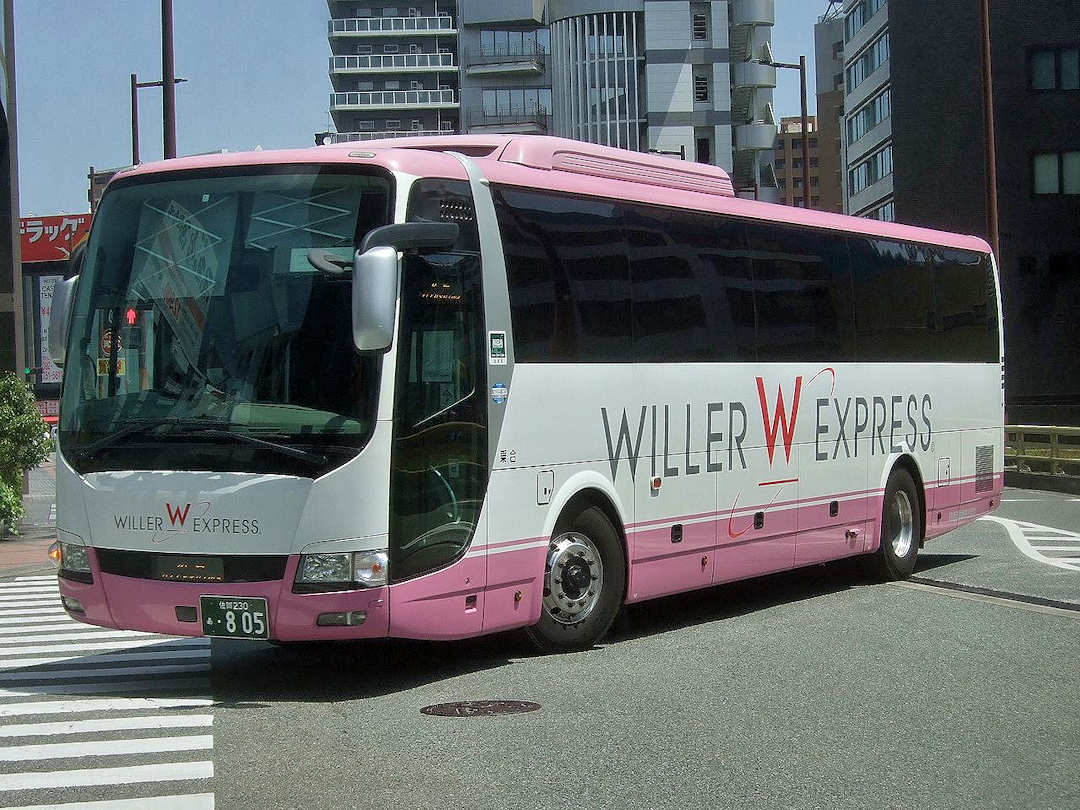
Travellers to Japan may also be able to save on transport costs by using intercity bus services like those provided by Willer Express | Photo on Wikimedia Commons
Even without a bus pass, you can save money when travelling by bus in Japan :
- Avoid backtracking and travel point to point instead – For example, stop in Shirakawa-go on the way from Takayama to Kanazawa (or vice versa) rather than visiting the UNESCO World Heritage site on a day trip – this also reduces carbon emissions.
- Make use of specials – Just ask at the local tourist office at your destination or check the websites of the bus companies operating at your destination, for example Alpico and Nohi Bus in the Japanese Alps. Do make sure though they are worthwhile by comparing individual fares (via Google Maps ) against the special fare.
We always buy travel insurance – because medical expenses overseas can add up quickly and because our carry-on backpacks are pretty much everything we own.
Whenever we buy travel insurance , we make sure we thoroughly read the fine print. It’s tedious, we know. But if you’re planning certain activities (for example, hiring a motorbike or hiking above 3000 metres), it’s crucial to know whether your insurance pays if the worst happens. Otherwise, you may have paid all that insurance premium and are still left to foot a (potentially) massive bill.
For this trip, we used Cover-More. For our three months in Japan , our joint Cover-More Travel Insurance Single Trip International Comprehensive+ Policy cost us AUD1,519/USD1,022 (or just under AUD9/USD6 per person per day) . Although we didn’t need to submit a claim and therefore don’t have first-hand experience of their claims process,we won’t be buying another policy from Cover-More again,

To our surprise, cash is still King in Japan , thus ATM withdrawals are a regular occurence. To avoid unnecessary ATM withdrawal fees we always research before our trips to figure out which overseas bank/s offer/s the best exchange rate and charge/s the lowest fees for ATM withdrawals.
In the case of Japan , we had done all our research. We knew our Bankwest Debit Card charged no foreign transaction fees, and that 7Bank ATMs charged no ATM withdrawal fees. What we didn’t know was that you had to press “Credit” when trying to withdraw with the debit card overseas (Bankwest only told us about that small fact when queried afterwards). After our debit card was declined multiple times, we ran out of time and had to use our credit card. While we had topped up the card with some money beforehand (to avoid nasty cash advance fees), the credit card provider still charged us AUD4 (or JPY382) for the ATM withdrawal. You live and learn.
Unless you’re planning to hike the Kumano Kodo or Nakasendo , you are likely not going to need luggage transfer service. We ended up using luggage transfer twice (both times with Yamato Transport):
- on our final day on the Kumano Kodo , paying JPY2,500 for the same-day transfer of one travel pack from Koguchi to Nachikatsuura; and
- during our Nakasendo hike , paying JPY1,620 for the standard transfer of one travel pack from Osaka to Matsumoto.
We also used luggage storage facilities on occasion to store our travel packs for a few hours or excess luggage during our Kumano Kodo hike for a whole week. Those storage costs added up to JPY3,640 in total ( an average of JPY607 per storage use ).
If you need to store excess baggage in Osaka, we recommend Daikoku Locker . Alternatively, you can try Radical Storage who have agencies all over Japan .
When you explore a country for three months, you will likely need a hair cut (in that country). I had mine at a barber in Osaka about half-way through our trip for JPY2,200 (a bit over USD16) .
We both also took the opportunity to get a 90 and 60 minute massage, respectively, just before the Nagano Marathon at Relaxation Salon Lovina [ Official website , Google Maps location ] for a total cost of JPY13,200 (or JPY6,600/around USD49 per massage ). It was well worth it, and we both would recommend it to anyone visiting Nagano.
Withdrawing cash overseas can be expensive but it doesn’t have to be. We can show you how to avoid unnecessary fees and make your travel budget stretch further.
How do you determine which card is best for your overseas trip? Using the right one can save bank fees and make your travel budget stretch further.
Ever been caught out by the bad FX rates and exorbitant commissions charged by FX bureaus? These tips allow you to minimise these charges in future . We also recommend XE Money Transfer to keep more of your money when you complete a transfer.
When visiting a Shinto shrine, it is traditional and appropriate to make a donation. It doesn’t have to be a lot, especially when you are throwing loose change into the large container before you bow your head and clap your hands. All our donations added up to JPY1,511 .
I wrote this Japan Travel Costs article based on our own unique experience. If you have been to Japan recently as well and you have something to add to the costs for exploring Japan , please feel free to contact us. If you liked my Japan Travel cost tips and found them helpful, I would appreciate it if you could share them with your friends and family via the Share buttons below. Even better, link to the page from your personal blog or social media platforms.
Cost of a Trip to Japan & the Cheapest Time to Visit Japan
The average price of a 7-day trip to Japan is $1,659 for a solo traveler, $2,690 for a couple, and $1,913 for a family of 4 . Japan hotels range from $62 to $304 per night with an average of $105, while most vacation rentals will cost $140 to $520 per night for the entire home. Average worldwide flight costs to Japan (from all airports) are between $948 and $1,696 per person for economy flights and $2,977 to $5,325 for first class. Depending on activities, we recommend budgeting $48 to $99 per person per day for transportation and enjoying local restaurants.
See below for average , budget , and luxury trip costs. You can also look up flight costs from your airport for more tailored flight pricing.
The Cheapest Times to Visit Japan
On average, these will be the cheapest dates to fly to Japan and stay in a Japan hotel:
- January 8th to March 18th
- August 27th to December 9th
The absolute cheapest time to take a vacation in Japan is usually late September .
Average Japan Trip Costs
Average solo traveler.
The average cost for one person to visit Japan for a week is $1,380-$2,771 ($197-$396 per day)
Food, Travel, and Sightseeing : $48 to $99 per day for one person’s daily expenses
Flights : $564 to $1,394 for economy
Lodging : $80 to $114 per night for one 2 or 3-star hotel room
or $86 to $105 per night for a 1-bed vacation rental
Average Couple’s Trip
The average cost for a couple to visit Japan for a week is $2,279-$4,865 ($326-$695 per day)
Food, Travel, and Sightseeing : $96 to $199 per day for two people’s daily expenses
Flights : $1,127 to $2,788 for economy
Average Family Vacation
The average cost for 4 people to visit Japan for a week is $4,360-$9,723 ($623-$1,389 per day)
Food, Travel, and Sightseeing : $191 to $397 per day for four people’s daily expenses
Flights : $2,255 to $5,576 for economy
Lodging : $161 to $228 per night for two 2 or 3-star hotel rooms
or $128 to $157 per night for a 2-bed vacation rental
Traveling Cheap to Japan
How cheap can you make a vacation to Japan? The cheapest trip to Japan is about $150 per person per day for travelers willing to take standby flights, deal with inconvenience, and otherwise limit travel expenses. About 3% of rentals are available in the $0 to $100 range for an entire place, and vacation rentals can be booked for as low as $16 per night. These inexpensive rentals must be booked as early as possible and may not be in the most desirable areas. 1-star hotels are more likely to be available, with rooms starting at around $53.
Even cheaper trips are possible depending on where you live and whether you can drive. Check the cheapest times to fly for more saving ideas.
Budget Solo Traveler
The lowest cost for one person to visit Japan for a week is $1,050-$2,576 ($150-$368 per day)
Food, Travel, and Sightseeing : $24 to $48 per day for one person’s daily expenses
Lodging : $53 to $62 per night for one 1-star hotel room
or $110 to $141 per night for a 1-bed vacation rental
Budget Couple’s Trip
The lowest cost for a couple to visit Japan for a week is $1,781-$4,306 ($254-$615 per day)
Food, Travel, and Sightseeing : $48 to $96 per day for two people’s daily expenses
Budget Family Vacation
The lowest cost for 4 people to visit Japan for a week is $3,557-$8,186 ($508-$1,169 per day)
Food, Travel, and Sightseeing : $96 to $192 per day for four people’s daily expenses
Lodging : $105 to $124 per night for two 1-star hotel rooms
or $165 to $211 per night for a 2-bed vacation rental
Overall it is very difficult to travel to Japan cheaply.
The Cost of a Luxury Japan Trip
There is no true ceiling on the cost of a luxury trip, so our estimates are based on what most people do in Japan.
Luxury Solo Traveler
The high-end price for one person to visit Japan for a week is $3,040-$10,904 ($434-$1,558 per day)
Food, Travel, and Sightseeing : $96 to $198 per day for one person’s daily expenses
Flights : $1,408 to $3,470 for first class
Lodging : $160 to $304 per night for one 4 or 5-star hotel room
or $504 to $1,008 per night for a preferred vacation rental
Luxury Couple’s Trip
The high-end price for a couple to visit Japan for a week is $5,121-$15,768 ($732-$2,253 per day)
Food, Travel, and Sightseeing : $192 to $397 per day for two people’s daily expenses
Flights : $2,817 to $6,941 for first class
Luxury Family Vacation
The high-end price for 4 people to visit Japan for a week is $10,241-$28,542 ($1,463-$4,077 per day)
Food, Travel, and Sightseeing : $384 to $794 per day for four people’s daily expenses
Flights : $5,633 to $13,882 for first class
Lodging : $320 to $609 per night for two 4 or 5-star hotel rooms
or $753 to $1,517 per night for a preferred vacation rental
Japan Hotel Prices
The cost of staying in Japan is much higher than the average city. On average hotels are less expensive than vacation rentals. Luxury vacation rentals are more expensive in Japan due to very high property costs. The graphs below show how much cost can vary depending on the type of experience you’re looking for.
Japan Lodging Cost by Star Status
The average price for the class of hotel is on the (y) axis. The hotel class (out of 5 stars) is on the (x) axis.
Prices are based on Japan hotel averages and may not reflect current prices. In some cases, we extrapolate prices to estimate costs, and hotels with your desired star rating may not be available.
Vacation Rental Prices
The percent of vacation rentals in the price range is on the left (y) axis. Price range is on the bottom (x) axis.
There are a healthy amount of vacation rentals serving all budgets in Japan.
Flight Costs to Japan
Averaging flights around the world, prices go from a high of $1,696 average in early to mid July to a low of $948 in late September. Median flight price is $1,031. These prices are based on millions of flights. For Japan our data includes thousands of originating airports, and hundreds of airlines. The area has more variance in price compared with other locations.
Average Flight Cost by Season
Average flight cost by day of week.
The cheapest day to fly in is typically Tuesday, and the cheapest day to fly back is usually Tuesday. Click here to see data for the cost of flights from your airport. In Japan, the difference between the cheapest and the most expensive week is about $748, so you can easily save about 79% simply by using our free flight guides and booking in advance.
Daily Expenses Budget
Daily vacation expenses vary more based on what you’re interested in doing. A fine dining restaurant with drinks around Japan can easily cost $361 per person or more, while a standard nice meal might be about $24 per person. Private tours can cost $722 per day, but self-guided tours to see the outdoor sights can be free. Costs vary wildly, so recommendations are made based on the cost of living and averages we see for this type of vacation.
Other Japan Guides
Travel costs nearby.
- Nagahama, Japan
- Maibara, Japan
- Tsuruga, Japan
- Echizen, Japan
- Sabae, Japan
- Ogaki, Japan
- Yoro, Japan
- Hikone, Japan
- Fukui, Japan
- Gifu, Japan
Travel Costs in Popular Places
- Chicago, IL, US
- Vienna, Austria
- Nairobi, Kenya
- Travel Planning Guide
How much does a trip to Japan Cost?

How much money should you budget for your trip to Japan?
- How much does a one-week trip to Japan cost?
- How much does a two-week trip to Japan cost?
- How much does a one-month trip to Japan cost?
- Hostel Prices
- Hotel Prices
The Cost of a Trip to Japan
For a trip to Japan, you should plan for daily costs anywhere between $48 to $312. If there's two of you traveling, your daily expenses could range from $96 to $623. These price ranges are based on the average daily spending of $122 (¥18,714) per person which comes from the travel expenses of other visitors. These costs include food, accommodation, sightseeing activities, and getting around locally. Keep in mind, though, these figures can vary somewhat based on your individual travel style, level of luxury, and chosen activities. Destinations across the country, such as Tokyo, Osaka, and Kyoto, might might vary somewhat from the overall average price, but they usually stick close to this range. Read on for a breakdown of travel typical expenses as well as a comparison of tour prices versus Independent travel.
If you're planning an Independent trip to Japan, budget travelers should plan to spend around $48 (¥7,364) per day for their trip. This average includes hostels and budget hotels, affordable meal options, local transportation, and activities. If you're on a mid-range budget, plan for around $122 (¥18,714) a day which covers the cost of typical hotels, normal restaurants, and a variety of popular attractions. Luxury travelers should allow for $312 (¥47,763) a day, which would cover higher-end hotels, nicer restaurants, and more private tour options. All of these price ranges are based on our extensive travel cost data for Japan from other travelers, along with hotel and tour data from travel companies.
How much does a one week trip to Japan cost?
On average, visitors to Japan spend between $336 and $2,181 for their week-long adventure, with the average being $855. This covers sightseeing, local transportation, food, and accommodations. With a duration of one week, you'll have the opportunity to explore one, two, or even three locations within Japan, depending on the level of depth you desire for your visit. Some of the most popular places to consider exploring are Tokyo , Osaka , and Kyoto . It's important to note that these figures are averages and can vary based on personal preferences and choices. Ultimately, the goal is to create a memorable and enjoyable experience tailored to your specific interests.

How much does a two week trip to Japan cost?
With two weeks, you should budget between $673 and $4,363 for your trip to Japan. The average price for a two week trip is $1,709. Two weeks will allow you enough time to visit between three and five places. If you're on a budget, you might want to consider some of the more affordable places such as Sado, Mashiko, and Matsue.
How much does a one month trip to Japan cost?
When embarking on a month-long trip to Japan, expenses can range from $1,441 to $9,348, with an average cost falling around $3,663. For those fortunate enough to have a full month, considering a vacation rental with a kitchen for at least a portion of your stay can help save money with meals. Backpackers often opt for hostels due to their affordability and the added benefit of a social vibe.
Hostel Prices in Japan
With more than 220 hostels in Japan, the average price is $24 per night for a dorm bed. Hostels are a terrific option for younger independent travelers looking to save money while staying social during their trip. With many types of hostels, it can be overwhelming to sort out the best places, though. Our analysis of the hostels in Japan not only found the average price, but also uncovered some surprises about the overall quality, amenities, and atmosphere of hostels in the region. You can see more details from our analysis about typical hostel prices in Japan here .
Here are a few sample prices from popular hostels in Japan.
- $26 for a dorm bed at Sakura Hostel Asakusa in Tokyo more details
- $22 for a dorm bed at Guesthouse U-En in Osaka more details
- $25 for a dorm bed at Backpackers Hostel K's House Kyoto in Kyoto more details
Hotel Prices in Japan
You'll find a wide range of hotel options across Japan. Below are prices for some of the destinations, and for more details see our analysis of hotel costs in Japan .
Disney Ambassador Hotel
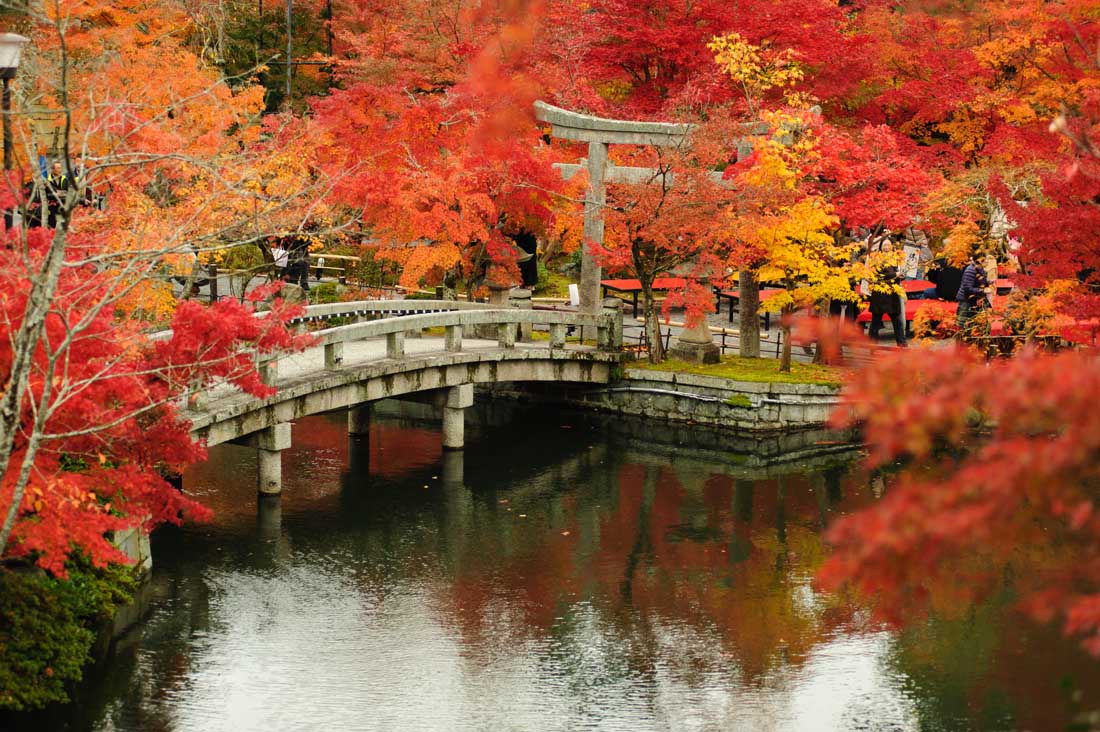
Should you do an organized tour or travel independently in Japan?
Organized tours and independent travel are essentially the two main ways to plan a trip to Japan. Organized tours offer a convenient and hassle-free experience, with travel experts handling all the logistical details and the added benefit of an expert guide imparting valuable insights. This option is favored by those who appreciate the convenience and ease provided by tours that often include transportation and expert guides.
On the other hand, independent travel provides a different set of advantages, allowing for greater freedom and flexibility in customizing itineraries and exploring at one's own pace. This option appeals to individuals who value spontaneity and control, enabling them to immerse themselves in local culture on a deeper level.
Ultimately, the choice between organized tours and independent travel depends on personal preferences and travel style, considering factors such as convenience, guidance, and flexibility.
Comparing Trip Costs in Japan
When we compare the prices of organized tours to the average costs of independent travelers, we can see that sometimes the prices are fairly even.
Tours vs. independent Travel: Pros & Cons
Organized tours.
- An expert guide familiar with the culture
- Convenient transportation
- Fellow travelers to socialize with
- Well researched activities
- Efficient and thought out itinerary
- The security of have a trip leader if something goes wrong
- Limited options
- Usually not customizable
- The fast pace often means you can’t visit one place in depth
- Usually more expensive than independent travel
- There may be limited time to interact with the local culture and community
Independent Travel
- Completely customizable
- Opportunity to visit off-the-beaten-path destinations
- Can fully immerse yourself in the local culture
- Freedom to move at your own pace
- Flexibility to change your itinerary at any time
- More affordable
- Challenging to plan an efficient itinerary
- Transportation may be challenging or inefficient
- Booking and trip planning can be a hassle
- Popular sights may sell out well in advance
- If something goes wrong, you're on your own
Are organized tours more expensive than independent travel in Japan?
Organized tours typically average around $453 per day and provide the convenience of an all-inclusive package with one comprehensive payment. On the other hand, independent trips usually average around $122 (¥18,714) per day and involve individual payments for accommodations, local transportation, meals, and sightseeing. Both organized tours and independent trips have their own unique challenges and benefits, so it's crucial to thoroughly understand the aspects of each to make a fair comparison. For a detailed analysis of tour prices in Japan, check out our comprehensive guide on tour prices in Japan here .
Here are a few sample tours in Japan:
- Environmental Conservation Volunteering, Cultural Immersion and Temple Stay on Sado Island ($759) 8 days, 1 destinations more details
- Japan´s Landscapes ($4,470) 13 days, 21 destinations more details
- Essential Japan and Hakone end Tokyo ($3,614) 10 days, 16 destinations more details
- Japan In-depth Cherry Blossom Tour ($5,287) 13 days, 17 destinations more details
- Japan Uncovered ($8,824) 16 days, 13 destinations more details
More for Japan
If you're planning a trip to Japan, check out these other informative travel guides.
We've been gathering travel costs from tens of thousands of actual travelers since 2010, and we use the data to calculate average daily travel costs for destinations around the world. We also systematically analyze the prices of hotels, hostels, and tours from travel providers such as Kayak, HostelWorld, TourRadar, Viator, and others. This combination of expenses from actual travelers, combined with pricing data from major travel companies, gives us a uniqe insight into the overall cost of travel for thousands of cities in countries around the world. You can see more here: How it Works .
Subscribe to our Newsletter
Coupons and discounts! Travel tips!
1 Categories averaged on a per-item basis. 2 Categories averaged on a per-day basis. For example, the Food 2 daily average is for all meals for an entire day, while Entertainment 1 is for each individual purchase. Thus, the overall daily average cost is not a summation of the individual categories.
- You are welcome to reference or display our travel costs on your website as long as you provide a link back to this page .
- For a basic link, you can copy and paste the HTML link code, or this page's address. Address Link HTML Japan Travel Costs " disabled />

Some of the links on this website are sponsored or affiliate links which help to financially support this site. By clicking the link and making a purchase, we may receive a small commission, but this does not affect the price of your purchase.
- Privacy / Terms of Use
- Activities, Day Trips, Things To Do, and Excursions

- 2 Weeks for Couple
- 2 Weeks for Family
- Thailand Lantern Festival
- Indonesia(Bali)
- South Korea
- China (HK, Taiwan)
- Itinerary Ideas
- Asia Highlights Travel Reviews
- Thailand Travel Reviews
- Vietnam Travel Reviews
- Cambodia Travel Reviews
- Japan Travel Reviews
- Myanmar Travel Reviews
- China Travel Reviews

How Much Is a Trip to Japan
When considering a trip to Japan, you probably want to know how much it would cost. Is Japan expensive? Well, travel costs in Japan are cheaper than in most Western countries with similar service standards and living costs, but they are about twice as expensive as other Asian countries'.
Different experiences, modes of transportation and classes of hotels meals in Japan can make a big difference to costs. In this article, we'll explore the travel costs for Japan and share how to make the most of your money.
How Much Is a Private Japan Tour Package?
- Cost of International Flights to Japan
- Cost of Accommodation in Japan
- Cost of Transportation in Japan
- Cost of Food in Japan
- Cost of Attractions/Activities in Japan
- Tips for Saving Money
Discover real reviews of Highlights Travel Family 's best-rated service across trusted platforms.
In general, a private Japan tour costs US$350–500 per person per day (with 2–4 people) , including private car, private guides, local 4-star hotels, tickets for attractions, and full-day itineraries. Thus, the total cost is around US$2,500–3,500 for a week and around US$5,000–7,000 for 2 weeks.
Riding a private car offers a more comfortable and efficient experience with less physical exertion. In contrast, public transportation, while cheaper, often entails walking around 20,000 steps per day. This can be challenging for older individuals or those with limited mobility. Opting for private car, which typically cost around US$150–200 per day, allows you to save time and conserve energy, enabling you to dedicate more time to exploring sights rather than waiting for connections or navigating unfamiliar routes.
Having a private guide provides an opportunity to experience excellent service, receive outstanding explanations, and gain a deeper insight into Japan's culture. With a knowledgeable guide by your side, you can learn fascinating details and anecdotes about the places you visit, ensuring a deeper understanding and appreciation of Japan's unique traditions and customs.
March to May (cherry blossom season) and October to November (red maple season) are peak seasons in Japan. We suggest that you book a Japan tour at least 3 months in advance to reserve the perfect hotels and professional guides for these times.
The Cost of International Flights to Japan
The cheapest period to buy flight tickets is mid-January to February , costing about US$900–1,500 from the U.S. The most expensive month to buy flight tickets is April , when the cost from the U.S. is around US$1,600–1,800. From June to July the airfare is US$1,000–1,500, and in December the cost is US$1,000–1,600.
The cost of flights from the U.S. to Japan varies depending on when you fly and the airline you choose. For example, round-trip economy tickets from New York or Los Angeles to Tokyo cost anything from around $800 to $1,800 on average for 2024.
Direct flights from Europe to Japan are fewer and most require at least one stopover. A round trip from London to Tokyo is in the range US$1,500–2,000 on average for 2024.
To buy the cheapest flights to Japan, we recommend you book at least 3–6 months in advance , especially if you are going to Japan during the busiest times, such as cherry blossom season from March to May, the red maple season from October to November, and around New Year.
Suggested reading: 2-Week Japan Itineraries >>>
The Cost of Accommodation in Japan
Japan hotel prices vary widely between low season and high season. A standard room in a 4-star hotel costs from US$200–280, and a 4-star ryokan (traditional inn) costs around US$300–450 per room per night for most of the year. However, the price may double or even triple in March and April when the cherry blossom blooms.
Staying at a ryokan allows you to experience the most authentic Japanese accommodation. You can sleep on a tatami, try on yukata (traditional Japanese robes), and even relax in onsens (hot spring baths) at some ryokans. If you are traveling with kids, some ryokans can provide enough tatamis for your family to stay together in one room.
Tip for saving money: Early reservations to ensure your preferred hotel choices (at least 3-6 months in advance) are suggested and to minimize hotel changes.
The Cost of Transportation in Japan
Public transportation is very convenient in Japan, especially the subway. Taking Tokyo as an example, regular Tokyo subway fares are US$1–3, depending on the distance. Taxis are the most expensive option, as the starting fare is from US$5 for the first two kilometers. Most destinations in Japan are connected by trains , and their prices are not affected by the peak travel seasons. Shinkansen (bullet train) is the fastest and most popular way to travel between cities: a ride from Tokyo to Kyoto costs about US$100.
We recommend utilizing a private car service for airport pick-ups and drop-offs in Japan. The transport routes in Japan can be complex, and navigating the right tram or train can consume a significant amount of time. By opting for a private car, you can avoid this issue and be transported directly to your hotel or the airport without any hassles or confusion.
Tip for saving money: Consider utilizing public transportation for some city tours like Hakone or Hiroshima, where you can enjoy the sights at your pace and experience the efficiency of Japan's impeccable transportation system.
Suggested reading: How to Plan Your Trip to Japan >>>
The Cost of Food in Japan
Japanese cuisine is one of the main attractions for travelers who visit Japan, and it is often not expensive , such as sushi, ramen, rice balls, etc. A meal at a sushi restaurant usually costs US$15–50, and a bottle of Japanese wine costs US$3–7. A bowl of ramen costs just US$5–7. On average, a day eating at mid-range restaurants costs US$30–45 per person.
Luxury meals such as wagyu beef or kaiseki can cost around US$70–110 per person or more. These exquisite and delicious cuisines showcase the meticulous and delicious nature of Japanese culinary traditions. Indulging in these high-end Japanese dishes would not only treat your eyes but also amaze your taste buds with their exquisite flavors.
The Cost of Attractions/Activities in Japan
Tickets for most attractions in Japan range from US$3–7. World Heritage sites like Kinkaku Temple and Kiyomizu Temple in Kyoto cost just US$3. There are also many shrines, temples, and parks in Japan that are free of charge , like Meiji Shrine and Sensoji Temple in Tokyo and Fushimi Inari Shrine in Kyoto.
Theme-park tickets, such as for Disneyland in Tokyo and Universal Studios in Osaka, are significantly higher in cost at about US$60–70 per person.
Authentic Japanese activities like watch geisha's performance, traditional tea ceremonies, or ninja experiences can cost more compared to simply visiting attractions. The prices for these experiences vary depending on the specific activity, but usually involve the service costs of an expert in a field. However, these immersive experiences are well worth it, allowing you to deeply immerse yourself in the local culture and gain insights into Japanese traditions, making your trip more enriching and complete.
Tip for saving money: Consider a mix of having a private guide for certain locations and exploring "self-explanatory" attractions on your own. Having a private guide can enhance your experience and enrich your knowledge, particularly when visiting historic places in Tokyo and Kyoto. On the other hand, cities with natural beauty like Lake Kawaguchi or Hakone can be explored independently, allowing you the freedom to appreciate the sights at your own pace.
Get Inspired with Some Popular Itineraries
At Asia Highlights, we create your kind of journey — your dates, your destinations, at your pace. You can have any trip tailor made for your travel.
More Travel Ideas and Inspiration
Sign up to our newsletter.
Be the first to receive exciting updates, exclusive promotions, and valuable travel tips from our team of experts.
Why Asia Highlights
Where can we take you today.
- Middle East
- African Safari
- Travel Agents
- Loyalty Program
- Our Differences
- Privacy Policy
Address: Building 6, Chuangyi Business Park, 70 Qilidian Road, Guilin, Guangxi, 541004, China

Japan travel budget calculator
What will exactly cost my trip to Japan? Every prospective tourist for the archipelago wondered about the amount necessary to plan a travel in their dream country.
Kanpai’s Budget Calculator provides a precise estimate of the travel expenditures item-by-item, with numerous possible choices. As a matter of fact, a backpacker’s 10-days trip will not cost the same as a 3-weeks stay for a family looking for a very comfortable trip.
Fill in the questionnaire below to discover the expenses to expect and many advices on how to keep the cost down.
How much should I budget to go to Japan?
- Number of Travelers
- Your Travel
- Itinerary & Transportation
- Accommodation
- Outings & Shopping
April, July and August are peak touristic seasons: many services are more expensive during these periods. Consider traveling in January, February, March, May, June, September, October, November or December to keep your costs down.
- Flights and Airports
- Transportation
- Internet & Phones
- Budget and money
- Japanese Food
- Visit with Kids
- Seasons: spring / summer / autumn / winter
- Weather forecast
- Time in Japan
- Holidays & Festivals
- Natural Disasters
- Customs and Duties
- Works and Closures
- From April 29 to 5 May -- Japanese Golden Week
- May 12 -- Mother's Day in Japan
- June 6 -- Beginning of the rainy season (Tsuyu) in Japan
- June 21 -- Summer starts in Japan
- July 1 -- Season start for climbing Mount Fuji
- From July 1 to 31 -- Gion Matsuri Festival in Kyoto with float processions on July 17 and 24
- Tokyo : Shinjuku , Shibuya , Harajuku , Asakusa , Akihabara , Odaiba , Ikebukuro , Ueno , Roppongi , Chiyoda , Ryogoku ...
- Around Tokyo: Kamakura , Nikko , Hakone , Mount Fuji , Mount Takao , Yokohama ...
- Kansai: Kyoto , Nara , Osaka , Mount Koya , Himeji , Kobe , Kinosaki , Kumano Kodo , Ise ...
- Japanese Alps: Kanazawa , Matsumoto , Takayama , Shirakawa-go , Nakasendo ...
- West: Hiroshima , Miyajima , Shikoku , Onomichi , Naoshima , Izumo , Kurashiki , Matsue ...
- South: Kyushu , Okinawa , Yakushima ...
- North: Hokkaido , Tohoku ...

- Temples and Shrines
- Gardens and Parks
- Hiking and Trekking
- Observation Decks
- Public Baths (Onsen and Sento)
- Festivals (Matsuri)
- Amusement Parks
- Visit on a Budget / Luxury

Keikaku is a travel agency specialist of Japan and providing different kind of services:
- Japan Rail Pass
- English speaking Guides
- Pocket Wi-fi
- Japan Nightlife
- Working in Japan
- Religion and Spirituality
- Arts and History
- Movies / Animated Movies
- Japanese Music
- Studio Ghibli
- Photos / Videos
- Weird Japan
- Translations
- Kana & Kanji
- Japanese Swear Words
- Honorific Suffixes (san, kun, chan...)
- Introducing yourself
- Thank you / Apologize
- Count / Say Your Age
- Say the Date / Tell the Time
- Happy birthday
- Enjoy Your Meal
- Writing your name

Kanas are the much-needed basic characters of written Japanese language. Memorize them at a fast pace with our method.

Ask any kind of question and share your knowledge about Japan in Kanpai’s community space, our Q&A section Kotaete.

Isshoni means "together" in Japanese: share your trip details (dates, places you would like to visit) and find companions to travel in Japan.

Create your Kanpai account to manage your profile and view your participation history (questions, answers).
Travel Budget
This page is meant to give you a rough idea of the cost of individual travel in Japan by introducing some sample budgets. Note that accommodation rates can increase during peak seasons in popular destinations which is not reflected by the numbers below. View also our pages about budget travel , package tours and suggested itineraries to see the sample budgets applied to specific itineraries.
Sample daily budgets
The numbers below do not include the cost for transportation and heightened accommodation rates during peak seasons. Click here for the current yen exchange rates.
Accommodation
Below are typical rates for accommodation outside the peak seasons . Rates can increase considerably during the peak seasons! Check our accommodation page for more information on different accommodation types and corresponding price ranges.
Low budget: 3,000 - 5,000 yen per night and person Dormitories and hostels , found in most cities of Japan, typically charge below 5000 yen per night and person. Furthermore, booking services like Hostelworld offer great deals.
Medium budget: 6,000 - 12,000 yen per single room and night 8,000 - 15,000 yen per double room and night At this level, you will find rooms in business hotels , minshuku and inexpensive, no-frills ryokan . Some tour packages (for individual travelers) include accommodation at quality Western-style hotels at this price level.
High budget: over 12,000 yen per single room and night over 15,000 yen per double room and night Starting around 12,000 yen per person, you can get rooms in better business hotels and inexpensive Western-style hotels. A stay at a ryokan with two meals included typically costs between 15,000 and 30,000 yen per person and night. For a room in a 4 or 5 star Western-style hotel, you typically pay from 25,000 to 50,000 yen per room and night.
Low budget: 500 yen per day At this level, you will have to live from convenience store food (bread, rice balls, etc.) and fast food restaurants like McDonald's or Mister Donut which offer inexpensive breakfasts.
Medium budget: 500 - 1000 yen per day Many coffee shops and some restaurants in shopping areas and around train stations offer breakfast sets for around 500 to 1000 yen.
High budget: above 1000 yen per day Hotel breakfasts and breakfast buffets will usually cost you more than 1000 yen. Breakfast buffets in first-class hotels typically cost at least 3000 yen.
Low budget: 500 - 800 yen per day Inexpensive lunch boxes are available in convenience stores and stands in railway stations and business districts. Various fast food restaurants , specializing in noodles, curry, domburi or hamburger, also offer relatively filling meals for 800 yen or less.
Medium budget: 800 - 1500 yen per day At this level you will have an even larger range of inexpensive restaurants such as the above mentioned fast food places, plus restaurants which offer lunch set specials for around 1000 yen.
High budget: above 1500 yen per day A lunch at better restaurants costs typically between 1500 and 3000 yen.
Low budget: 500 - 1000 yen per day Convenience stores sell various, inexpensive ready-to-eat meals. Other options are again cheap fast food restaurants .
Medium budget: 1000 - 2500 yen per day Conventional restaurants are generally more expensive in the evening than during lunch time, as there are no lunch specials. At this level, you will be able to enjoy a nice dinner at a wide range of fast food and conventional restaurants, including the restaurants found in department stores where meals typically cost between 1000 and 2500 yen, not including alcoholic drinks.
High budget: above 2500 yen per day With 3000 yen per person you will be able to have a good dinner at a wide range of restaurants . Calculate 5000 yen upwards per person for a dinner at upper class restaurants specializing in sushi , French cuisine, sukiyaki, kaiseki ryori, steaks, etc.
Sightseeing
Low budget: 0 - 500 yen per day Japan offers many free attractions. Most shrines and some temples do not charge admission fees. A few museums charge no admission on one day of the week or month.
Medium budget: 500 - 2000 yen per day Admission to famous temples costs between 300 and 1000 yen. Most museums and castles charge about 500-1500 yen per person.
High budget: above 2000 yen per day Some museums and attractions (usually outstanding ones or tourist traps) charge between 1,500 and 3,000 yen per person. Admission to large theme parks typically cost around 5,000-10,000 yen per day.
Transportation
Low budget: Highway buses , the Japan Bus Pass and the Seishun 18 Kippu (only available during certain times of the year) are among the cheapest ways of traveling in Japan.
All budgets: Travelers of all budgets should consider purchasing a rail pass . Over long distances, domestic flights are often more economical, if you take advantage of the various discount offers .
Questions? Ask in our forum .

Japan Travel Expenses: How Much Does a Trip to Japan Cost?
Latest update: November 14, 2022
Japan is considered a very expensive travel destination. In this post we are going to reveal how much money we spent traveling in Japan and how you can save money. We will give you a detailed breakdown of our travel expenses.
Due to the expectedly high costs, we were afraid of going to Japan for a long time, but at some point the desire was just too strong.
Luckily for you, we can now tell you exactly how expensive a trip to Japan really is.
In this post we have written down in detail all our travel costs in Japan and what you have to expect for your trip.
Info: We spent 3.5 weeks in Japan during the cherry blossom season and took care of the hotel search at a very late stage in our planning. During this season the hotel prices in Japan are even more expensive than usual.
Read all our posts about Japan
Japan: Cash withdrawals and currency
But before we get to the actual figures of our expenses, let’s start with the basics: Money in Japan.
In Japan you pay with yen. The exchange rate is a bit complicated, but after a while you get used to it:
100 Yen = 0.83 euros or 1 euro = 120 Yen
In Japan you still pay with cash relatively often, so we withdrew cash regularly. ATMs are not always easy to find, but there is always one somewhere.
Our tip: Turn on the location information on your mobile phone and enter “ATM” in Google Maps and let it lead you to the nearest bank machine.
However, not all ATMs work with foreign bank cards. If an ATM has nothing at all written on it in English, you probably won’t get any cash from it.
With our credit cards, the DKB Visa and the Santander 1Plus Visa, we can withdraw money worldwide for free, including Japan. It may be best to check with your bank prior to your trip, to find out what costs may be incurred in Japan.
Some ATM operators charge an additional fee of 210 yen (1.75 euro) for a withdrawal. No fees are charged at the ATMs of the Japanese Post (JP) and the Seven Bank (part of the supermarket chain 7/11).
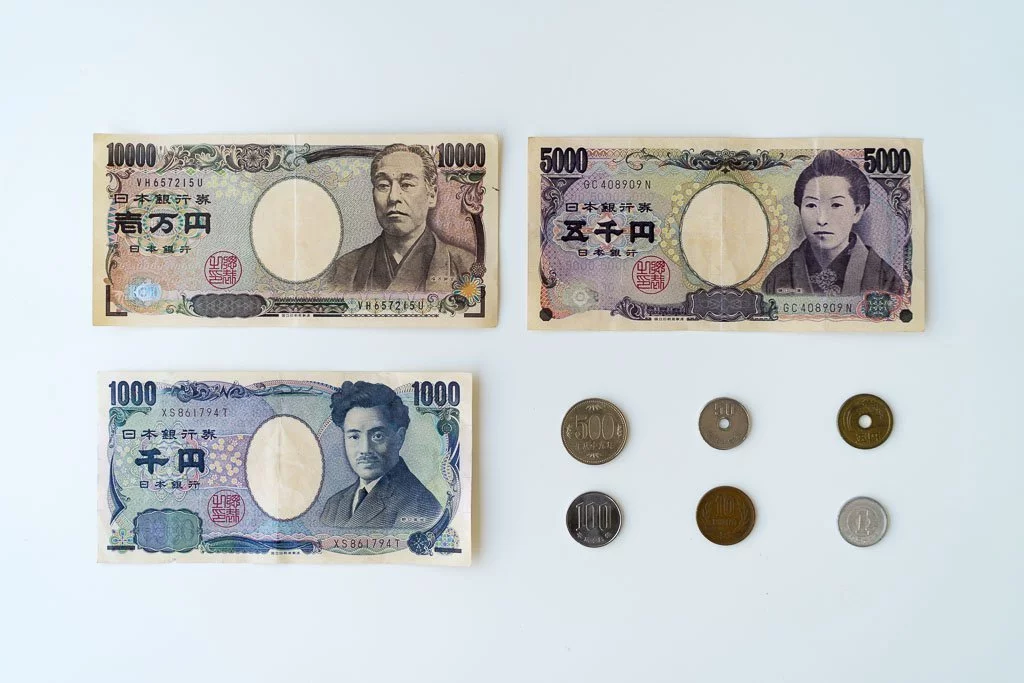
Expenses in Japan: How much does Japan cost?
Even though Japan is considered an expensive travel destination with good reason, it is not so expensive in all aspects. We compared the prices for different things with the prices in Germany and will show you what is more expensive in Japan, what is cheaper and what costs exactly as much as in Germany.
This is less expensive in Japan than in Germany
Sushi: Eating sushi in Japan is not only significantly tastier, but also cheaper than in Germany. At a conveyor belt Sushi you get a plate with two Nigiri starting from 108 Yen (0,90 euro).
For less than 10 euros you can eat plenty of sushi there. Of course there is also much more expensive sushi, but the quality of the sushi that you get for your money is much better in Japan than in Germany.
Public transport: Public transport in cities is generally cheaper than in Germany. In the big cities, a ride on the subway costs the equivalent of 1.50 euro to 2.00 euros. In German cities you can get a short-distance ticket for that, if you are lucky.
Public toilets: Maybe that doesn’t really make a difference in the travel budget, but it is still very pleasant. Not only are there public toilets everywhere in Japan, they are also mostly clean and always free of charge.
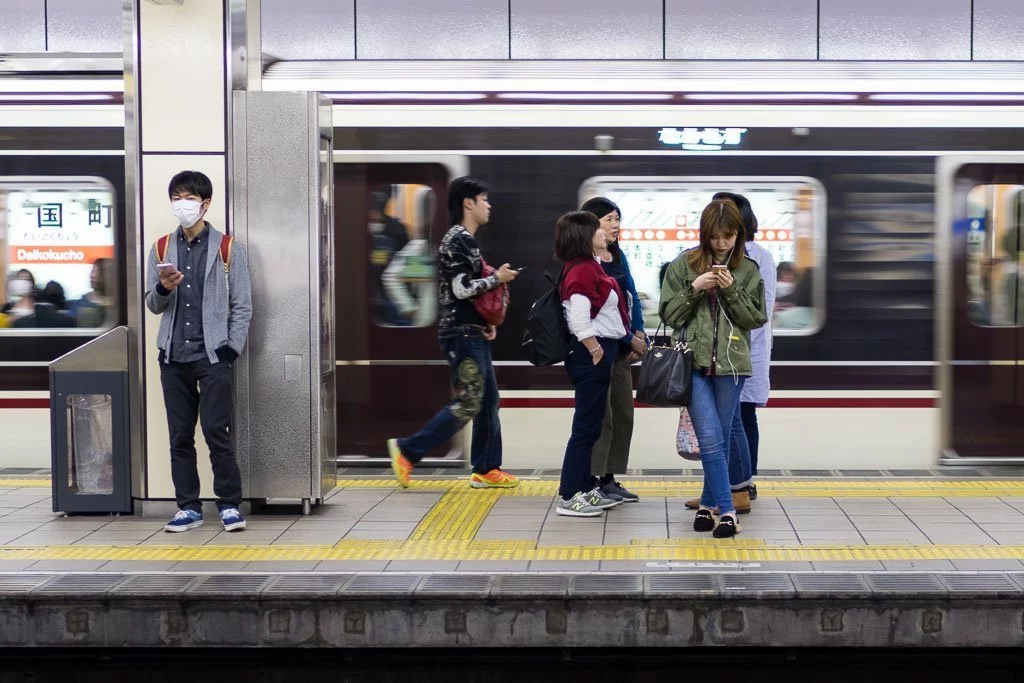
This is more expensive in Japan than in Germany
Hotels: Unfortunately, a not insignificant point concerning travel expenses are the prices for accommodation. Especially the costs for hotels in Tokyo , Osaka and Kyoto are significantly higher than in Germany.
A simple mid-range room, which often only measures around 10 square metres, costs between 120 and 160 euros per night. Beds in hostels start at 30 euros per night.
In our Japan hotel tips post we have listed all our hotels and give you general tips for hotel bookings in Japan.
Beer: Beer is relatively expensive in restaurants and bars in Japan. The prices for a small beer (about 0.35 liters) vary between 350 and 1,000 Yen (3-8 euros). The price level for wine and cocktails is not as high.
Western food: If you feel like a pizza or a burger during your trip to Japan, you have to dig deeper into your pocket than in Germany. Prices from 15 euros upwards are not uncommon here.
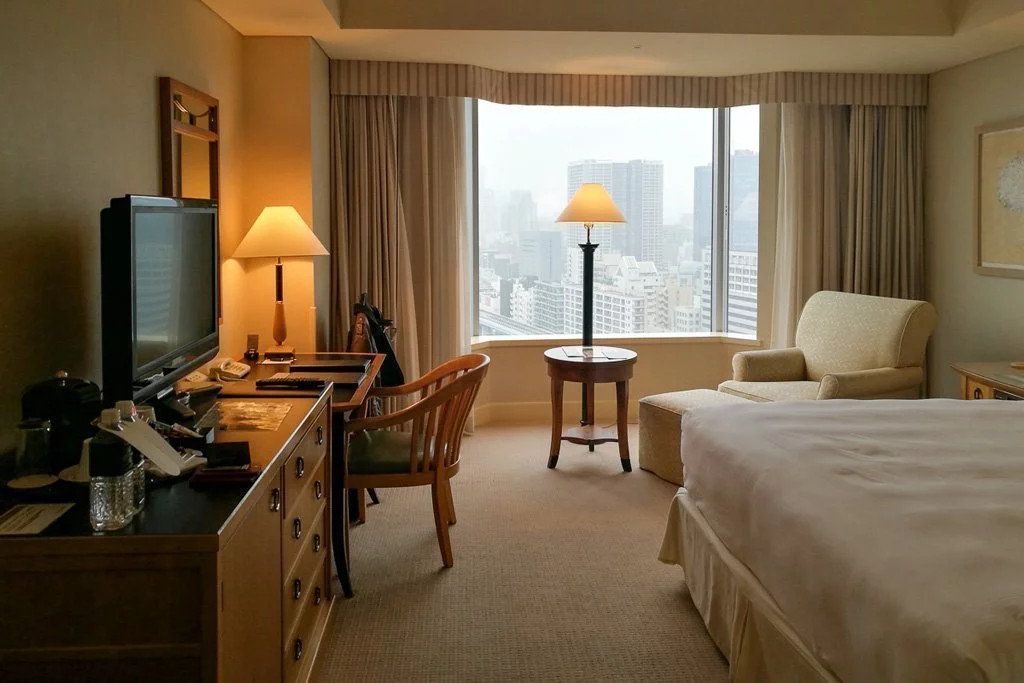
This costs as much in Japan as in Germany.
Train: Traveling by train in Japan is fast and comfortable, but unfortunately about as expensive as in Germany. A trip from Tokyo to Hiroshima (800 km) costs the equivalent of 155 euros, which is about the same as a trip with the ICE from Hamburg to Munich (800 km, 145 euros).
Electronics: Of course, in the homeland of the big camera manufacturers, we also looked to see if there were any bargains.
Unfortunately there were none. Cameras, lenses and other electronics cost about as much as in Germany.
Even if it might be a little bit cheaper, we would advise you not to buy a camera or other electronic equipment in Japan, because in warranty cases it becomes difficult if the things were bought abroad.
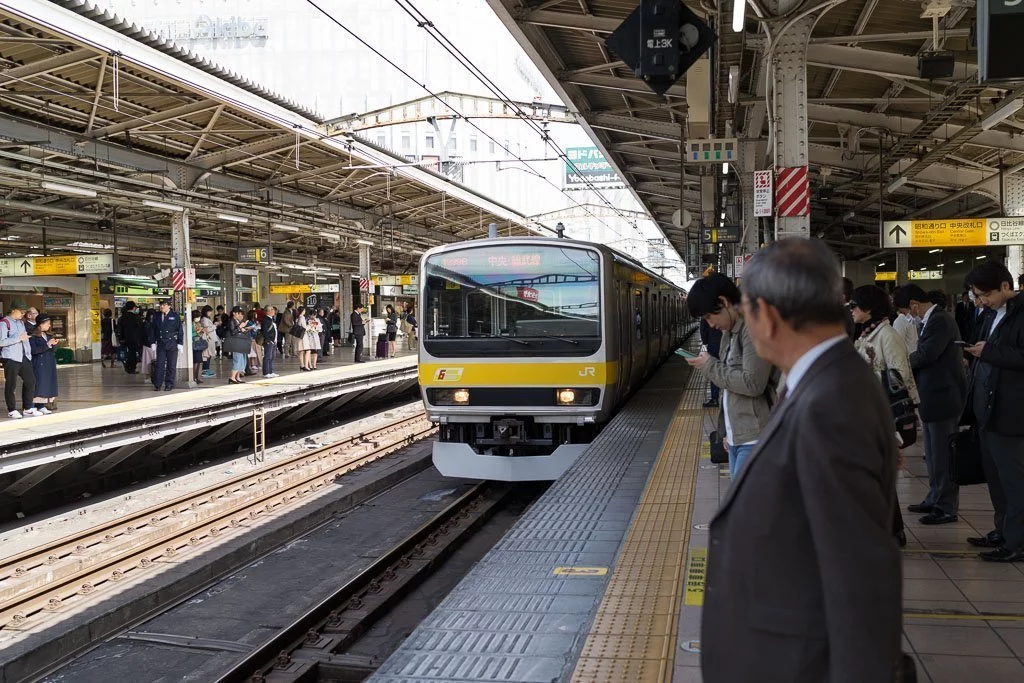
Our travel expenses in Japan
Now, as promised, you get to look behind the scenes. We listed exactly how much money we spent on our trip to Japan.
Our costs for overnight stays in Japan
As already mentioned, the price level for accommodation in Japan is high. Even though we only slept in average mid-range hotels (2-3 star standard), this was the biggest part of our expenses.
This is what we paid:
Tokyo: Super Hotel Lohas Akasaka 11 m² – 141 euros/night Osaka: Hotel Cordia 18 m² – 147,50 euros/night Kyoto: Hotel Washington 9 m² – 144 euros/night Hiroshima: Hotel Washington 18 m² – 75 euros/night Miyajima: Oyado Tsukiusagi 20 m² – 113 euros/night
Regarding the prices we have to add that we were in Japan during the cherry blossom season, one of the two main travel seasons.
In the period from the end of March to the middle of April, of the Golden Week at the beginning of May, as well as in autumn, the prices for accommodation are the highest in Japan.
Average cost per day: 135 euros Total cost for 3 weeks: 2,845 euros (for two)
More info: In our post about our hotels in Japan , you’ll find more information and practical tips for your hotel booking.
Our expenses for food and beverages in Japan
Breakfast is usually not included in the hotels, but must be booked additionally.
As in the simple hotels, the breakfast is usually oriented to the Japanese taste and is also not quite cheap, we usually ate out for breakfast.
We also went out for lunch and dinner. We never ate in very expensive restaurants, but often had sushi (10 euros per person), ramen or udon soup (5-9 euros per person).
We also didn’t drink much alcohol, from time to time we had a beer or a glass of wine for dinner.
Average cost per day: 56,50 euros Total cost for 3 weeks: 1,300 euros (for two)
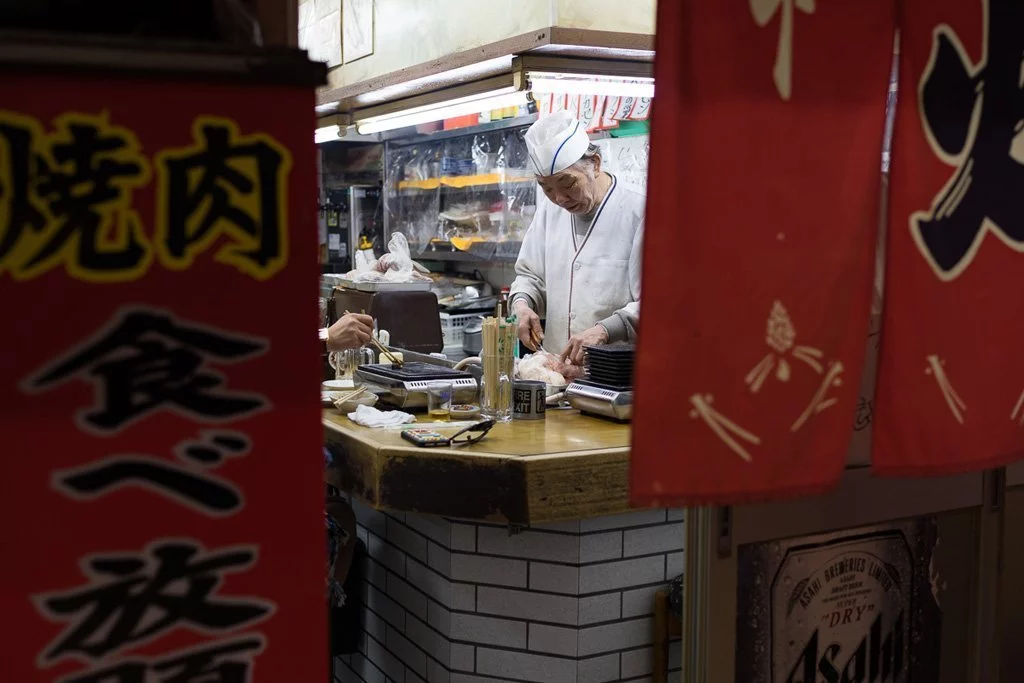
Costs of transportation in Japan
The transportation costs, to get from A to B, made up a relatively large portion of our Japan travel expenses.
For the train journeys between the cities we had the Japan Rail (JR) Pass for 21 days, which cost 490 euros per person. You can order the pass online here .
Find our detailed experience report here: Japan Rail Pass experiences .
For subway and bus tickets as well as private regional trains, which were not included in the JR Pass, we spent a total of 262 euros.
Costs for the Japan Rail Pass: 980 euros Further transportation costs: 262 euros Total costs for 3 weeks: 1,242 euros (for two)
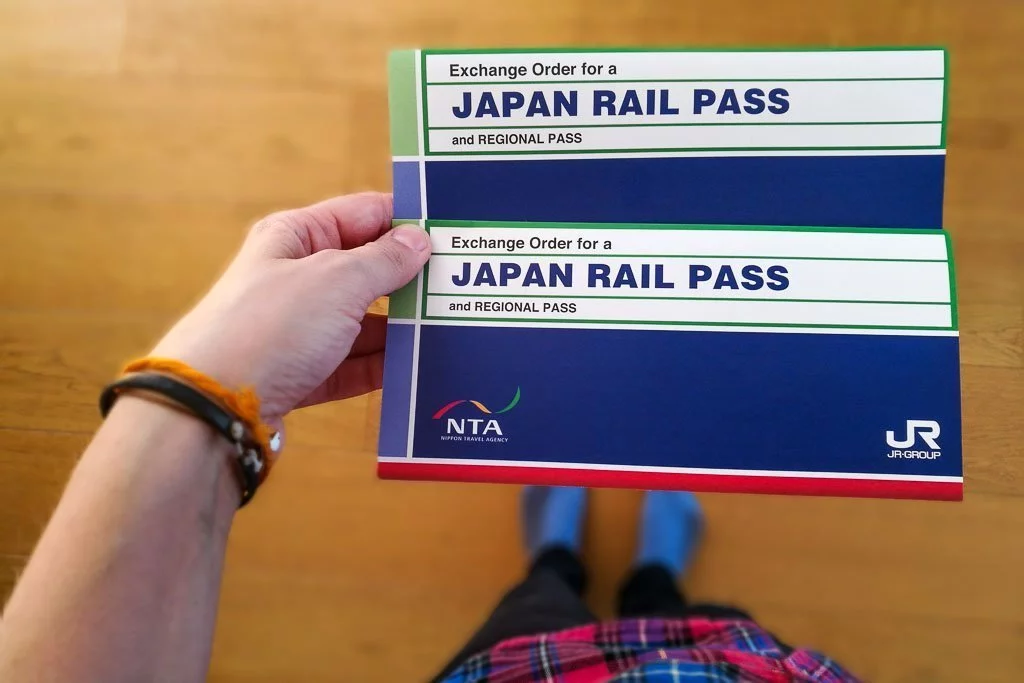
Entrance Fees in Japan
Many temples and sight-seeing attractions in Japan cost admission. This is usually only a few euros, but in three weeks it can easily add up to a rather high amount.
The entrance fee for temples is usually between 200 to 600 Yen (1,50 to 5 euros). More expensive are viewpoints, as for example in Tokyo and Osaka. Here the prices range from 600 yen (5 euros) to 3,000 yen (25 euros).
Especially the visit of the Robot Restaurant in Tokyo was expensive (65 euros per person). Such special things are always quite pricey in Japan. This is also true, for example, for a visit to a sumo wrestling match or a sumo training center (approx. 100 euros). But we didn’t do that.
Total entrance fees on our trip: 375 euros (for two)

Costs for flights to Japan
Of course, the costs at the destination are not the only thing, you have to come to Japan first. The prices for flights from Germany are not particularly expensive, but also not excessively cheap.
As so often, the best prices are offered by the Arab airlines. But it is also worth taking a look at European airlines such as Finnair. They are often just a little more expensive, but usually faster.
We paid 806 euros per person for our flight with Emirates from Hamburg via Dubai to Tokyo and back. With a bit of luck, this could also be a little bit cheaper, but a total of 800 euros is a realistic price for a flight to Japan.
We recommend the flight search engine Skyscanner when searching for the optimal flight.
Costs per person: 806 euros Total costs: 1,612 euros
Summary of our Japan travel expenses
And here is an overview of everything:
Accommodation: 2,845 euros Food and beverages: 1,300 euros Transportation: 1,242 euros Admission: 375 euros Flights: 1,612 euros
In total, we paid just under 7,400 euros for our entire trip to Japan, including the flight, that is 3,700 euros per person. The costs at the destination were about 275 euros for two persons per day.
Tipping in Japan
Tipping is absolutely not common in Japan. No tips are expected in restaurants, bars or taxi rides. Nobody will understand if you want to give a tip, so you better not. Otherwise it could actually be taken as an insult.
Apparently only in very expensive hotels it is common to tip the room service or a suitcase carrier. But we can’t confirm that.
Tips for saving money in Japan
We didn’t pinch pennies on our journey. Of course it could have been a bit cheaper here or there, but we didn’t fling away the money either.
You can also travel to Japan cheaper and we would like to give you a few tips on how to do that:
Tip 1: Overnight stay in a Manga Café
That sounds funny, but it’s actually not so bad.
There are often so-called Manga Kissas in Japan where you can rent a room to play computer games.
There is usually a shower and a very comfortable armchair or couch and you can also rent these rooms overnight.
This is definitely cheaper than a hotel in some places.
Tip 2: Get food from supermarkets
The three most popular supermarket chains in Japan are Family Mart, Lawson and 7/11. All three have a good selection of ready-made meals, sushi boxes and Onigiri, which are for example also eaten by many Japanese at lunch break.
The quality of the food is not that bad and it is much cheaper than in a restaurant. By the way, in all supermarkets you can get quite good coffee for the equivalent of 1,00 to 1,50 euro.
Tip 3: Travel in the low season
Most tourists come to Japan in spring and autumn. Then the weather is generally better and in spring you can see the famous cherry blossoms and in autumn many bright colors.
Overnight stays outside the main season are of course much cheaper. But you have to be prepared for hot, rainy summers or uncomfortable winter weather.
Our conclusion: How much does a trip to Japan cost?
Japan is definitely not a cheap travel destination. Compared to many other Asian countries, such as Thailand , Myanmar or Sri Lanka , Japan is extremely expensive.
However, compared to European destinations it is not that much more expensive. Japan is certainly not the first choice for budget backpackers, but it is definitely an option for everyone else.
Do you have any tips on saving money in Japan? How much did you spend on your trip to Japan? We are looking forward to your experiences and your comments.
How Much Does It Cost To Travel To Japan – Travel Budget Breakdown

One of the things that most travellers don’t take into account immediately when planning a trip is just how costly everything will end up being. From transport to eating to sightseeing and tour groups, it’s all fun and games when planning until it comes to crunch time and the numbers increase much more exponentially that you’d think.

Well, we’re here to alleviate some of that uncertainty for you. Japan has been visited by numerous people from all around the world, and is definitely affordable if you plan for your kind of budget. From luxe-travellers to discount-seekers, anyone and everyone can have a fun and enjoyable time in Japan. We’ll breakdown some of the more common costs that you should know about whilst visiting this wonderful country, and how various travels may go about certain things in different ways.
Accommodation Budget In Japan

Accommodation might be what you end up spending majority of your budget on. However, with the Japanese population as condensed as it is, and the increasing number of visitors dropping into Japan every year, you definitely be spoilt for choice.
Whether you’re used to the five-star service of 1000-thread count linen, private bathrooms with luxury spas, ocean views and in-house massage services, or you’re the type to happily drop down your backpack in an 8-person dormitory and make friends in the shared bathrooms, there are accommodation choices to suit all.
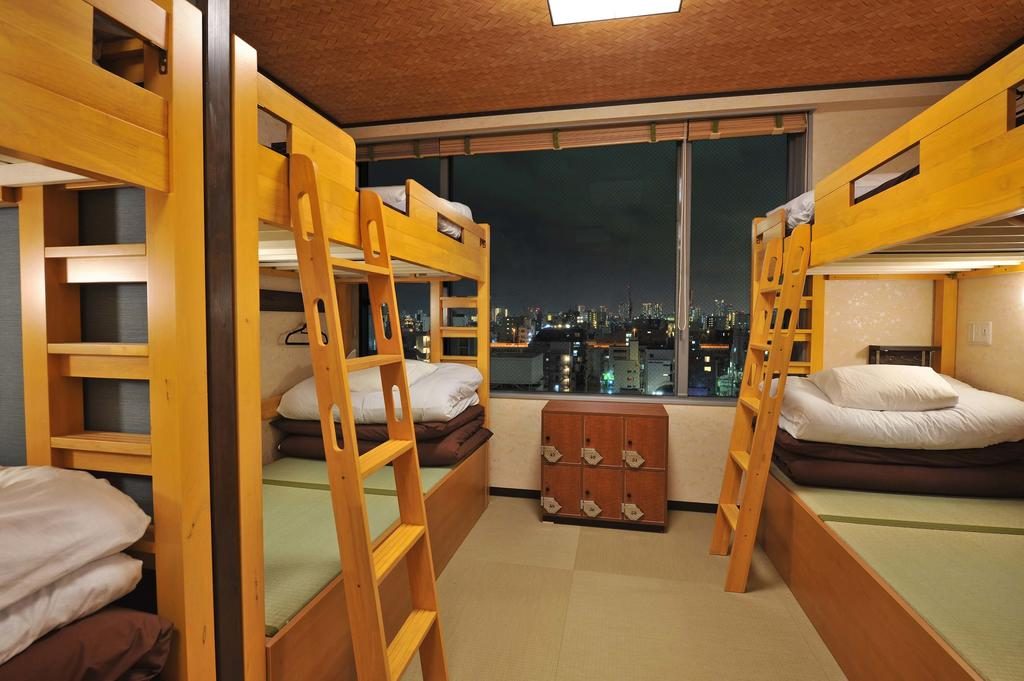
In saying that, if you’re more of a private person and don’t want to be sharing a room with a group of strangers, but definitely don’t have the budget for a fancy hotel, there are plenty of options at the fraction of the cost of high-end hotel where you will still be able to live comfortably, and likewise, if money is not necessarily an issue, but you want to experience a the lively atmosphere of a share-house or a unique hostel environment, there are many which accommodate for comfort over cost.
For example, in Tokyo , O3 Hostel is great for budget travellers who want just a bit of privacy, convenience, and are not fussed about small space (from $55USD for 2 people/night), whereas Japanize Guest House is the absolute no-frills accommodation for people who literally just want a place to sleep in a shared accommodation (from $17USD for 1 person/night). For something a bit more unique, Book And Bed Tokyo in Ikebukuro or Asakusa lets you sleep amongst bookshelves (if you’d like), or capsule-style bunks starting from only $27USD per person/night.

Similarly, for those who are used to the luxuries of a hotel, the ever popular Hotel The Celestine Tokyo Shiba is a great option; whilst it’s not too friendly on the wallet, all the amenities and in-house services provided is more than enough to make up for it, and the convenience of its location is second to none (from $170USD for 2 people/night).
Want something that’s scaled down a tad? Hamacho Hotel Tokyo is still located in a great location, with stunning modern features and amenities at almost half the price (from $93USD for 2 people/night).

There are options for absolutely all kinds of travellers out there. To find your ideal travel accommodation in Japan, you can also read these blog posts about Tokyo and Kyoto :
- Where to stay in Tokyo
- Best hostels in Tokyo
- Best capsule hotels in Tokyo
- Where to stay in Kyoto
- Best hostels in Kyoto
- Best capsule hotels in Kyoto
And if you are looking for more traditional places, you can stay at a Ryokan during your trip to Japan. More info in these articles:
- What is a ryokan
- Ryokan Collection
Transportation Budget In Japan
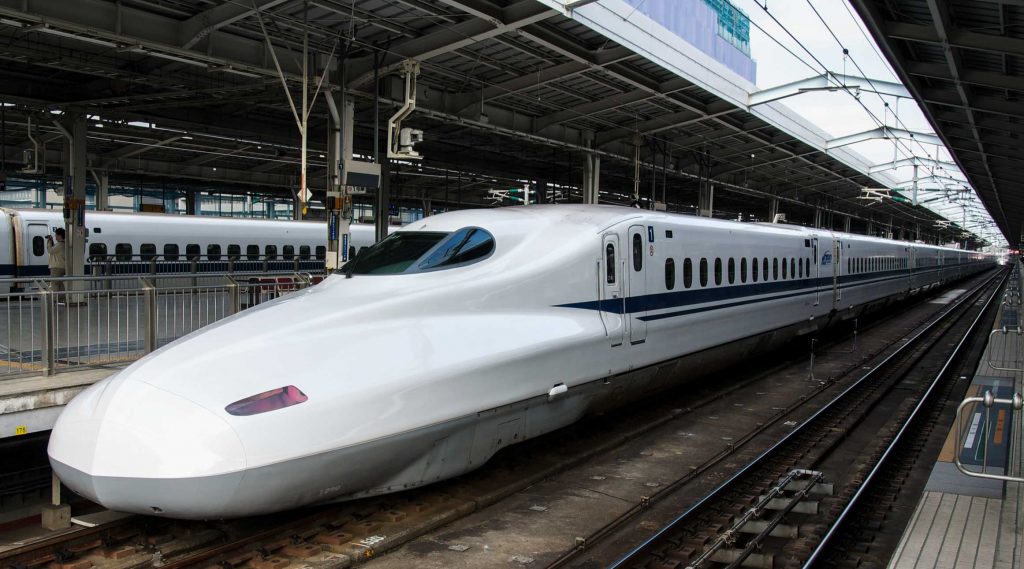
The transport system in Japan is probably one of the best (if not the best ) in the world. Trains and busses are both frequent and punctual, commuters are respectful and clean, and they travel at a speed not yet reached by many other first-world countries. You’d think that with transport technology this advanced, costs would be astronomical, but that’s hardly the case.

In Tokyo, for example, the cost of using the metro train system is extremely affordable, with certain short-distance rides costing only 200yen (approx. $1.85USD). That all depends on the destination, of course, as some rides within the city can go up to 700-800yen (approx. $7.50USD).
We recommend planning your itinerary so that you visit areas that are close to each other on the same day to save the cost of transport. Hyperdia is a very useful website when it comes to planning a train trip in Japan.
Also, a lot of cities in Japan are walkable, so you can choose to explore it on foot rather than utilise the trains. Most city buses charge 210yen (approx. $2USD) for adults for a ride. To get an approximation of cost, we recommend using Google Maps, punching in your origin and destination, and it’ll provide you information on the timetable, which type of transport to catch, where to transfer, and a rough cost.
We also highly recommend purchasing a prepaid card (e.g. a Suica or Pasmo), loading money onto it, and using it to tap on and off at the stations and most buses. It’s convenient, lightweight, and you won’t have to worry about having the right change.

In terms of long distance travel, if time is not an issue, then you can get from prefecture to prefecture for less than $20USD (if you travel off-peak and are comfortable on highway buses). Companies such as Willer Express provide bus transportation all around Honshu for incredibly cheap prices during their sale periods, and decent prices even during peak periods.
However, they’re not as comfortable nor as quick as flights. If you’re planning on traveling from one side to the other, have a look at budget airlines such as Peach Airlines, Vanilla Air, and Tiger Airways.
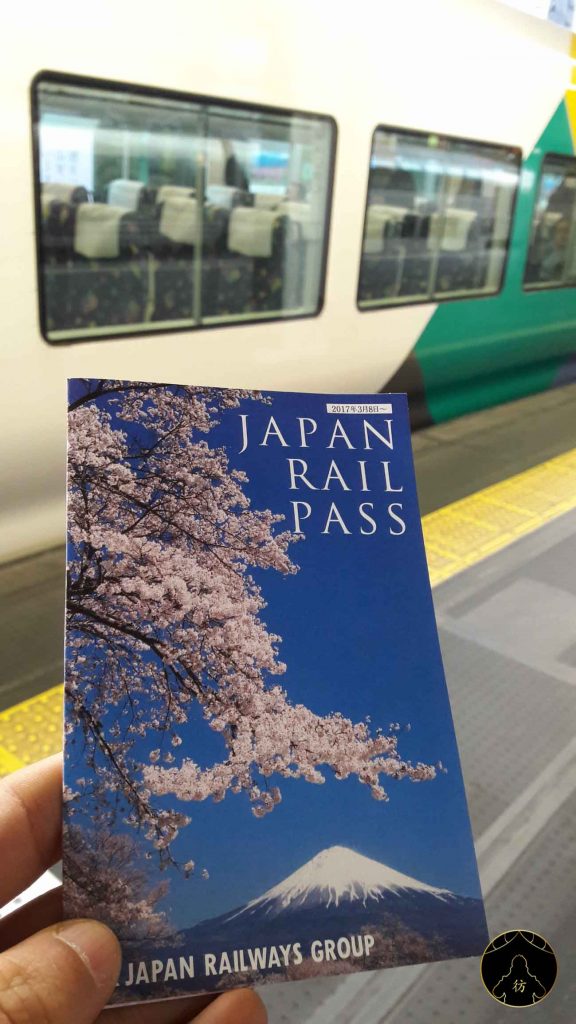
If you are planning to do a round-trip around Japan and end up back at your original destination (normally Osaka or Tokyo), then we highly recommend considering the JR Pass .
This pass is designed specifically for foreign tourists visiting different major cities around Japan. A trip between Osaka to Tokyo and back again, for example, will already cover the cost of the pass, and so all trips in between will essentially be free (as opposed to purchasing individual tickets whilst you’re there). Read more about the Japan Rail Pass here.
How Much Is The Food In Japan?
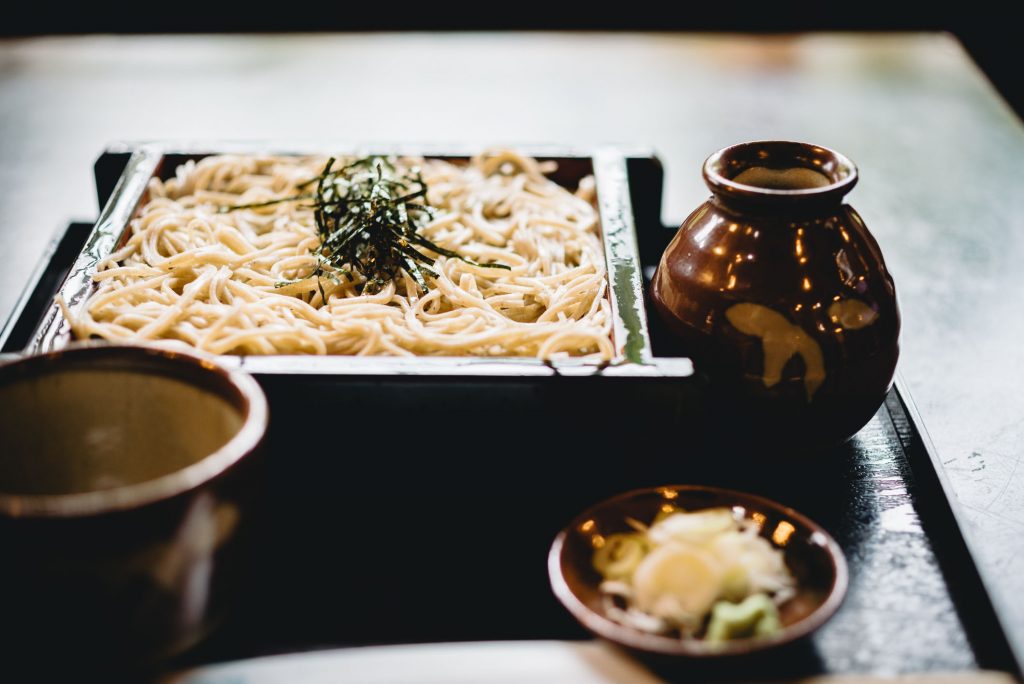
Food is a major, major factor to consider whilst traveling. Some people might say that the only reason why they travel is just so that they can trying different food from around the world. We understand just how important planning for food can be, so we made sure that we’ve researched thoroughly enough to say that you can definitely, positively, absolutely, travel Japan on any budget and still taste the best of what it has to offer.
From thousands of budget restaurants to nation-wide chain stores to budget food hacks in convenience stores, you’ll actually never run out of things to eat. And for the gourmet food travellers? Well, let’s just say that Tokyo is one of the biggest food meccas of Asia, and you’ll be hard-pressed to define a single list of restaurants to try without making a promise to yourself that you’ll be back in the future to try more.
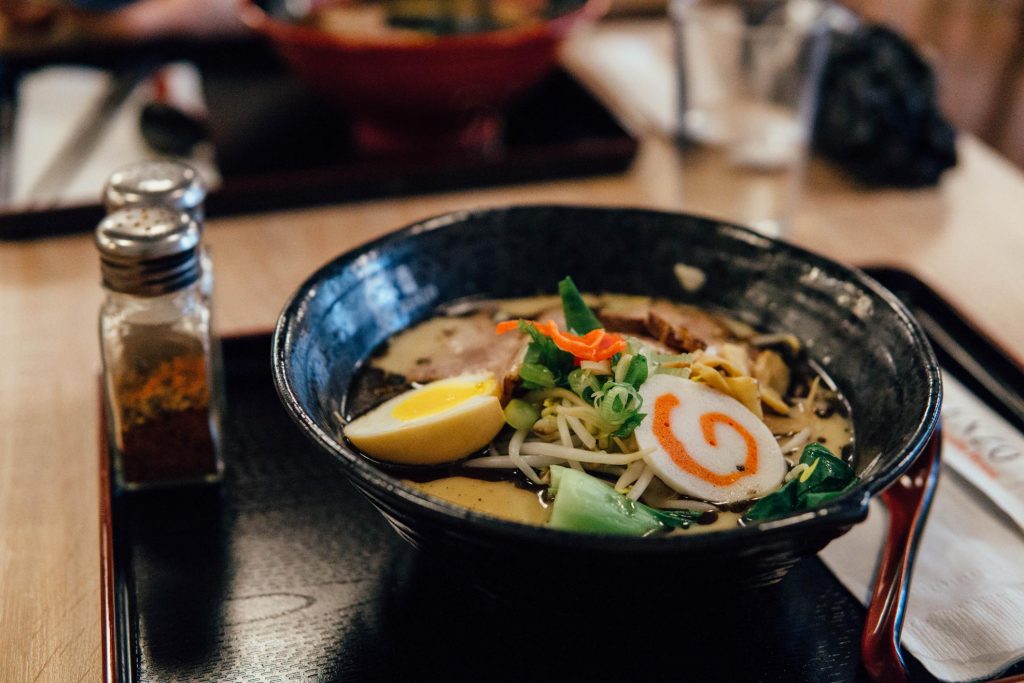
If we were to break down a rough budget for food, we’d say you’ll probably need around $8-$10USD for a breakfast and lunch meal here, at a regular restaurant. Dinner would probably be around the $20USD mark. When you also add in the fact (and we say fact because it not a mere observation but a complete 100% truth), that you will be buying snacks and drinks to try throughout the day, then you’re looking at a budget of around $60USD a day on food. THAT IS FOR THE AVERAGE TRAVELER.
If you’re on a budget, you can honestly halve that amount and still get three square meals a day plus snacks, and if you’re all about the high-life, well, you can double, triple, quadruple that if your wallet extends that far and literally dine on wagyu or Kobe beef and fresh sashimi all day long.
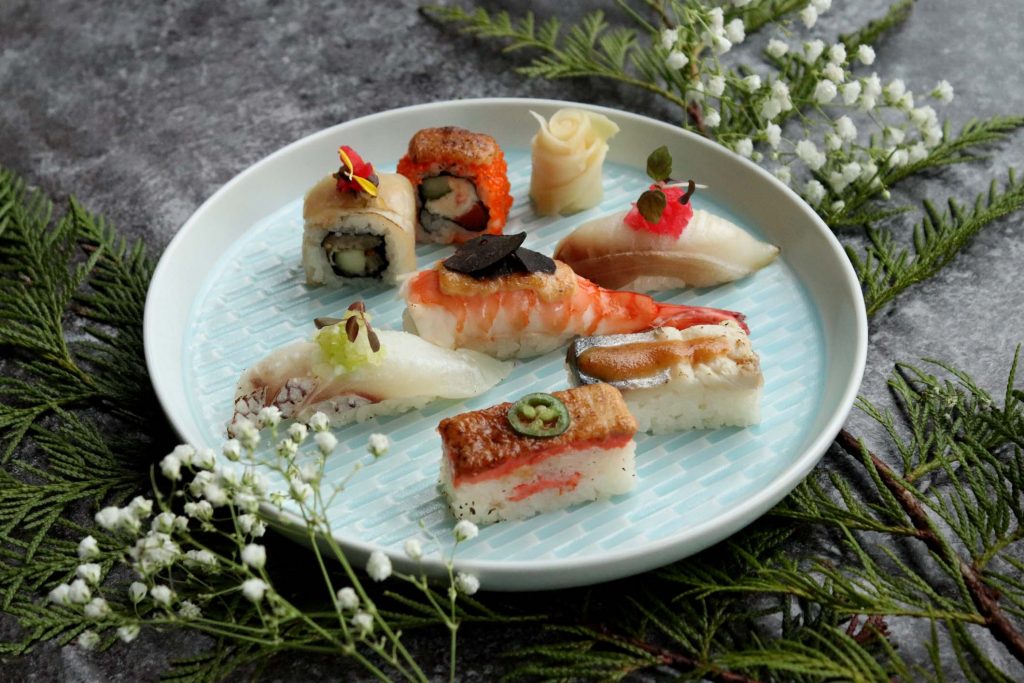
Regular Japanese dishes such as ramen, set menus, conveyor belt sushi, curry, udon, etc, are available almost everywhere, and varying prices. You can even try Michelin-starred restaurants offering these dishes and you won’t come close to breaking the bank (e.g. less than 1000yen for a meal!).
If you’re after a full budget experience, try to look for chain restaurants such as Yoshinoya, Sukiya, Matsuya, and Nakau, who make to-die-for gyudon bowls starting from only $3-4USD! There’s also Kura Sushi, who does conveyor belt sushi at 100yen per plate, and Hanamura Udon which is a chain that originated from Shikoku, specialising in sanuki udon. These are a few of the more popular chain budget restaurants, however, there are so amny more literally sprinkled all over Japan if you look hard enough.

For those who are after a full gourmet experience, an epic dining experience could set you back up to $70-$100USD if you’re after top quality Japanese beef with a side of all-you-can-drink beers (referred to as nomi-ho-dai!). We’d like to think ‘you only live once!’ and incorporate at least one of these dining experiences into the trip.
- Grab a quick breakfast at the konbinis (convenience stores) – their fresh range of sushi, sandwiches, bakery food, and cakes can absolutely match specialty restaurants, and they’ll only cost a fraction of the price! Plus, they have such a wide variety so everyone will be able to enjoy something there.
- If you want to try something at a restaurant but its price is too high, try heading there for lunch – most restaurants in Japan offer a lunch set at a fraction of it’s dinner price.
- Popular places such as Michelin-starred restaurants that offer decent prices are usually packed from the moment they open until the moment they close, so it’s best to either get in early or later in the day, and if not, then be prepared to wait a while (bring a scarf and beanie if it’s winter, and carry a bottle of water in summer to stay hydrated, the lines can get exceptionally long!).
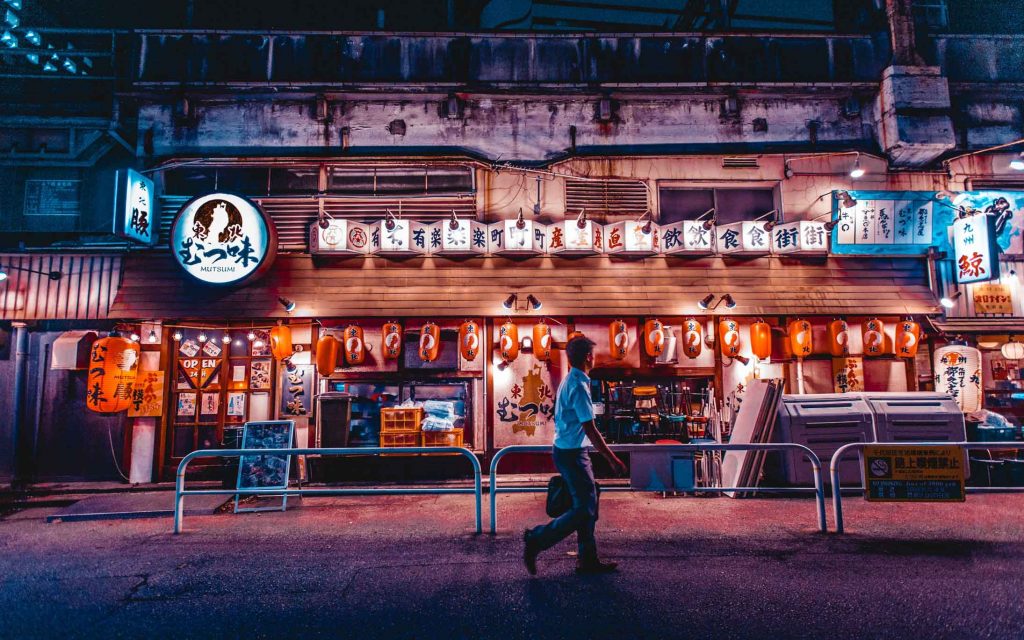
How Much Does It Cost To Go Out In Japan
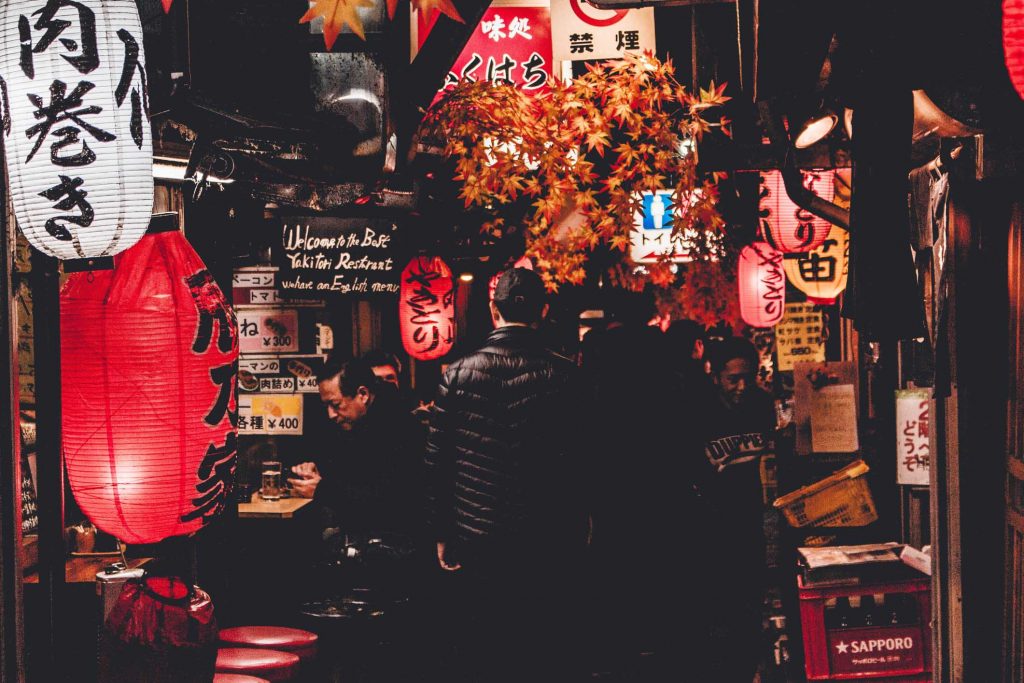
Going out for a night of drinking, dancing, bar hopping, whatever it may be, will be highly different in Japan than most countries. The culture is so unique, so expect to follow some less than conventional rules.
For example, no one drinks or eats on the streets in Japan, it is considered impolite, so you definitely wont see any drunkards stumbling along in the dead of the night whilst chugging down a wine bottle. Also, kebabs after a big night are highly encouraged, but make sure you smash it at the stand before walking anyway.

The average price for a bottle of beer at a restaurant in Tokyo is roughly 600yen, which is just under $6USD. That’s pretty standard and on the cheap side. However, if you know you can get your money’s worth, we highly recommend getting the ‘no-mi-ho-dai’ (all-you-can-drink) option that most restaurants (especially Japanese BBQs) offer.
For a set price, you can order as many alcoholic and non-alcoholic drinks as you like (please check if the restaurant has a set menu of drinks to order from, or if they let you order from the entire list of drinks that they have).
We have found that this option has helped many people create the best memories. At most places, you’re looking at approximately $15-$20USD for the all-you-can-drink option, on top of your food cost.
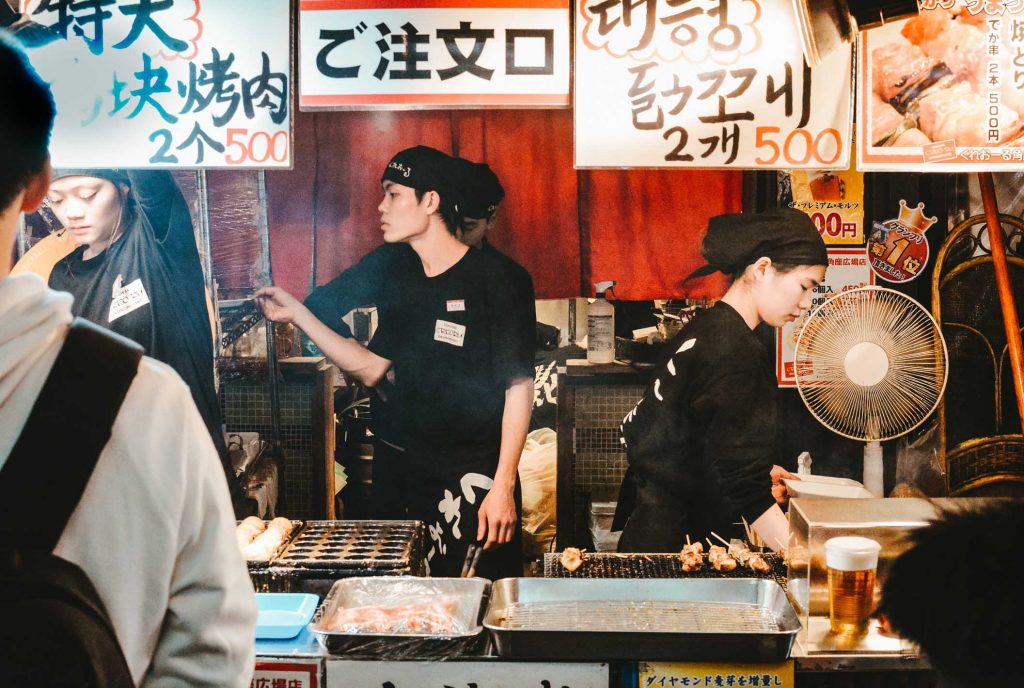
Another option to have a great night out (and this one’s not just for the budget seekers), is to have a hotel party and slug down the Strong Zero (9%) cans from the convenience stores.
These absolutely potent cans of drinks go down well, there are a plethora of flavours to choose from, and they’re so cheap, starting from only $2-$3 a can, depending on the mls and flavours. You can also bulk-buy them if you’re planning on having a big night out at stores such as Don Quijote.
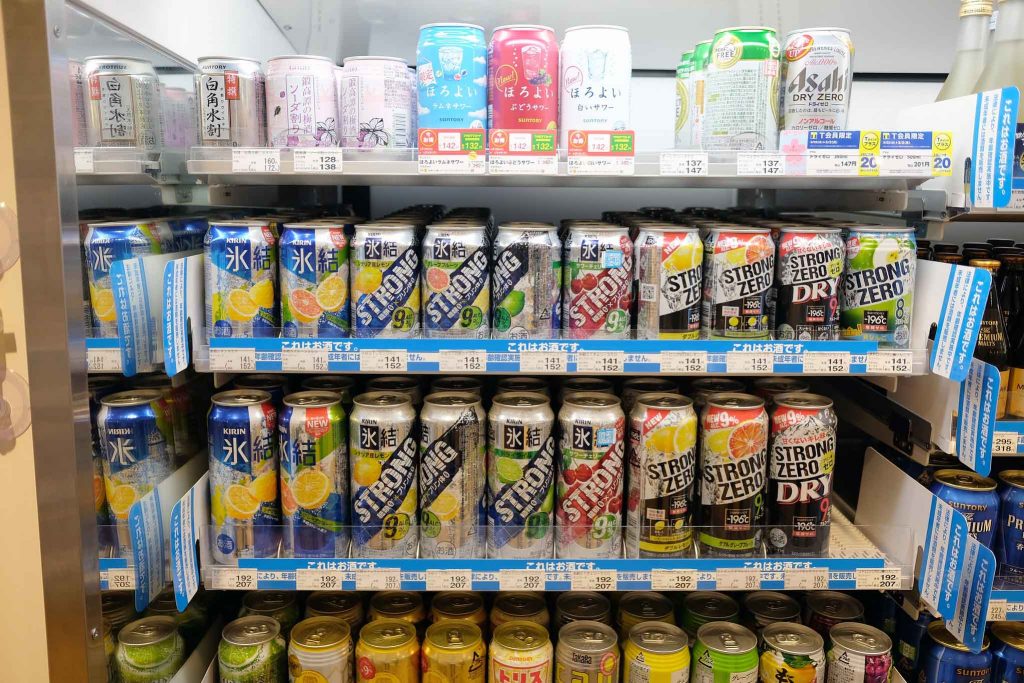
A night out in Japan will likely consist of karaoke, which is a long-time favourite pastime for many of the locals, and a new favourite pastime for many foreigners who fall in love with the fun and exciting yet inexpensive activity that anyone can enjoy.
Similar to restaurants, most karaoke bars will offer the all-you-can-drink option, so you can have a free flow of alcohol to fuel your inner Whitney Houston all night. This can typically start at around $14USD for 2 hours per person on top of the charge for the karaoke bar, which might start at around $6-$10 per person, per hour.

If you’re after a classier affair, for example, whiskey bars, there are plenty to check out in Japan – they pride themselves in housing some of the world’s best whiskey after all. Generally, you can try various bars that sell them for roughly $30USD a glass. Some might having a lower starting price at roughly $20USD a glass, and some might go into the hundreds. It’s best to search type of bar and drinks you’re after, and look up the menu price to avoid getting a shock when the bill comes around!

If drinking is not your thing, there are plenty of activities to enjoy without bingeing on the alcohol. In most cities you can go and see a movie (only certain ones have translation though, so check before you buy a ticket!), you can go to a batting centre to test your batting skills, you can go play at the arcades, you can go to a VR centre and experience things you’ve never even heard of before.
These are not too expensive (movie tickets can go from $12USD, batting centres will charge a measly $4USD for a number of balls, arcade games normally cost around $1-$2 for one round, and VR stadiums usually charge around $40-$50 for a few different experiences) and no one’s ever come home from experiencing zombies in VR mode and called it boring.
How About Shopping In Japan?
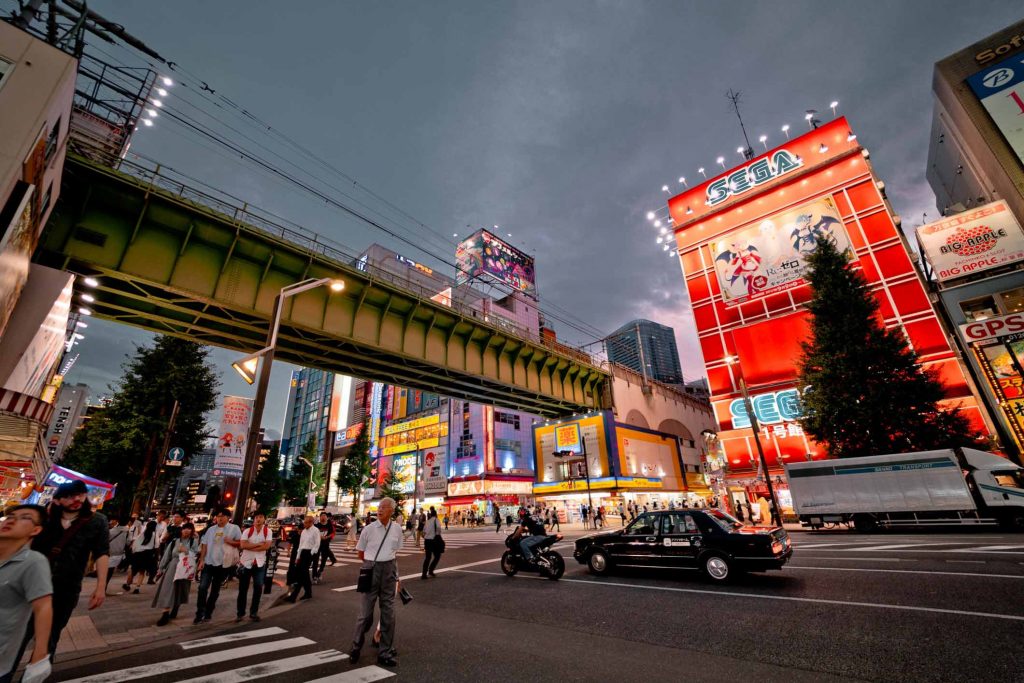
Whilst some travellers absolutely deter from shopping whilst traveling, there’s something therapeutic about purchasing items in Japan.
They will sell ornaments the size of your fingernails, so intricately designed that you can’t help but purchase them as gifts; alongside the same shop might be an anime store selling thousands of such cool mangas and merchandise that even foreigners who have no idea what they are about will be intrigued to purchase one just to display back at home; alongside that shop might be a jewellery and accessory store that sells only handcrafted items that will make great presents for mums and sisters back home.
Japan’s shopping culture and scene is one in a million, and even if you try to avoid it, it will be hard to go home without exploring at least one shopping district centre.

Depending on what you’re after and who you’re buying it for, purchasing gifts from Japan can be as easy as 1-2-3 and as cheap as chips. Literally. One of the most popular souvenir gifts that foreigners take home these days (and the trend is showing no signs of slowing down), is Japanese snacks.
Over the past few years, the spotlight on Japanese snacks has really taken off, and people from all over the world visit this country with the thought of trying as many unique flavours and items as they can, intrigued that a simple thing such as a snack can hold so much potential in Japan.

People flock to bargain stores such as Don Quijote and Canstar to bulk buy food items to bring back to their home to share amongst their family and friends, and we’re totally behind this movement. Japan’s snack game is strong, and we support the idea of bringing joy to your family and friends and giving them a slice of this wonderful country without breaking the bank.
A packet of chips here can cost as little as $0.80USD, candy might set you back $0.50USD, and their wonder senbei crackers might dig a deeper hole in your wallet at $1USD for a serving. There are literally thousands of other snack products you can filter through and choose from. Just organise your time properly and get it before heading to the airport to go home – we all know how expensive that shopping trip will cost you if you end up down that route. If you’re after a bit of Japanese fashion, then everywhere from major city shopping malls to boutique shops in smaller towns and villages are worth your time. One of the most famous neighbourhoods for fashion in Tokyo are probably Harajuku with its Kawaii fashion culture and Shibuya .
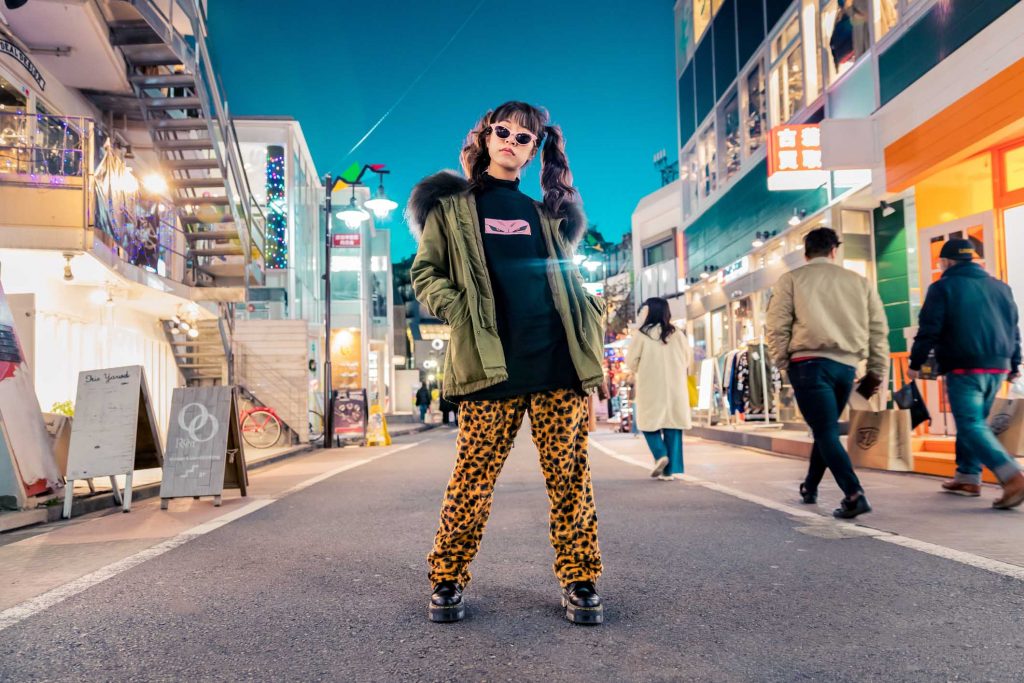
The fashion is fast in Japan, and it stops for no one. They’re an incredibly aesthetic people (in terms of fashion), and often pride themselves in being able to choose comfort and style all in the same outfit. You’ll see this is prevalent in some of their global brands such as Uniqlo, and in the unique styles of their boutique stores.
Prices are generally quite reasonable – you’d pay what you’d expect to pay back at your home country.
However, areas like Ginza in Tokyo house some of the biggest luxury brands in the world, and here, you’ll be able to drop thousands of dollars within minutes if that’s what you’re after.
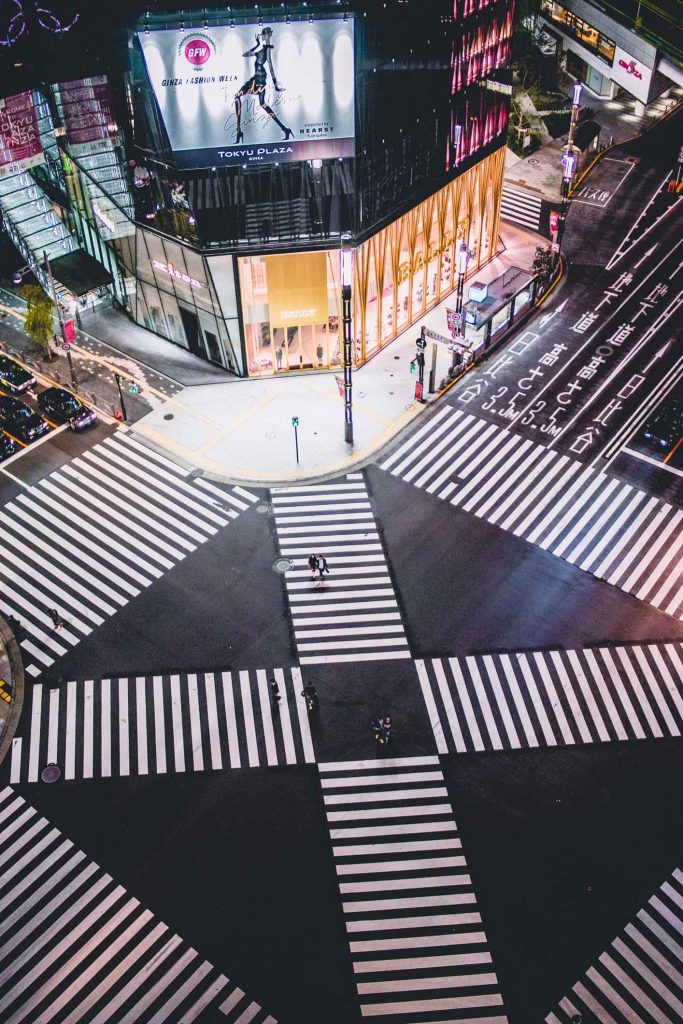
We hope this guide has given you some insight as to how much you need to save to have a good time in Japan. We’re firm believers than people on all types of budgets can visit Japan and have an amazing time, regardless of how much they spend on food or where their accommodation is.
It’s an extremely forgiving, wholesome, inclusive country, and whilst our estimates of prices are fairly accurate, you are the person who knows your budget best – just make sure you don’t splurge on unnecessary things, but also treat yourself when the time is right.
If you are looking for more tips on have to reduce your travel budget when you visit Japan, feel free to read this blog post too: Travel to Japan on a budget .
PS : You can find all our travel tips about Japan here: Japan Travel Blog .
dear sir, that’s wonderful information very helpful thank you very much, my wife and I are still looking for a travel company that can provide tours of Japan best gardens – probably eight or ten that we can visit together with hotels over two week in 2021 if the pandemic has slowed or finished by then. we would be most pleased if someone can list a few tour companies that arrange tours. thank you John Brooks
Japan is finally not as expensive as I thought! Thank you for the tips
Amazing writing!
Leave a Reply Cancel reply
Your email address will not be published.

What To Do In Fukuoka – 9 Gorgeous Places You Need To Visit

What To Do In Kamakura – The 10 Most Beautiful Spots To Visit
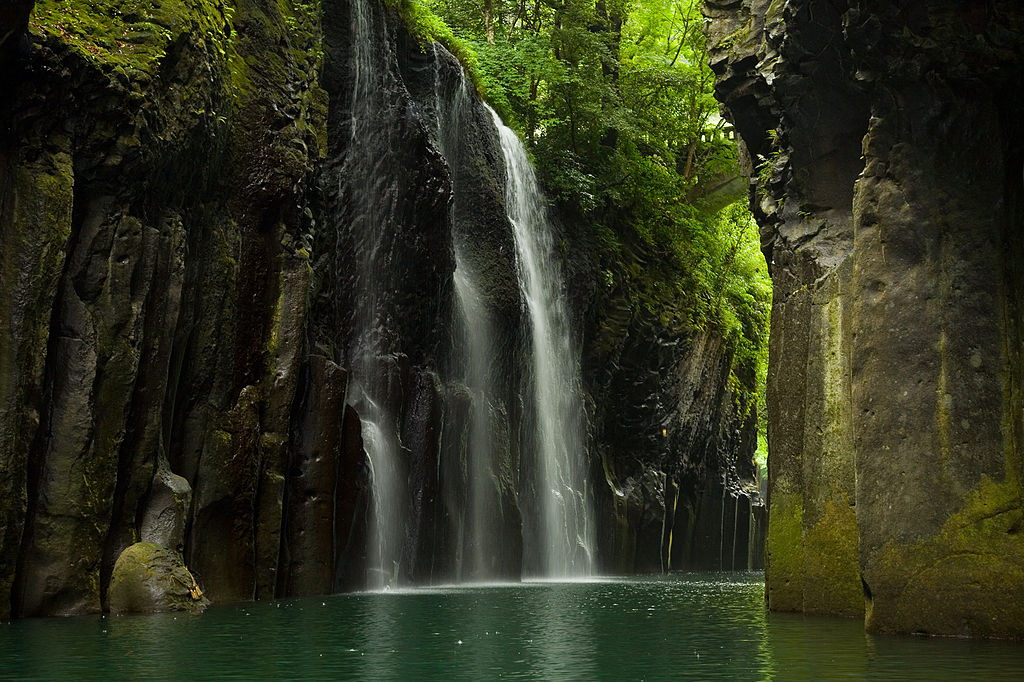
What To Do In Miyazaki – 8 Unmissable Things To Do
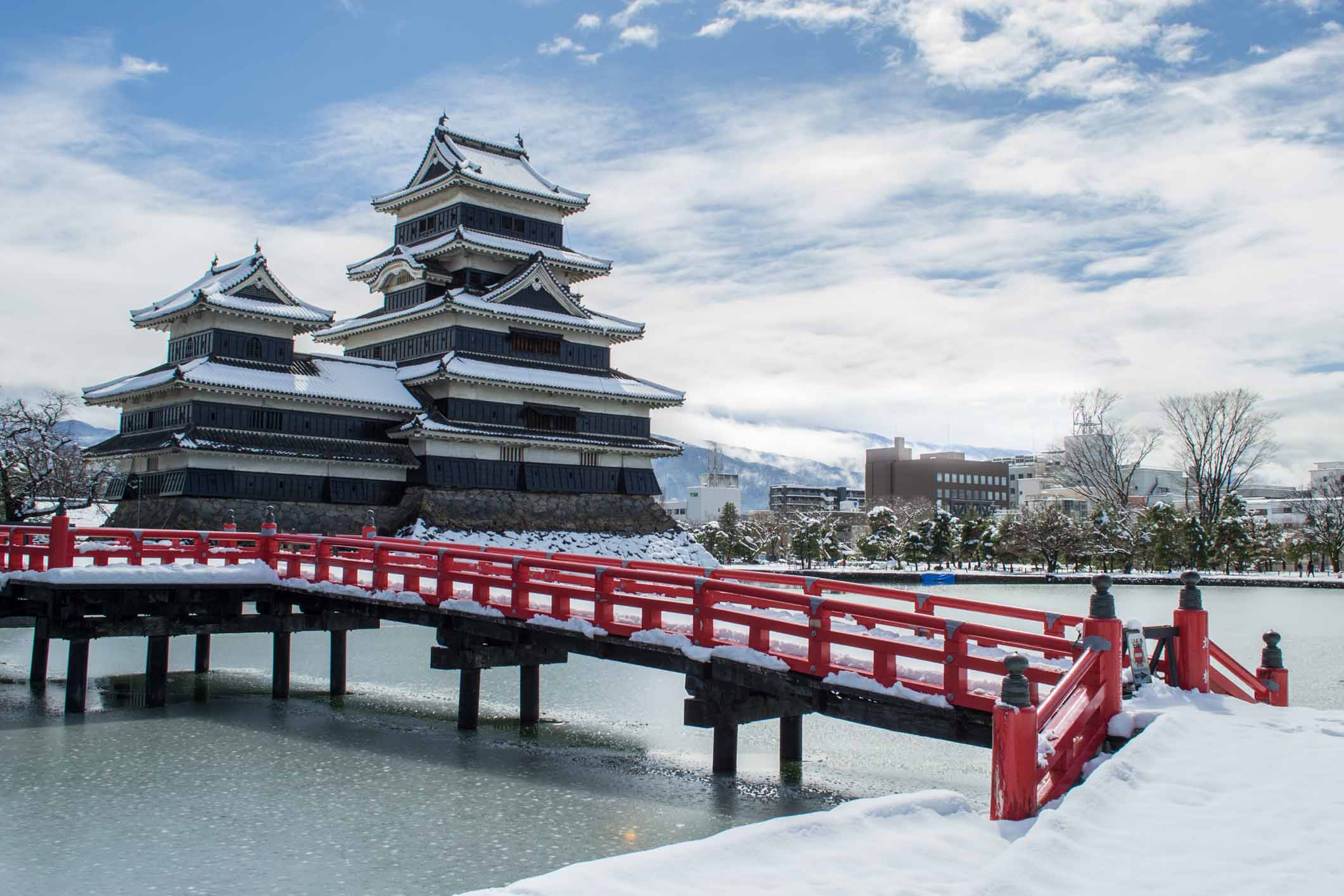
What To Do In Matsumoto – 5 Gorgeous Spots You Can’t Miss
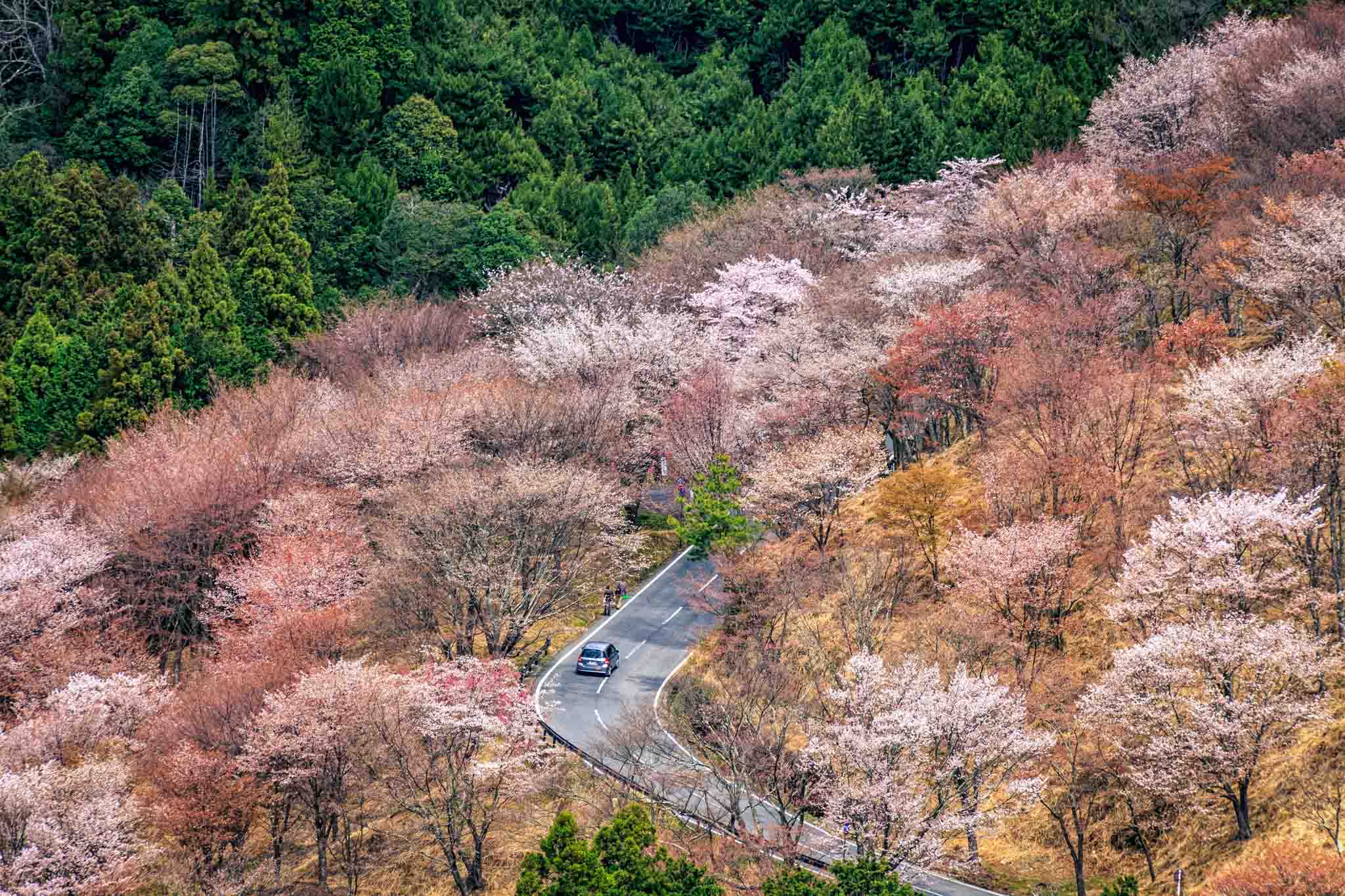
The 10 Most Charming Traditional Villages In Japan’s Countryside
Japan on a budget: 17 ways to get more for your yen

Mar 28, 2024 • 7 min read

These top tips to low-cost living can help you stretch your budget on a trip to Japan © Monzenmachi/Getty Images
Japan has a reputation as an expensive place to travel, but it’s an image that doesn’t hold up on the ground.
With a little strategy, a visit can be very reasonable – budget-friendly, even. Many of the country’s major sights, for example, cost nothing, and free festivals take place year-round.
With these top tips on finding the best-value places to stay, the right transportation tickets and places to eat that suit all tastes and wallets, you can make your yen go further on a visit to Japan .
A guide to daily costs in Japan
- Capsule hotel room: ¥4,000 (US$30)
- Basic room for two: ¥8,000 (US$60)
- Self-catering apartment: (including Airbnb) ¥6,000 (US$45)
- Coffee: ¥400 (US$3.50)
- Sandwich: ¥300 (US$2.20)
- Beer/pint at the bar: ¥600 (US$4.50)
- Dinner for two: ¥5,000 (US$38)
- Hour of karaoke for two: ¥2,000 (US$15)
1. Consider staying in a business hotel
These economical (and, to be honest, rather utilitarian) hotels offer the best prices for private rooms with en suite facilities.
It’s possible to find double rooms for as low as ¥8,000 (and single rooms for as low as ¥6,000), though these will be a little more expensive in cities like Tokyo , Kyoto and Osaka .
Look for places that include a free breakfast buffet – they can be substantial enough to keep you going for hours.
2. Book direct at a guesthouse or hostel
Japan has fantastic guesthouses and hostels all over; not only are they generally clean and well-maintained, but friendly English-speaking staff are usually on hand to offer near concierge-level service.
A double or single room is comparable to a business hotel (but usually has shared facilities); dorm beds cost around ¥3,000.
Some places do charge extra for towel rentals, so you can save a few yen by bringing your own. Note that rates are often slightly cheaper if you book directly rather than through a booking site.

3. Sleep in a capsule hotel in the cities
Capsule hotels, which offer small rooms with enough space for just a bed, provide a budget-friendly place to spend the night.
A capsule berth costs slightly more than a dorm bed in a hostel (¥4,000 per night), but you get more privacy.
You probably wouldn’t want to stay every night in a capsule, but they’re good for saving money in cities where hotels are pricier.
4. Go camping in the summer months
If you really want to do Japan on the cheap, you can rely on its network of well-maintained campsites in rural or resort areas; prices range from ¥500 to ¥1,000 per person or tent. Note that many sites are only open in the summer.
5. Swap a night in a hotel for an overnight bus ride
Long-distance buses, like those operated by Willer Express , are the cheapest way to get around, and longer routes have night buses, which saves a night on accommodation. There are also bus passes, which can make this an even cheaper option.

6. The Japan Rail Pass is a great travel bargain
Like the famous Eurail Pass, the JR Pass is one of the world’s great travel bargains and is the best way to see a lot of Japan on a budget.
It allows unlimited travel on Japan’s brilliant nationwide rail system, including the lightning-fast shinkansen (bullet train).
There are also more regionally specific train passes that are cheaper, so examine your itinerary carefully before deciding. Purchase a pass online or from a travel agent like JTB in your home country.
7. Ride local trains for less with the Seishun 18 Ticket
The Seishun 18 is another great deal, but with very specific conditions: for ¥12,050, you get five one-day tickets good for travel on any regular Japan Railways train (meaning not the shinkansen or any high-speed limited express trains) during a limited period of a few weeks.
The Seishun 18 Ticket is only available at certain times during the year – during school holidays (the ticket is designed for students, but there’s no age cap) – and can only be purchased from JR ticket windows in Japan.
If the timing works, and you’re a fan of slow travel, this is a unique, ultra-cheap way to get around in Japan .
8. Consider renting a car to go beyond the cities
Highway tolls and petrol in Japan are expensive; however, renting a car can be economical if you’re traveling as a group or family, or are plotting an itinerary that takes you away from major rail hubs.
9. Take domestic flights with low-cost airlines
Japan has several budget carriers, like Peach , Jetstar and Air Do , that offer bus-like pricing on some routes – just be sure to factor in the time – and cost – of going to/from the airport.

10. Japan’s shrines and temples are free to visit
The vast majority of Shintō shrines in Japan cost nothing to enter. Likewise, the grounds of many temples can be toured for free (often, you only have to pay to enter the halls or a walled garden).
11. Eat cheap food and meet locals at a traditional festival
Throughout the year , festivals take place at shrines and temples and through city streets. They’re free, an excellent way to see traditional culture come alive, and are well attended by cheap food vendors.
12. Opt for hikes and walking tours
Going on a hike or a trek is free and can be the most rewarding part of your trip: explore an up-and-coming city neighborhood , walk old pilgrimage trails or rural lanes, or get up into the mountains in one of Japan’s national parks .
Japan’s cities, especially Tokyo, have some fantastic buildings designed by many of the big names in Japanese architecture. With a little bit of planning, you could chart your own architecture tour. Ask at a tourist information center or your accommodation for suggestions.
13. Spend time relaxing in the city parks
Urban parks are generally free to enter (and some gardens are, too) and are popular with locals on weekends; pack a picnic and settle in for an afternoon of people-watching. If you time your visit right, you could be bathing in the beauty of Japan's cherry blossoms .
14. Shop for cheaper goods at a local market
Many seaside towns have fish markets, some rural spots have morning markets, and some cities still have their old-fashioned open-air markets. Visits here are a great way to connect with local culture and are often a source of cheap, fresh food.
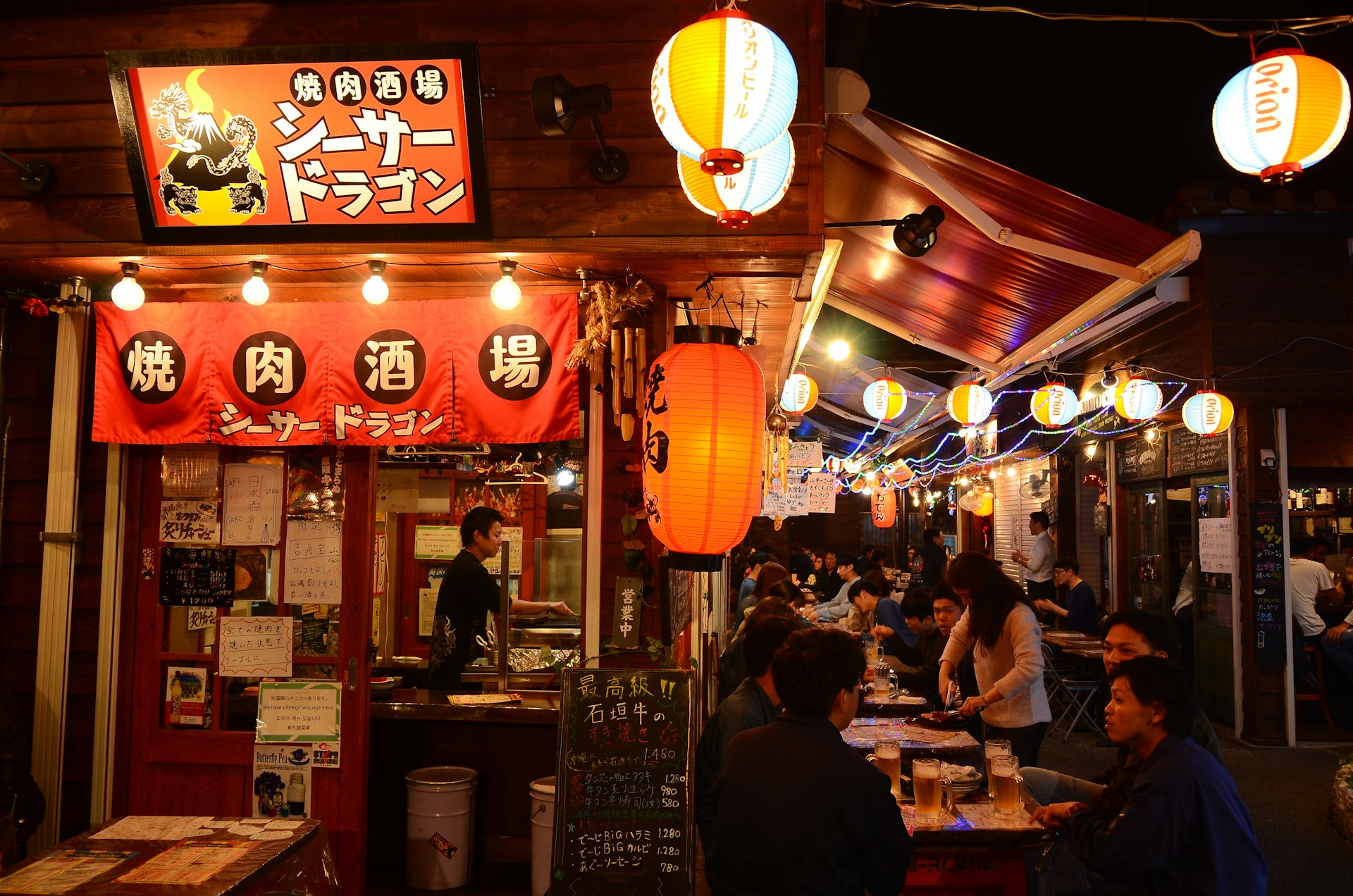
15. Choose the right dish in the right place to save money
You can get a good, filling meal in shokudō , Japan's answer to the greasy spoon, for under ¥1,000. A steaming bowl of tasty ramen can be picked up in many places for as little as ¥600.
Tachigui (stand-and-eat counter joints) sell soba (buckwheat noodles) and udon (thick white wheat noodles) for even less – starting as low as ¥350 per bowl.
Many upscale restaurants in Japan offer a smaller course at lunchtime for significantly less than they charge at dinner, so for a bargain deal have your larger meal then. In all restaurants in Japan, tea and water are complimentary, and tipping is not required.
16. Bentō are a budget alternative to a meal out
These "boxed meals," which include a variety of dishes, can be picked up for under ¥1,000 at supermarkets. Department store food halls sell gourmet ones for a little bit more; visit just before closing to buy them on markdown.
17. Get everything you need and more at the convenience store
Convenience stores are the best friend to all budget travelers. They stock sandwiches, rice balls, hot dishes and beer, all of which you can assemble into a very affordable (if not exactly healthy) meal. Accommodations always have kettles, so cup noodles are always an option.
Keep planning your trip to Japan:
Save this guide to the top things to do in Japan . Find out what to expect during every season from cherry blossoms to winter skiing . Before you book your trip, read these t op things to know before you go . Do you need a visa? Discover more here. Want to see Japan by train? Railway enthusiast John Walton shares his advice.
This article was first published May 2012 and updated March 2024
Explore related stories
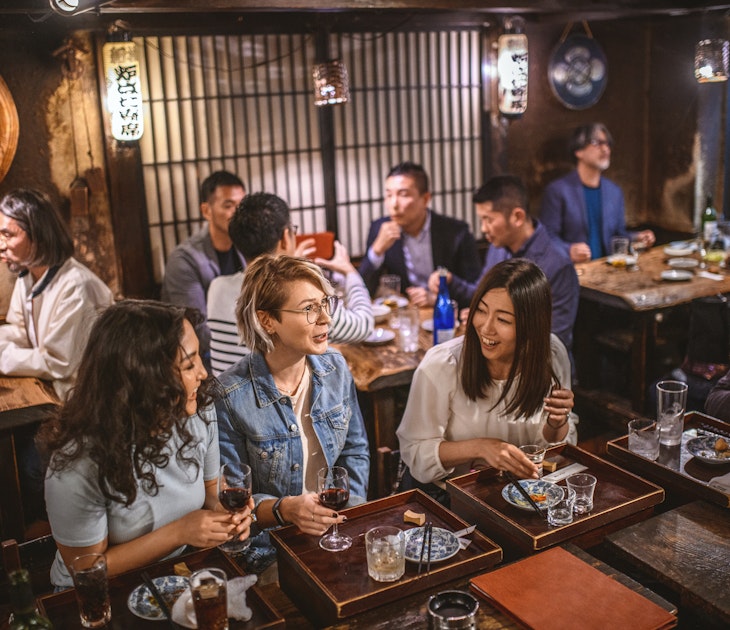
Budget Travel
Mar 23, 2024 • 7 min read
Tokyo is expensive but you don't need to max out your credit card to enjoy. Our insider tips and tricks will stretch your yen and save your bank account.
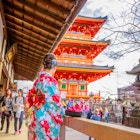
Dec 10, 2023 • 6 min read

Oct 20, 2023 • 13 min read

Jan 29, 2020 • 9 min read

Jan 12, 2020 • 5 min read

Oct 28, 2019 • 19 min read

Apr 14, 2024 • 6 min read

Apr 3, 2024 • 17 min read

Apr 2, 2024 • 10 min read

Mar 31, 2024 • 7 min read
- Work With Us
- Blogging Bootcamp

- Van Conversion Academy
- Campervan Shop
- Campervan Rentals
- Plan a Trip
- Itineraries
- Destinations
- Responsible Travel
- Family Travel
- Budget Travel
- Scuba Diving
- Travel Credit Cards
- Digital Nomad
- Teach English Abroad
- Blogging Resources
- Income Reports
- Travel Shop
- Meet Katie & Ben
- About Two Wandering Soles
- Personal Stuff
- Portfolio & Press
Japan Trip Planner [2024]: How to Plan Your First Trip to Japan
Home » Blog » Japan » Japan Trip Planner [2024]: How to Plan Your First Trip to Japan
This information-packed Japan trip planner has the answers to all your questions. Find out the best places to visit, which Japanese foods to try, and how to ride the bullet trains. All the research is done for you to assist in planning a trip to Japan.
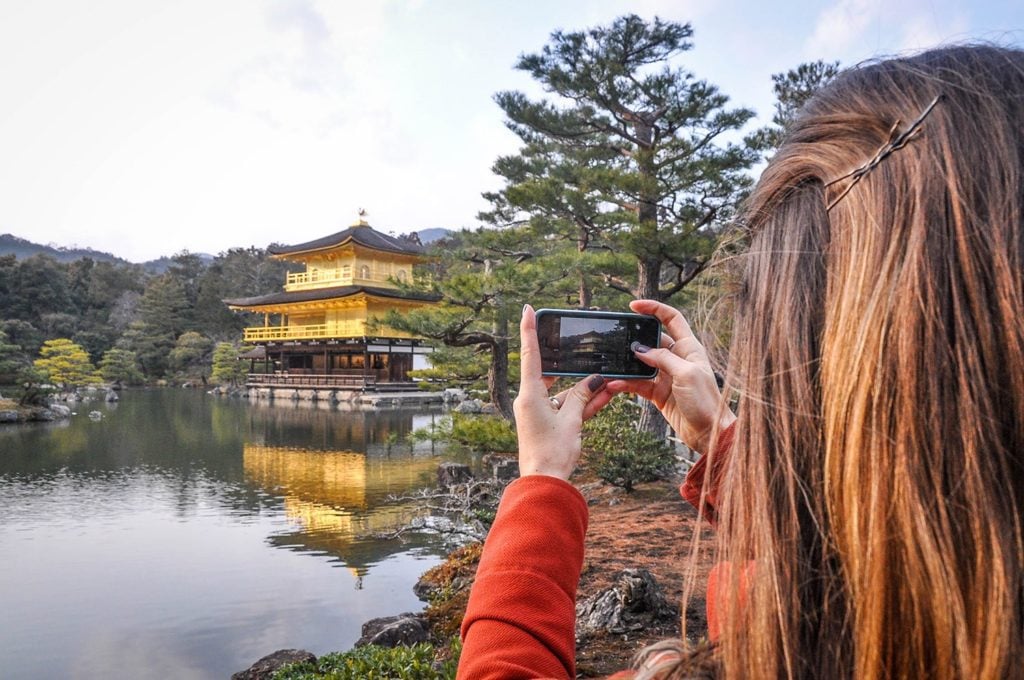
If you have been dreaming of traveling to Japan and want to get serious about planning your vacation, this Japan travel planning guide is packed with all the tips and information that you’ll need to know before your trip to the land of the rising sun.
We’ve traveled to Japan 3 times (and counting!) and have picked up plenty of insider tips. From which foods to try, to how much money to budget, to what travel gear to pack, to the best things to do in Japan .
In this guide, we’re showing you exactly how to plan a trip to Japan by covering everything. And I mean everything!
We’re even answering your embarrassing questions like, “ What are the toilets like in Japan? ”
We’ll also share exactly how much it costs to travel to Japan, plus we’re throwing in some money-saving budget tips! This is the ultimate resource with everything you need to know to get started planning a trip to Japan.

Japan Travel Planning Guide
Wondering how to plan a trip to Japan? You’ve come to the right place!
Important info about Japan
- How long should you spend in Japan
- Best time to visit Japan
Booking timeline: Know what to book when
- Top places to visit in Japan
- Top things to do and see in Japan
- Budget for Japan
Transportation in Japan
- Practical information for visiting
Food in Japan
- Japan trip ideas based on interests
Our experience in Japan
- What to pack for Japan
- Things to buy in Japan
- Japan travel resources

If you’re planning a trip to Japan, we have the ultimate resource for you!
This FREE PDF download includes everything you’re going to want to pack for your Japan trip, including what NOT to bring, plus tons of insider tips!
Sign up for our ultimate Japan packing list now and get a copy sent straight to your inbox.
Why should Japan be on your travel bucket list?
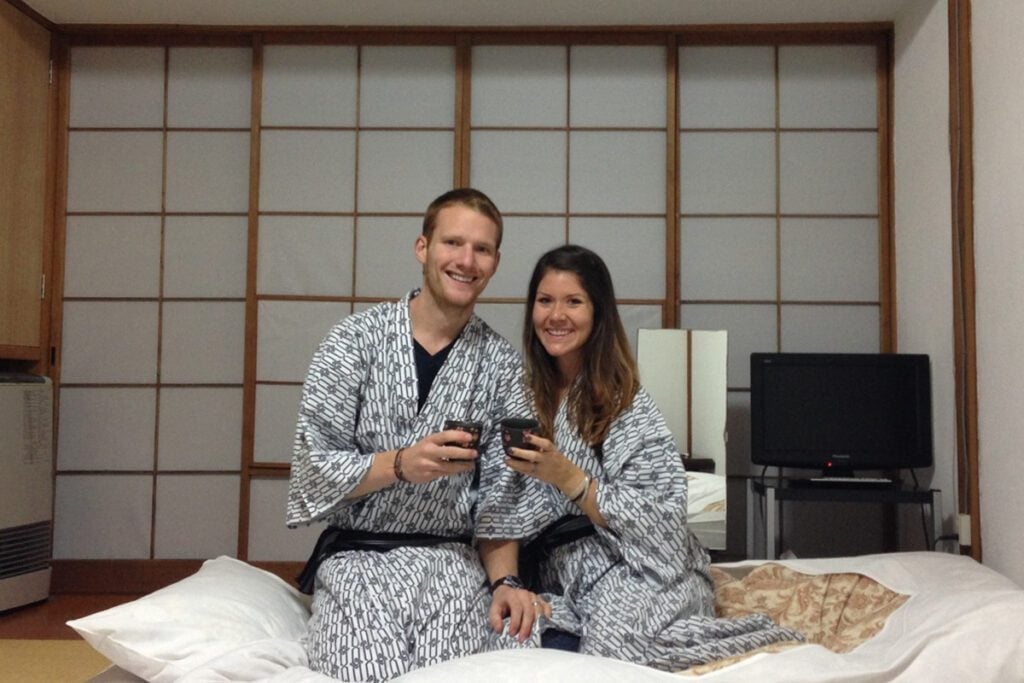
Japan is a country that we wholeheartedly believe has something for every type of traveler. Yes, even you . Whether you’re into history or pop culture, cities or nature, wild nightlife or absolute zen, you’ll find it all in Japan.
While Kyoto, Tokyo, and Osaka make it onto most first timer’s itineraries, you’ll quickly see that there is so much more to this country beyond the main attractions.
Once you travel here, it becomes kind of addicting — you’ll see! — because you’ll realize just how much this country has to offer.
- Incredible foodie experiences
- Epic (and off the beaten path) hikes
- Unique hotel stays you can’t find anywhere else in the world
- Temples and shrines that are shrouded in history
- Beautiful cultural experiences, like tea ceremonies and geisha performances
- Rural villages that few tourists see
- Some of the world’s biggest and safest cities
- Impeccable Japanese zen gardens
I could truly go on and on and on…
We have personally traveled to Japan 3 times and will certainly be back many, many more times.
Read next: We’ve rounded up all the things Japan is most famous for in a guide that’s also packed with practical travel tips. Plus, we’re sharing a few things we personally think Japan should be famous for, but most foreign tourists are surprised to know.
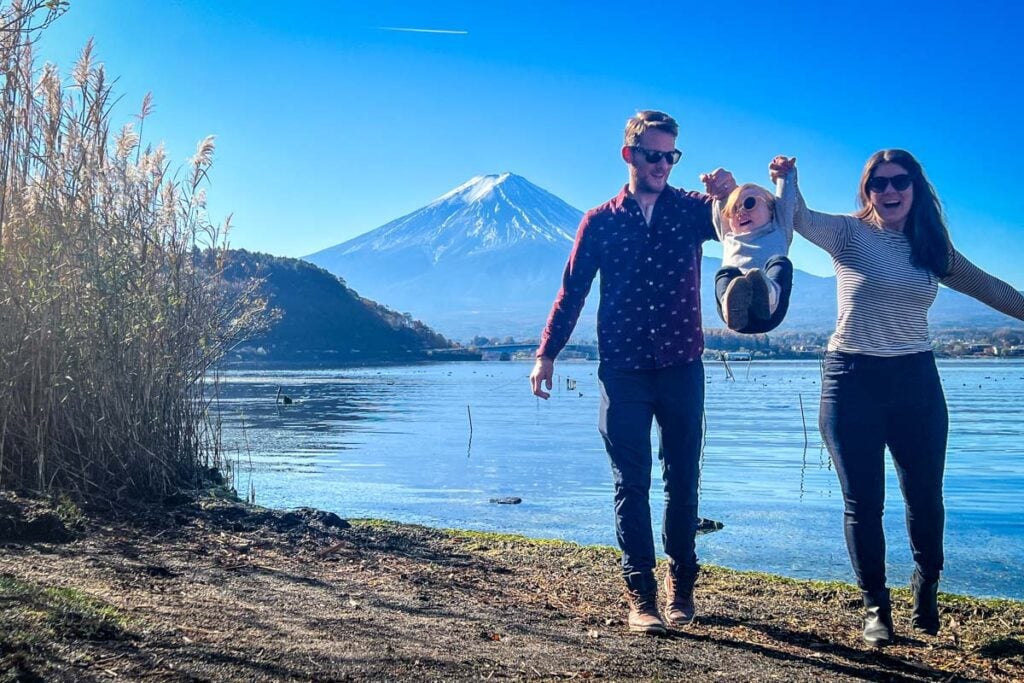
Here is a general overview of some of the high level important info and things to know before traveling in Japan. We’ll go into more detail about specifics in the rest of this article.
- Location: Island nation in Asia, located in the North Pacific ( view on Google Maps )
- Capital city: Tokyo
- Language: Japanese
- Currency: Yen (JP¥ / ¥)
- Japan uses the same plugs as in the U.S. but they have a different voltage (100 vs. 120 in the U.S.)
Visa requirements
There are 66 countries in total whose citizens do not require a visa to enter Japan, but the time you can stay depends on which country you’re from.
- Citizens from many countries (including the U.S.A., the U.K., Canada, and Australia) get a visa exemption (aka FREE) 90-day tourist visa, provided they will not be working in Japan.
- Other countries get a temporary tourist visa for a period of 15 days or less.
To find out the specifics for your country, check out the Japan National Tourism Organization , which explains the requirements for each country.
Language in Japan & useful phrases
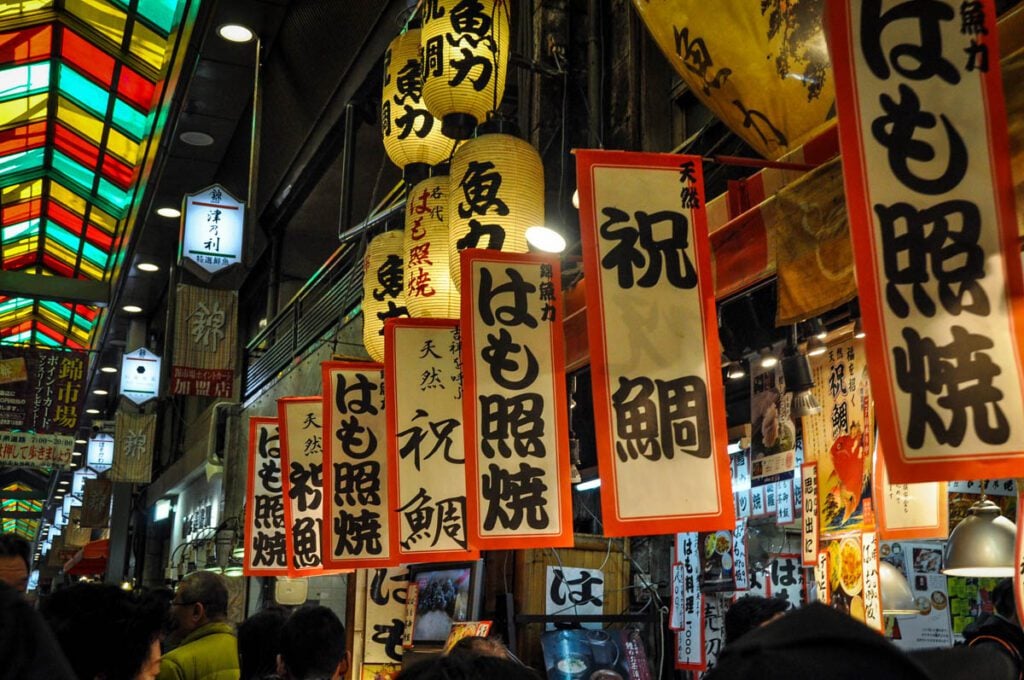
The language in Japan is, quite obviously, Japanese. But many people in big cities, like Tokyo, Kyoto and Osaka also speak English. Signs are written in Japanese characters, and in the cities most have their Roman counterparts.
When traveling, we always try to learn a couple important phrases. It shows locals you are trying to learn about their country and it can be fun too!
These phrases are ones we have found to be the most useful in any location we visit:
- Hello: Kon’nichiwa
- Thank you: Arigato
- Thank you very much: Domo Arigato
- Beer, please: Biru kudasai
- Cheers!: Kanpai
- Bathroom: Basurumu
- How much?: Ikura
- Delicious: Oishi
- Beautiful: Kireina
Interested in learning more? We’ve got a list of Japanese words and phrases that will be useful to know for traveling in Japan.
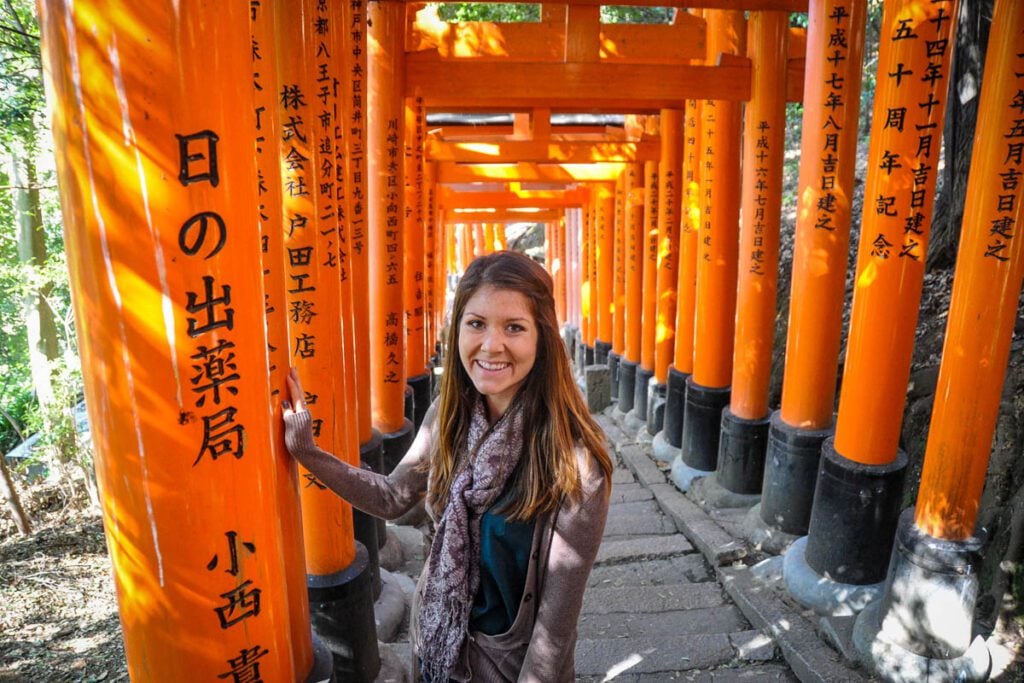
Helpful Japanese Words & Phrases to Know for Traveling in Japan
We’ve rounded up some practical Japanese words and phrases (that you can actually use!).
Manners and customs in Japan
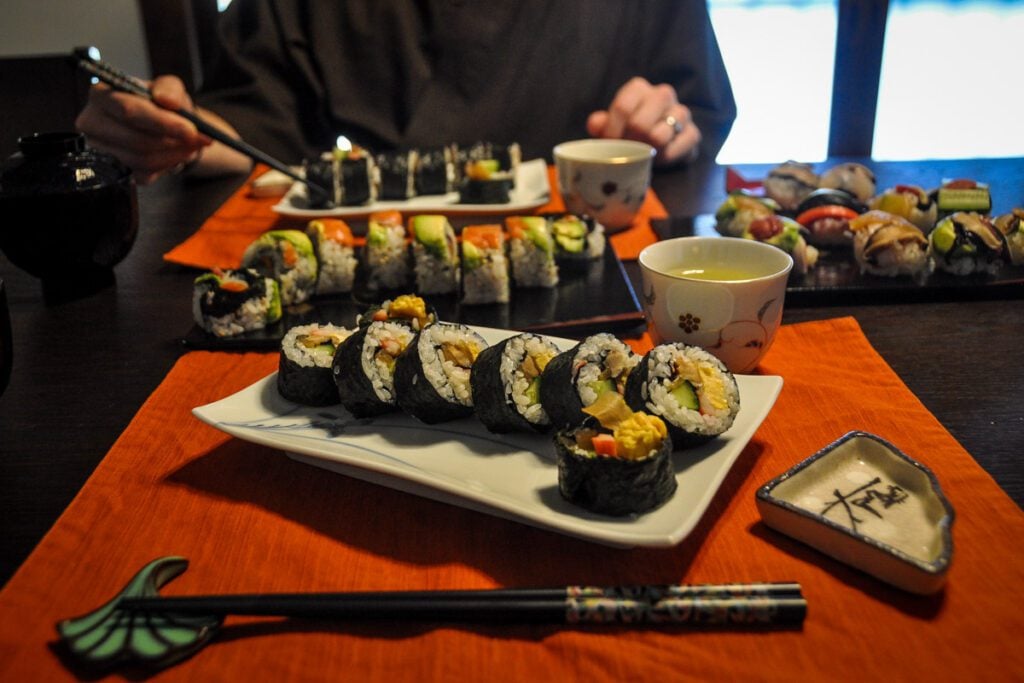
When traveling in a country other than your own, it is always a good idea to do a little research on what is polite so that you don’t accidentally offend people like this.
Here are couple manners to keep in mind when traveling to Japan:
- Eating while you walk is considered sloppy. Instead, find a place to sit and enjoy your snack.
- Pointing is considered rude. Instead, use an open hand to make gestures.
- Blowing your nose in public can be considered rude. Japanese people often go into the bathroom to blow a stuffy nose.
- On a crowded subway or train, it is polite to take off your backpack and hold it in your hands.
- Slurping noodles not only cools them down as you eat, but it indicates that the meal is delicious. So slurp away, it’s the polite thing to do!
- Taking off your shoes is common courtesy before entering many places. If the floor is raised at the doorway, it is an indicator that you should remove your shoes.
If you want a full run-down, check out our article on Japanese etiquette!
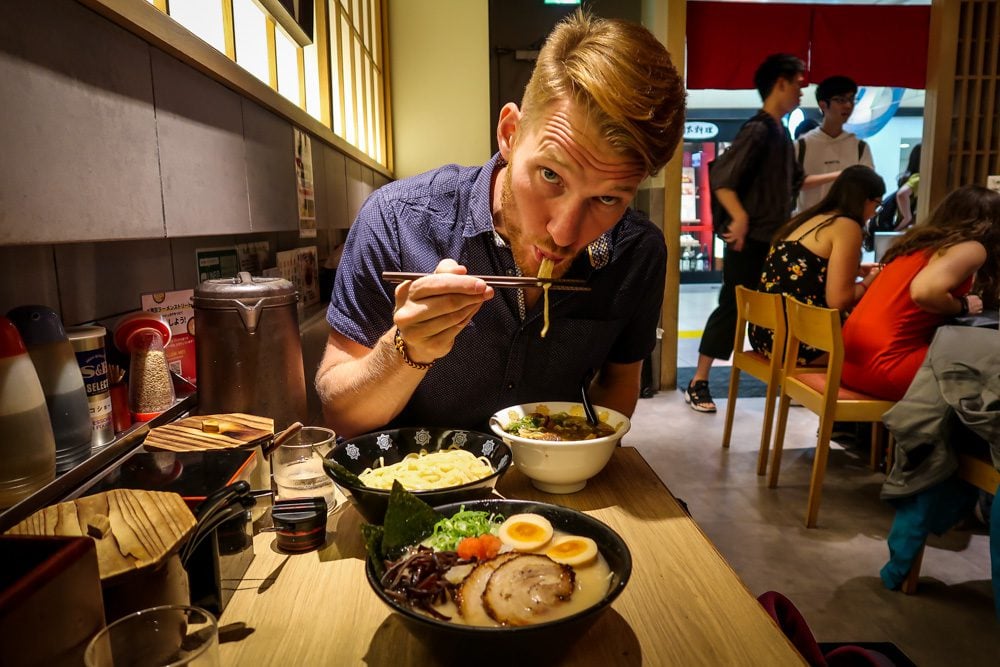
Japanese Etiquette: Dos and Don’ts When Traveling in Japan
Don’t get caught doing something embarrassing in Japan! We’ve compiled some important Japanese etiquette and manners to keep in mind while eating, riding trains and other common activities.
Tipping culture in Japan
Should I tip at restaurants in Japan? This is a question we always ask ourselves once we reach a new country, and it is never fun being caught off guard, unsure of what to do.
In Japan, tips are not expected, and can even be considered rude. And even if the server is not offended, they will likely be confused.
So in other words, NO , you should not tip in Japan.
Religion in Japan
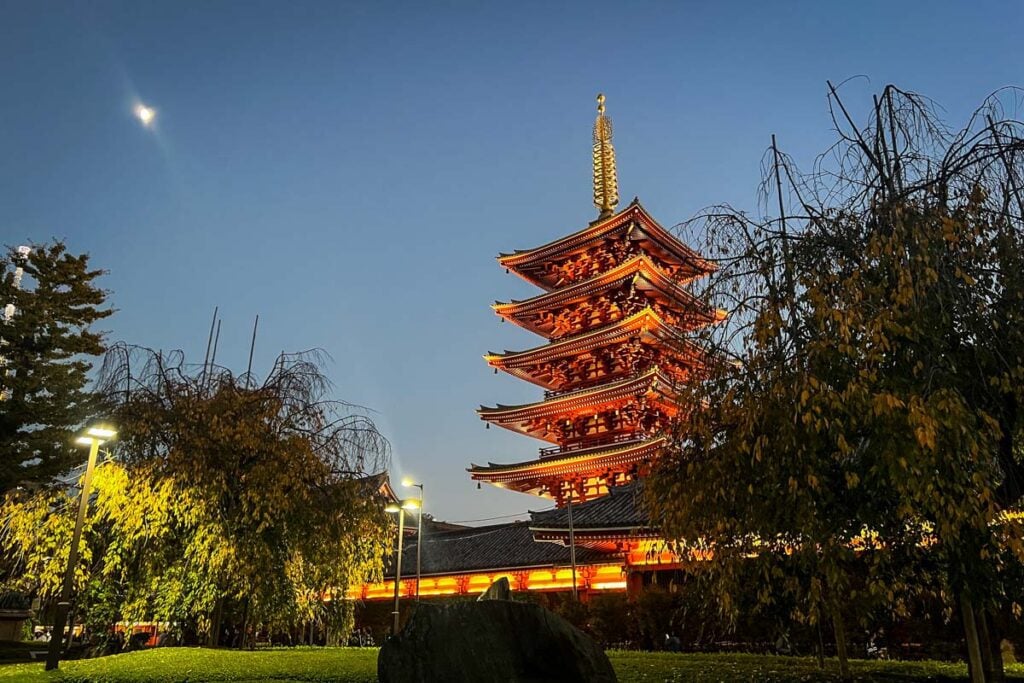
Buddhism and Shinto are the main religions in Japan, though they don’t play a huge role in the lives of many Japanese people today.
All throughout the country, you can visit temples and shrines to get a better understanding of the religions and culture. You can even do a temple stay in order to really delve in and learn about Buddhism.
Read this before visiting a temple or shrine in Japan.
Fun facts about Japan
These facts will be good conversation starters with other travelers or even locals. So break that ice and let them in on some fun facts about Japan!
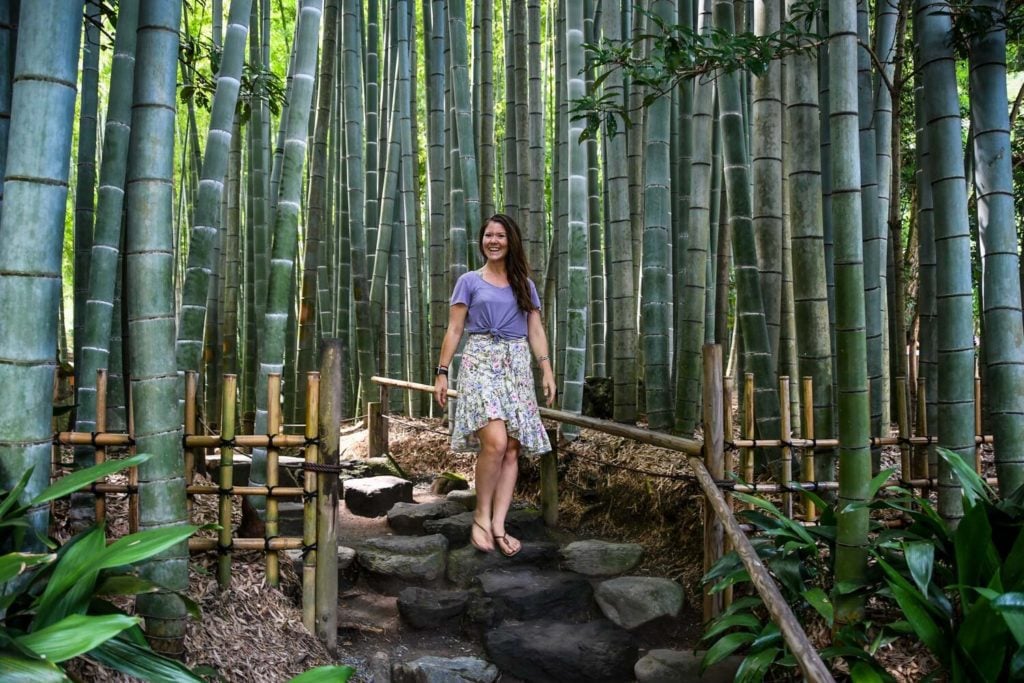
Interesting Facts About Japan (that may surprise you!)
Japan is an exciting country packed with things to do and places to see. In this article, we’re sharing all sorts of interesting facts about Japan. Plus advice and tips that’ll help you appreciate your time there even more!
How many days do you need in Japan?
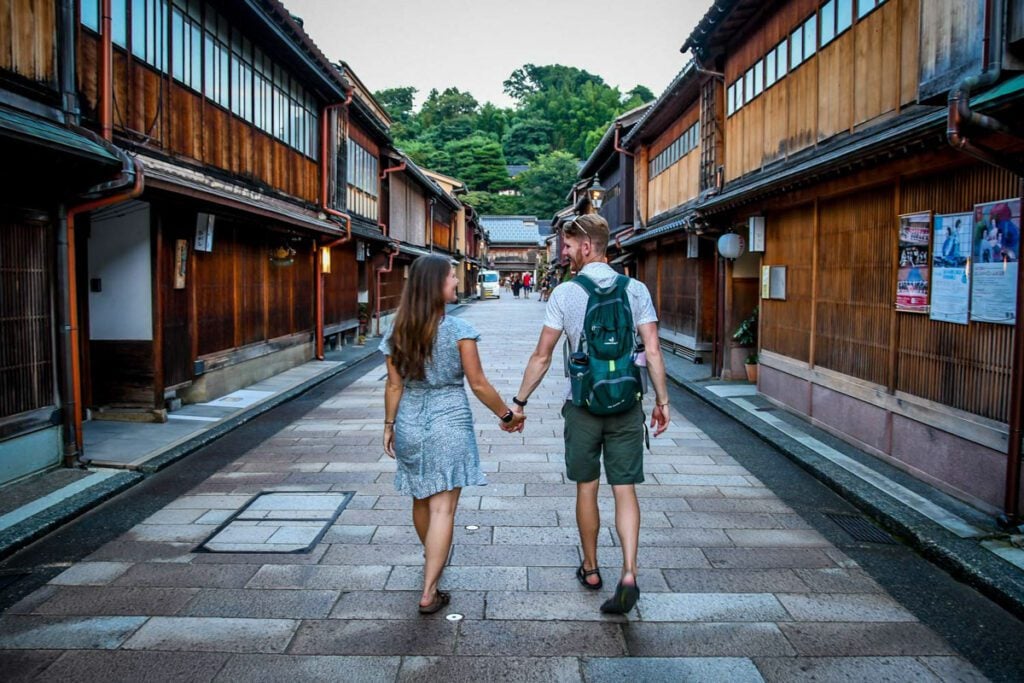
There’s so much to see and do in Japan that it can be overwhelming trying to decide how long your trip should be. Ideally, 2-3 weeks will give you enough time to see iconic and lesser-known sights as well as recover from a long travel day and potentially a big time difference.
But the ideal duration for your trip depends on several factors, including destinations you want to visit and your travel style. Our guide to how many days to spend in Japan will help you figure out how much time you need based on what you want to do.
Best times of year to visit Japan
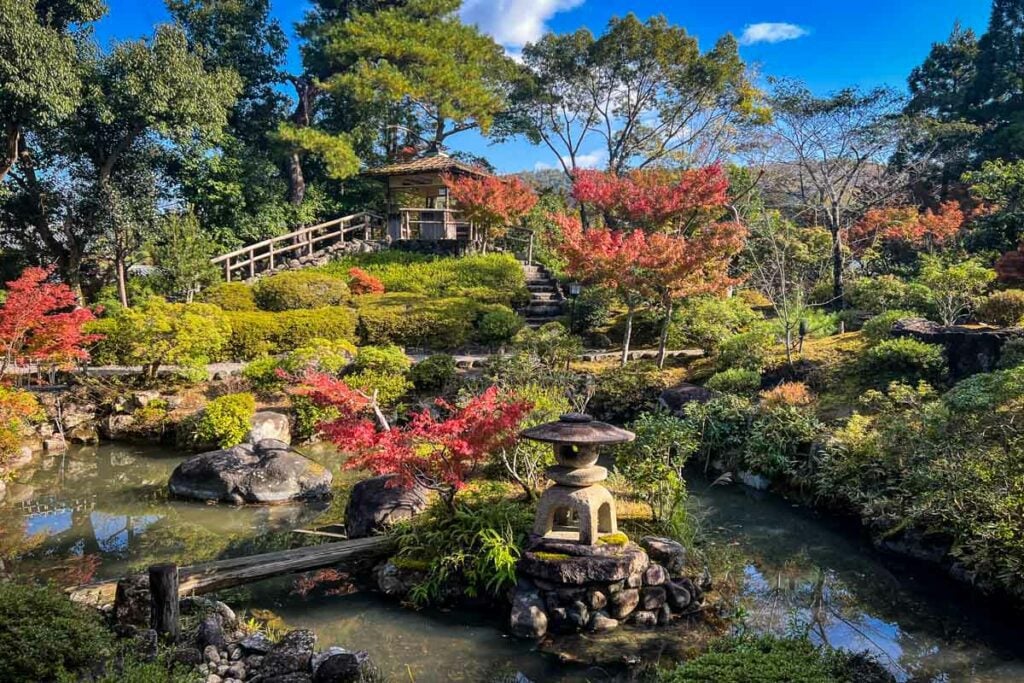
If you’re considering a trip to Japan, you’re probably wondering what time of year is best to visit.
The wonderful thing is every season is a great time to visit Japan , and you will have a completely unique experience.
We’ve laid out what to expect in each season, as well as the pros and cons of visiting during these times in our article: Best Time to Visit Japan: When to Go & When to Avoid! .
Here’s a quick breakdown of the seasons in Japan and why you might want to visit during each.
Summer in Japan
Summer in Japan is the time for festivals and celebrations. The summer spans from June to August, with August being the busiest travel month because school is out and many Japanese people travel over the Obon holiday (August 13-15).
Be prepared for ways to beat the humidity because it can get pretty sticky. Also it’s rainy season and the start of typhoon season, so don’t forget your rain jacket and umbrella!
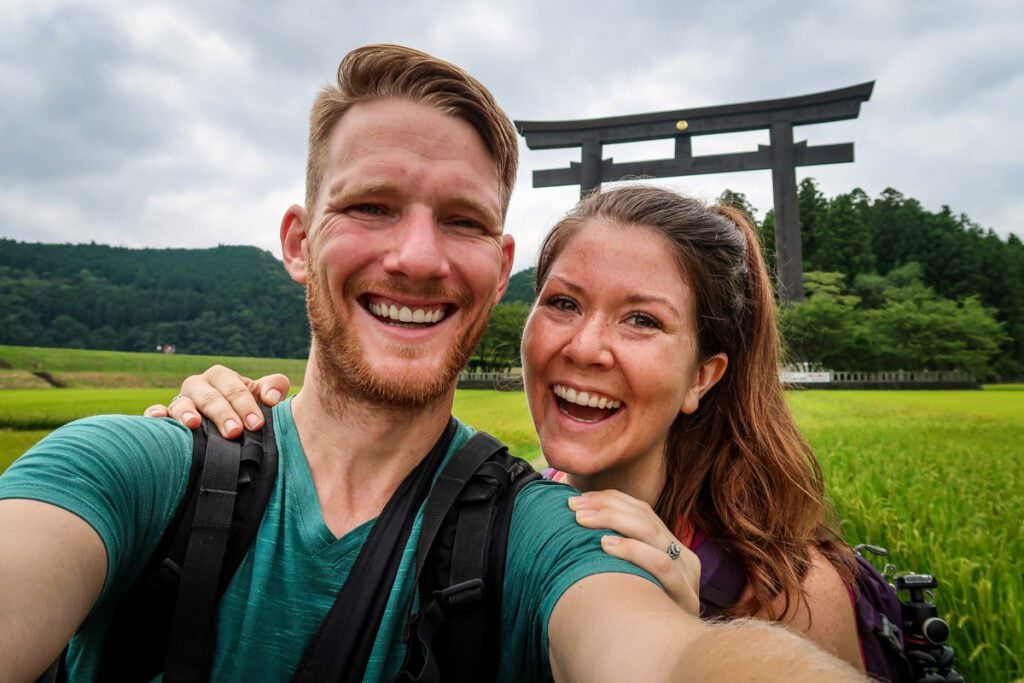
Summer in Japan: Ultimate Seasonal Guide
Summertime in Japan is a great time to hit the beach or cool off in the mountains. We’re sharing the best places to visit and things to do during summer in Japan, as well as lots of insider tips for planning your trip!
Autumn in Japan
With typhoon season peaking at the beginning of September, the start of fall in Japan is typically rainy depending on where you are. However, the weather starts to clear up in October and by November the leaves are changing.
We visited Japan in November 2023 and put together this guide to autumn in Japan that’s full of useful info.
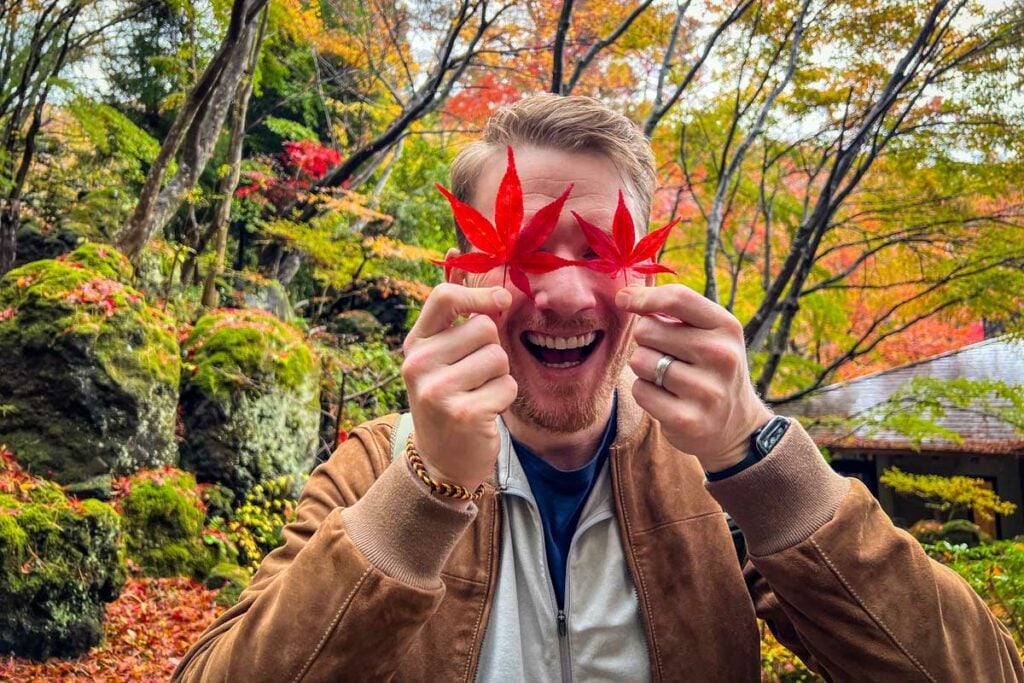
Autumn in Japan: Where & When to see Fall Foliage
With spectacular foliage and nice weather, we think fall is one of the best times to visit Japan. We’re sharing the best places to experience autumn in Japan as well as lots of insider tips for planning your trip!
Winter in Japan
During the winter months, major cities like Tokyo, Osaka and Kyoto tend to enjoy mild temperatures, but you can find snow and colder temps in the mountains and on Hokkaido (the northernmost island in Japan).
While winter may not be the first season you think of traveling, there’s actually a ton to do, and we think it is a great time to visit Japan .
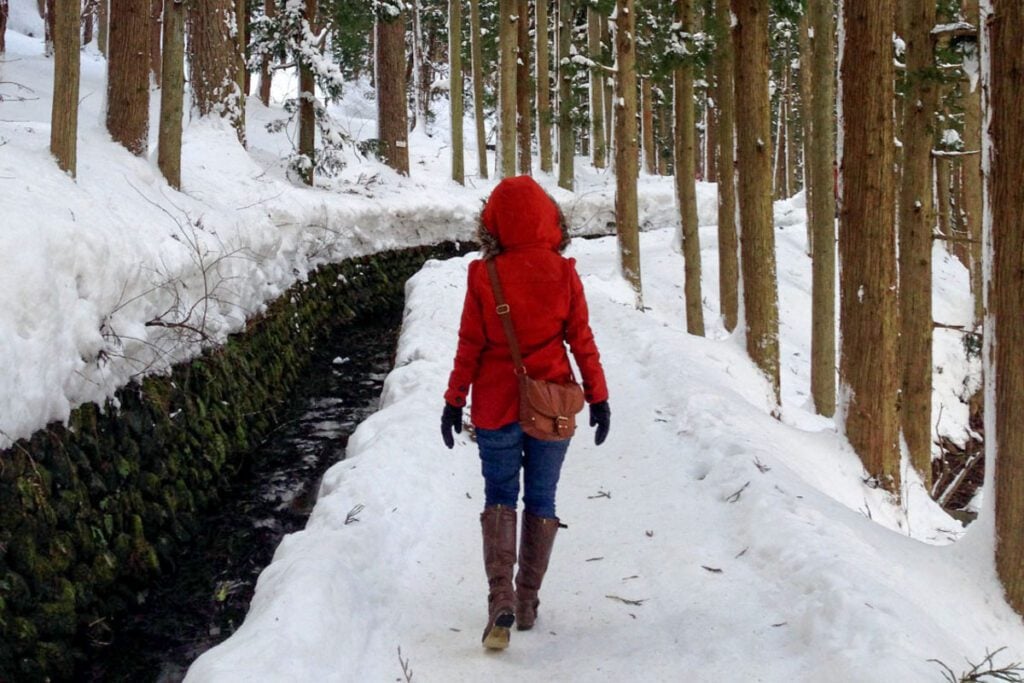
Winter in Japan: Things to Do + Why It’s a Great Time to Visit
There is something truly special about winter in Japan! We think you’ll be surprised by all the exciting things to do in Japan in winter. Plus, we’ll let you in on average winter temperatures around the country, as well as what to pack for the winter months.
Spring in Japan
With stunning sakura (cherry blossoms) popping up all around the country and temperatures warming, it should come as no surprise that spring is a popular time to visit Japan. A very popular time, indeed. If you travel to Japan in the spring , you’ll be rewarded with comfortable temperatures, beautiful blossoms, and lots of crowds.
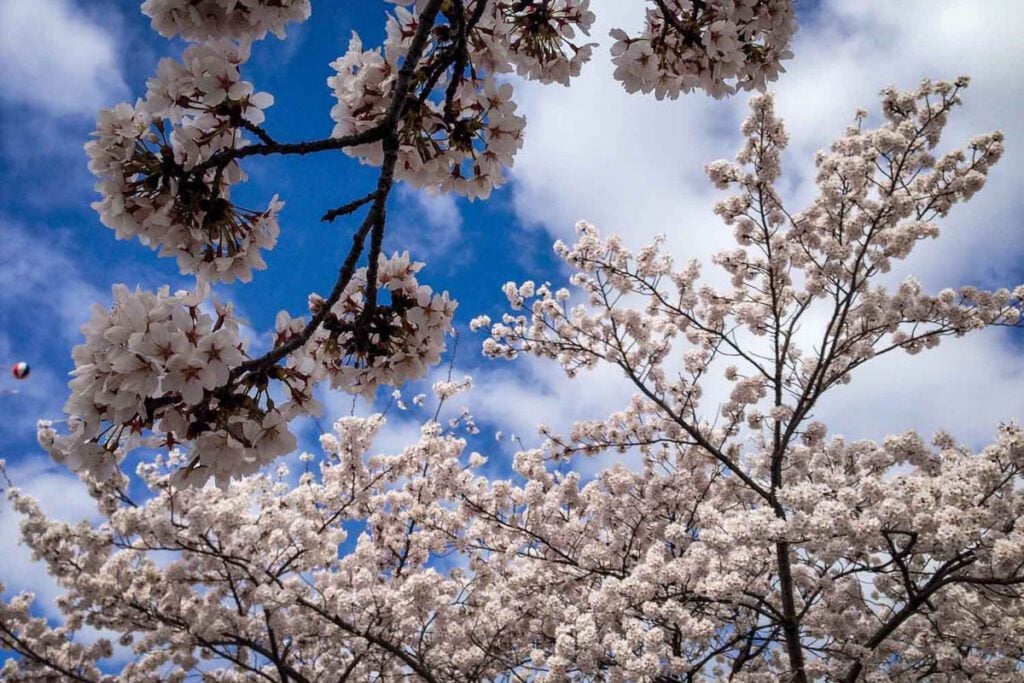
Spring in Japan: When & Where to See Cherry Blossoms
Witnessing the cherry blossoms in Japan is a once-in-a-lifetime travel experience. We’re sharing the best places to experience spring in Japan as well as lots of insider tips for planning your trip!
Before you book your Japan trip in the spring, know this…
Spring is considered by many as a great time to visit Japan for its comfortable temperatures, cherry blossoms and little chance of rain.
One thing you should be aware of is the so-called “Golden Week” which happens in the springtime and is made up of 4 national holidays which fall into a 7-day span. During this week many Japanese people will also be traveling around the country and accommodation and tours are often booked far in advance.
Dates of Golden Week in Japan:
- 2024: April 29 – May 5
- 2025: April 29 – May 5
- 2026: April 29 – May 5
It’s not every year the holidays fall on exact same dates, but for the next 3 years, they just so happen to. This site has more information about Golden Week in Japan .
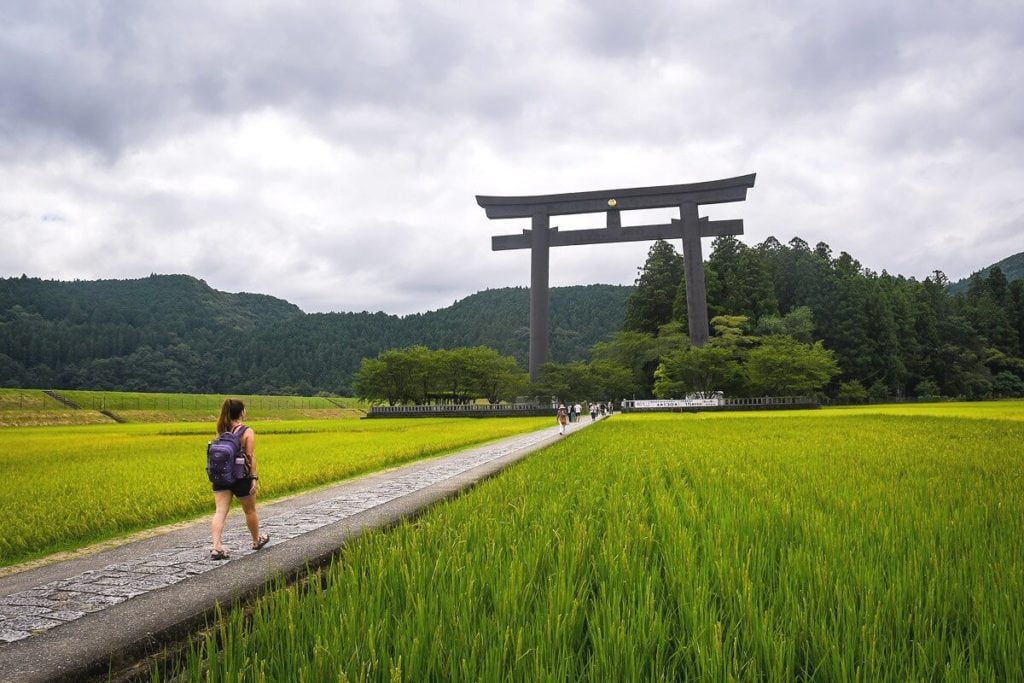
Best Time to Visit Japan: When to Go & When to Avoid!
Choosing the best time of year to visit Japan can be downright overwhelming. Each of Japan’s 4 distinct seasons has its draws and drawbacks. We’re going to break down exactly what to expect during each season so you can choose the best time to visit Japan based on your travel style and interests.
Traveling in Japan is a little different than many other places in the world.
By nature, we tend to be somewhat last-minute travelers, but not when planning a trip to Japan. If possible, we recommend planning your trip to Japan well in advance.
Now, this isn’t to say you can’t plan a trip to Japan at the last minute, but your options for great accommodation (especially in popular areas) will be limited. Plus, you may miss out on some of the most popular attractions because many require advanced booking and tickets go quickly.
We’ve laid out our recommended timeline for planning a trip to Japan so you can ensure you’re able to secure some incredible accommodation and do all the things on your bucket list.
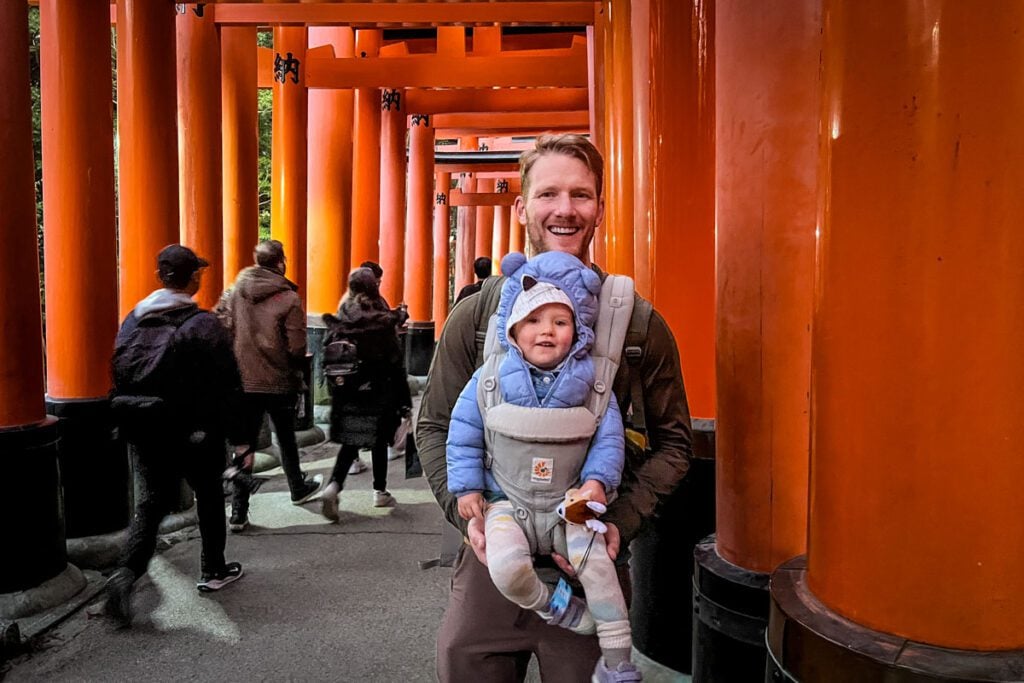
This timeline is a suggestion, but you can certainly adjust dates a bit. Hopefully this gives you a better idea of how far in advance to plan your trip to Japan.
1 year before your trip
- Start researching and draw up your dream itinerary
- Make a note of how far in advance the ryokans you like open up reservations
- Flag any attractions that are “must dos” for you
- Check out our Japan budget article to get started
- Here are our favorite tips for saving money for travel
- Insider Tip: Sign up for a mistake fare newsletter and set Tokyo as an “alert city” so you can get notified of any really good deals departing from your home airport.
The research phase should be fun and you don’t want to feel rushed. We recommend recording all the hotels and attractions you want to prioritize in a Google Doc so you don’t lose any of your research.
Coming up with a budget will help you determine which accommodations you can realistically book and it will help you start saving for this trip.
Want the perfect itinerary planned for you?
If you don’t have a ton of time to spend planning your Japan itinerary (or you just don’t find travel planning fun!), we’re working on something you might be interested in…
We are in the process of creating done-for-you Japan itineraries that are packed full of all sorts of tips we’ve gathered from 3 trips to Japan as well as literally hundreds of hours of research (no exaggeration).
We will have both off-the-beaten path routes as well as a classic itinerary that hits the top attractions.
If you want to be the first to know when our Japan itineraries are on sale, get on the waitlist !
6 months before your trip
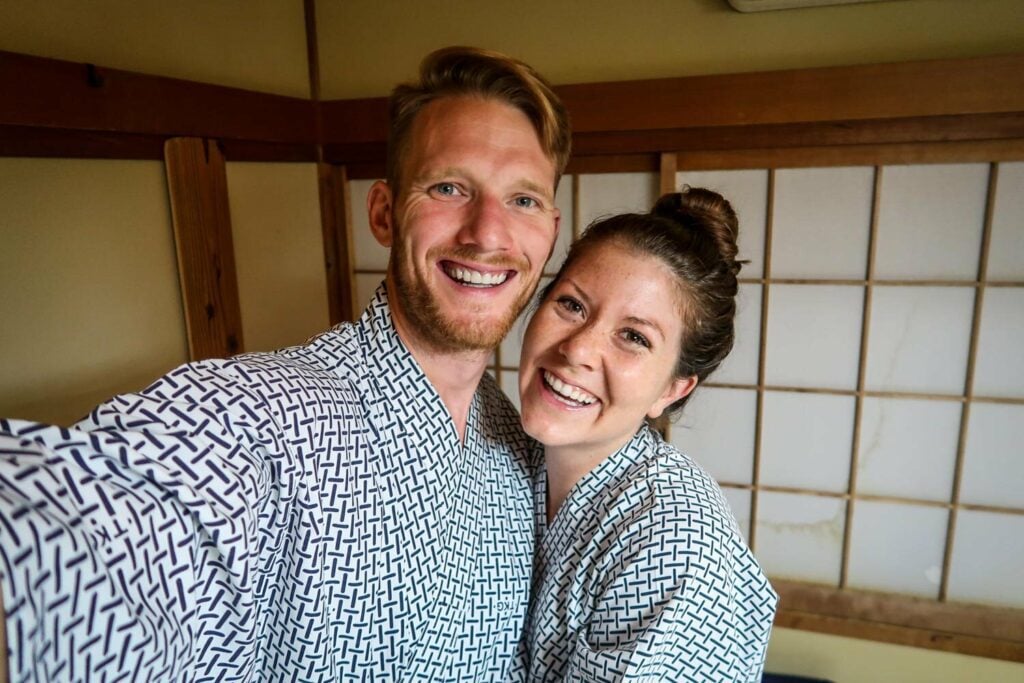
- Flights: If you are flying from afar, aim to book your flights around 6 months prior to your trip. We’d recommend keeping an eye on them for a couple of months (starting 10 months before your trip).
- Ryokans: Many ryokans only release booking dates 3-6 months ahead of time. Really great ryokans fully book up quickly after dates are released.
- Accommodation in small towns (like on the Nakasendo Trail)
- Hotels near any major attraction or popular area (at DisneySea, or near Mount Fuji)
- Special hotels that you really want to stay at (like the Park Hyatt in Tokyo , or a temple stay at Koyasan)
- Accommodations that fall over festival dates or popular tourist seasons, like Golden Week (which falls during Japan’s cherry blossom blooms )
It can feel a little overwhelming to make these big bookings all at once, but it will ensure you are able to stay where you’d like and secure good prices on flights.
Booking tips: When possible, we like to use Booking.com since many hotels offer free cancellation via this platform (often up until just days before your stay). Also, you often don’t have to pay at the moment of booking, which makes the commitment a little less scary. We typically like to compare the price on Booking.com to Agoda , as they sometimes differ. We also stayed at a couple of Airbnbs in Japan , which was a good option in the more rural areas.
2-3 months before your trip

- All accommodation not yet booked: the sooner the better for the best locations and prices
- Japan Rail Pass : You can purchase this pass up to 3 months before the date you’ll use it . We personally got ours 2 months in advance so it wasn’t left until the last minute.
- FYI: we have lots of advice and info about renting a car in Japan
- Tickets go on sale 3 months in advance
- If you want best available times slots (we recommend the first one at 9-9:30 a.m. ), book at least 2 months ahead of time
- Compare availability on the teamLab website (tickets available further in advance) and on GetYourGuide
- Tickets go on sale roughly 5 months in advance. We recommend booking at least 2-3 months in advance for the best availability of time slots.
- Compare availability on the Warner Bros Studio website and on Klook
- This will mean you don’t have to wait in crazy long lines, and we’ve heard it’s very worthwhile at this notoriously crowded theme park. Purchase it here .
1 month before your trip
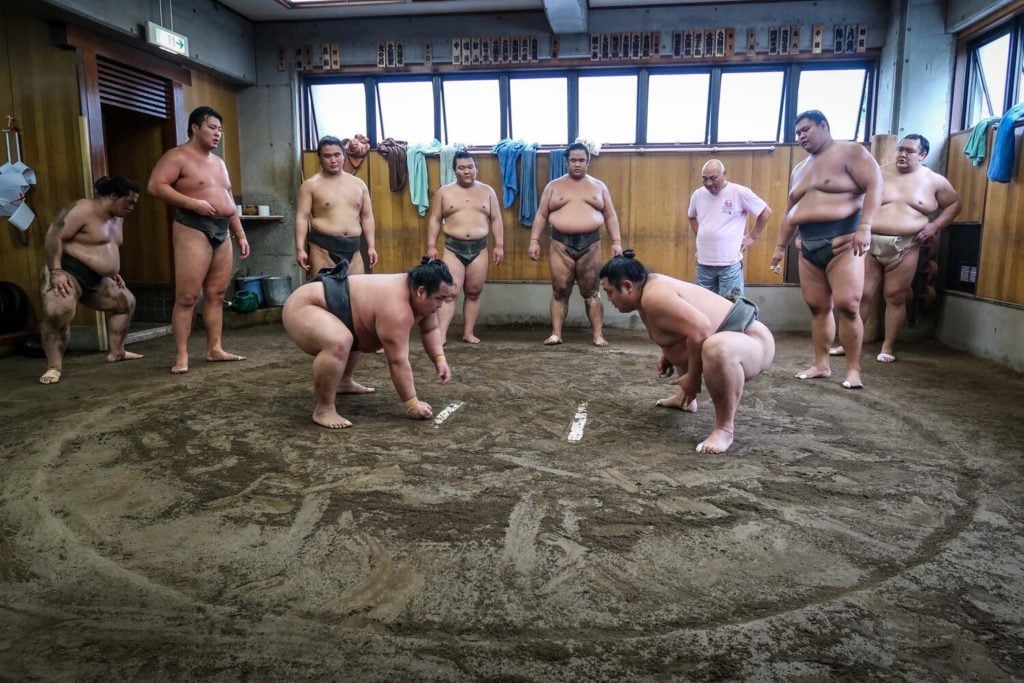
- Tickets go on sale on the 10th of each month for the following month
- We recommend setting an alarm to purchase tickets as they become available on the 10th of the month before your trip so you don’t miss out.
- You cannot purchase tickets onsite (you must have advance reservations)
- Tickets go on sale 1 month in advance
- The most popular time slot is right before sunset and those times go quickly
- Compare availability on the Shibuya Sky website and on Klook
- Popular theme restaurants like Ninja Restaurant (Tokyo) or the Pokémon Café (Tokyo & Osaka)
- Insider tip: For the restaurants on your “must” list, research and write down how far in advance reservations are available (some may even require booking further than 1 month in advance). Set alarms in your calendar so you can be sure to snag a spot right away. Popular places fill up very fast!
- Sumo stables
- Cooking class
- Tokyo dinner cruise
- Photoshoot in Tokyo
- Tokyo Go-Karting
- Tea ceremony
Download the PDF version of our Japan booking timeline so you can print it out at home and keep track of your Japan trip planning process! Enter your email and we’ll immediately send the booking timeline to your inbox (totally FREE).
Japan Booking Timeline
Enter your email below and we’ll immediately send our Japan booking timeline to your inbox (totally FREE).
We’ll also be sending you bonus tips on all things Japan: like how to travel cheaply, where to go and the best places to stay.
We value you, and NEVER spam. (We hate spam too.)
We’ll also be sending you bonus tips on all things Japan, like how to travel cheaply, where to go and the best places to stay.
Top places to visit on your Japan trip
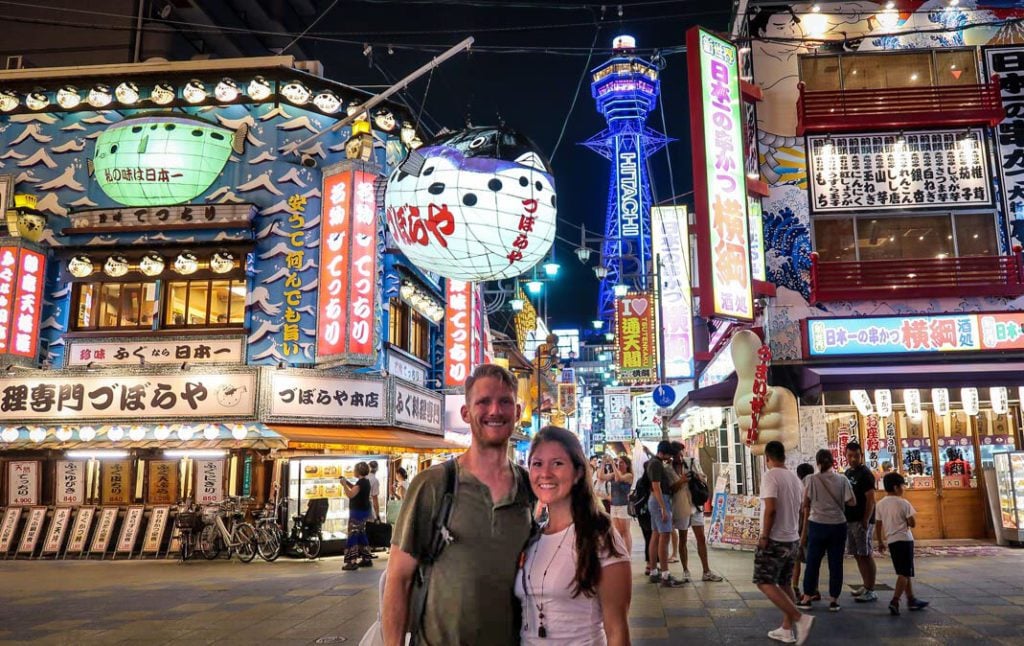
Japan is a huge country, and it would be an extensive list if we went through all the notable cities to visit. But if you are visiting Japan for the first time, these cities are a good place to start as they will give you a good taste of the country’s culture.
Another thing that’s important to keep in mind when planning a trip to Japan is the destinations’ proximity to one another and all of these suggestions are relatively easy to get to and from.
- Tokyo : This huge metropolis is likely where you’re flying in and out of, and it is one of the most interesting cities we’ve visited anywhere in the world. From quirky experiences, to amazing foods, Tokyo is definitely worth some time on your itinerary.
- Kyoto : Considered the “cultural capital of Japan”, Kyoto is packed with history, important temples, gorgeous architecture and a charming atmosphere. If you are traveling with your little ones, there are tons of things to do in Kyoto with kids .
- Osaka : Another major hub to fly in and out of Japan, Osaka is worth a visit . Known for lively nightlife and endless street food, there’s a lot more to discover beyond Osaka’s neon-lit facade.
- Hakone: At the footsteps of Mt. Fuji, Hakone is a peaceful retreat from the big cities of Japan and a chance to relax in an onsen and sleep in a ryokan.
- Hiroshima : This historical significance of this city draws tourism from all over the world, but you can enjoy the lighter side of this beautiful place too.
- The ‘Roof of Japan’ : The Tateyama Kurobe Alpine Route is a single day mountain traverse where you take 8 different modes of transportation over what’s known as the Roof of Japan .
Want more info? We have an entire article with a round up of the most beautiful places in Japan , including some top things to do and see.
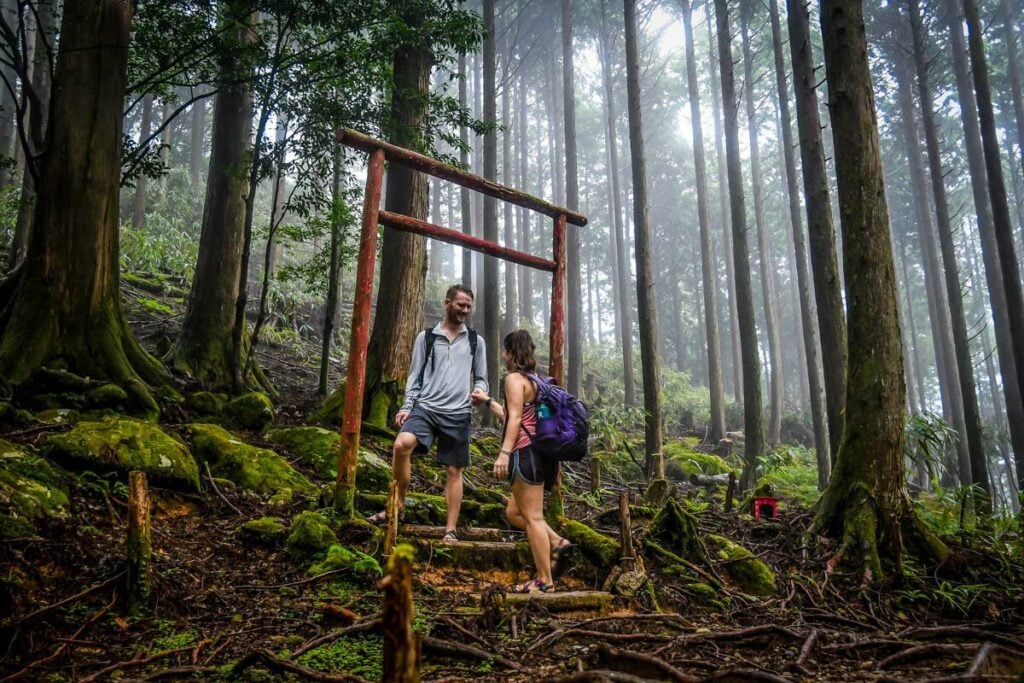
Most Beautiful Places in Japan You Need to See for Yourself
With storybook villages, forested mountain ranges and white sand beaches that rival the tropics, there are some incredibly diverse and beautiful places in Japan. This bucket list is full of places you’ve never heard of, and after reading it, we bet you’ll be ready to book a flight to Japan!
Top things to do in see in Japan
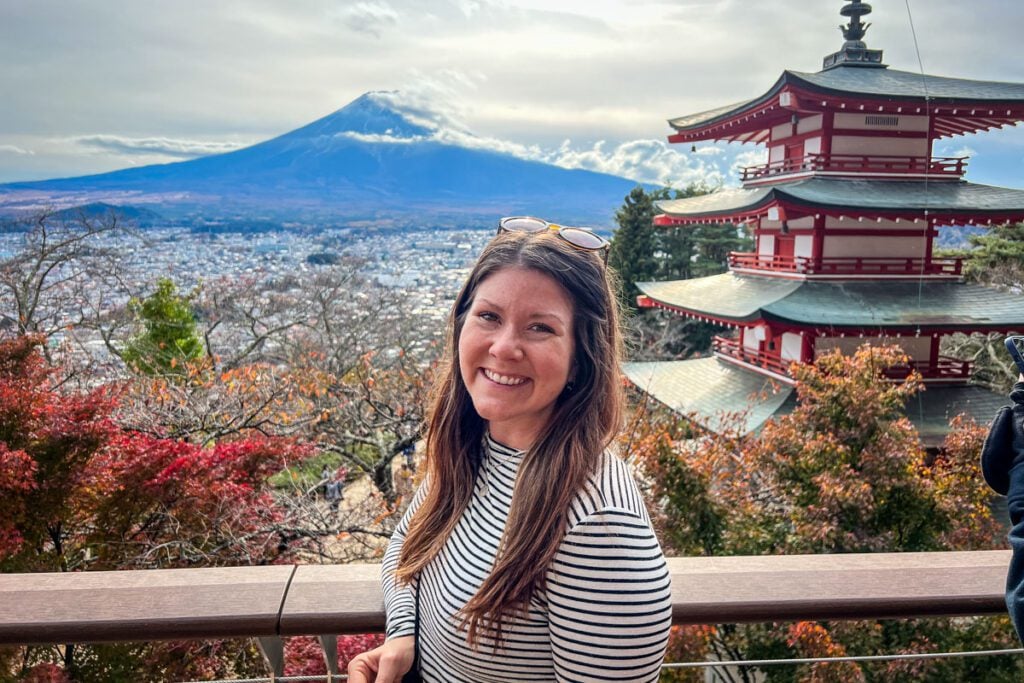
Just as with places to visit, there are seemingly endless sights to see in Japan. Here is a quick list of our top recommendations for your first visit to Japan.
- Mount Fuji : The most famous mountain in Japan, you can get a glimpse of this beauty when traveling in Hakone.
- Fushimi Inari Taisha Shrine : Known to tourists as the “Orange Gates”, there are thousands of majestic orange gates covering a maze of paths leading up to the shrine.
- Arashiyama: Located on the western edge of Kyoto, Arashiyama is an area that is filled with temples and shrines, but the main attraction is the Arashiyama Bamboo Grove.
- Temples in Japan: Of course temples will be on your list of things to see in Japan. The Golden Pavilion in Kyoto is stunning with the garden setting and reflection off the pond.
- Shibuya Intersection: Famously known as the “busiest intersection in the world” crossing the street here is quite an experience.
These places all make for great pictures! If you want to take better travel photos, we wrote up some easy and creative tips to improve your travel photography skills !
Psst! We have a list of must-see landmarks in Japan that’s sure to give you some inspiration for your itinerary!
Unique experiences to have on your Japan trip
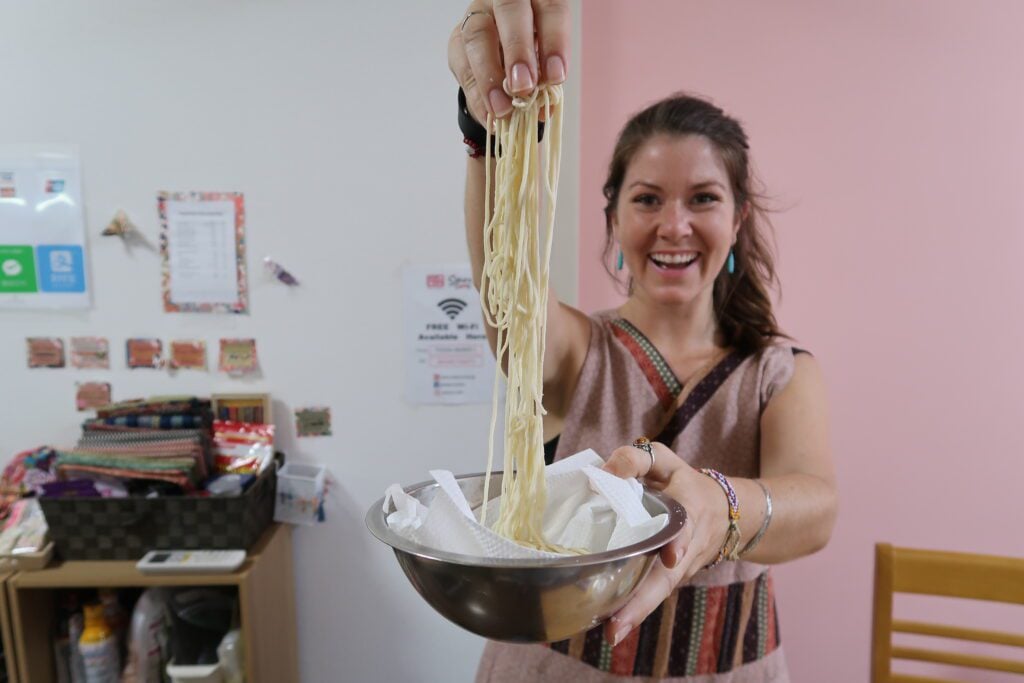
One of the many reasons Japan is such a wonderful place to visit is there are so many unique experiences that can only be had in this country. Here are just a few of the things that are quintessentially “Japanese”.
Quintessential cultural experiences
- Soak in an Onsen: Strip down to your birthday suit and soak in a hot tub until you get pruney. Don’t worry, they are gender separated and some are even private. The best one we dipped in was in the Hakone region .
- Stay at a Ryokan: Experience a traditional Japanese-style inn and stay in a ryokan to enjoy Japanese hospitality and relaxation.
- Take a Japanese cooking class: Learn how to make proper sushi or traditional ramen to impress your friends at home. (Read why we LOVE taking cooking classes on our travels !) Or take a food tour, like this Kyoto food tour from Magical Trip.
- Sleep in a Temple: Usually taken as retreats to refresh your body and mind or deepen understanding of religion, temple stays are an unique experience you won’t forget.
- Go Geisha spotting: On the old street of Kyoto, Geisha scurry from one event to the next. Try to get a glimpse of them, or better yet try to get a picture.
- See the fish auction each morning: Show up around 3 a.m. (yep, that early) as the fishermen come into port and sell their fish at the Tsukiji Fish Market . Then find a shop and have the freshest sushi you’ll ever eat.
- Take a Sumo wrestling tour in Ryogoku and learn about Sumo culture.
Get personalized recommendations for where to save and splurge during your trip when you use ViaHero —a trip planning platform that will connect you with a local in Japan.

Quirky Japanese experiences
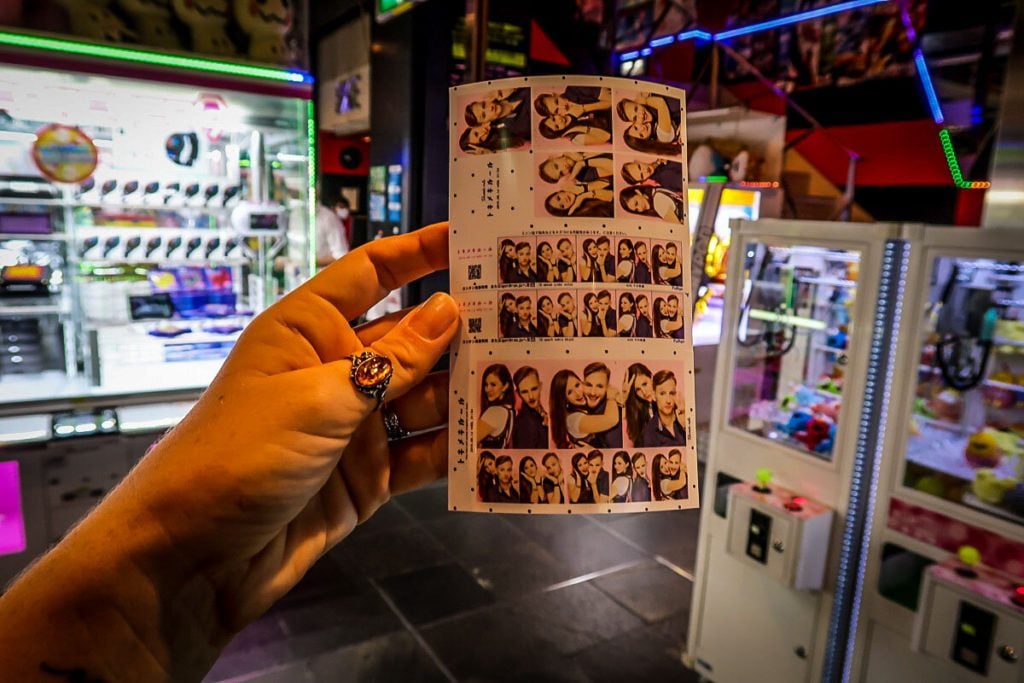
- Take your picture in a photo booth: Pop into one of these with your friends and take a few snaps. Then, edit your photos instantly, enhancing your eyes, adding blush, or slimming your cheeks. It takes the word selfie to a whole new level.
- Responsible Travel Tip: Be cautious about animal tourism. Domesticated animal cafes (like dog or cat cafes) seem to take care of their animals. But for non-domesticated animals cafes, like owl cafes, we would just be a little hesitant to visit.
- Theme restaurants: We went to the Robot Restaurant in Tokyo (unfortunately now closed) and it was one of the craziest dinners we ever attended! For more theme restaurants, check out our guide to the best things to do in Tokyo at night .
Unique experiences in nature
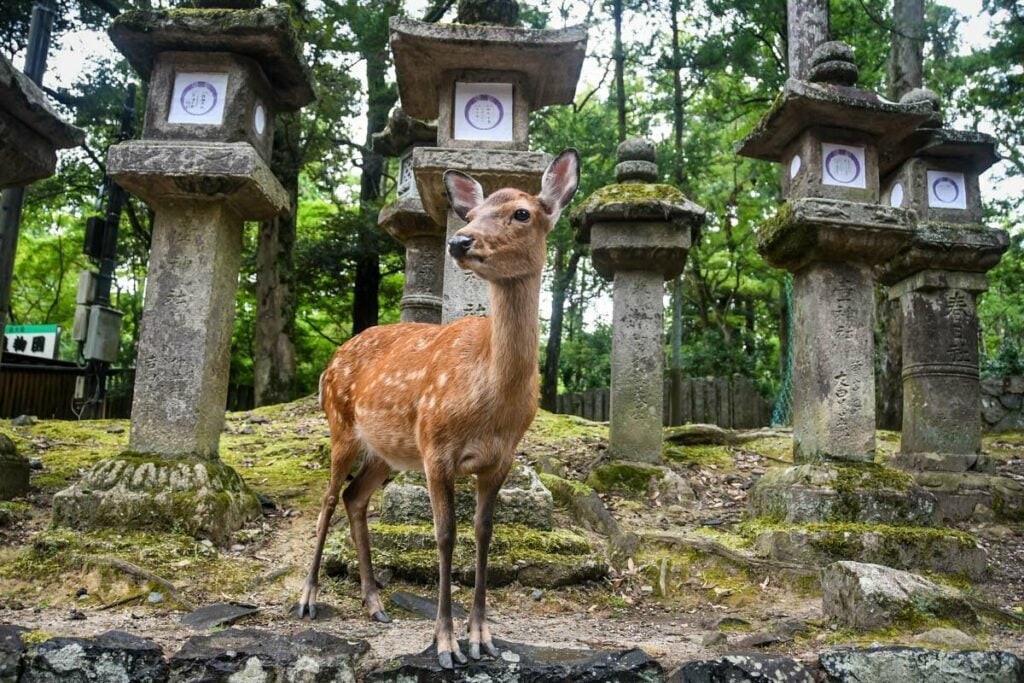
- See the Nara Deer: Just a little ways outside of Osaka in the city of Nara , there is a park (and part of the city) literally flooded with cute spotted deer. They’re used to being around humans, but make sure you read these tips before visiting the Nara deer.
- Jigokudani Snow Monkeys: A few miles away from Nagano, there is a park where the local macaques monkeys soak in a spring-fed hot tub and play around in the snow.
- Hike the Kumano Kodo Trail : If you’re feeling adventurous, this is quite literally, off the beaten path. The Kumano Kodo Trail is a historic pilgrimage through the mountainous Kii Peninsula that has been trekked for thousands of years.
Need more inspiration? We have an entire article with a round up of the best things to do in Japan , including all the info you need to make it happen during your visit!
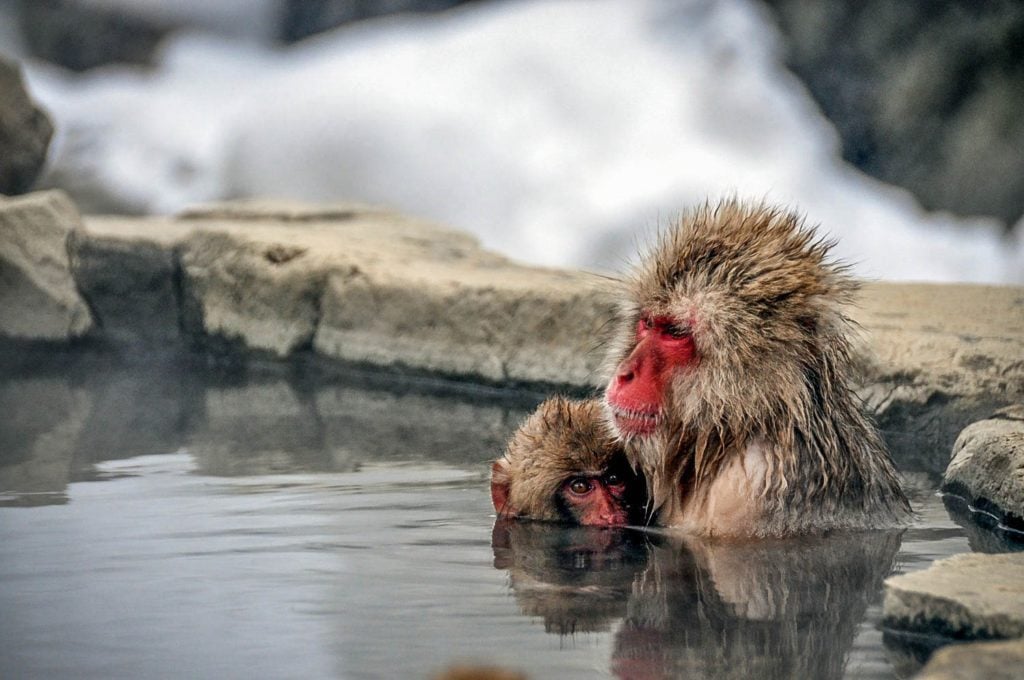
Crazy Fun Things to Do in Japan
If you’re looking for unique things to do on your trip to Japan, you’ve come to the right place! From super quirky, only-in-Japan experiences to must-see sights and the best food to try, we’ve rounded up the top things to do in Japan on your first visit.
Wanna take a tour?
We recommend taking a tour with the highly-rated tour company, Magical Trip . They specialize in small group tours led by local guides all over Japan, from Tokyo to Osaka.
Click through to browse all small group Japan tours they offer.
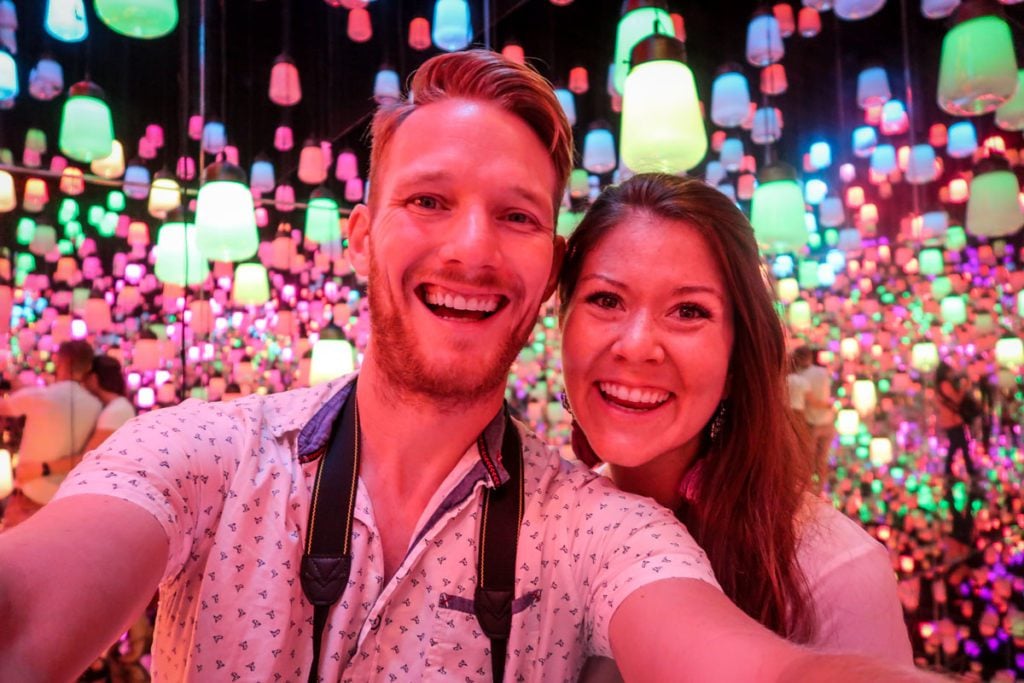
Best Things to Do in Tokyo
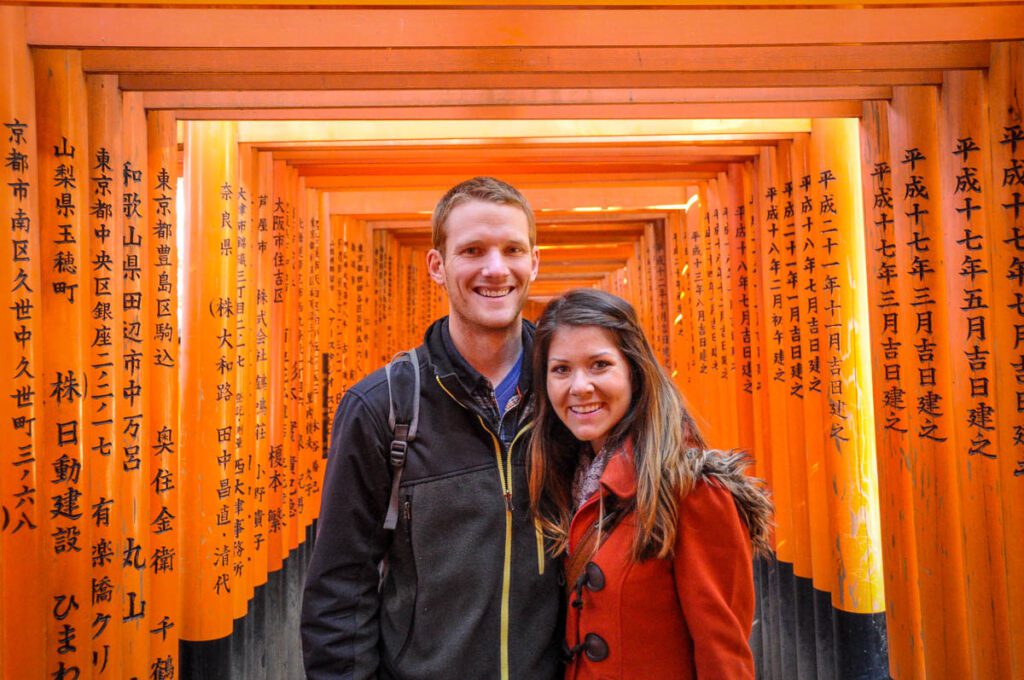
Best Things to Do in Kyoto
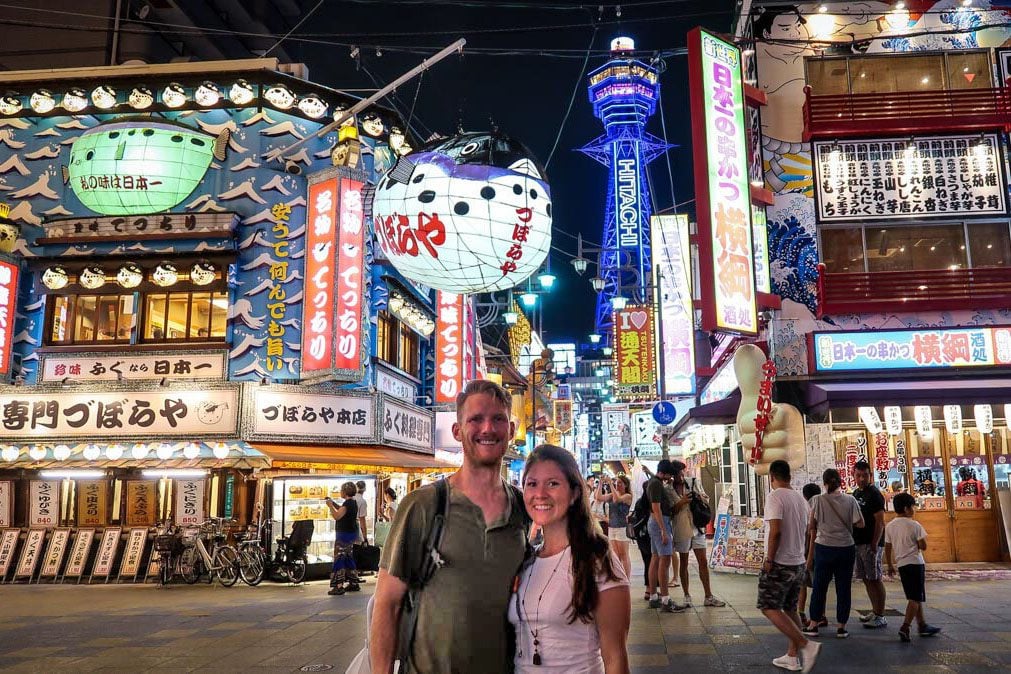
Best Things to Do in Osaka
Budgeting for Japan
I’ll be straight to the point: Japan is not cheap.
Contrary to many other destinations in Asia, like Thailand or the Philippines , Japan is not an ideal location for budget travelers. That said, it is unlike any country in the world and totally worth visiting.
Typical daily budget for Japan
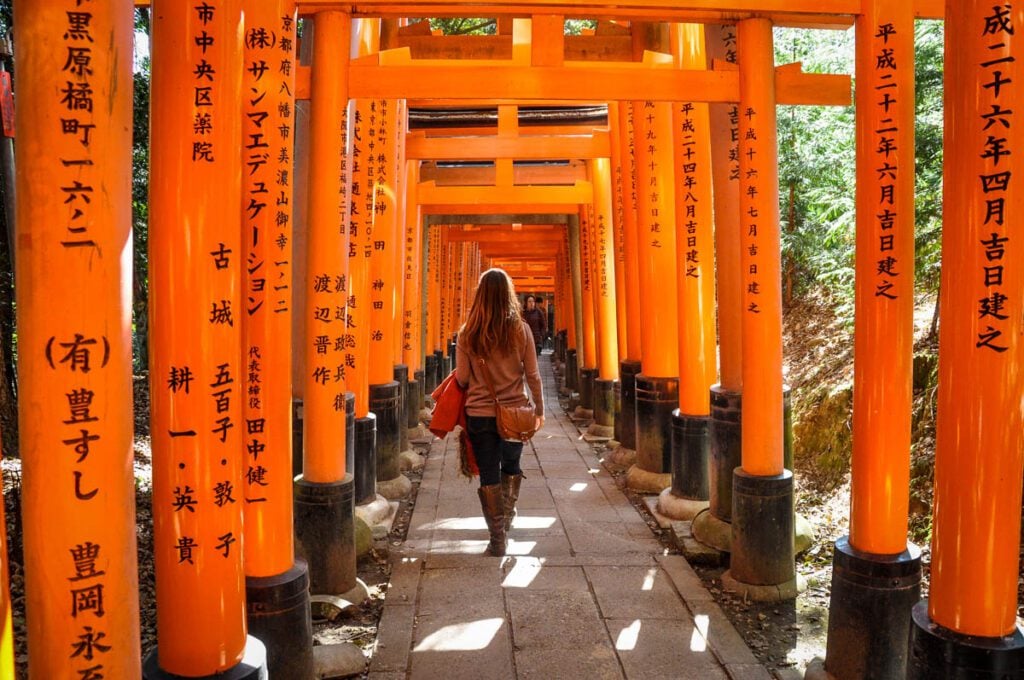
Below is an estimated breakdown of (about) how much money you should plan to budget for a trip to Japan based on your travel style.
*Note: These are estimations for one person and do not include flights.
- You’ll stay in hostel dorm beds, grab breakfast from one of the many 7-Eleven’s or Family Marts, and do as many free activities as possible.
- You’ll be staying in comfortable, though not fancy, hotels or Airbnbs . You’ll want to try lots of Japanese food—both budget meals and a couple nicer ones too. You will use public transportation to get around and you want to see as much as possible, but you’re willing to make some sacrifices to save money.
- Budget isn’t too much of a concern for you. This isn’t necessarily luxury travel, but you are willing to pay more money for convenience and comfort; and splurging on unique, once-in-a-lifetime experiences is not a problem for you.
Japan travel planning tip: This article breaks down the exact cost of a trip to Japan . Based on our own experiences traveling in Japan, we share the costs associated with each portion of our Japan trip — from transportation to food to accommodation to entertainment.
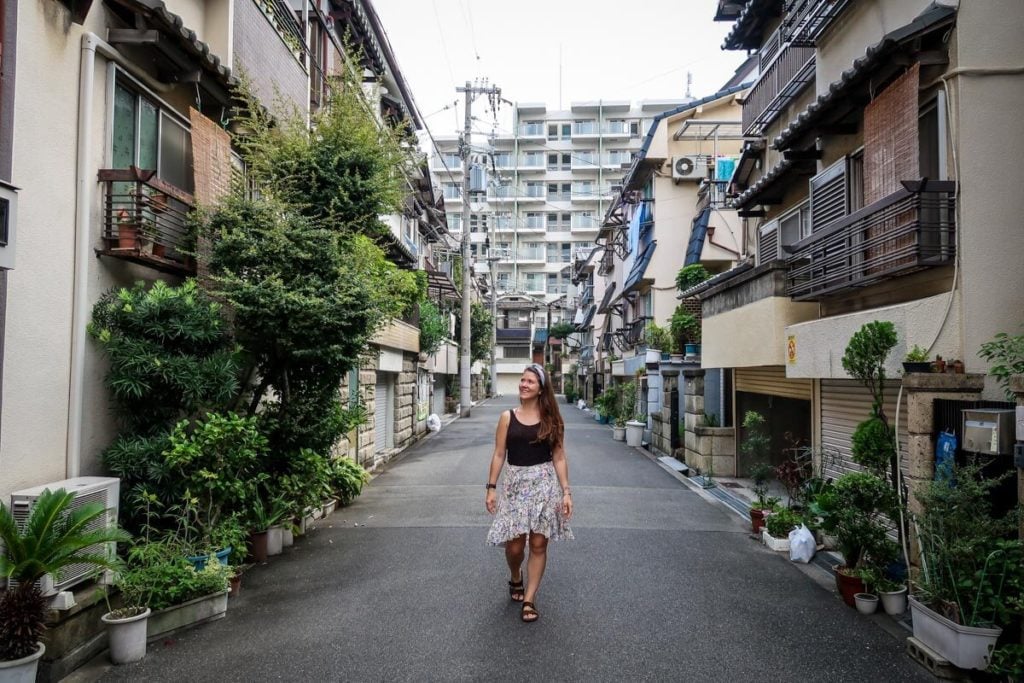
Japan Travel Cost: Exactly How Much is a Trip to Japan?
In this article, we’re breaking down the cost of a trip to Japan — from food and hotels to trains and entertainment. We get super detailed so you can work out your perfect Japan travel budget.
Psst! If you want to know how we afford to travel (& how you can too!) , we think you’ll love this article!
Are credit cards accepted in Japan?
Yes, but hold up…
Major credit cards will typically be accepted at big hotel chains, nice restaurants or shops in large cities, but you’ll want to have cash on hand to use in small restaurants, markets or in more rural towns.
There are still many places where credit cards are not accepted, so it is a good idea not to rely on plastic alone.
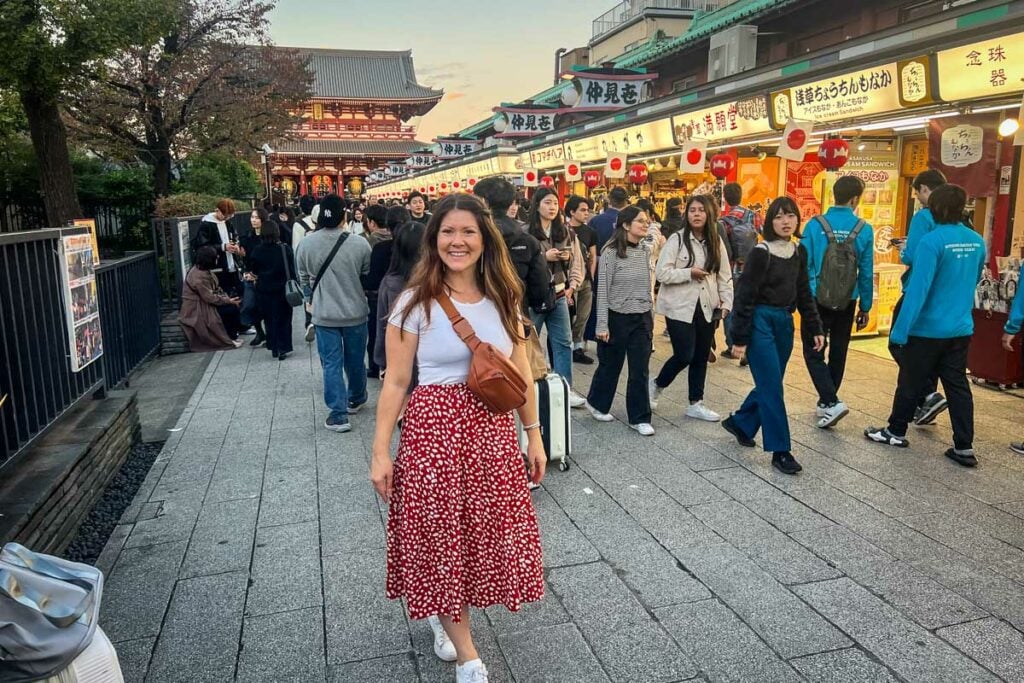
Should I get money from my bank before my trip to Japan?
This is a question we get all the time. The answer really comes down to your personal preference, but we never get money out in advance before international travel.
Whenever we enter a new country, we walk right past the Currency Exchange counters (they are a huge rip off most of the time!) and we go to an ATM to withdraw cash. You will get the best exchange rate by withdrawing foreign currency from an ATM.
If the thought of showing up in a new country without cash on hand makes your hands sweaty, then by all means ignore this advice and grab some yen from your home bank before you leave.
But I will say that airports always have ATMS, and they are easy to find in train stations as well as in 7-Eleven’s and Family Marts in most big Japanese cities.
Before heading to a rural town though, be sure to take out cash just in case you can’t find an ATM.
Credit card travel tips
- Turn on travel notification: Be sure to alert your bank ahead of time that you will be traveling, and where, so they know your transactions aren’t fraud.
- Have a backup card: It’s a good idea to carry more than one card in case you have an issue with one of them. Remember to always pack them in two different places within your luggage — for example, one in your wallet and another in your backpack so if one gets lost or stolen, you still have access to the other.
- Invest in a debit card with no fees: We have a checking account with Charles Schwab , and they reimburse every single ATM fee. This means we never have to take out more money than we feel comfortable with carrying at a time. Try looking into accounts with similar benefits. It will save you so much money on your travels.
- Check out which travel credit cards we personally recommend.
Money-saving tips for Japan
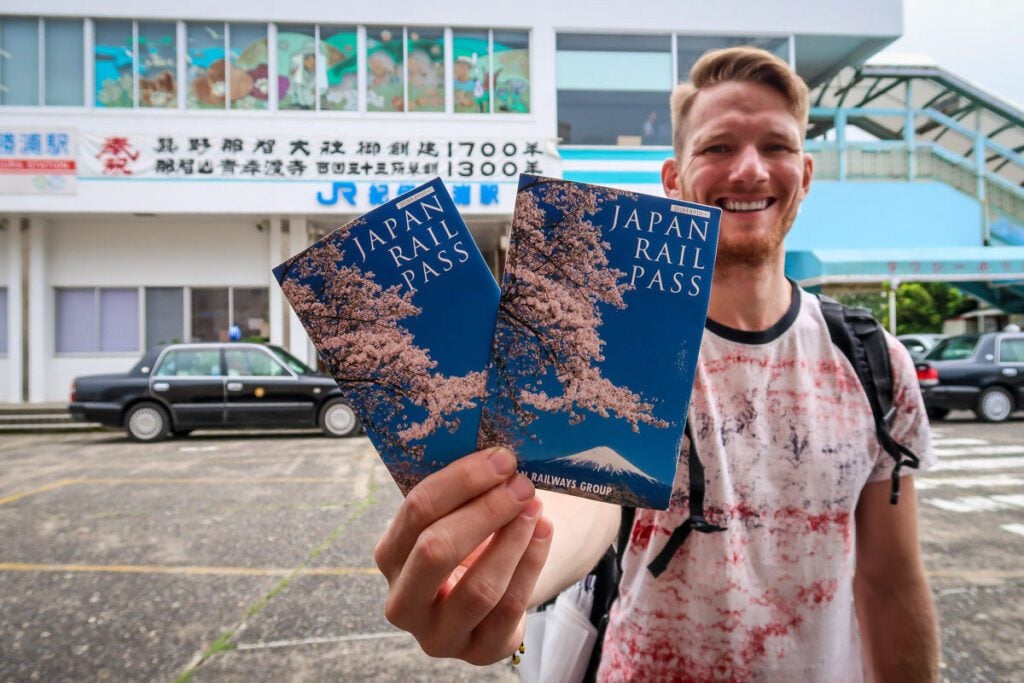
While it’s not a cheap country to visit, there are certainly ways you can save money while traveling in Japan.
- This article breaks down how much the Japan Rail Pass costs and how to purchase it .
- Get your breakfasts and snacks at 7-Eleven or Family Mart (they are everywhere around the country!). While you might never consider eating at a convenience store in your home country, the fresh food options are surprisingly good at these stores in Japan. I’m not joking. You’ll see many locals doing the same.
- Have your biggest meal midday and take advantage of “lunch sets” which often consist of a large meal (sometimes with a dessert) and are typically between $5-7 USD.
- Conveyor belt sushi is a good way to try all the types of sushi your little heart (and stomach!) desire without a huge price tag. Plus, it’s a fun experience in itself!
- Use an app to record your spending and see how well you’re staying on top of your budget! We find it’s much easier to overspend when you don’t know how much it’s all adding up to. We love Trail Wallet for recording our expenses. (We’re not affiliated with them, we just love using it ourselves!)
- Download a converter app on your phone like this one to see the exact exchange rate for your selected currency at the time of your trip, so you always know exactly what you are spending.
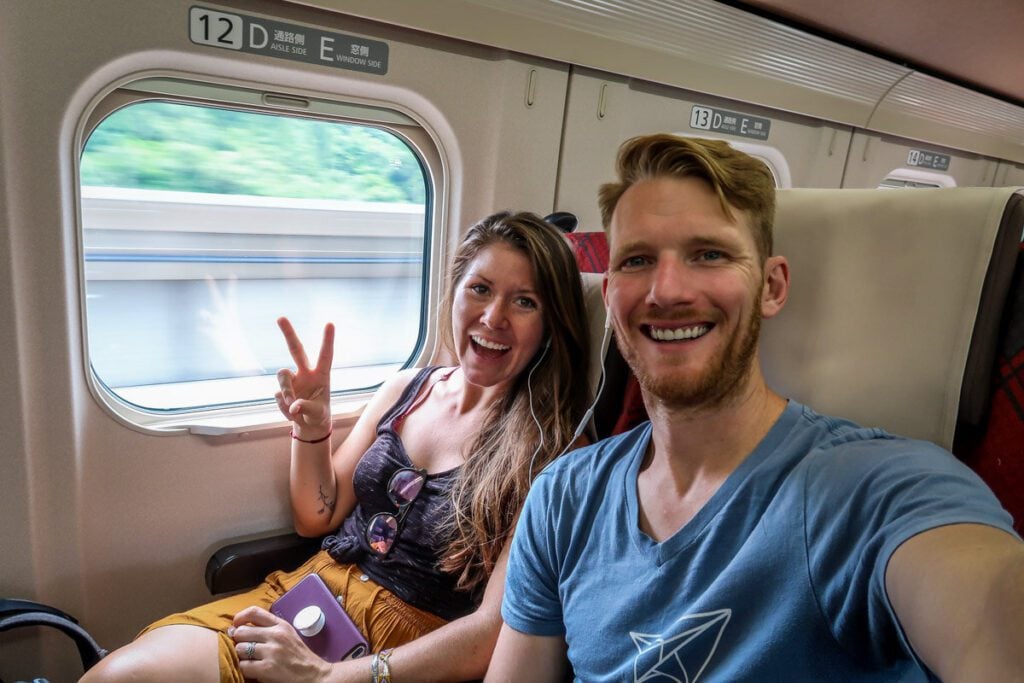
The trains and metros in Japan are some of the cleanest and most efficient in the world , and the rail system covers almost the entire country making it a very efficient way to get around.
However, transportation is one of the biggest expenses to factor into your Japan travel budget .
Travel by train in Japan
We have an entire guide to navigating the Japan Rail system and whether or not getting a J Rail Pass is worthwhile for your trip, depending on your itinerary.
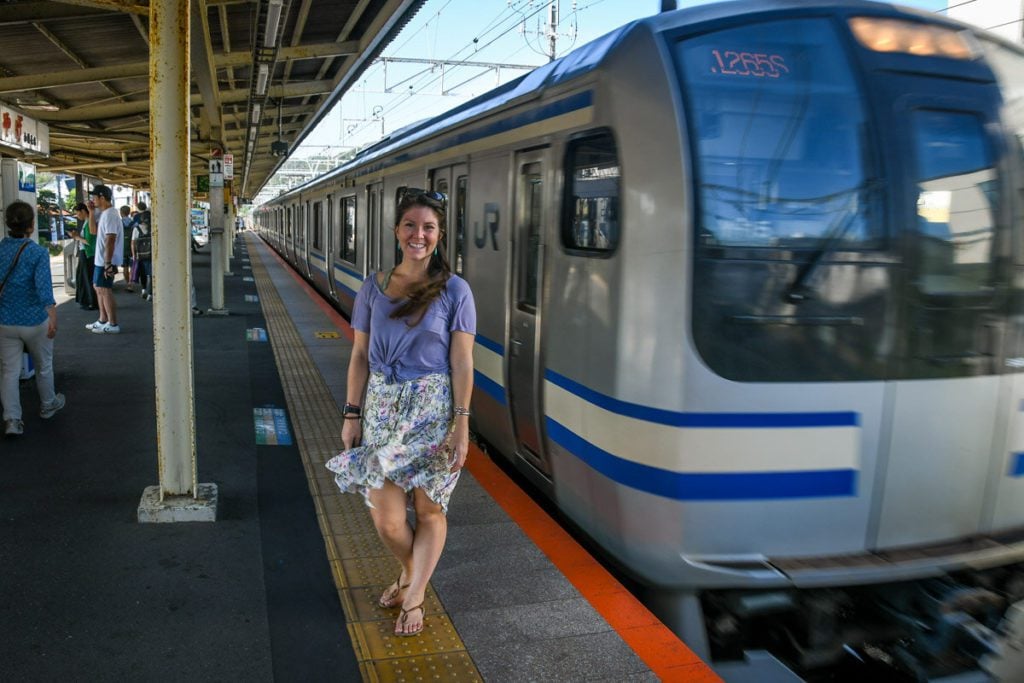
Japan Rail Pass: Where to Buy a JR Pass & Is it Worthwhile?
If you’re traveling to Japan, the Japan Rail Pass can be a huge money saver. We’ll explain exactly when you should purchase the JR Pass and if it is worthwhile for your route. This is everything you need to know including where to buy the rail pass.
Likewise, if you are just planning to spend your time in Tokyo and trying to figure out how to navigate the metro, you can find that info in our Tokyo article .
Renting a car
While we love the ease and efficiency of Japan’s public transportation system, we rented a car during our most recent trip to Japan and we absolutely loved it.
Having our own car was really convenient, especially now that we’re traveling with a toddler . Plus, it gave us the opportunity to get off the beaten path and explore places with very few tourists that would be difficult to visit via public transportation.
I think we will forevermore be renting cars when we visit Japan, even if just for part of our trip. We have a guide to renting a car in Japan (packed with lots of driving tips you won’t want to miss!).
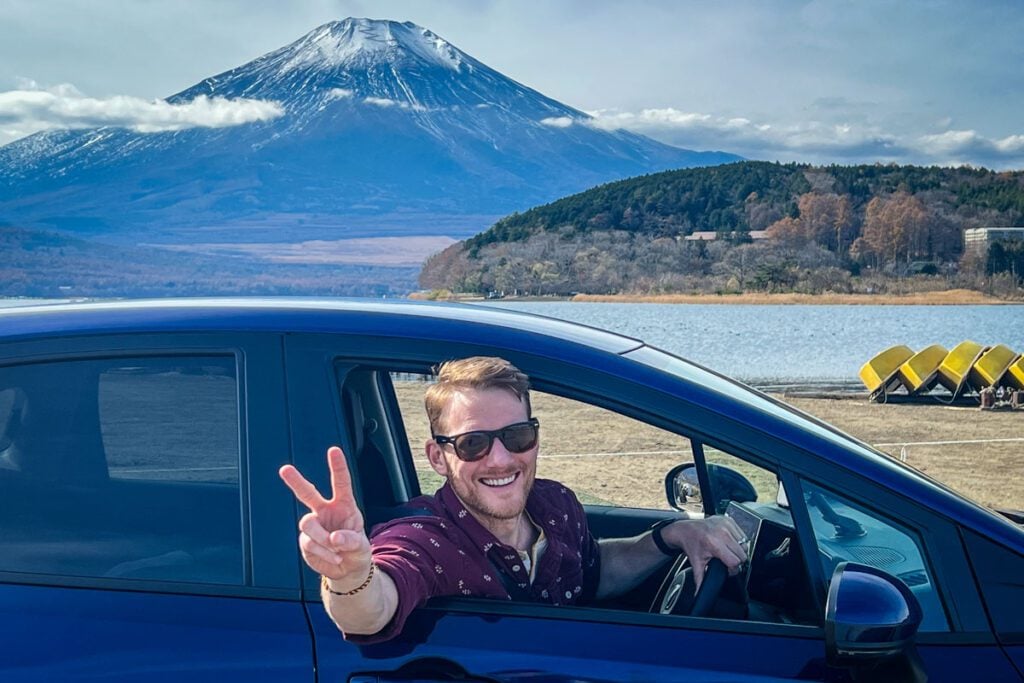
Renting a Car in Japan: Essential Driving Tips You Need to Know!
Renting a car in Japan is the best way to get off the beaten track and see parts of the country most tourists miss. We’re sharing our top tips to help you get a car rental and feel comfortable driving in Japan.
What are the trains like in Japan?
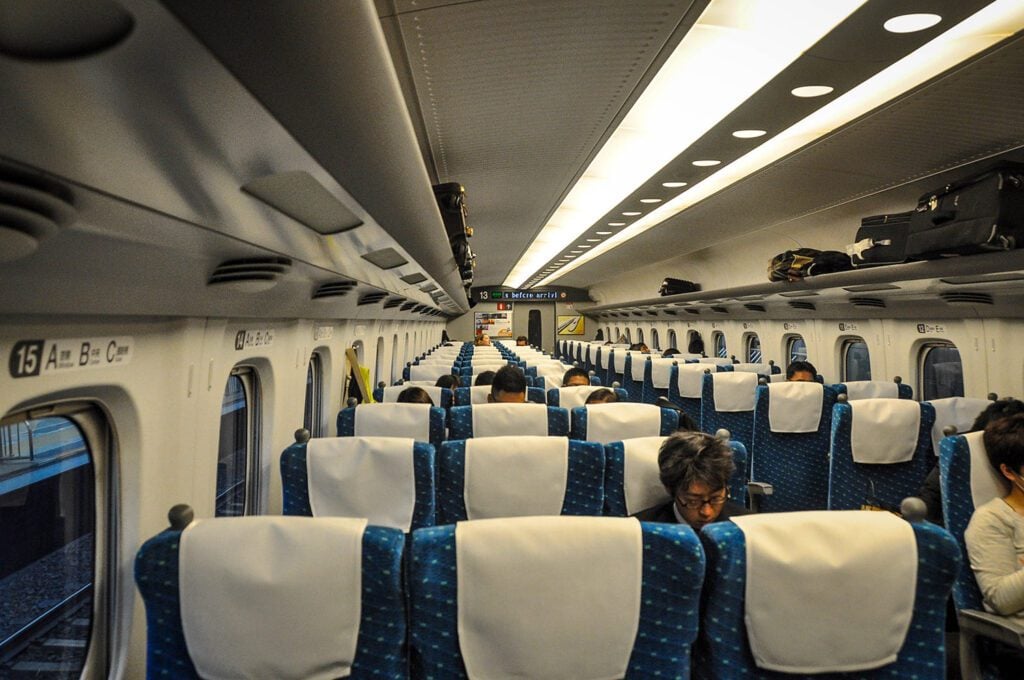
Overall, the trains are clean, comfortable and efficient. The rail system covers almost the entire country, making it a wonderful way to get around. This article goes into detail with everything you’d ever want to know about the Shinkansen Japanese Bullet Trains .
Practical information for visiting Japan
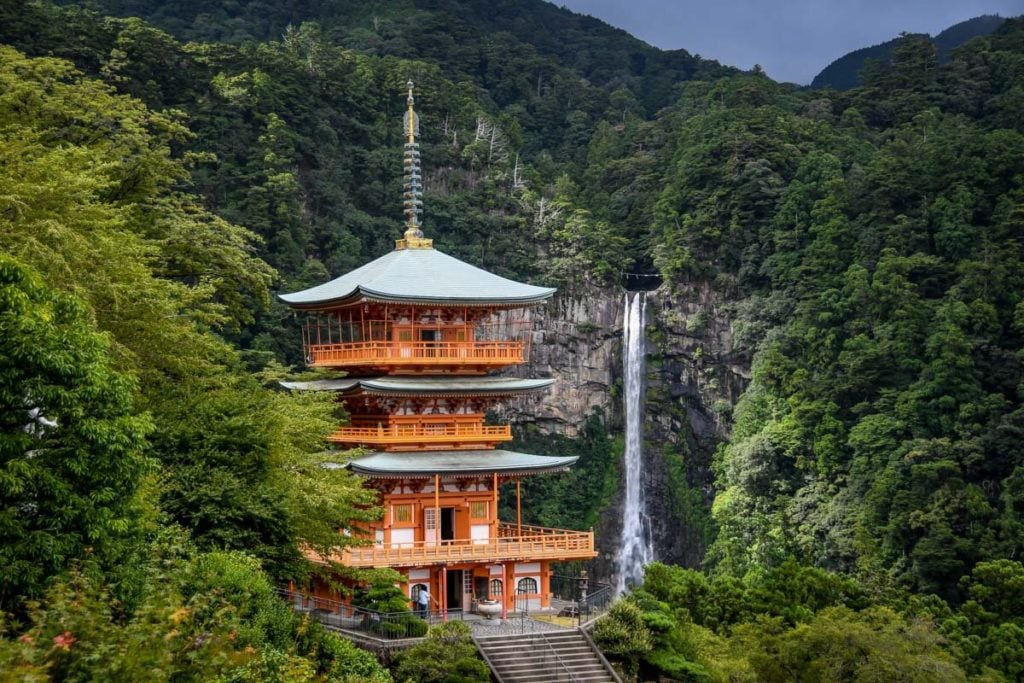
Traveling in Japan for the first time can be overwhelming to plan if you aren’t sure what to expect. A lot of questions can arise that you may not think about with other travel destinations.
We have an article with our top Japan travel tips and advice. This article goes over all the do’s and dont’s for traveling in Japan.
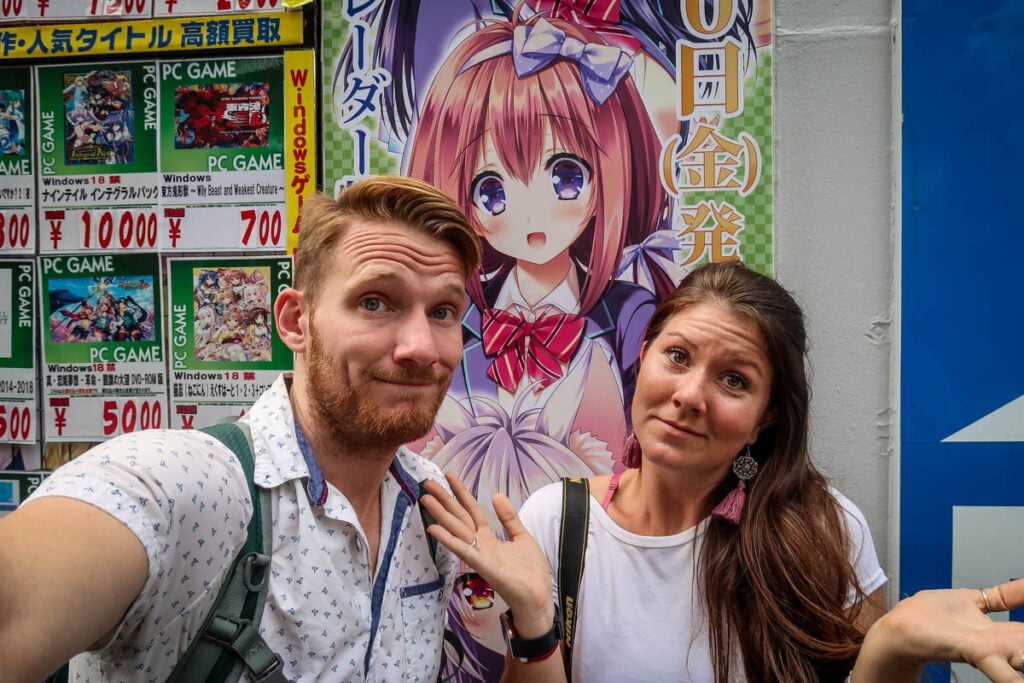
Expert Tips for Visiting Japan (Do’s and Dont’s!)
In this article we’re covering essential tips for visiting Japan, plus helpful advice we learned from personal experience that’ll ensure you enjoy your time in the Land of the Rising Sun even more!
We’ve done our best to narrow down some of the more practical information and answer some specific questions about traveling in Japan.
Do I need travel insurance for Japan?
While it’s not required to enter the country, we always recommend purchasing travel insurance before any trip. It is a small price to pay for the peace of mind you’ll have knowing you will be covered in case of an emergency or if anything is stolen.

For a trip to Japan, we’d recommend getting a plan with Safety Wing insurance . They make it easy to get a quote for the exact duration of your trip and offer the most comprehensive coverage at the best rate.
Check out our travel insurance comparison article for more information on how to pick a policy and what we look for in travel insurance.
How safe is Japan?
Japan is overall very safe and crime is low.
I once met a girl who was an English teacher in Tokyo, and she said she left her wallet in a train station. It sat there, untouched, and the next day when she retraced her steps it was in the same (heavily trafficked) place she had left it.
But even though theft isn’t common in Japanese culture, that doesn’t mean it can’t happen to you. As with any place in the world, always be aware of your surroundings and use common sense.
This is another reason we always recommend getting travel insurance to make sure you’re covered in case anything gets stolen or you run into other emergencies.
Do I need a power converter in Japan?
In Japan the standard voltage is 100 V and the power sockets are type A and B (pictured below). The socket is the same used in North America, but the voltage is lower, so yes you will need a power converter for electronics that don’t already have a converter.
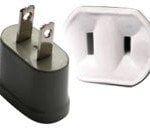
This website is a super helpful resource when it comes to electricity all around the world. Simply select your home country and it will tell you if you need a converter and/or plug adapter for your visit to Japan.
We recommend this all-in-one converter-adapter that works in any country. This means you only need one item no matter where your travels take you!
What are the bathrooms like in Japan?
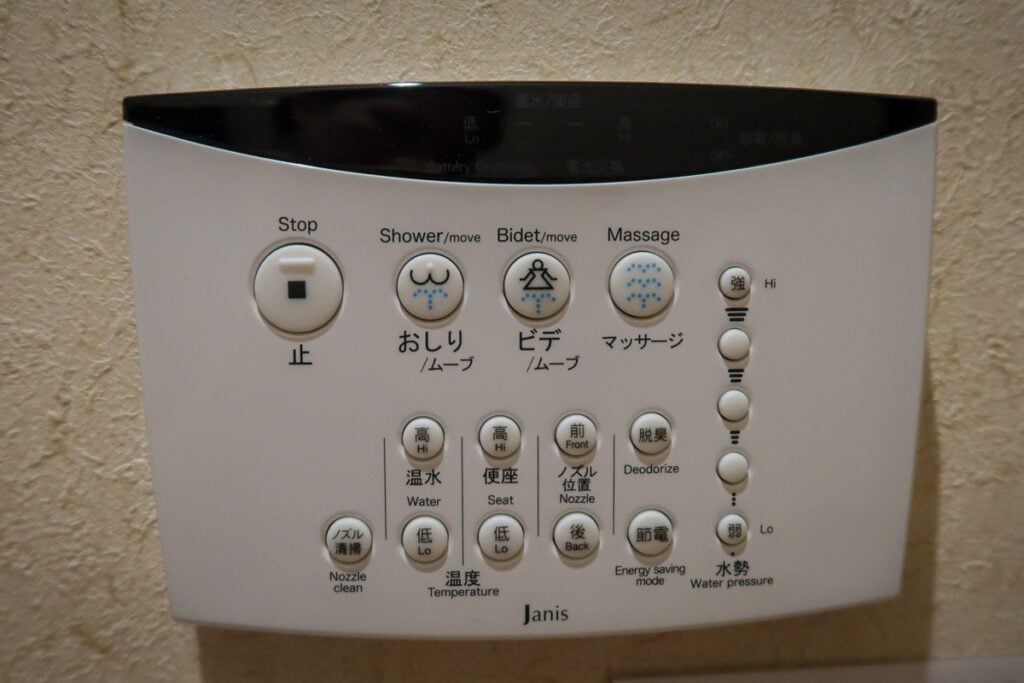
This might be an embarrassing question to ask out loud, but I promise you aren’t the only one thinking it. If it’s your first time visiting Japan, you likely have no idea what to expect when it comes to bathrooms.
The good news is, many bathrooms around the country are very nice and quite… luxurious .
In nicer restrooms, you’ll find toilets equipped with a built-in bidet to spray your bum. And some toilets even have buttons that will play music or rainforest sounds to cover up, well, you know…
Be warned though that in some train stations or in more rural parts of the country, you may find squat toilets similar to ones you’d find in many places around Asia.
How to get cell phone service in Japan
There are two common options for staying connected to data while traveling in Japan: pocket Wifi and local SIM card. This article does a great job of comparing the two and giving our honest opinions about which worked best for us.
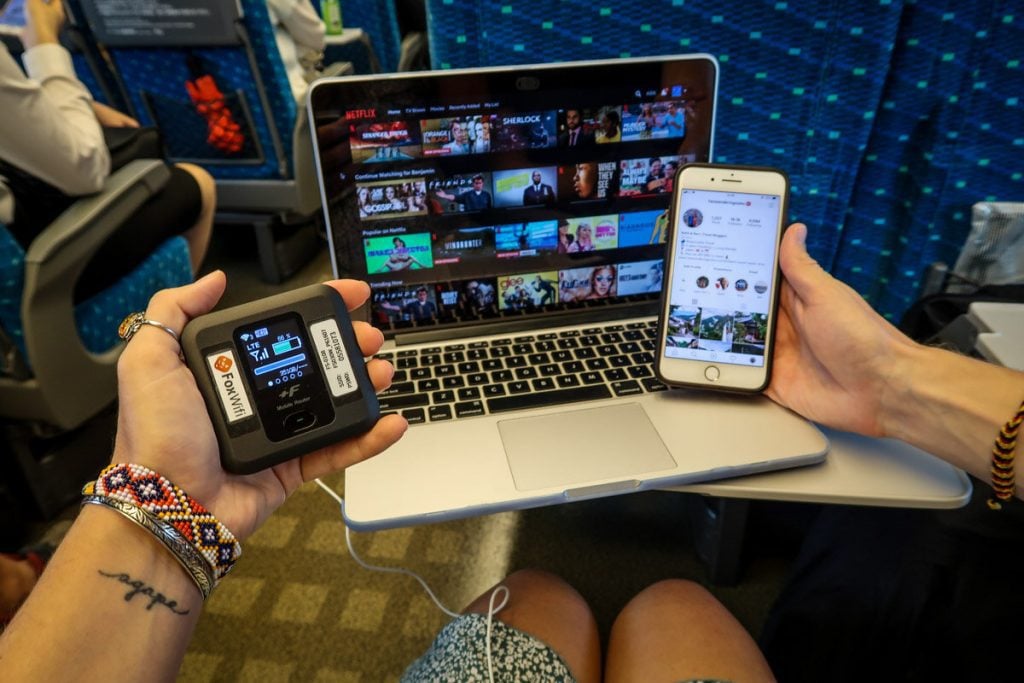
Japan Pocket WiFi vs. Japanese SIM Card: Review & Comparison
Staying connected in Japan is super important for navigating trains and translating menus. But how do you access the Internet in Japan? In this guide, we share our experience using a Japanese SIM card and a Pocket Wifi and tell you which is best for your travels in Japan.
Helpful (& free!) apps for travel in Japan
We have an entire list of the most useful apps for traveling in Japan that you should check out, but here are some of our favorites:
- Google Translate : This is a go-to app for us while traveling in Asia because you can take a photograph of the characters on a menu or label and it will translate for you. Be warned that some things don’t quite translate into English all that well…
- Google Navigation : Can give you the best routes for the metro and trains and even has live updates on delays.
- Hyperdia : The go-to train scheduling app/website in Japan. Plug in a route and it will tell you the times throughout the day and the prices, including each seating class.

Best & Most Useful Japan Travel Apps
Traveling in Japan is made so much easier (and less confusing!) with a few handy apps. Before packing your bags, be sure you have these helpful Japan travel apps downloaded to your phone to make transportation a cinch and the language barrier practically non-existent.
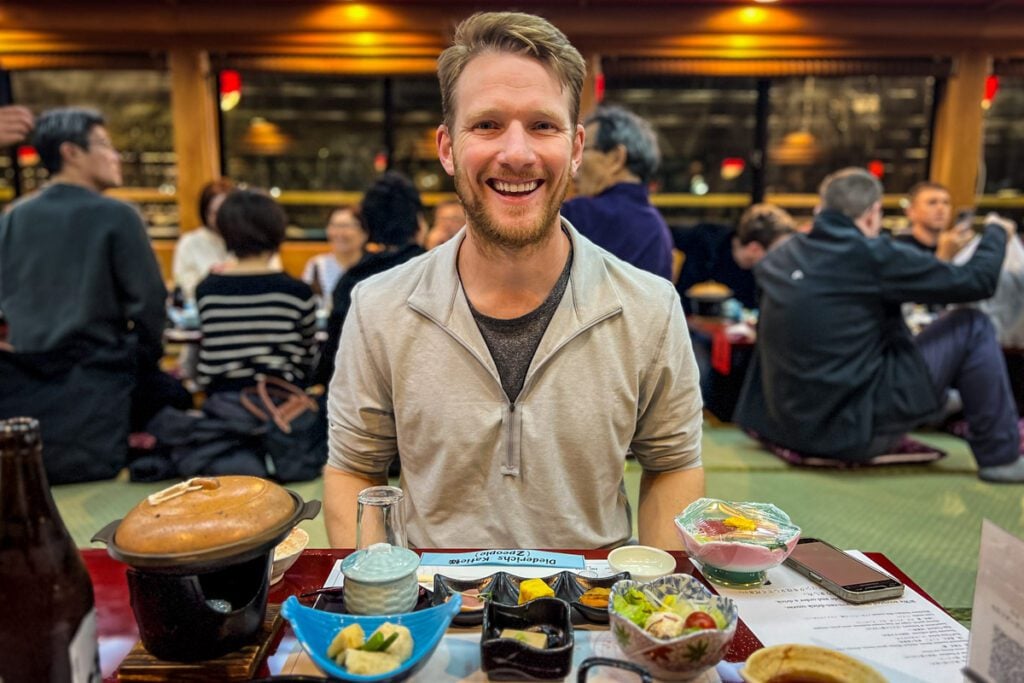
Japanese cuisine stretches far beyond the sushi rolls we’ve come to associate with this country. (Though of course you must try sushi from the source while you’re in Japan!) This article lists the foods you should definitely try in Japan !
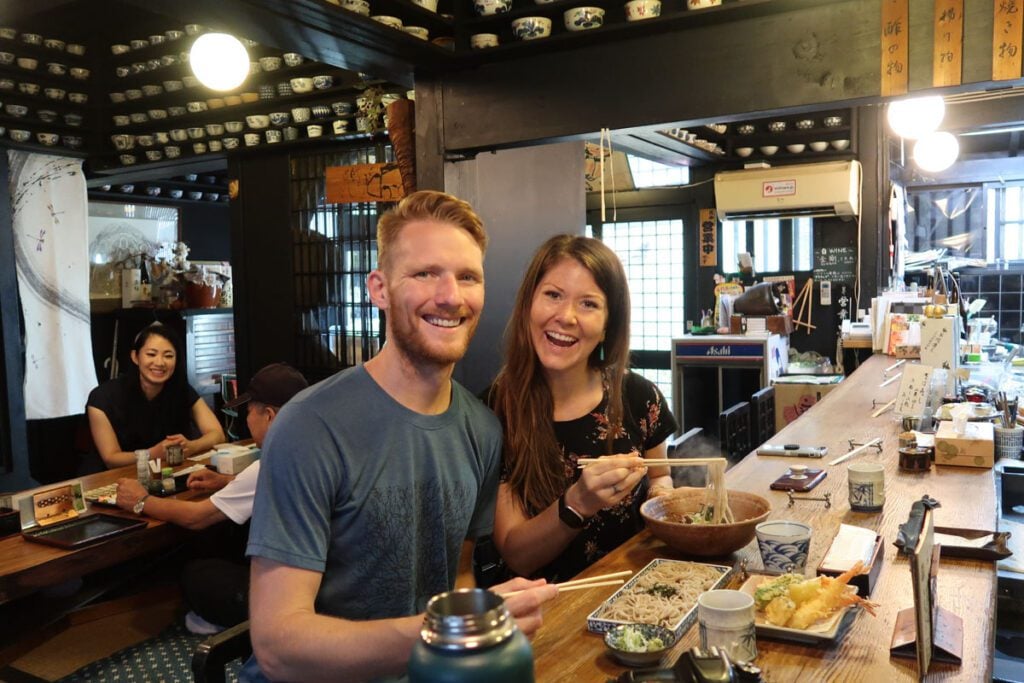
What to Eat in Japan: Foods to Try + Tips for Eating in Japan!
If you’re wondering what to eat in Japan, we’ve got you covered! We’ve put together a list of foods and drinks to try — from famous dishes to those you’ve never heard of. Plus, we’re going over important information everyone should know about eating in Japan.
And if you’re traveling to Japan with food allergies and wondering how that’s going to work. We have a whole section dedicated to dietary restrictions which walks you through what you need to know about Japanese cuisine and how to accommodate your allergies/restrictions in Japan.

Consider doing a food tour
If you want to try as much Japanese food as possible and learn about the cuisine on a deeper level, a food tour is where it’s at!
There are two companies that we trust above the rest for highly-rated food tours throughout Japan:
- We did this Old Town Tokyo Food Tour and really enjoyed it because it was off the beaten path in a neighborhood we would never have explored otherwise.
- Magical Trip is our go-to for unique night time tours like bar and Izakaya hopping. One tour that looks particularly interesting is their Shinjuku food tour in Tokyo.
Japan trip ideas based on your interests
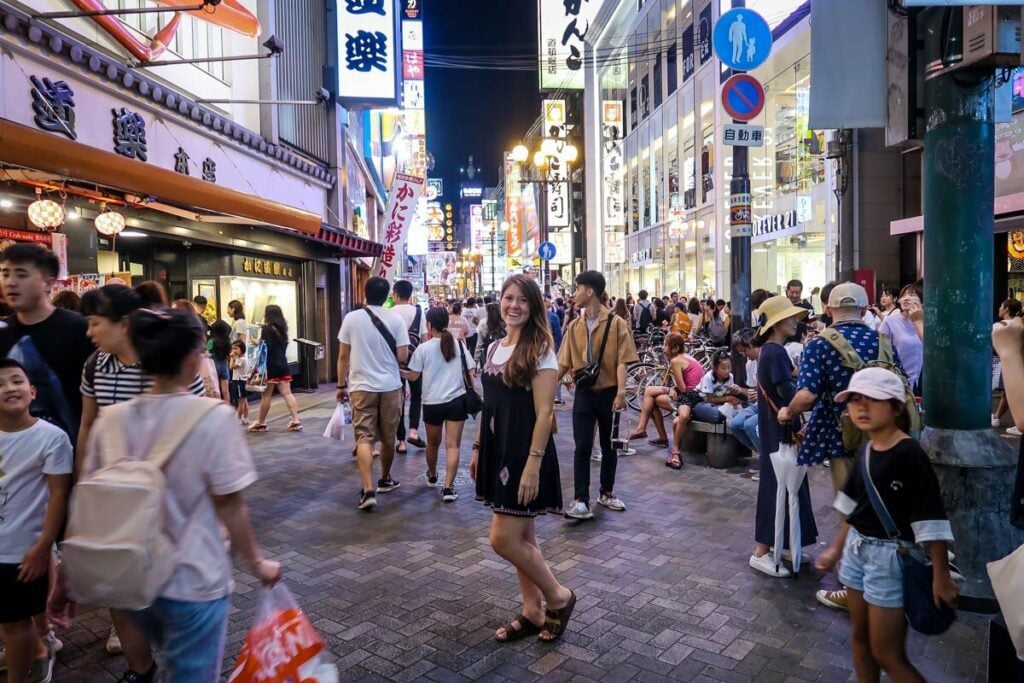
Japan is more than just Tokyo. If it’s your first time traveling to the Land of the Rising Sun , we’d definitely recommend a visit to its capital city as well as some of the other more well-known places like Kyoto and Osaka.
But, if you have been-there-done-that , or you have a lot of time to play with, check out our unique Japan itinerary ideas to get some inspiration.
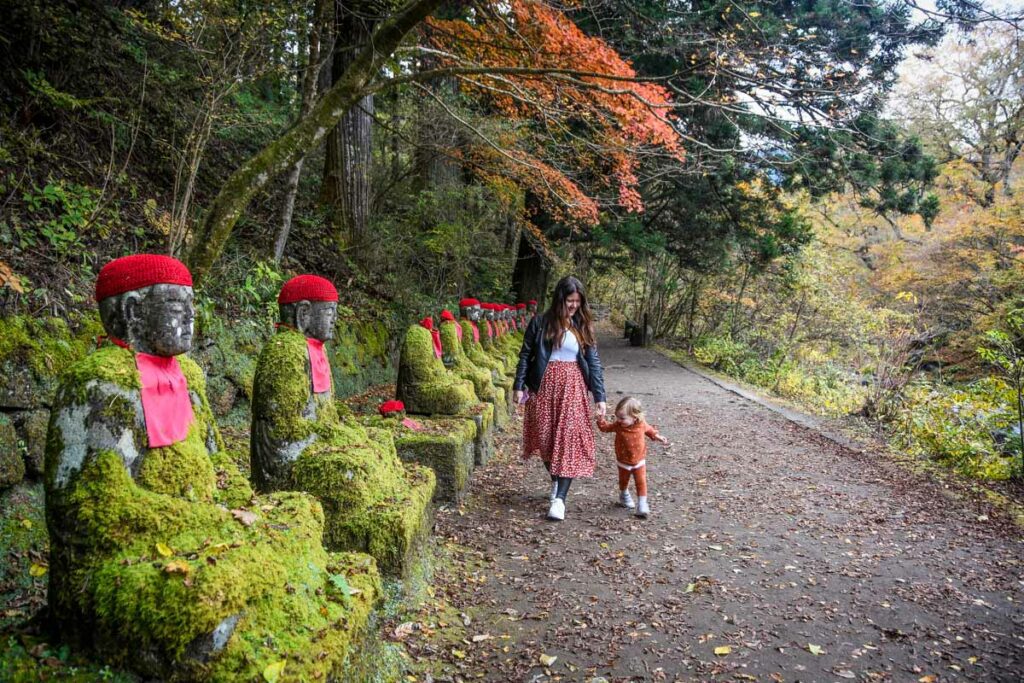
Unique Japan Itinerary Ideas Based on Your Interests
If you’ve been wondering where to start when planning your Japan itinerary, we’ve got some inspiration for you! These unique Japan itinerary ideas are based on your personal travel interests.
We are in the process of creating done-for-you Japan itineraries that are packed full of all sorts of tips we’ve gathered from 3 trips to Japan as well as literally hundreds of hours of research (no exaggeration).
We will have both off-the-beaten path routes as well as a classic itinerary that hits the top attractions. If you want to be the first to know when our Japan itineraries are on sale, get on the waitlist !
If you’re curious to see more about what traveling in Japan is like, we made a video after our first time visiting.
If you cannot see the video, please turn off your AdBlocker. Thanks!
What to pack for your Japan trip
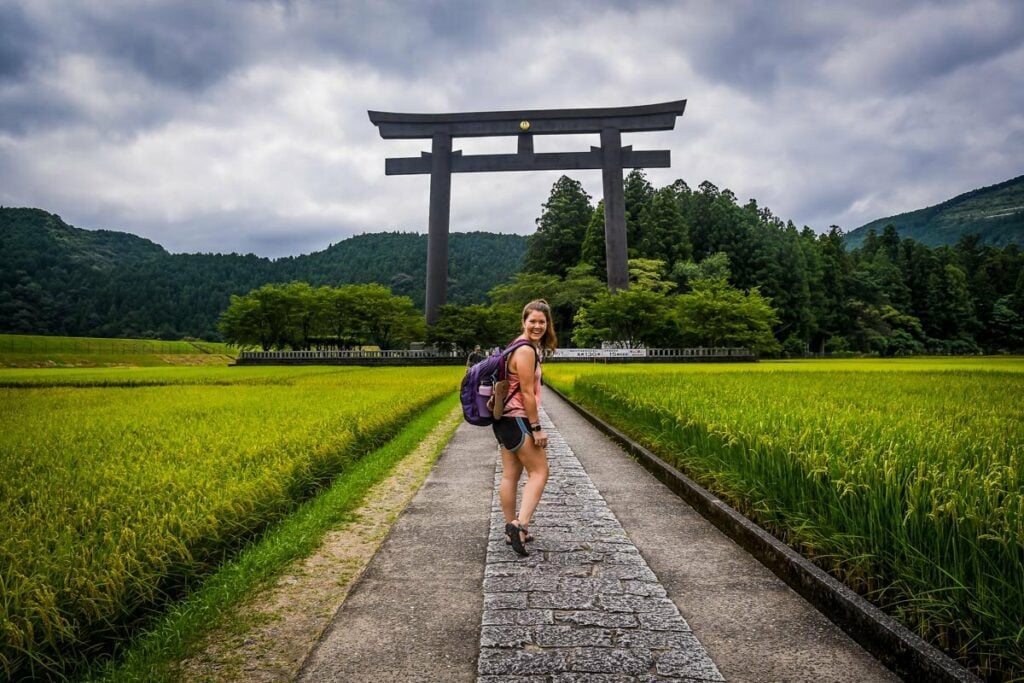
When deciding what to pack for your trip to Japan, a big thing to consider is the time of year you will be visiting. In the wintertime, for instance, you will encounter cold temperatures and will need warm clothing, whereas in summer the temperatures can be quite hot.
We created a whole guide to all the things you need to pack for Japan . Plus, we even have a (totally free!) packing list you can download !
This FREE PDF download includes everything you’re going to want to pack for your Japan trip, including what NOT to bring, plus tons of insider tips! Click the image below and fill out the form to get the packing list PDF sent straight into your inbox:
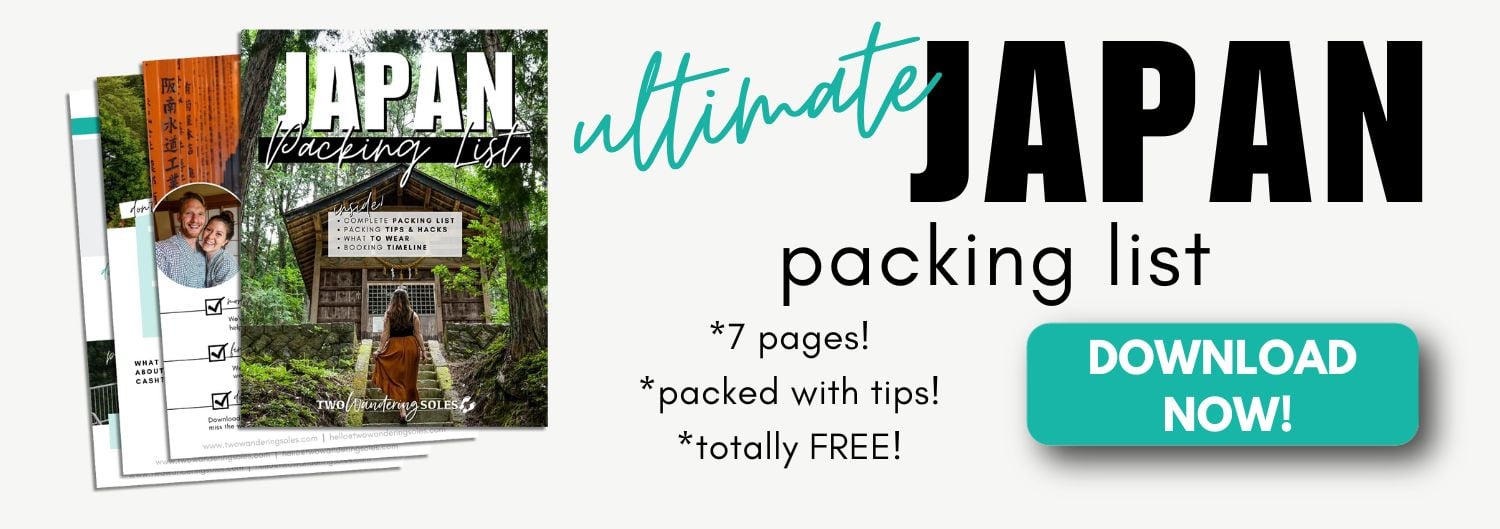
For more tips, check out our packing list for long term travel or the eco-friendly packing list full of travel gear that will minimize your footprint around Japan.
Here are some other items you’ll want to consider packing for your trip to Japan:
- Universal travel adapter : This adapter can plug in to Japanese outlets (and over 150 other countries outlets) safely.
- Away luggage : We recently jumped on the bandwagon and purchased our first Away bags and were not disappointed. These durable hard-sided roller bags come in lots of different sizes and with a lifetime guarantee, they are likely to be the last bags we ever need to purchase!
- Packing cubes : A backpacking staple, these cubes help keep your clothes organized in your bag.
- Power bank : It’s the worst when you arrive in a new city and your phone is dead. Keep it charged with an Anker Battery Pack, this one can charge your phone up to 7 times.
- Travel tripod : If you’re into photography…(if you want some travel photography tips, we’ve got you covered !)
Wondering what to wear in Japan ? We have a guide that goes over exactly what clothing items to pack for each season , including lists for both women and men. We’ll help you build a capsule wardrobe for your trip and let you in on some cultural taboos you should be aware of.
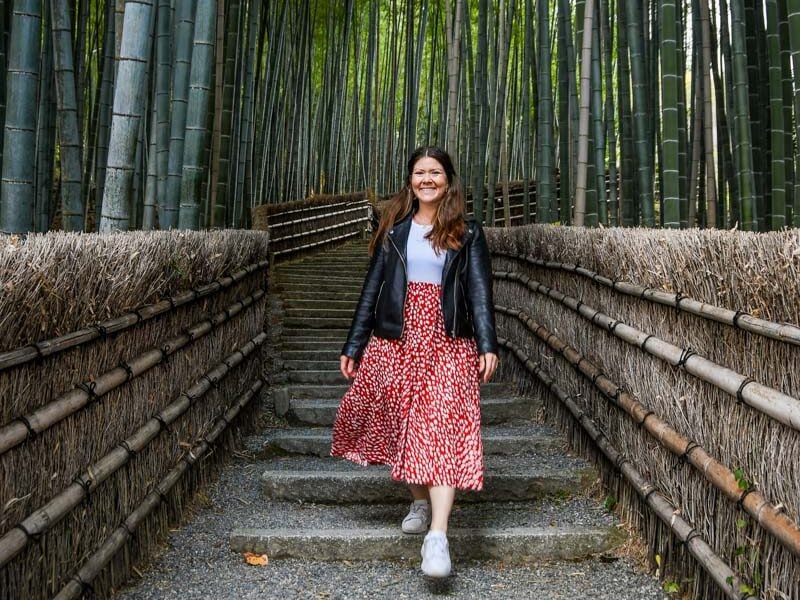
What to Wear in Japan: Packing List + What NOT to Wear!
If you’re wondering what to wear in Japan, this is the guide you need! We’re going over what to wear in each season and how to create a perfect capsule wardrobe. We’re also divulging some items you should not wear in Japan.
What to buy in Japan
If you’re anything like us, you enjoy bringing back mementos from your travels to remind you of the places you’ve been. We have a great round up of things to buy in Japan , including plenty of unique ideas for Japanese souvenirs.
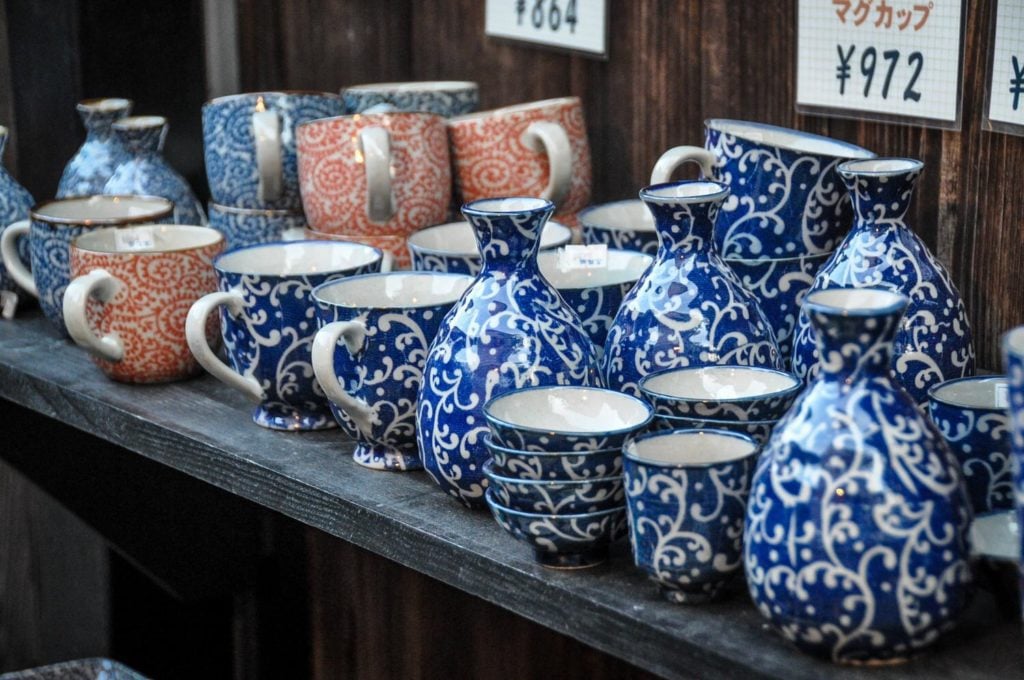
Things to Buy in Japan: Ideas for Unique Japanese Souvenirs
When traveling to Japan, you’ll have no shortage of shopping opportunities. We are going over the best Japanese Souvenirs to buy so you don’t end up filling your suitcase with unnecessary purchases.
More resources for traveling in Japan
We have TONS of resources on travel in Japan and destinations throughout the country. Check out our Ultimate Japan Travel Guide for all the answers to your most burning questions, or read some of our favorite articles below!
- Best Time to Visit Japan
- Is the Japan Rail Pass Worthwhile?
- Best One Week Japan Itinerary for Your First Visit
Save this article on Pinterest for later!
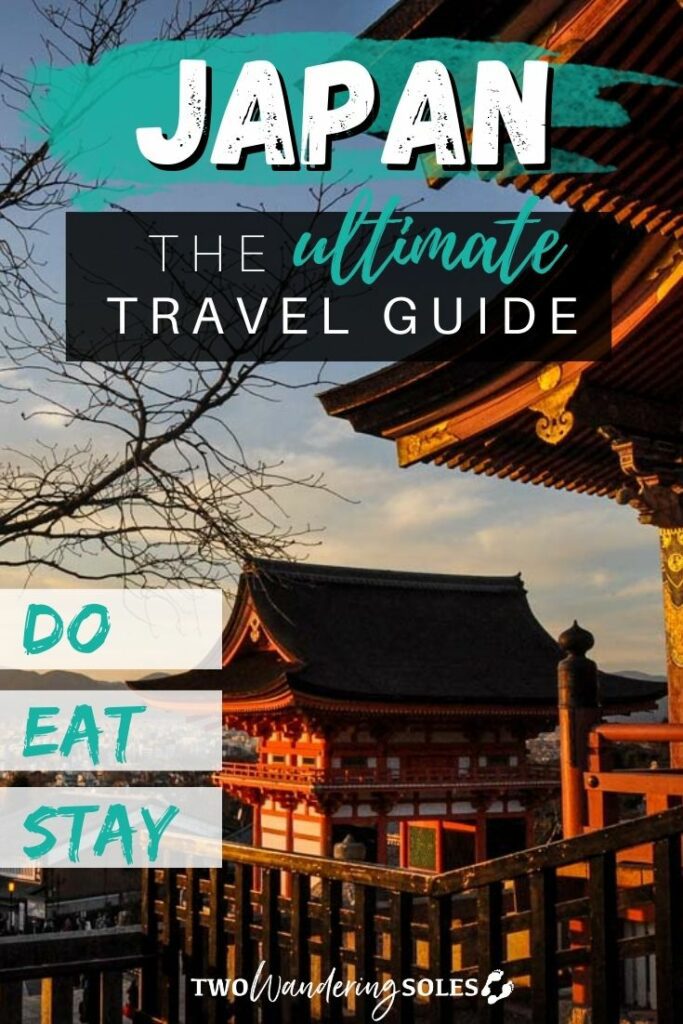
We want to hear from you!
Now that you’ve read through this extensive Japan trip planner, do you feel more prepared for your trip?! Is there anything we didn’t cover that you still have questions about? Comment below and we’ll try our very best to find the answer if we don’t know ourselves!
Comments (160) on “ Japan Trip Planner [2024]: How to Plan Your First Trip to Japan ”
Such great content. Loved your content. Looking forward to more such content.
Hi. My name is Jack, I live in Japan for more than 10 years and run a personal blog jackinjapan.com I would be glad if you can read my work)
Planning your first Japan trip? Exciting! Research cultural norms, attractions, and accommodation options. Consider exploring Kyoto’s historic temples and Tokyo’s vibrant cityscape for a memorable adventure.
Very informative post.
Best Travel Blog I have Ever Read. Thanks for Sharing this Article.
Helpful information of traveling to Japan and different places for making the memories lasts forever.
Your article is marvelous , It is very interesting topic and loved it , you were defined it very clear and make it informative for us. i am came first time on your blog , It is really good. thanks for valueble writing ..
You have understood clearly about Japan Travel Guide. Still you are looking for India Traveling. Embark on a soul-stirring pilgrimage with our Maharashtra Jyotirlinga Tour Package from Mumbai. Traverse the spiritual landscape of Maharashtra as you visit the sacred shrines of the Jyotirlingas, each steeped in ancient legend and divine energy. From the mystical Trimbakeshwar to the serene Bhimashankar, this journey promises an immersive experience of devotion and tranquility. Don’t miss this opportunity to embark on a spiritual odyssey of a lifetime. View more details or book your tour by visiting our website now.
thanks for sharing such amazing information.
Great Info gave by the Admin.
One of my biggest dream! hope can visit japan soon!
This guide has everything you need to know to plan and book your dream trip to the Land of the Rising Sun. We’ve got you covered from visas and flights to transportation and accommodation. Thanks for sharing this amazing information with us…
Thanks to your travelog and detailed info! I’m planing a trip to Japan and this guide will really help me to arranging and planning.
tempotravellerhire
Thank you for sharing this post with us, I was actually looking for same.
Thanks so much, you guys! Glad you like the article.
Nice Article
Thanks for sharing, I would love to travel.
Superb information for the Japan travel guide.
Very helpful; many thanks.
This Japan Travel Guide is an invaluable resource, seamlessly guiding newcomers through the intricacies of booking their first trip with comprehensive insights and practical tips. The engaging content not only simplifies the process but also sparks excitement for the unparalleled experiences awaiting in the Land of the Rising Sun.
This Japan Travel Guide is a comprehensive gem, providing valuable insights on booking a first-time trip. Clear, concise, and incredibly helpful, it’s a must-read for anyone planning to explore the Land of the Rising Sun.
We provides premium uniforms to corporates and industries. Customized uniform tailoring with branding on-time delivery with best price in UAE.
Get affordable Taxi Service in Kochi Kerala: sedan, SUV, Tempo Traveller Taxi Cab Services. South India tour packages, Sabarimala Taxi, Airport Transfer.
Very informative, thanks.
Very Relevant Post. Thankyou so much for sharing this with us.
I just planning to visit Japan. thanks for your guide.
If you aren’t hitting the ski slopes, March to May and September to November are generally considered the best times to visit the country for pleasant weather.
Yes! We are so excited to visit this coming November!
I found the post to be highly good. The shared information are greatly appreciated
Great Article, Thanks for writing.
Nice Article; thanks for writing the informative content.
Nice Artice, Thanks for writing.
it`s a good and unique tips to travel japan
Thanks Carol! Japan travel is amazing, but sometimes it can be confusing for the first time traveler. We are glad you found it useful!
It is my dream to visit Japan once in my life currently I am a student also preparing for a Job but soon I will definitely visit my dream country Japan once in my life to experience heaven on earth and I bookmarked this article for future Help. I really want to thank to the writer of this post,
Thanks for sharing such an informative article.The article was a delightful read, and I found it to be exceptionally well-crafted and enlightening.I think this is a fantastic article, and I really appreciate you letting me know about it.
online casino The source of modern live casinos, online slots, online lottery, online football and various betting that you can enjoy.
Thanks for sharing, I always want to travel to Japan, a beautiful country.
This is so comprehensive! Must have ben so much effort, thanks so much!!!
Wow! This comprehensive resource covers everything you need for planning a trip to Japan. Discover essential tips and information to make your Japanese adventure unforgettable.
amazing information
nice post, thanks for sharing
The blog post was insightful and well-written, providing valuable information on the topic. The content was well-organized, making it easy to read and understand. The author’s writing style was engaging, keeping me hooked from start to finish. I appreciated the inclusion of relevant examples and practical tips, which added depth to the article. Overall, it was an excellent read, and I look forward to more informative posts in the future.
I love and appreciate it so much. And I would like to recommend my blog to the people who visit your blog.
Thanks For Sharing This incredible information
Regards, Carol Although travelling in Japan is fantastic, it can occasionally be challenging for first-timers. We’re happy it was helpful for you!
The article is written very well. It provides such a great information about Japan trip. The content has full information about Japan , i love travelling, your article is very impressive. I would definitely travel this amazing place. Thank you for this great content please read my blogs too.
Wow, guys. This is the most comprehensive Japan travel post I’ve ever seen! There’s no way I could read through this entire thing right now, but I’ll certainly bookmarking this for our future trip to Japan. I noticed that you’re a VIPKid teacher as well. It’s amazing how this company has made traveling a reality for so many of us! Keep the amazing content coming!
Thanks for the in-depth wonderful article you turned out here Enjoyed reading the article above and thank you for sharing good knowledge and information it’s very helpful. I was searching for a travel blog and found your blog site. I like your high-quality blog site design plus your posting abilities. Keep doing it
Thanks Jamie, glad you found it useful. Let us know if you have any questions about traveling in Japan
Yes i am completely concurred with this article and i simply need say this article is extremely decent and exceptionally useful article.
I just found this good blog and have high hopes for it to continue. Keep up the great work, its hard to find good ones. I have added to my favorites. Thank You.
Thanks for sharing this article it was quite insightful. Hoping to see more articles. Meanwhile, refer
amazing blog thnaks for sharing with us
yes, It is very helpful to take help from japnanies tourist guide. I love your post. thanks keep it good information.
Wow! Great works guys – this is a superb guide. The amount of work you’ve put into this is seriously impressive. Good practical information and tips too.
I’m also an onsen fan, and I completely agree for the truly immersive cultural experience nothing beats staying in a ryokan (traditional Japanese inn).
Travelling with your whole family or a group of friends to Manali? Just book a Tempo Traveller in Manali, and you and your whole group can travel in just one vehicle, that too in comfort and leisure. Chiku Cab helps you book tempo travellers even for the entire Golden Triangle tour of India.
GTS cab service in Dehradun comes with the top-notch facilities of Clean Cars, Well Trained Drivers and 24*7 Customer Support.We provide all type of car including sedan, Dzire, xcent, or an suv, Innova Crysta, We guarantee to provide both on-road and online safety for our customers. For on-road safety Book Online Cab in Dehradun at Low Fare for One-way or Round-Trip, Local Hire affordable full day sightseeing taxi from Delhi to dehradhun Call Now +918191008100.
Nice blog! I really like it. Japan is one of my dream place in my travel list.
Thank your for this plan
Really enjoying all of your Japan blogs – they’re so helpful for planning while waiting for travel to open up again!
I loved your post…
Hi, Nice blog.
I read your blog thanks for sharing.
Thank you for sharing this blog. You have summed up all the beautiful topics of Japan in this blog. Keep up the good work guys!!! If anyone wants to visit India we are here to serve you the best taxi service all over India. For more information visit our website
Excellent site except for the lack of info on Tokyo bus and subway passes/fares. Need info on where to buy, how to buy, cost and what they can be used for.
If I see a good post, you will not go without praising me, because every word written in the post you have written is very thoughtful, your way of writing is very beautiful and your views are also very good. This is a commendable post, as much as this post is praised, it is less, you should keep writing more beautiful posts in your life.
Really the knowledge given by this blog is 100% thanks for making such a knowledgable article on travelling life.
Thanks for this great article! Have got of tons of ideas for my trip! This country is definitely now my bucket list on more priority now!
Thanks a lot for sharing all the details. would really help me plan my trip in a better way!
This is the first time I visit here. I found so many interesting stuff in your blog especially its discussion. From the tons of comments on your articles, I guess I am not the only one having all the enjoyment here keep up the good work.
It made me more crazy for Japan. Soon will plan for it.
how worthy things has been provided in the article thanks for posting
what a great article about japan. its been a my favorite country always
Japan is on my family’s bucket list. I am definitely going to pin this guide for reference when I am planning
Thank you for information about Japan! Does anyone have an itinerary with a trip to Japan on the Worldee?
Amazing Japan guide! Cant wait to go back!!!
Really amazing blog about travelling, I am looking such type of blogs but finally, I got it the way the things described is totally amazing.
Thanks so much, glad you enjoyed it 🙂
Great Info. Thanks!
Glas it’s helpful 🙂
Nara was mind-blowing! The Deer, walking up to you, begging for food, the Mochi pull at the mall and all the beautiful Temples. Unfortunately, it rained during our visit, but I still look at the pictures and think about how lucky I am to have seen this.
Perfect Travel Blog Guide For the Travel to Japan.
The blog is brilliantly written and provides all necessary information I really like this awesome post. Thanks for sharing this useful post.
Hi! Such a wonderful article. Japan is definitely a beautiful place to visit, will be adding this to my travel bucket list
Nice Post. best information about Japan tour, Japan is technology city. The travel experience is great.
Love this article! Thanks for sharing.
Hey, your post is amazing and informative. thanks for sharing this info. If you want to travel anywhere in India, our taxi service is available all over India.
Wonderful content. Really thought provoking and super informative. Keep it up guys.
What an amazing and extensive post. I would like to add something to the foodie part. Japanese food is amazing, and while you can try delicious things in Tokyo, every region and city has its specialties. For real foodies I would suggest visiting the following cities and trying the following foods: Osaka – Osaka style Okonomiyaki and Takoyaki Kobe – Kobe Beef (other regions also have amazing Wagyu) Hiroshima – Hiroshima style Okonomiyaki and Oysters Nagoya – Hitsumabushi and everything with red Miso like Miso Nikomi Udon Fukuoka – Hakata Ramen Of course, there is much much more but these are the foodie highlights of Japan.
wow i have a dream to visit japan
Impressive writing. You have the power to keep the reader occupied with your quality content and style of writing. I encourage you to write more.
very nice info, i will go there soon!
very nice place and recommended to visit
As someone that had lived in Okinawa (Military posting) for two years, I never got to travel around Japan. I’m planning on a trip next year. Should I have one AirBnB that I use as my ‘home’ for my trip (I’ll be in Japan for about 3 or 4 weeks) or should I only book spots for a couple of days while I travel around the country?
Very interesting article, thank you for sharing your travel experience to Japan. By reading this, I want to come to Japan. It’s nice to come there and feel the holiday atmosphere in Japan. landhoteldiever.nl
Wonderful post! Congratulations!
honestly WOW! this website is so useful and helpful and it has really, and I mean REALLY good info on Japan. This has helped me so much to plan my dream trip to Japan and I thank you both! Katie and Ben! for taking the time to share your experience and your knowledge that ultimately helped me in so many ways! THANK YOU!! ♥♥♥♥♥♥♥♥♥♥♥♥
Outstanding vacation point. Great!
Great Post. Thanks for sharing Great information about Japan tour, The travel experience is great.
Thanks so much for your nice comment! Cheers!
Hey Guys, I just have to say "hats off" on this guide… "Ultimate Guides" are so misused and the term gets thrown around so much it’s nice to actually see one that’s this robust!
Thanks so much Sara! Are you planning a trip to Japan soon? Let us know if you have any more questions. Cheers!
You are very welcome Agen! Let us know if you have any questions!
a very extraordinary website ! your discussion is really very helpful. thank you very much for what you convey. Good luck always.
Thank you so much for your nice comment, we really appreciate it. Let us know if you have any questions about traveling in Japan!
Hi Really grate information. you have done your best. I hope one day I can afford it to take a short trip to Japan which is my wonder land. I have been reading Japanese for a while. (Mai asa watash wa nihon go benki shimasu) (domo arigato gozaimasu)
Thanks so much for your nice comment!
Planning to visit Japan in autumn of 2019, found a lot of interesting information and some very good suggestions/tips here, thanks!
You are very welcome Mari! Hope you have a great trip to Japan!
Wow, thanks for sharing Katie and Ben, this is insanely detailed and covers everything a traveller needs!
If we may add just add some safety issues for fellow travellers to watch out for, mainly do be aware of some of the bar scams and bill padding that happen in Roppongi and Shinjuku, as well as donation touts/scammers. May everyone enjoy Japan!
Thanks for the tip David, but from our experience we didn’t see any scams while traveling in Japan.
Will be using this in the future with specific items to get before hand. Traveling to Japan alone and for the first time in a couple months. Extremely excited and nervous ? Thank you!
Hey Cody, Thanks for the comment. Traveling to Japan solo can seem intimidating, but it is totally possible. Let us know if you have any questions, we would be happy to help. Cheers, Ben
what’s your camera and lens? 🙂
We have a Nikon D7500 DSLR camera that we take most of our photos with. If you want more tips on travel photography, you might want to check out our article on it. Let us know if you have any questions. Cheers!
Oh my your post is verrrrrryyyyy informative. I wish I saw this before our trip. Anyhow, will keep this in my bookmarks for my future travels in Japan. Thanks a lot.
Dang, sorry you missed it. Hopefully it will be a good start for your next trip!
Wow! Very informative. I’ll be sure to use these handy hints when we go there next year!
Glad you liked the tips, Melissa. Hope you have fun planning your trip to Japan!
I literally found this post very interesting and it just cast spell on me. I am soon going to visit Japan, thanks for sharing this post.
You are very welcome. Have fun visiting Japan soon!
Hi Good Morning to all of us! How is it like going to live at Japanese are more confidence swept even though they not shy fronts others? What can they most travel like wise Japanese become the standard language, seeing use in most official communications among JAPAN;which later developed in "Kanji" which is a form of writing used to express ideas in the Japanese and Chinese languages.[11] many ordinary Japanese people tend to consider the languages as dialects of Japanese. This is the result of the official language policy of the Japanese government, which has declared these languages to be dialects and prohibited their use in middle high education after graduation even though they will understand unfortunate front of and others?
Thank you Karen for the additional information on Japan.
Hi Katie & Ben…My better half and I visited Japan last week from India and had a wonderful trip…thanks to your travelog and detailed info! We blindly followed your steps at almost every point and did very little customization. Thanks again for these contents. Keep traveling and guide amateurs like us 🙂
Thank you so much for the kind words. It truly makes our day knowing we have helped make someone’s trip better or easier! Thank you for taking the time to let us know! It just brought a smile to our faces 🙂
Great and useful information about travelling through Japan! But are you sure that a two-way trip from Tokyo to Kyoto covers the price of the 1 week JR-Pass? Maybe it depends on your location, but where I am from (NL) it seems cheaper to buy two separate tickets. Especially considering that you cannot take the fastest Shinkansen (Nozomi) when using the JR-Pass.
Hey there JapanYo, the round trip ticket from Kyoto to Tokyo is basically the same price as the one week JRail Pass. And if you are traveling anywhere else in Japan, even intercity, if you have the pass, you can think of all your other train trips are free, since you can ride JRail unlimited times within the week.
And you still can ride the Shinkansen Bullet Trains with the pass, the only one it excludes is Nozomi.
Hope this information helps others choose what’s best for them when traveling to Japan.
The ultimate Japan travel guide helps me a lot in planning my trip. The pictures look beautiful and stunning. I really enjoyed the trip and please let me know what are the other incredible sights to explore in Japan.
Hey there, Glad you liked the article. We have tons of tips and advice in our other Japan articles, so if you don’t find what you’re looking for here, be sure to check out our Japan travel page.
Loved your post.
Thanks so much Japan Tours! Glad you liked it!
I’ve been offered a place in japan to intern so cherry blossoms here we come!
Congratulations D on your internship! Cherry blossom season will be a beautiful time of year to be in Japan.
Great guide! So many helpful tips!
Thanks so much DeJuan for your comment.
Excellent guide! I frequent Japan so I’ll be sure to keep your tips in mind 🙂 This is so comprehensive!
Thanks Lev, glad to hear you like it. Let us know how it comes in handy for your next trip. Cheers!
Wow. This is simple epic. Not sure how long it took you to write this but it’s AMAZING and having been in Japan couldn’t agree more!
Thank you so much Paula! We spent a lot of time on it, so it is wonderful to hear that you find it helpful (especially since you’ve been to Japan!).
Wow what a great resource. You have really covered everything you need to plan a trip to Japan.
Thanks Patti, glad you found it useful!
Wow, I think this is the most thorough guide to Japan ever! Guys, you should create an ebook out of it! It’s not only good for first timers, but for anyone giving Japan a visit!
Aww thanks Bistra. We tried really hard to make it one of the best Japan travel guides out there. Glad you liked it!
Japan is on my family’s bucket list. I am definitely going to pin this guide for reference when I am planning.
Thanks Jamie, glad you found it useful. Let us know if you have any questions about traveling in Japan.
Wow, guys. This is the most comprehensive Japan travel post I’ve ever seen! There’s no way I could read through this entire thing right now, but I’ll certainly bookmarking this for our future trip to Japan. I noticed that you’re a VIPKid teacher as well. It’s amazing how this company has made traveling a reality for so many of us! Keep the amazing content coming!
Thanks so much you guys! Glad you like the article. VIPKID is awesome and has really helped us stay on the road. So nice we can teach from anywhere in the world.
Wow! This IS the ultimate Japan travel guide – complete with what to do during what season, costs, and some Japanese words. Thank you for this!
Seriously it’s a total Japan guide
Leave a Reply Cancel reply
Your email address will not be published. Required fields are marked *
Save my name, email, and website in this browser for the next time I comment.
Japan Trip Cost: Pricing for Flights, Food & Accommodation
Plan your Japan trip with ease! Get the latest costs for flights, food, & accommodation. Perfect for travelers on any budget. Click for budget tips & more.

There are plenty of reasons to visit Japan, as the nation has a lot to offer tourists. Because it provides visitors with so many wonderful experiences, most people think of it as a tourist's paradise. Before you leave for Japan, you should create a thorough budget outlining the general budget of your vacation.
The average cost of a 7-day trip to Japan is $1,659 for a solo traveler. That leaves us at about $237 per day per person. This includes travel expenses, local transportation, food, accommodation, and sightseeing. It is calculated based on the expenses of previous visitors and can go slightly up or down depending on your spending habits.
There's so much to calculate on the cost of a Japanese trip. Read on to find everything you need to know, including how to cut costs and travel to Japan on a budget!
Average Cost Of A Trip To Japan

It's important to note that the average cost of a Japanese trip differs from the average daily expenses. While calculating average cost, you'll need to include flight tickets, accommodations, car rentals, etc.
That said, the average price of a 7-day trip to Japan will range between $1558 to $2100 per person. You can expect to spend up to $2750 as a couple and $5,124 for a family of four. These amounts can go slightly up or down depending on your spending habits.
Japanese hotels will typically charge between $62 and $312 per night. Vacation rentals will charge between $144 and $553 per night. International flights to Japan would cost between $952 to $1,673 per person for economy tickets, depending on where you're flying from.
Intra-city transportation, food, sightseeing, and other miscellaneous expenses will eat up a significant part of what's left in your budget.
Also, don't forget to think about setting up an emergency fund , just in case you run out of money on your trip.
Average Daily Expenses in Japan

While in Japan, your daily expenses will significantly depend on how you choose to leave. After reviewing the daily expenses of many visitors to Japan, we've concluded that the average daily expenses on a trip to Japan are between $26 to $72 if you decide to live on a budget.
Mid-range spenders can expect to spend between $73 to $143 per day, while high spenders will spend anything above these figures. Now, while preparing your budget, you must decide what spending level you'd want to maintain throughout your plan. Pick a number and multiply it by the number of days you'd like to stay to determine how much your daily expenses will cost.
Remember that these figures do not include flight tickets, transportation, or other significant spending. So, you must include provisions for all those in your budget. It also makes sense to have some money kept aside in an emergency.
Finally, the prices listed here are the average costs of traveling and living in Japan. The prices may increase or decrease depending on the types of activities you choose to do in Japan.
Factors That Determine The Cost Of A Trip To Japan
Now that we've discussed the average costs of a Japanese trip, you're probably wondering how we arrived at the amounts. These are compilations of small amounts for different expenses. That said, here's a detailed review of factors that'll make up an average Japanese trip cost.
1. Flight Tickets

This is perhaps the most crucial item on the list because you must get to Japan to experience Japan. Fortunately, flight tickets are not as expensive as some people usually predict unless you intend to fly first class.
Japan's location and popularity mean it's a favorite destination for most international airlines. Most of these airlines won't mind offering cheaper flights and other promotions once in a while. You can jump on these promotions and discount packages to travel to Japan. You just have to be on the lookout for them and plan your trip to fall within promotion time.
Notwithstanding, other factors like airline choice, packing fees, and flight snacks can also affect your overall flight cost. The average cost for international flights to Japan includes:
- $952 to $1,673 per person (Economy class)
- $2,241 to $4,052 per person (Business class).
Remember that these prices are strongly affected by airline choice, where you're traveling from, and seasons. Tickets are the first thing you should purchase when planning your trip to Japan. Purchasing your tickets early allows you to get significant discounts on your ticket prices.
2. Accommodations

After transportation, the next important thing to think about is accommodation (where to stay). Hostels, dormitories, and inexpensive hotels are the ideal choices if you're traveling on a budget. You can get these options for as little as $14 per night.
On the other hand, top-quality hotels and all-inclusive traditional Japanese inns demand premium prices. So, you can expect to pay about the same prices you'll pay for luxury hotels back home.
You don't have to spend beyond your budget on accommodation. If you can afford a premium space, you can opt for cheaper options. After all, it doesn't stop you from enjoying the beauty that Japan has to offer.
But if you can afford premium accommodations, by all means, go for it. We recommend comparing prices of hotels and resorts online to find one that best suits your budget before choosing.

Here's the best news - Japanese foods are not only delicious but affordable. In fact, the price is fascinating when compared to the costs of average meals in other top cities. Options are abundant at affordable prices as far as food is concerned.
You'll find a range of affordable options in convenience stores for launch. Convenience stores are popular in Japan, and they offer tasty and healthy foods compared to other cities.
An average meal in these locations will cost between $2 to $4. You can also choose to eat in. There are tons of quick restaurants scattered around the streets of Japan where you can get food for as low as $5.
Again, the cost of food depends on what you want to eat and how you want to eat them. But local Japanese foods are reputed for being affordable, so you shouldn't have too much of a problem with what to eat.
4. Local Transportation

This area may take a significant part of your budget because you'll need to move around to see more places. Japan is so big with lots of exciting things to do around the city. So you must be prepared to move from city to city to enjoy the full experience of a Japanese vacation.
However, there are still cheap transportation options that you can use without going above your budget. An obvious choice for tourists is the JR pass which gives you access to unlimited trips on the JR rail network.
The pass typically costs about $600 for two weeks. This may sound like a lot to the ear, but when you break it down to $40 a day, you'd realize it's a budget option worth trying. Please note that you'll need to get your JR pass in advance or risk paying normal train fares when you need to move around.
Local train fares are also reasonable and only cost an average of $5 per hour of travel. Bus transportation is also popular, so you can just book a bus wherever you go.
5. Sightseeing

You can indeed access many tourist attractions in Japan for free. Particularly, the shrines, museums, temples, parks, and gardens are available for free. But you'll still need to pay to access many other tourist sights.
Entrance fees into shrines, temples, and castles generally cost between $0.75 to $8, usually giving you free sights access. Entry into museums and other central parks ranges from $4 to $20, depending on the displayed exhibition and the time of the year.
Other tourist centers and privately owned parks cost more than these. You can inquire about the price before going to any of them to be sure it can fit into your budget.
6. Money Conversion

Although this factor doesn't always come up in conversations about Japan trip costs, it's still worth including in your budget. We've estimated all the costs in this article in US dollars.
However, the local currency in Japan is the Japanese yen, and you'll need to convert your money to this currency to be able to spend. When you exchange currencies, expect the exchanger to deduct a small fee.
Always ask your bank for their conversion rates and include them in your budget if you're using a credit or debit card. This way, you won't have unexpected costs flying out of anywhere after you've finalized your travel budget.
Is It Possible To Travel To Japan On A Budget?

Sure, traveling to Japan costs money, especially considering that it involves international flights. However, it's possible to control your travel budget.
First, you're booking your flights and planning your activities in Japan by yourself. This lets you control how much or how little you'll spend throughout your trip. We can't overemphasize the importance of prior planning, especially as it helps to eliminate unexpected expenses.
Before planning your budget for a Japan trip, you must start by deciding your budget limits. Your budget preparation should begin with two numbers ; Your preferred budget, and the highest amount you can spend.
These limits do not only help you know what you can spend on the trip; it also enables you to keep your whole expenditure in check. Besides, it also allows you to choose your activities by order of priority so that you can eliminate unnecessary activities and all expenses attached to them.
Now that you have a rough idea of how much you can spend and how much you're willing to spend, you can go on with preparing your budget. Remember to take advantage of coupons and discounts. Traveling on a budget does not necessarily mean low-quality trips.
You can still have the best time of your life in Japan. It's just about being creative with the things you'll do in the city.
How To Reduce The Cost Of A Trip To Japan
Like every other top city worldwide, Japan is reputed for its expensive lifestyle. But despite this reputation, you can still save money and travel to Japan on a budget. You just need to know what to do and where to go.
If you don't know where to start, don't worry - we have you covered. Here are helpful tips and tricks to help you reduce costs and save money during your next visit to Japan.
1. Draft A Budget Before Your Trip

Nothing finishes your money as much as spending on impulse. The last thing you'll want to do when traveling on a budget is to spend money without planning. There are so many things to do and buy in Japan that you'll be tempted to exhaust your money.
However, if you take the time to outline your budget before your trip, you'll be able to reduce unnecessary expenditures. Depending on how long you intend to stay in Japan, draft a realistic budget that'll cover all your necessary and possible expenditures in Japan.
If you intend to stay in Japan for more than a few days, split your budget into the number of days you want to stay. Now allocate money for food, accommodation, travel, etc. It's also an excellent idea to keep emergency funds aside for the 'just in case' moments.
2. Travel in The Off-Peak Season

Another valuable tip for reducing travel costs is traveling during the off-peak season. This one requires a bit of flexibility on your part because it may have you moving your trip for weeks or months to fall into such periods.
However, if you can adjust your travel date to fall into these periods, you can expect significantly cheaper bargains for airfare. Tourist centers are also typically less crowded during these periods. You can also enter tourist centers at discounted rates during these periods.
Japan's off-peak seasons usually start around October and end in March, except for the Christmas and New year seasons.
So, we recommend leveraging the off-peak seasons, whether you're visiting Japan for the first time or you already live in Japan and are looking to explore other parts of the city.
3. Enjoy Cheap Japanese Foods

The Japanese food culture is thriving, so there's so much to eat and drink. Whether you're eating in a porch restaurant or the street food stalls, you'll find an abundance of options to choose from.
Fortunately, most Japanese local foods are not so expensive, especially when you eat in small restaurants and roadside stalls.
Tokyo is particularly known for its incredible number of restaurants and food vendors. The sheer number of food sellers helps keep the price of food relatively down.
While cheap restaurants are available when you're on a budget, you can also cook your meals yourself. Take a quick evening stroll to the farmer's market or warehouses to get cheap foodstuffs.
4. Calculate Whether The JR Pass Is Worth It Before Purchasing Officially

Despite the popularity of the JR pass, it is still not the best way to travel on a budget. It's a great option if you plan to stay more than a few days and want to visit several places. But, you can also take slower local trains and still arrive at your destination safely.
You also don't have to visit every park or tourist location in Japan. Create a spreadsheet that you can use to plan your trip so you can have a clear view of whether the JR pass is a good option.
If you intend to stay longer and visit many places, the JR ticket may be worth it because it allows you to take unlimited trips to different locations during the time in view. But do you really have to go everywhere on a budget?
Remember, going everywhere would also mean spending more on gate passes and entertainment expenses.
5. Walk Or Bike Whenever You Can

Japan ranks among the cleanest and most organized countries in the world. The cleanliness and organization in this city make walking and riding a bicycle enjoyable.
Sometimes, you can just take a stroll instead of using public transport. The $4 and $7 you pay for public transport may not seem like a lot, but if you sum up all the times you'll need to move, you'd have a significant mark on your budget.
So, a quick stroll here and there may take off significant amounts of your spending. Besides, it's an exciting way to experience Japan and interact with locals. It's also beneficial for your health.
You can also pack a folding bicycle into your luggage before traveling. No law stops you from riding a bicycle in Japan, as long as you ride on the right lanes and don't constitute a nuisance.
6. Enjoy Free Tourist Attractions

People often get so busy rushing to pay huge amounts of money for sightseeing that they forget the best things are free. Japan is filled with lots of alluring sights you can access for free: sprawling packs, ageless Shinto shrines, contemporary architecture, etc.
With little research, you'll find enough free locations to keep you busy throughout your stay in Japan. Even the paid locations still admit people for free on some days. Look up their websites for promotions and discounts to see if you qualify for any.
Perhaps, the first thing you should do while planning your itinerary is to learn more about the attractions you want to visit. Check whether they have free alternatives that offer almost the same things as you want.
There are tons of websites dedicated to offering helpful information on this topic. You can also join tourist forums online to get suggestions from people that have been to Japan before. You can never tell how good the information from such forums will do.
7. Find A Home Away From Home

While it's okay to want the comfort of executive hotel rooms, your budget may not be able to carry that. So, it makes sense to look for alternatives, especially when traveling as a group. Hostel or short-let services can help you save in such situations.
They also offer you more space and amenities to enjoy with your traveling group. We recommend choosing government-approved services to avoid being scammed or exposed to security situations. Still, review the pros and cons of renting short-lets to hotels before deciding.
8. Book Activities Ahead Of Time

People often suggest booking activities at the last minute can nab you a deal. While that is true for some situations, it is not always the case.
Asians like to plan. This means they'll offer lower prices for you to help them plan. Say you're booking a weekend trip to Arashiyama (highly recommended!) or you'd like for you and your team to enjoy the Nagasaki Atomic Bomb Museum, you'll generally be better off booking ahead of time.
You can also find group discounts on their websites. Most of these discounts can be enjoyed even if you're traveling alone.
73 Basic Dutch Phrases for Your Next Trip to Netherlands 🇳🇱
Learn essential Dutch phrases for a smooth trip to the Netherlands. Perfect for travelers looking to connect with locals and enrich their experience.
Win a $500 Flight!
Embark on the adventure of a lifetime! Enter our Dream Journey Sweepstakes for a chance to win a $500 travel voucher, redeemable with any major US airline. Whether it's sandy beaches, bustling cities, or tranquil mountains, your dream destination is just an email away!*

Is Peach Airlines Safe? Unveiling the Truth Behind Your Flight Fears
In today's digital age, where new social platforms pop up like mushrooms after the rain, you've probably heard about Peach. It's the latest buzz in the social media sphere, promising a fresh twist on how we connect online. But with every new app that asks for our personal info, you can't help but wonder, "Is Peach safe?"

Is Japan Airlines Safe? Unveiling the Truth for Anxious Flyers
When planning your next trip, safety is likely at the top of your list, especially when it comes to choosing an airline. You might be wondering, "Is Japan Airlines safe?" Well, you're in the right place to find out. Japan Airlines, known for its impeccable service, also prides itself on its safety record.

Is ANA Safe? Discover How They Ensure Your Peace of Mind in the Skies
When you're planning a trip, especially one that involves flying, safety is likely at the top of your mind. You might be wondering about All Nippon Airways, commonly known as ANA, and its safety record. Is it a reliable choice for your next journey?

December Gems: Top Cultural Havens to Explore This Winter
December's here, and it's the perfect time to pack your bags and explore some amazing places. Whether you're into snowy landscapes or sunny beaches, there's a spot just waiting for you to discover.

November Getaways: Why Tenerife Is Your Top Pick
November's a cool month, isn't it? It's that sweet spot where fall's in full swing, and winter's just knocking. If you're itching to pack your bags for a quick getaway, you're in luck. We've got some top-notch spots that are perfect for this time of year.

October Feasts: Top Places for Food Lovers to Visit
October's the perfect time to pack your bags and hit the road. Why? Because the weather's just right—not too hot, not too cold. It's like Goldilocks weather, you know? Plus, the crowds from summer have thinned out, so you won't be bumping elbows with a bunch of strangers.

Uncover Hidden Gems: Best Places to Visit in September for a Perfect Escape
September's the sweet spot for travel. It's when the summer crowds thin out, but the weather's still nice. You get the best of both worlds: fewer people and great days to explore. Imagine walking through a city or hiking a trail without bumping into tons of tourists. Sounds awesome, right?

August Escapes: Top National Parks & Hidden Gems to Explore
August's here, and it's the perfect time to pack your bags for an adventure. Whether you're into sunny beaches or cool mountains, there's a spot just waiting for you to explore. Imagine dipping your toes in crystal-clear waters or hiking trails that lead to breathtaking views. Sounds awesome, right?

July Gems: Discover 5 Off-the-Beaten-Path Destinations
July's here, and it's the perfect time to pack your bags and set off on an adventure. With the sun shining bright and the days longer, there's no better time to explore some of the most amazing places our world has to offer.

June Jewels: Top Unexpected Destinations & Tips for Your Summer Escape
June's the perfect time to pack your bags and hit the road. Why? Well, schools are out, the weather's great, and there are tons of cool spots begging for a visit. Whether you're into sunny beaches, quiet mountains, or bustling cities, there's something out there for you.

April Wonders: Why Washington, D.C. Shines as a Must-Visit Spring Gem
April's here, and you're probably itching to pack your bags and hit the road. It's the perfect month for adventure - not too hot, not too cold, and full of surprises. From blooming flowers to sunny beaches, the world's got a lot to offer.

Top March Getaways: Explore Lake Bled, Chefchaouen, and Secret Festivals
March is a great time to shake off the winter chill and dive into some fun travels. As the snow melts and flowers start peeking out, there's a whole world out there waiting for you to explore. Whether you're into sunny beaches or cool city vibes, March has got something special for everyone.

January Gems: Uncover the Best Places to Visit for Magical Winter Wanderlust
January's a great time to shake off those holiday blues and start the year with an adventure. Whether you're into snowy landscapes or sunny beaches, there's a perfect spot out there for you.

November Nirvana: Unveil India's Best-Kept Secrets & Festive Charm
November's the perfect time to explore Asia. The weather's cool, not too hot or too cold, just right for adventure. Imagine walking through colorful streets, tasting amazing foods, and seeing places you've only dreamed of. It's all waiting for you.

Bali in October: Asia's Best Kept Secret for Beach Bliss & Festivals
October's the perfect time to explore Asia. The weather's cool, the crowds are smaller, and there's so much to see. Whether you're into stunning beaches, breathtaking mountains, or bustling cities, Asia's got it all in October.

Discover Gyeongju: Asia's Hidden Gem for September Getaways
September's here and you're itching for an adventure, right? Asia's got some cool spots that are just perfect this time of year. Imagine wandering through ancient temples, exploring lush jungles, or chilling on stunning beaches without the crazy crowds. Sounds good, doesn't it?

August Adventures: Asia's Hidden Gems Unveiled
August is a great time to explore Asia. The weather's warm, and there are so many cool places to check out. Whether you're into beaches, mountains, or big cities, Asia's got something for everyone.

July Gems: Asia's Best Hidden Spots to Explore This Summer
July's here, and it's the perfect time to pack your bags for an adventure in Asia. Why? Because Asia's got some of the coolest spots that are just right for exploring in July. From beaches to mountains, there's a little bit of everything for everyone.

June Gems: Top Asian Escapes from Kyoto to Cameron Highlands
June's the perfect time to pack your bags and explore Asia. The weather's warm, but not too hot, making it just right for adventures. From stunning beaches to cool mountains, Asia's got it all.

May Magic in Asia: Best Temples and Serene Spots to Visit
May's the perfect time to explore Asia. Why? The weather's just right - not too hot, not too rainy. It's like Goldilocks' porridge, just perfect. You're probably thinking, "But where should I go?" Don't worry, we've got you covered.

April in Asia: Explore Top Spots from Luang Prabang to Bali
April's the perfect time to explore Asia. The weather's just right—not too hot, not too cold. It's like Goldilocks finally found the perfect bowl of porridge. And let's be real, who doesn't love a good adventure without sweating buckets or freezing their toes off?

Discover Vietnam in March: Your Guide to Asia's Hidden Gem
Asia's got some cool spots you've gotta check out. Imagine walking through ancient temples or chilling on beaches that look like they're straight out of a postcard. Sounds awesome, right?

Discover February's Hidden Gem: Taiwan's Festive Charm Unveiled
February is a cool month to explore Asia. It's not too hot, and the crowds aren't too crazy yet. So, if you're thinking of a trip, you're in luck. Asia's got some awesome spots that are just perfect this time of year.

Escape the Crowds: Top Hidden Gems in Asia to Discover this January
January's the perfect time to explore Asia. It's when the weather's just right - not too hot, not too cold. You're probably thinking about where to go, right? Well, you're in luck because Asia's full of awesome spots to kick off your year.

May Magic: Top City Escapes from Rome to Kyoto
May's the perfect month to pack your bags and hit the road. Why? The weather's just right—not too hot, not too cold. It's like Goldilocks' porridge, but for travel. Plus, it's before the big summer rush, so you can enjoy places without bumping elbows with a crowd.

February Gems: Top Unspoiled Destinations for Your Winter Escape
February might seem like a sleepy month, but it's actually a great time to explore some cool spots around the world. While some folks are still shaking off the holiday buzz, you could be packing your bags for an adventure. Whether you're into sunny beaches or snowy mountains, there's a perfect February destination waiting for you.

Sunny Delight: Discover Maldives, Asia's December Paradise
December's a great time to explore Asia, with its cool weather and awesome festivals. Imagine walking through colorful streets, tasting delicious foods, and seeing sights that'll stick with you forever. It's all about finding the perfect spot to make your December unforgettable.

Ultimate Guide: Top Places to Live in Japan for Everyone - From Retirees to Families
Dreaming of living in Japan? You're not alone. This country's got a mix of bustling cities, serene countryside, and everything in between. Finding the perfect spot to call home can be a real adventure.

Best Time to Visit Japan: Seasonal Guide for Iconic Cities & Festivals
Deciding when to visit Japan can be a bit tricky. You want to catch all the cool stuff without dealing with too many crowds or bad weather. Lucky for you, there's a sweet spot for when to go.

Kyoto Safety: Am I Safe to Travel to Kyoto, Japan in 2024?
Planning a trip to Japan and concerned about safety? Kyoto, with its temples, tea houses, and history, is one of the safest cities for tourists.v

Osaka Safety: Am I Safe to Travel to Osaka, Japan in 2024?
Wondering about safety in Osaka for your trip? It's a typical traveler concern. Let's explore why Osaka is a safe and worthy adventure destination.

Sapporo Safety: Am I Safe to Travel to Sapporo, Japan in 2024?
Planning a trip to Japan and concerned about safety? Sapporo, Hokkaido's capital, is known for its excellent safety record, welcoming global visitors.

70 Basic Japanese Phrases for Your Next Trip to Japan 🍣🎎
Learn essential Japanese phrases for travelers! Ideal for dining, shopping, and navigating Japan, ensuring a smooth trip. Perfect for foodies and explorers.

Are Yamaha Boats Good? (Factors You Should Consider!)
Considering a Yamaha boat? Learn what makes them a top choice for reliability, handling, and cost-effectiveness in our latest post. Ideal for all water lovers!

Best Time to Visit Tokyo (Dazzling Festivals & Culture)
Explore Tokyo's vibrant festivals & culture to find the perfect time for your visit! From cherry blossoms in spring to festive summers, avoid crowds & enjoy the best weather. Ideal for potential travelers.
You may also like...

Best Time to Visit Lithuania for Seasonal Adventures & Local Festivals
Planning a trip to Lithuania and wondering when's the best time to go? You're in the right place. Lithuania, with its stunning landscapes and rich history, offers a unique experience no matter the season. But, if you're looking to make the most of your visit, timing is key.

Best Time to Visit Hungary: Seasonal Secrets for an Authentic Experience
Deciding when to visit Hungary can be tricky, but don't worry, we've got you covered. This beautiful country shines in every season, but knowing the best time to go can make your trip even more special.

Best Time to Visit Estonia: Discover a Winter Wonderland Like a Local
Deciding when to visit Estonia? You're in for a treat, no matter the season. But if you're looking for the best experience, timing is key. This Baltic gem offers something unique with each season, from white winters to sunny summers.

Best Time to Visit Armenia: Winter Wonderland & Cultural Fests Unveiled
Deciding when to visit Armenia? You're in for a treat! This hidden gem has got it all - from cool, snowy winters to warm, sunny summers. But to get the best out of your trip, timing is key. Let's dive into when's the perfect moment to pack your bags for Armenia.

Best Time to Visit Havana: Seasonal Guide for Cultural Festivities
Planning your dream trip to Havana? You're probably wondering when's the best time to pack your bags and go. Well, you're in luck because we've got the inside scoop to help you make the perfect choice.

Best Time to Visit Oaxaca: Uncover Seasonal Secrets & Local Celebrations
Deciding when to visit Oaxaca? It's all about finding the perfect balance. You want great weather, fewer crowds, and lots to do, right? Well, you're in luck because Oaxaca has got it all, but timing is key.
The travel site inspired by travelers and locals alike. Find amazing destinations, unique trip ideas, the best hotels, and most comfortable resorts.
Nomadic Matt's Travel Site
Travel Better, Cheaper, Longer
Japan Travel Guide
Last Updated: February 18, 2024
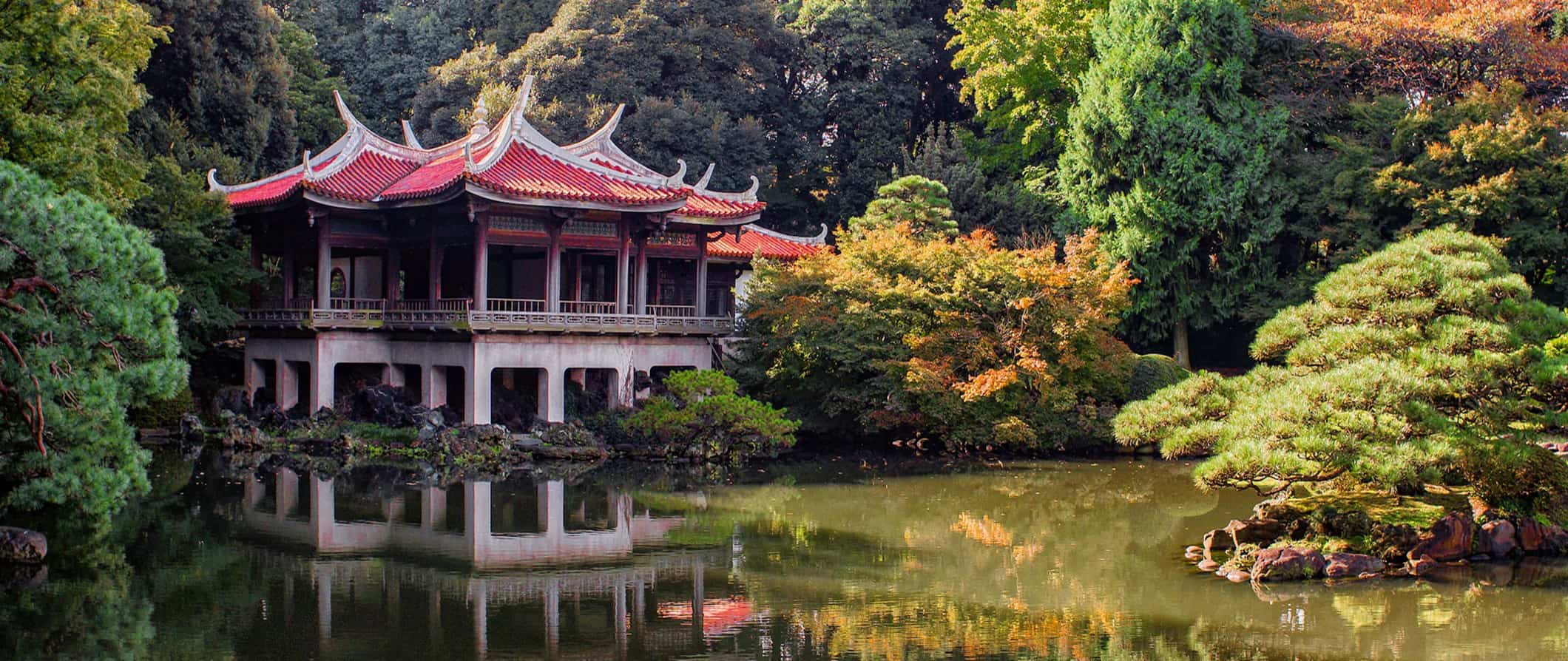
It was a lifelong dream to visit and, when I finally did, it lived up to all my expectations. Since that first visit, I’ve been there over five times. Japan is a country that blows everyone away. From the food to the people to the architecture and everything in between, I’ve never met someone who didn’t go to Japan and fall in love with it.
A lot of people delay visiting Japan because they think it’s super expensive. And, while some aspects of traveling there are expensive, there are plenty of ways to make it affordable. I was actually shocked how easy it was to see Japan on a budget .
This Japan travel guide can help you plan an affordable trip so you can see more, eat more, and spend less.
Table of Contents
- Things to See and Do
- Typical Costs
- Suggested Budgets
- Money-Saving Tips
- Where to Stay
- How to Get Around
- How to Stay Safe
- Best Places to Book Your Trip
- Related Blogs on Japan
Click here for City Guides
Top 5 things to see and do in japan.
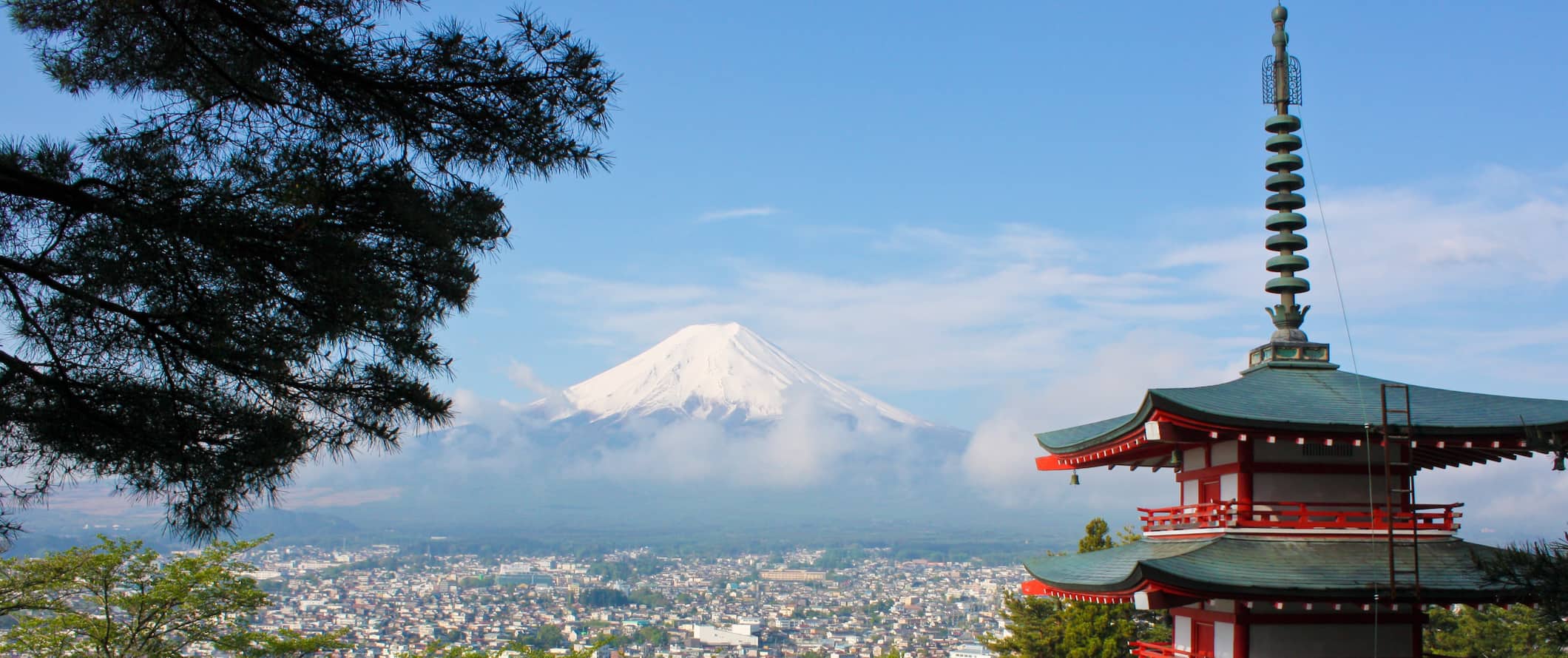
1. Explore Tokyo
Tokyo is one of the best cities in the world. Here you will find shrines, palaces, temples, hip clubs, fancy cocktail bars, weird fashion, and, of course, incredible people. Tokyo is a fast-paced, futuristic city. Be sure to also hit some of the quirky-themed cafés, wander the Harajuku district, walk across the iconic Shibuya crossing, and admire the Imperial Palace. Visit my detailed guide for more information .
2. Wander Kyoto
Boasting beautiful temples and Japanese gardens, Kyoto is one of the most popular destinations in Japan. This place definitely lives up to the hype because it retains much of the traditional lifestyle and is a good juxtaposition to fast-paced and high-tech Tokyo. See as many temples as possible , wander the enchanting bamboo forest of Arashiyama, (just get there early to beat the crowds), and do some hiking here. It’s a city not to be missed.
3. See Hiroshima
In 1945, the first atomic bomb to be used in combat was detonated in Hiroshima . Around 80,000 people were killed instantly and tens of thousands more died afterward due to radiation exposure. Visit the Hiroshima Peace Memorial (Genbaku Dome), which was the only building left standing after the bomb was dropped on August 6, and learn about one of the most controversial events in human history. I found the museum’s photos and artifacts sobering and eye-opening, and yet a must-see if you want to understand modern Japan. You can also take a cycling tour around the city to learn more about the bombing and its aftermath.
4. Climb Mount Fuji
This 3,776-meter (12,389-foot) mountain is located near Tokyo. As Japan’s tallest mountain, it is often covered by fog and clouds during the day, so ascents tend to happen early in the morning or overnight. In fact, some 400,000 people take part during the short climbing season that is only from early July to mid-September. If you’re visiting outside of the climbing season or just don’t want to hike the mountain, there are many tour providers that offer day trips from Tokyo from around 12,000 JPY.
5. Visit Sapporo
The gateway to Japan’s northern island of Hokkaido, this city is famous for its surrounding mountains, thermal baths, ski resorts, and lengthy beer brewing history. Hosting the 1972 Olympic Winter Games put the city on the international map, and it remains hugely popular for its cold-weather sports. It’s also home to the hugely popular Sapporo Snow Festival, where you can see world-class ice and snow sculptures each February (over two million people attend!). Although Sapporo is very much a ski haven, I also loved going in Spring because of the lush greenery and in particular, the thousands of Japanese cherry blossoms in Moerenuma Park. Don’t miss the Beer Museum and be sure to take the train to the coastal town of Otaru for uni (which is harvested there).
Other Things to See and Do in Japan
1. visit the tsukiji and toyosu fish markets.
Tokyo’s fish markets start bright and early at 4am. Here you can see the frenzied buying and selling of the world’s largest tuna market. Tsukiji was the original market but, as of 2018, the inner fish market moved to Toyosu and is now known as the Toyosu Fish Market. However, the outer market (where you can find food and shops) is still at Tsukiji. You can take a guided tour to learn about its history, how it works, and even learn how to roll sushi in a workshop at the end. Shops start opening around 6am so it’s a perfect place to go when you have jetlag.
2. Spend a day in Kyoto’s Gion District
Otherwise known as the Geisha District, this neighborhood is filled with fascinating historic architecture and is a good area for window shopping. Geishas (traditional professional entertainers) have worked here for centuries, and if you’re lucky, you may be able to spot one going to or from a social engagement at one of the establishments. (Just note that photographs are forbidden on the narrow alleys to prevent harassment of the geishas.) You can also take a nighttime walking tour .
3. Explore Nara
Located just one hour from Kyoto , Nara is famous for its 1,300 “wild” deer that freely roam Nara Park. The Japanese consider deer to be messengers of the gods, so they are free to roam the city (their horns are cut short, so they can’t hurt people). There are vendors selling crackers all around the park, so you can feed them by hand. While here, be sure to take in the world’s largest wooden building, Todai-ji, which dates to the eighth century and was reconstructed in the 1700s. Most travelers visit Nara as a day trip from Kyoto, but I suggest staying at least a night to really see everything.
4. See Osaka
Osaka is the third-largest city in Japan and its financial heart. It’s also a big foodie hub. Mouthwatering sushi and sashimi, Kobe beef, Japanese barbecue, and flavorful ramen can all be found here in abundance. There are also popular specialties like okonomiyaki (a savory pancake with egg and vegetables) and kushikatsu (skewered kebabs). You can take a food tour for around 12,000 JPY or just wander and eat.
Beyond the food, don’t miss Osaka Castle. While it’s not the original (this version dates to 1931), it’s nevertheless an impressive sight. It’s home to a small but insightful museum and an observation deck that offers some picturesque city views.
5. Relax in Ueno Park
Established in 1873, Tokyo’s Ueno Park is a great place to spend the day. It’s the perfect spot to see the cherry blossom trees (April is the best time of year if you hope to catch them in full bloom). Year round, you will find events on the weekend, people hanging out here on a beautiful day, and plenty of museums to visit. The park is home to the Tokyo National Museum, a couple art museums, and a zoo. You can also take a three-hour architecture tour around the park .
6. Admire the Imperial Palace
The Imperial Palace is home to the emperor of Japan (whose lineage stretches back over a thousand years). It was built on the site of the former Edo Castle, which was originally constructed in the 15th century. Though you can’t go inside the palace itself, the surrounding grounds and park are beautiful, and you can watch the changing of the guard. You can visit select parts of the grounds on a 75-minute guided tour at 10am and 1:30pm Tuesday-Saturday. The Imperial East Gardens are free and open daily except Mondays, Fridays, and holidays. There’s also a lot of free walking tours that take you around and give you a history of the palace.
7. Visit Miyajima Island
Miyajima is a UNESCO World Heritage Site located about an hour outside of Hiroshima, known as “Shrine Island” because of its temple and iconic floating torii gate. Itsukushima Shrine, the main one here, dates back to the 12th century. There’s also a five-story pagoda that dates back to the 15th century, and the tranquil Momijidani Park, one of the most beautiful maple valleys in the country. And, like Nara, there are plenty of deer here too. A trip to the island can easily be made into a full day if you hit the walking trails nearby. And be sure to hike up Mount Misen — it’s a great workout, and the views are stunning! There is also a cable car to the peak you can take for 2,000 JPY round-trip.
8. Tour Bitchu Matsuyama Castle
At 430 meters (14,100 feet), not only is this Japan’s highest castle but it’s also its only remaining original one (most were destroyed in fires or during World War II). The castle was originally built on a nearby mountain in 1240 by Akiba Shigenobu. In 1929, restoration work began, and it is now a popular tourist site. Admission is 500 JPY for just the castle or 1,000 JPY for the castle, temple, and nearby samurai houses. If you’d like to patronize the Takahashi Folk Museum and Yamada Hokoku Museum, the entire combined ticket costs 1,500 JPY.
9. Go on the temple pilgrimage
The 88 Temple Pilgrimage (also known as “Shikoku Henro”) is an ancient route that circles the island of Shikoku, one of Japan’s four main islands. Under consideration for UNESCO status, the route stretches 1,200 kilometers (745 miles) and can take between 30 and 60 days. Pilgrims typically wear special white robes and carry a walking stick so they stand out (locals take pride in helping and welcoming pilgrims so standing out is a good thing). It’s one of the only circular pilgrimages in the world, with roots dating back over a thousand years. Between 150,000 and 200,000 people do the hike each year. In addition to the 88 official temples, there are also 20 additional sites you can visit as well. Most pilgrims hike between March-May or October-November since the summer is too warm. If mobility is an issue, you can also explore the route via car or bus, which takes around 10 days.
10. Explore Nikko
Located two hours north of Tokyo in the mountains, Nikko has welcomed worshippers of both Buddhist and Shinto traditions for centuries, so there are many temples and shrines in the woods to visit. Nikko is also the home of the imperial summer palace (the only imperial residence opened as a museum) and the resting spot of Tokugawa Ieyasu, the first shogun of Tokugawa Shogunate (1603–1868). You’ll also find lots of waterfalls in the area and a beautiful lake to go boating on. The trails at nearby Nikko National Park offer excellent hiking. Don’t miss Nikko Toshogu, Kegon Falls, Ryuzu Falls, Shinkyo Bridge, Lake Ch?zenji, Kanmangafuchi Abyss, and the Imperial Palace! Only a few hours from Tokyo, Nikko is a really nice destination for two or three nights.
11. Stay in a ryokan
A ryokan is a traditional Japanese bed-and-breakfast, usually found in the more scenic regions. They date back over 1,200 years and are known for their traditional tatami floors, communal baths, sliding doors, and cozy interiors. Ryokan s make for an intimate and unique Japanese experience, featuring included meals and traditional Japanese robes (called yukata ). Beds are traditional futons, and there is usually a common area where you can make tea and chat with the owner.
12. Soak in an onsen
Natural hot springs are widespread throughout the country, and can be found both indoors and outdoors. They are a great way to “soak in” some traditional Japanese culture. Each has a different mineral composition. Expect to pay around 1,000 JPY for a budget bathhouse. (Just note that many do not allow people with tattoos or require tattoos to be covered. They are also separated by gender.) Hakone is the most popular onsen destination as it’s just 90 minutes away from Tokyo and is nestled into the mountains. Other popular choices include Beppu, Yufuincho, Noboribetsu, and Ibusuki.
13. Explore Daisetsuzan National Park
If you make it all the way up to Hokkaido (the northern prefecture of Japan and second-largest island), be sure to spend some time exploring Daisetsuzan (“Great Snowy Mountains”) National Park. Located around two hours from Sapporo, the park offers numerous trails, and some of the most rugged and beautiful landscapes in the country. It’s also one of the last remaining places in Japan to see brown bears. The most popular hike here is Mount Asahidake, a challenging volcano that takes 3-4 hours. The park is a far cry from the tourist trail and usually just sees Japanese visitors, so you’ll get to enjoy a spot locals favor.
14. Relax in Okinawa
If you need a break from the fast pace of Japan, hop on down to Okinawa Prefecture, considered “the Hawaii of Japan.” Life proceeds at a much slower pace here, and the climate is subtropical. Even Naha, the biggest city in the region, is laid-back. Okinawa is famous for its diving opportunities as well as World War II sites and memorials. From Okinawa Honto (the main island), you can hop to other smaller islands by ferry, including some that are very remote and rarely see visitors (such as Iriomote or Kume). Camping, whale watching, and hitting the beach are some of the most popular activities here.
15. Admire Kanazawa
Located on the west coast, Kanazawa is known for its incredibly well-preserved Edo-era (1603–1868) districts (the final period of traditional Japan). Home to under 500,000 people, the city is called “Little Kyoto” — but without the oppressive crowds. I think this is a really nice, off-the-beaten-path destination. Make sure to see Tsuzumi-mon Gate, admire Kanazawa Castle, and explore the geisha districts and samurai district (Nagamachi), where numerous preserved houses remain. Head to the Omicho Fish Market for fresh fish and seafood (there are dozens and dozens of stalls here). And if you want to learn more about Buddhism, visit the DT Suzuki Museum (Suzuki was a Zen Buddhist academic and philosopher who helped introduce Zen Buddhism to the West).
16. Hike in the national parks
Japan may be a small country but it’s preserved a lot of its natural landscapes. There are 34 national parks, each offering respite from the hectic and dense cities that Japan is known for. Nikko (mentioned above) is best for seeing fall colors; Daisetsuzan (also mentioned above) has lots of remote onsen and challenging trails; Keramashoto, located in Okinawa, has some of the best islands and beaches, as well as over 250 types of coral; and Yoshino-Kumano is famous for its cherry blossoms. There are a lot of parks to choose from! Try to see at least one!
17. Visit Takashima
Home to just 50,000 people, Takashima is just a short drive from Kyoto on the coast of Lake Biwa (the largest freshwater lake in Japan). The city boasts castle ruins, plenty of old shrines and Buddha statues, and a picturesque floating torii gate (similar to the one in Miyajima) at the Shirahige Shrine. There’s also a four-kilometer (2.5-mile) walking route lined with cherry trees. Moreover, this town is famous for its Hida beef, which I think is the best beef in all of Japan. For a fun day trip, head to Chikubushima, a small island on Lake Biwa where you can visit centuries-old temples as you hike around the island.
For information on specific cities in Japan, check out these city guides:
- Hiroshima Travel Guide
- Kyoto Travel Guide
- Tokyo Travel Guide
Japan Travel Costs
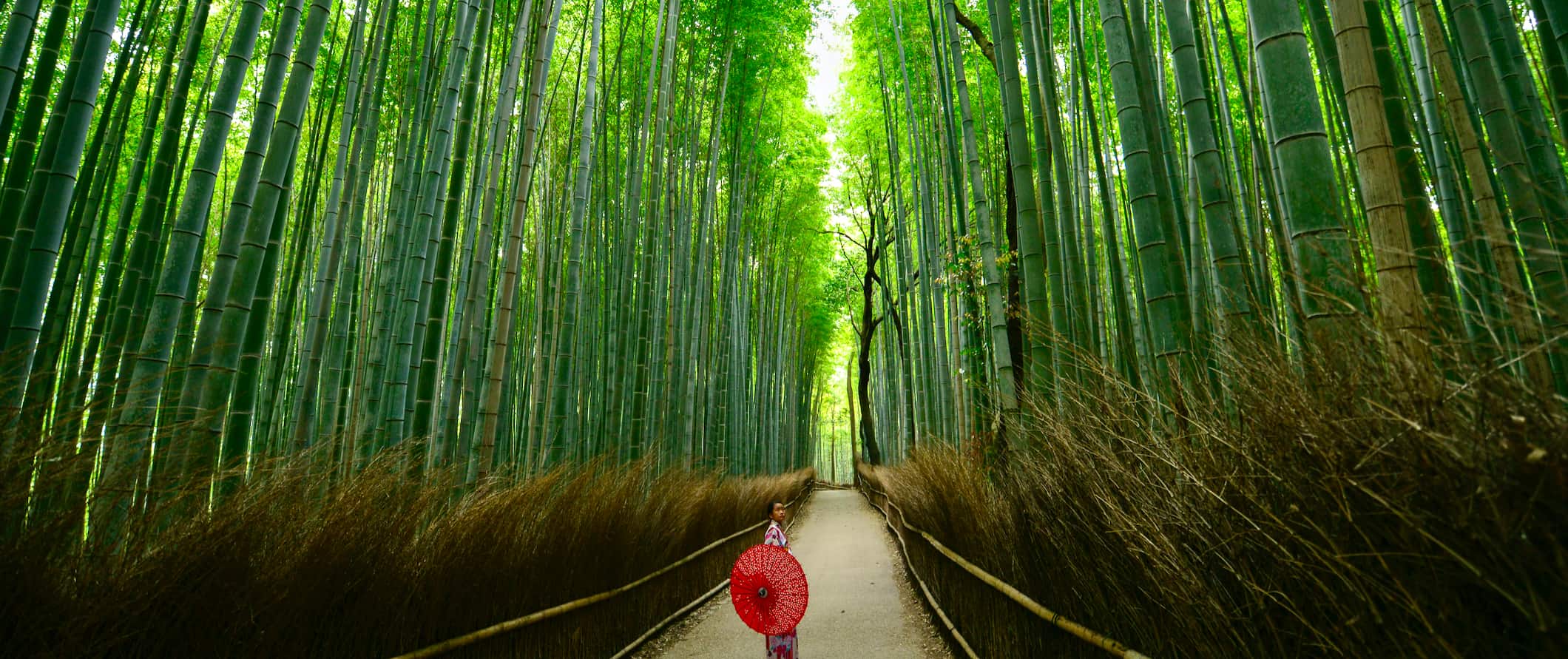
Accommodation – Expect to spend 2,500-4,500 JPY per night for a dorm room in a hostel (prices are on the higher end in larger cities like Tokyo or popular tourist destinations like Kyoto). Free Wi-Fi, private lockers, and self-catering facilities are standard in most hostels. But it’s uncommon for them to provide breakfast here. For a private room with a twin or double bed, expect to pay 6,500-15,000 JPY per night. Prices are generally the same year-round.
Capsule hotels cost 3,000-5,500 JPY for a tiny coffin-like pod that’s essentially just a bed, often with a small TV, light, and outlet to charge your devices. There are shared bathrooms and sometimes a small common room as well. It’s not fancy, but it’s a unique (and very Japanese) experience.
For (non-capsule) budget hotels, expect to spend 6,000-10,000 JPY per night for a double room. For Western hotel chains, expect to spend around 20,000 JPY or more per night. Note: For accommodation in Tokyo, add 50% to all these prices.
Airbnb is heavily regulated in Japan and, as such, there aren’t too many options. What rooms are listed are mostly hotels and guesthouses. Private homes/apartments usually start around 15,000-20,000 JPY per night, while private rooms (i.e., hotel rooms) run 8,000-10,000 JPY per night and up.
If you are looking for a more unique experience, consider staying at a ryokan , a traditional Japanese bed-and-breakfast. While they are more expensive than a standard hotel, it’s a unique and memorable experience, as you’ll get to sleep on traditional futons and tatami mats.
Food – Japanese cuisine is world-renowned and has even earned a spot on UNESCO’s Intangible Heritage List. While each region has its own specialties, rice, noodles, seafood, and seasonal produce all feature heavily no matter where you are. Plus, there’s izakaya (small plates), yakitori (grilled food), curry bowls, BBQ, and so much more. One of the best things about visiting Japan is the food.
Food in Japan is relatively inexpensive so long as it’s not imported (fresh fruit will blow your budget!). The most common cheap eats are using curry, donburi (bowls of meat and rice), or ramen. Curry and donburi bowls cost 500-700 JPY while ramen or soba noodles are usually around 1,200 JPY. Okonomiyaki (a Japanese pancake with noodles or rice) is between 1,000 and 1,300 Yen.
Fast food (think McDonald’s) is around 800 JPY for a set menu. You can also find plenty of cheap meals and prepackaged items at 7-Eleven (locals actually get a ton of food here as it’s delicious and quick). Noodles, rice balls, tofu, and prepackaged sushi are all available for only 250-500 JPY per item. (Trust me, it’s good!)
Most sit-down restaurant meals are going to cost you 2,000-3,000 JPY. Sushi conveyor belt restaurants (which are super fun) will run you 125-600 JPY per piece. Quicker lunch spots are going to be around 1,500 Yen.
Fine dining is a tradition rooted in Japanese culture, and kaiseki ryori is a style of high-end, multi-course Japanese dining that originated in Kyoto. It costs about 8,000-10,000 JPY for a set menu of seven courses, covering everything from chicken to Wagyu steak to sushi.
High-end omakase sushi restaurants (where dishes are selected by the chef) will set you back at least 10,000 JPY, though more likely closer to 20,000 JPY. (In Tokyo, the best ones are 30,000 JPY.)
Domestic beer is around 450-550 JPY, and sake is about 800-900 JPY per glass. A cocktail will set you back about 1,200 JPY, though at the famous cocktail bars in Tokyo, expect to pay closer to 1,600 Yen per drink. A latte or cappuccino is 500-600 JPY, and a bottle of water is 100-130 JPY. Soda is around 200 Yen.
Expect prices to be higher in the bigger cities and cheaper in the countryside.
Buying groceries costs around 5,000-6,000 JPY per week for basic staples like rice, vegetables, and fish. However, given the availability of such cheap food, it’s doubtful you’ll go grocery shopping to prepare your own meals.
Backpacking Japan Suggested Budgets
If you’re backpacking Japan, plan to budget 7,000 JPY per day. This assumes you’re staying in a hostel dorm, cooking some of your meals, eating at the cheap restaurants and takeaways, visiting free museums and temples, and using public transportation to get around.
On a more midrange budget of 16,000 JPY per day, you can stay in nicer accommodations, eat out more liberally, indulge in more drinks, visit more attractions, and, overall, just have some more breathing room in your travels! On this budget, you’ll be able to do most things.
On an upscale budget of 28,000 JPY per day or more, you can stay in traditional Japanese accommodations or two-star hotels, eat at nicer restaurants each day, splurge on some meals, enjoy drinks as often as you want, take tours, and, overall, just afford whatever you want!
You can use the chart below to get some idea of how much you need to budget daily, depending on your travel style. Keep in mind that these are daily averages — some days you’ll spend more, some days you’ll spend less (you might spend less every day). I just want to give you a general idea of how to make your budget. Prices are in JPY.
Japan Travel Guide: Money-Saving Tips
I think Japan’s reputation as an expensive country is overstated. Outside of accommodation and transportation, it’s actually really affordable. Is it super cheap? No. Is it super expensive? Not at all. There are plenty of ways to lower your costs and all non-imported food is really inexpensive. Here are some ways to save money when you visit:
- Visit the free attractions – With its countless museums, galleries, shrines, temples, historic neighborhoods, and parks, Japan is filled with opportunities to immerse yourself in its culture without spending a Yen. Moreover, many of the nation’s parks and gardens are also free. Start with them and you’ll fill your days on the cheap!
- Get a JR Pass – The bullet trains in Japan are ridiculously expensive, with one-way fares costing hundreds of dollars. If you plan to do a lot of traveling around the country, get the JR Pass , which allows you unlimited train travel and can save you a ton of money. It comes in 7-, 14-, and 21-day options. (Keep it mind it can only be purchased outside of Japan, so be sure to plan ahead.)
- Take the bus – Buses are a far more economical option than the trains. They cost a fraction of the price. For example, the unlimited Japan Rail Pass costs 29,650 JPY for seven consecutive days of travel, but this is far more expensive than using the bus. But buses take a lot longer. For example, the two-hour bullet train ride from Tokyo to Osaka becomes a 10-hour bus ride. Bottom line: if you have the time, take the bus.
- Shop at the 100-yen stores – There are many 100-yen shops around the country. They all sell meal sets, groceries, water bottles, toiletries, and household items. Store names vary by region, so ask your hotel or hostel reception where the nearest “Hyaku En” store is located.
- Eat at 7-Eleven – 7-Eleven, Family Mart, and other convenience stores have a lot of pre-made meals that make for a cheap lunch or snack. The food is actually really good and you’ll always see locals dipping in and getting a quick lunch or snack here. Don’t be afraid to at them.
- Cook your own food – Many hostels have kitchens where you can cook your own meals. Combining this with shopping at the 100-yen stores will drastically cut your food costs.
- Eat curry, ramen, and donburi – These dishes are the best option for eating cheap, filling meals. These cost from 400 – 1200 Yen (ramen is 1200). Shops specializing in these dishes are all over the country so you can easily find them. They are on every corner and the cheapest way to eat on a budget.
- Stay with a local – Using hospitality sites like Couchsurfing allows you to stay with residents, so you not only get a free place to stay but you get to interact with someone who can share their insider tips.
- Buy food before grocery stores close – After 8pm, many supermarkets discount their fresh food, as they have to get rid of it by law. You can save up to 50% on almost all ready-made meals. It’s a great cheap dinner.
- Hitchhike – Japan is one of the world’s safest countries, and many locals are curious enough to pick up foreign visitors. Hitchhiking isn’t really practiced by Japanese, so you will stand out as a tourist, which will increase your chances of finding a ride.
Where to Stay in Japan
There’s a lot of affordable accommodation in Japan, especially if you avoid Western style hotels and chains. To help you save money on accommodation, here’s my list of the best hostels and budget hotels in Japan:
- Hostel Chapter Two Tokyo (Tokyo)
- Hotel Century Southern Tower (Tokyo)
- Backpacker Hostel K’s House Kyoto (Kyoto)
- Gojo Guest House (Kyoto)
- The Pax Hostel Records (Osaka)
- Roku Hostel Hiroshima (Hiroshima)
- Guesthouse Akicafe Inn (Hiroshima)
- WeBase HAKATA Hostel (Fukuoka)
How to Get Around Japan
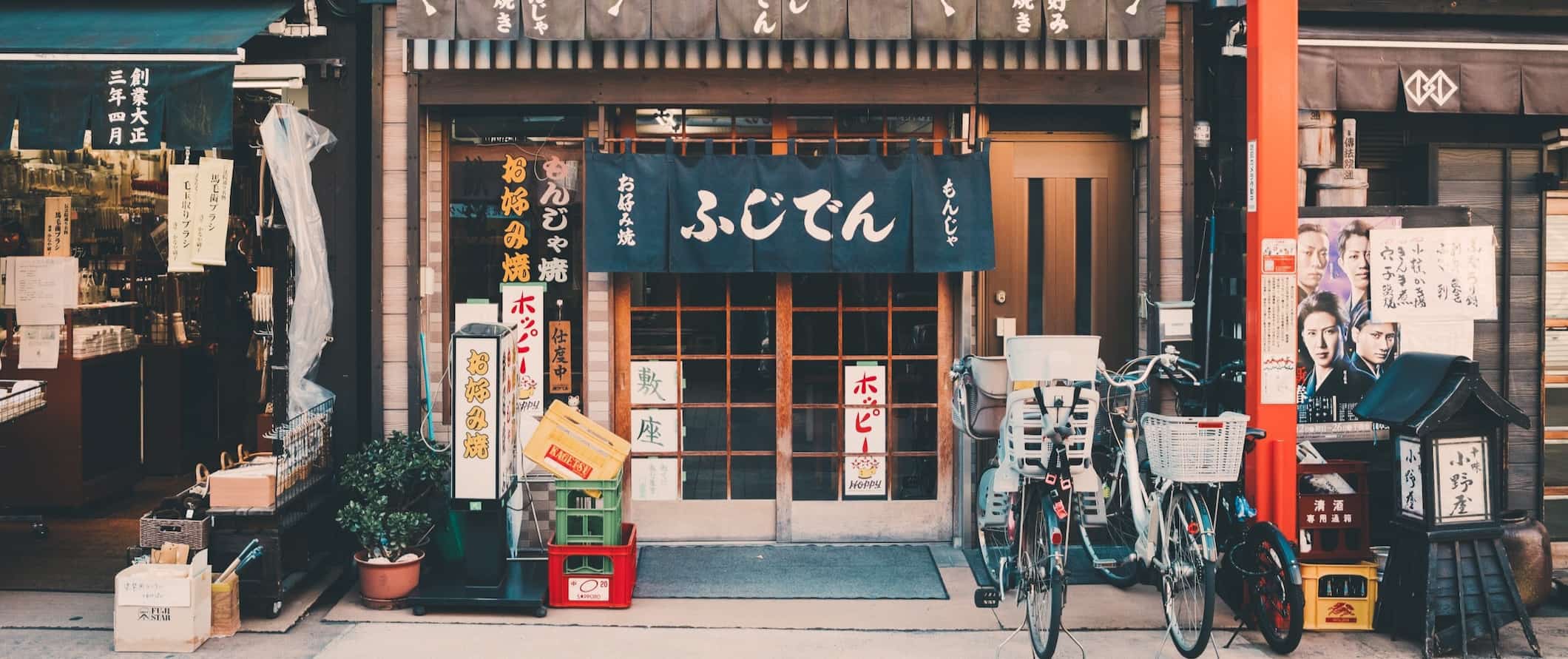
Public transportation – Metro or bus tickets cost 150–300 JPY for a single journey. (The price varies by distance and may often be higher.) Fares are usually around 220 JPY to travel across Tokyo but less for shorter distances. In most major cities, you can buy a day pass, which gives you unlimited travel for 24 hours for around 800-1,100 JPY.
Train – Train travel is the quickest way to get around Japan. The bullet train is awesome, comfortable, and super-fast — but it’s not cheap. Individual tickets can cost hundreds of dollars. In order to reduce your train costs, get a Japan Rail Pass , which is indispensable for travel here.
Even if you just get the seven-day pass, it’s the same price as a round-trip train ticket from Osaka to Tokyo. Moreover, the JR trains also serve urban areas and so can be used within cities. I used my pass to get around Kyoto and Tokyo instead of buying metro tickets.
So, even if you aren’t going to do much traveling around Japan, buying a pass is better than buying individual tickets. While the high price of the pass can cause sticker shock, the alternative is worse.
Additionally, be sure to download the Navitime app . It has offline maps, train and public transit routes, and info on train stations. It’s a lifesaver when trying to figure out how to get around the country.
Bus – Buses are a less expensive alternative to the bullet train system in Japan, but they take more time. For example, the two-hour bullet train ride from Tokyo to Osaka becomes a ten-hour bus ride. The price for that seat is 4,500-8,000 JPY, but at some point, you need to think about how much your time is worth.
There are also bus passes that offer unlimited travel and begin at 10,200 JPY for three nonconsecutive days of travel. You can use these two websites to book your bus journeys:
- Willer Express
- Japan Bus Lines
If you have more time than money, take the bus. Otherwise, I’d say splurge and take the train, because they really are much faster and much, much more comfortable.
Flying – Generally, flight prices are on par with bullet train tickets. ANA, one of the country’s two main carriers, offers special last-minute fares via a hidden page on its website , usually for around 14,000 JPY for a seat. It’s only available to foreigners and can sometimes be cheaper than the flights you find on booking platforms, especially for longer routes around the country.
Flights from Tokyo to Okinawa are around 23,000 JPY (round-trip) while those from Tokyo to Sapporo are around 16,000 JPY (round-trip).
Car rental – With efficient public transportation and nationwide bullet trains, renting a car here really isn’t necessary. However, if you do need one, multi-day rentals start at 6,000 JPY per day. Just remember that people drive on the left here! For the best car rental prices, use Discover Cars .
When to Go to Japan
Temperature and weather vary drastically across Japan, meaning it’s always a good time to visit some part of the country. While most of Japan does have four seasons (including snowy, freezing winters in the north), Okinawa and the islands in the south are warm year-round. It gets cold in Tokyo, but it generally doesn’t snow.
Expect warm, humid weather from June through August, with temperatures hovering around 32°C (89°F). Japan also gets a lot of rain, mostly in the summer months, from mid-June to mid-July. It gets a little drier in August, before the precipitation picks up again in September. Typhoon season occurs from May to October. Japan is well-equipped to handle all types of typhoons, but be sure to purchase travel insurance in advance !
Overall, there’s no real bad time to visit. Winter is awesome for skiers or snowboarders, spring is famous for its cherry blossoms, summer is full of festivals, and fall has brilliant autumn colors and nice temperatures. I personally prefer spring and fall, as the summer heat and humidity is pretty oppressive.
How to Stay Safe in Japan
Japan is a very safe country. There’s virtually zero chance you’re going to get robbed, scammed, or hurt here. Your biggest issues will most likely come from other foreigners who get drunk and are causing trouble.
Solo female travelers should generally feel safe here, but the standard precautions apply (never leave your drink unattended at the bar, never walk home alone intoxicated, etc.). Japan does have a problem with groping, especially on packed trains. Most train companies now have “women-only” cars during rush hour (you’ll see pink signs indicating where women should board).
Scams in Japan are nonexistent. No one is going to rip you off. The listed price is the listed price and the same for everyone. There are no tourist prices here.
Your main risk here is from Mother Nature. Earthquakes and typhoons aren’t uncommon, so make note of exits when you arrive at your accommodation. Download offline maps to your phone, as well, in the event you may need to navigate the city during an emergency.
If you do experience an emergency, dial 110 or call the nonemergency Japan Helpline at 0570-000-911.
The most important piece of advice I can offer is to purchase good travel insurance. Travel insurance will protect you against illness, injury, theft, and cancelations. It’s comprehensive protection in case anything goes wrong. I never go on a trip without it, as I’ve had to use it many times in the past.
Japan Travel Guide: The Best Booking Resources
These are my favorite companies to use when I travel. They consistently have the best deals, offer world-class customer service and great value, and overall, are better than their competitors. They are the companies I use the most and are always the starting point in my search for travel deals.
- Skyscanner – Skyscanner is my favorite flight search engine. They search small websites and budget airlines that larger search sites tend to miss. They are hands down the number one place to start.
- Hostelworld – This is the best hostel accommodation site out there with the largest inventory, best search interface, and widest availability.
- Agoda – Other than Hostelworld, Agoda is the best hotel accommodation site for Asia.
- Booking.com – The best all around booking site that constantly provides the cheapest and lowest rates. They have the widest selection of budget accommodation. In all my tests, they’ve always had the cheapest rates out of all the booking websites.
- Get Your Guide – Get Your Guide is a huge online marketplace for tours and excursions. They have tons of tour options available in cities all around the world, including everything from cooking classes, walking tours, street art lessons, and more!
- SafetyWing – Safety Wing offers convenient and affordable plans tailored to digital nomads and long-term travelers. They have cheap monthly plans, great customer service, and an easy-to-use claims process that makes it perfect for those on the road.
- LifeStraw – My go-to company for reusable water bottles with built-in filters so you can ensure your drinking water is always clean and safe.
- Unbound Merino – They make lightweight, durable, easy-to-clean travel clothing.
- Japan Rail Pass – This is a flexible transportation pass used for navigating Japan. Similar to the Eurail pass in Europe, it turns expensive bullet trains into budget-friendly modes of transportation. You honestly can’t visit Japan without one.
Japan Travel Guide: Related Articles
Want more tips? Here are all the articles I’ve written on Japan travel to continue planning your visit:
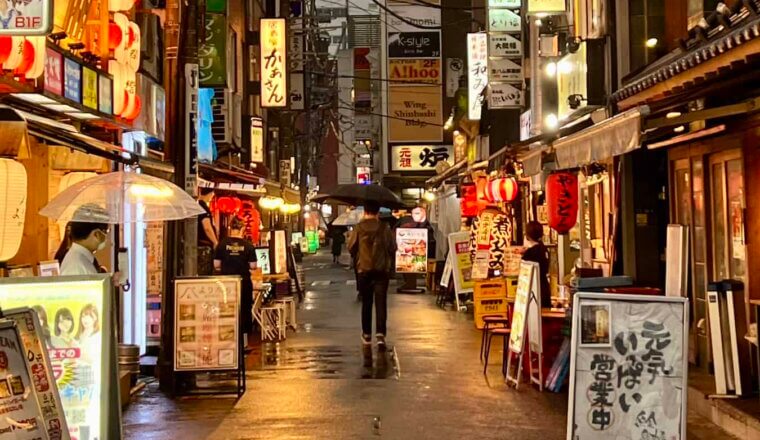
How to Spend Your Time in Tokyo: A Suggested Itinerary
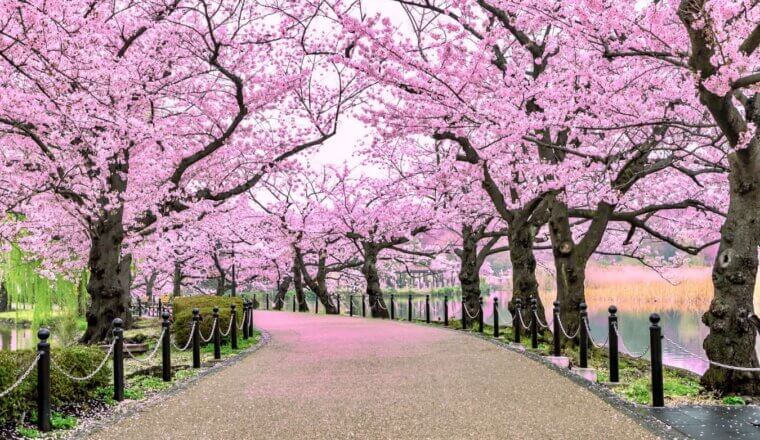
The Perfect 7-Day Japan Itinerary for First-Time Visitors
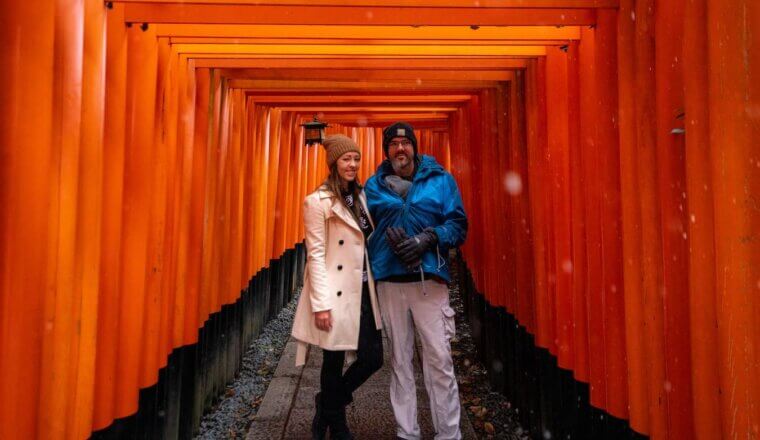
How to Travel Japan with a Baby
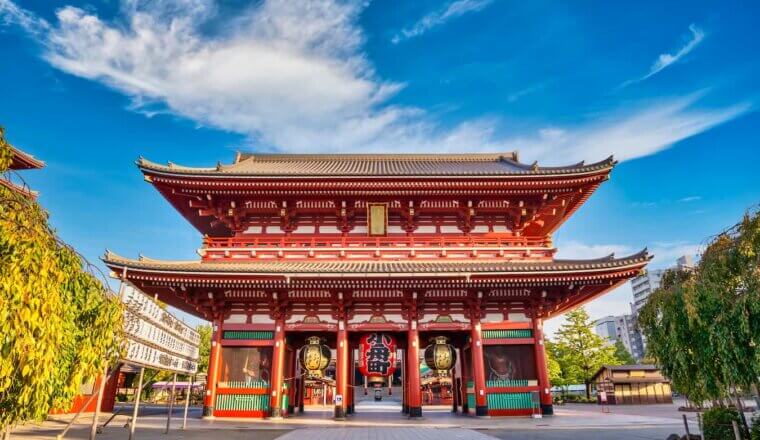
Where to Stay in Tokyo: The Best Neighborhoods for Your Visit
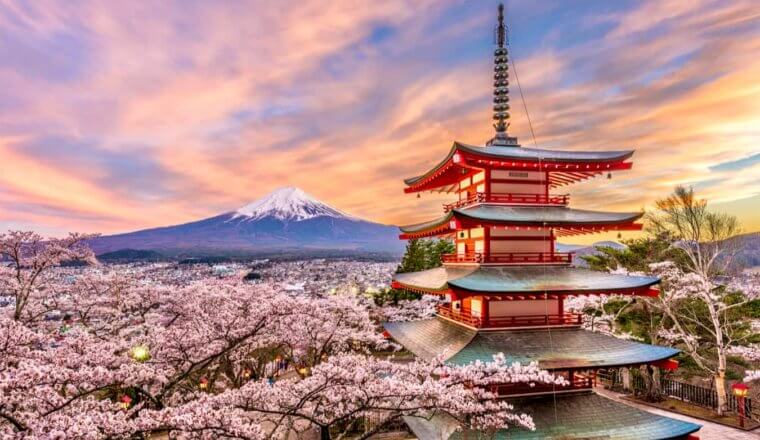
The Ultimate Japan Itinerary for First-Timers: From 1 to 3 Weeks
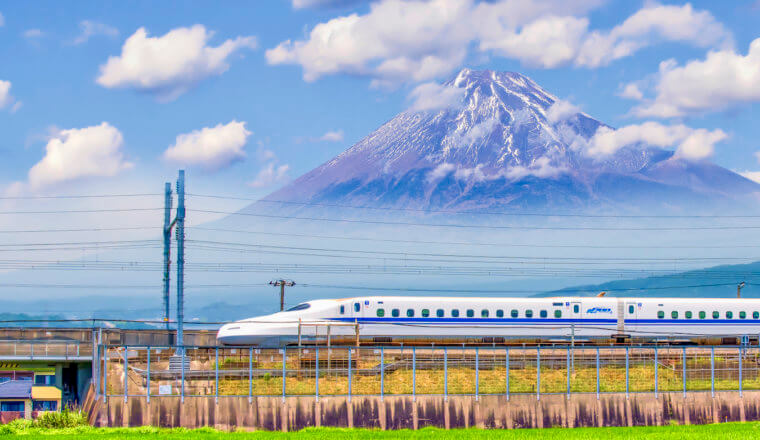
A Complete Guide to the Japan Rail Pass
Get my best stuff sent straight to you, pin it on pinterest.
- Where To Stay
- Transportation
- Booking Resources
- Related Blogs
Trip to Japan Calculator
Every traveler has a different budget and situation. Our calculator takes all possibilities into consideration for a quick trip or a long vacation in Japan.
1) Length of Stay
2) Number of Travelers
3) Choose City(s) you want to Visit:
4) How do you want to travel between cities?
Bullet Train Airplane Normal Train Highway Bus
5) What accommodations do you (and or your fellow travelers) want?
Doya ($10 a night) Youth Hostel ($30 a night) Capsule Hotel ($30 a night) Love Hotel ($50 a night) Ryokan ($60 a night) Standard Hotel ($80 a night) Luxury Hotel ($150 a night)
6) How do you (and or your fellow travelers) want to eat?
Instant Ramen and McDonalds ($3 per meal) Japanese Fast Food or Street Food ($6 per meal) Standard dining and standard restaurants ($10 per meal) Gourmet ($25 per meal)
7) How much sight seeing do you (and or your fellow travelers) want to do? (This includes taxi/subway/train fair, admission fees, and other expenses associated)
Minimal (occasional excursions within a mile of the hotel) Moderate (daily excursions in the city) Frequent (daily excursions in and outside the city) Extensive (only sleeping at the hotel, spending most of the time sight seeing)
8) How much shopping do you (and or your fellow travelers each) want to do?
None Minimal ($500 US) Moderate ($1000 US) Excessive ($2000+ US)
9) What time of the year will you go? (Spring and Summer are the most expensive times to go. Winter and Fall are the cheapest)
Winter Spring Summer Fall

Don't Study Japanese
Until You've Read Our Free E-Book
Japanese is hard enough already, don't make it harder on yourself by making these same six mistakes over and over! Read our free e-book and get an edge.
Find out how to speed up your study, get motivated, study the right way, and be less confused!

Budget for a trip to Japan
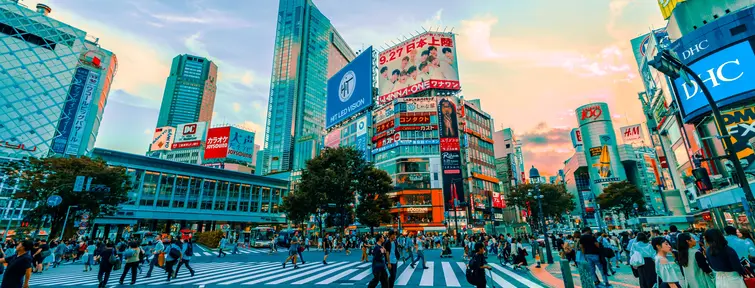
Shibuya, Japon
© Jezael Melgoza / Unsplash
What is the budget for a trip to Japan?
Japan has long been one of the expensive destinations, departing from the old continent. Geographical remoteness and the lack of competition in the airline industry had a lot to do with it. Today, Japan is more open to tourism than it was before, and traveling to Japan is becoming much more affordable, provided you modulate your choices according to your travel budget and priorities!
Let's see together what the budget for a trip to Japan can be.
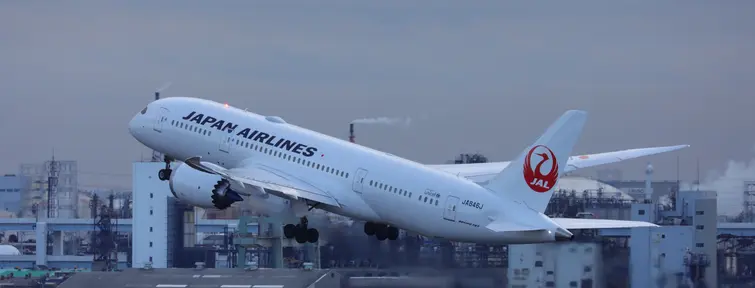
Photo by Tango Tsuttie on Unsplash
Budget for a plane ticket France - Japan
Increasingly attractive rates.
The price of a France - Japan flight varies greatly depending on whether you opt for a direct flight or a flight with a stopover. Before booking your plane ticket to Japan, some useful points of reference:
Price of a direct flight France - Japan: Allow 11 to 12 hours of direct flight, with one or two meals on board. The average price of a direct flight is 1000 EUR / pers. in the regular season.
Price of a flight with stopover France - Japan : Count from 14 to 18 hours of flight with transit and waiting time in the main airport of the airline. The average price of a flight with a stopover is around 800 EUR / pers. in the regular season.
- Price of a discount flight France - Japan: Expect flight times in the evening or very early in the morning, as well as a long waiting time in transit, of the order of 4 to 8 hours. On the other hand, the price of your plane ticket for Japan will be really attractive, around 600 EUR / pers. in the regular season.
- See our comparison of airlines

Photo de Lucas Calloch sur Unsplash
Budget for accommodation in Japan
For all tastes and all budgets.
The range of options for accommodation in Japan is important, and allows you to find the type of accommodation best suited to your budget:
- Renting a detached house
This is the formula offering the best value for money, especially if you are traveling as a family to Japan. Renting a house in Japan allows you to be independent and to live in the Japanese way during a trip.
- Japanese hotel
Standard class, business class, luxury hotels... the hotel offer is very important in Tokyo and Osaka, but falls drastically in the provinces. Looking for a hotel in Japan costs an average of ¥8,000 for a standard hotel room, ¥15,000-30,000 for superior hotels, and ¥60,000 and more for luxury addresses.
The traditional Japanese inns, with tatami, futon and onsen bath are one of the essentials of a trip to Japan. Count on average 20,000 - 30,000 ¥ / pers. with meals and breakfast included.
Home cooking and direct contact with the locals, the minshuku are the equivalent of our guest rooms. The average price per person is ¥6,500-8,500, for half board and home cooking.
- guest house
Japanese youth hostels offer different types of sleeping accommodation: dormitories with bunk beds, Japanese rooms with tatami, private rooms... For an average price of ¥3,500 per night, this is the preferred solution for young people and children. budgets!
- Capsule Hotel
For fans of exotic experiences, a night in a capsule hotel gives you a taste of the daily life of a Japanese salary-man. Spa, massage, gym, video games... Many additional services are also available on site. From ¥2,000/night.
Read also :
- Ryokan, quintessence of Japanese art
- The minshuku, closer to the Japanese
- Capsule hotels, a unique experience
- Find out more about our house rentals
Discover Japan Experience's Rental Houses offer in Japan
Rent a house in tokyo.
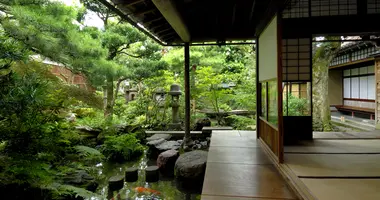
Experience an authentic stay in the city and rent a house in Tokyo. Our comfortable accommodations in Tokyo are all centrally located in the Ikebukuro district, close to Shinjuku and Tokyo Tower.
Rent a house in Kyoto
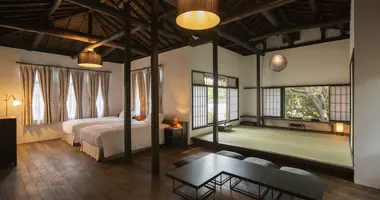
Rent a house in Kyoto and experience the city, by living like a local. We have many houses and apartments in Kyoto in great locations throughout the city.
Rent a house in Kanazawa
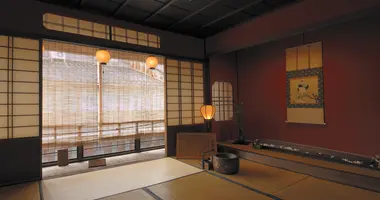
Discover the wonders of Ishikawa Prefecture and rent a house in Kanazawa. Our traditional and cozy accommodations in Kanazawa are located in different areas of the city, which are steeped in tradition.
Rent a house in Takayama
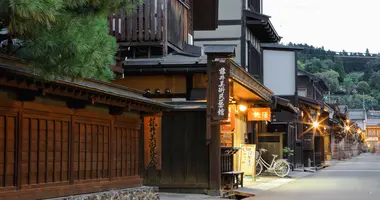
Our rental homes in Takayama offer an ideal home base in the Japanese Alps . These Takayama accommodations allow you to explore the city and Gifu Prefecture in peace.
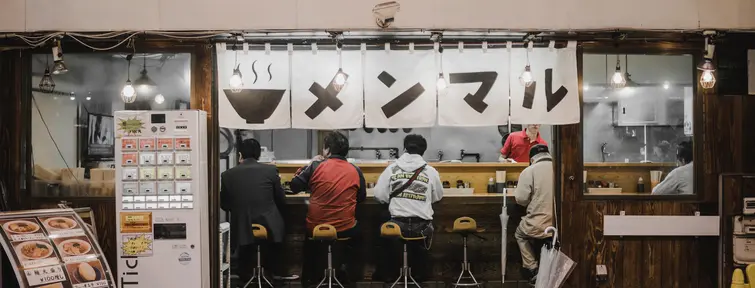
Photo de bantersnaps sur Unsplash
Catering budget in Japan
Eat well and inexpensively.
Contrary to popular belief, the price of a meal in Japan is often half that of a similar meal in a major European city. In fact, eating at low prices in Japan is a reality that allows you to adjust your budget as well as possible:
- Budget meals in Japan
Many fast food chains allow food for the equivalent of ¥300-500. The Sukiya, Yoshinoya and Matsuya chains offer you to taste Japanese curry, gyûdon (preparation made from rice and beef), katsudon (hot rice with a slice of breaded pork) with a miso soup! Another option is kaiten-zushi, plates of sushi served on a conveyor belt that start at ¥100.
- Budget for a standard meal
For heartier meals, restaurants of the teishoku (meal tray) type allow you to taste Japanese home cooking for a price between 500 and 1,000 ¥. These restaurants are easily identifiable by their storefronts displaying meal trays with resin food. Ootoya and Yayoi are two emblematic chains.
- Budget for a larger meal
A sort of Japanese-style brasserie, the izakaya are a great place to observe the Japanese in their daily lives. Ideal for tasting the variety of Japanese cuisine, but be careful, the quantities are small and the note quickly becomes salty. Count on average 3,000 - 5,000 ¥ / pers. Many izakayas now have English menus, like the iconic Izakaya Gompachi in Roppongi , Tokyo.
- Read also : All about donburi , these popular dishes that we all love
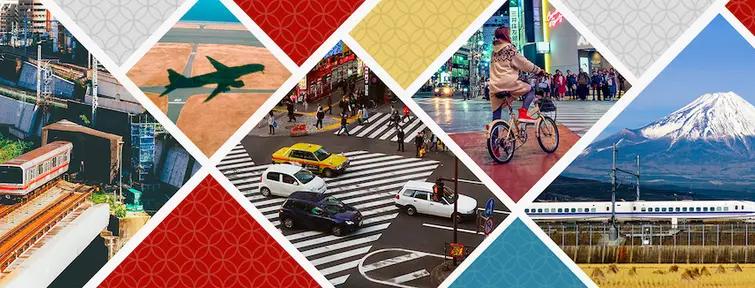
Transport budget in Japan
Travel far and explore japan.
If you want to explore Japan far and wide, you will have to think about your transport budget.
- Take the train in Japan
To travel between major Japanese cities, the easiest and fastest way is to take the Shinkansen, the Japanese high-speed train. If the price of a single ticket is quite expensive (about ¥14,000 or €117 for the trip from Tokyo to Kyoto), the most economical solution if you plan to take the train several times during your stay is to buy a Japan Rail Pass which allows you to take unlimited JR rail lines for 7 (approximately €246), 14 (approximately €393) and 21 days (approximately €503).
The major Japanese cities are all equipped with a very efficient public transport network (bus or metro) which will allow you to visit the city up and down with ease. Beware though, prices are slightly higher than in France and different private rail companies will have different prices.
- Car rental in Japan
The ideal solution if you want to travel all over Japan in freedom and go to more remote places is to rent a car. For example, it is possible to rent a 5-passenger car from €42 per day or an 8-passenger minivan for €91 per day.
- Traveling in Japan by train
- Driving in Japan
Discover the transport offer of Japan Experience
Discover all rail passes in japan.
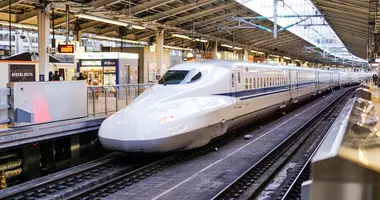
Best quality/price ratio for unlimited travel and, the Japan Rail Pass is the ideal travel solution, and the best way to discover Japan by train!
A0909C1A-93FB-4548-8F2A-CE5CA53C0BF6 Created with sketchtool. Prepaid Cards
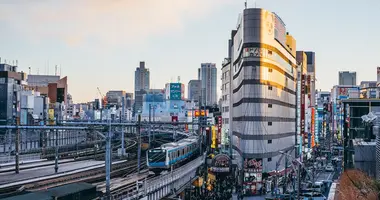
The Suica Card and Pasmo Card are a pre-paid top up card that allows you to use most public transport (metro, trains and buses) in Japan.
Airport Transfers
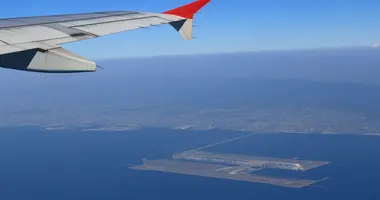
Make your journeys between Tokyo, Kyoto, Osaka and their respective airports easier by choosing our airport transfer services!
Our offer of tours in Japan for all budgets
Group tours in japan.
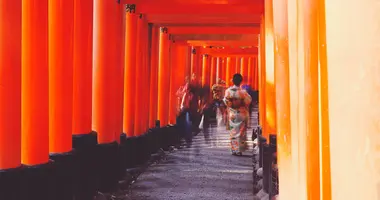
Our tours have been created in response to a high level of demand for a tour which gives a unique view and interaction with Japan.
Self-Guided Tours in Japan
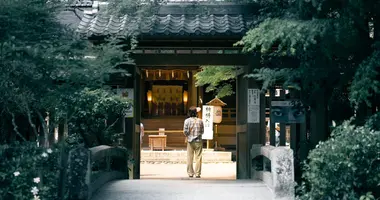
Enjoy tours created by our specialists in Japan. We organize your logistics: accomodation, airport transfers, Japan Rail Pass and Pasmo card.
Tailor-made Tours in Japan
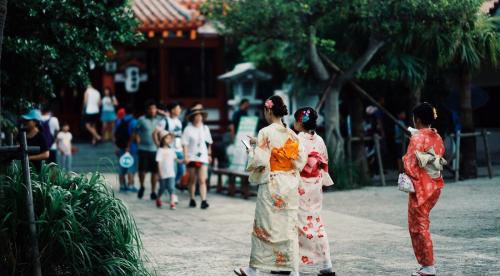
Explore Japan differently through unique and exclusive experiences!
Are you considering visiting Japan, but you're not sure where to begin? If touring with a group isn't your style or you can't find what you're looking for on our catalog of self-guided tours, designing a custom tour might be the perfect option for you.
A trip that's entirely flexible and unique: multiple types of transportation options (trains, cars, boats...), different accommodation options, original activities, personalized itineraries... Organize your dream trip with our experts! Booking a tailor-made tour allows you to travel with 4 key advantages:

100% Customized
With our tailor-made tours, you are the architect of your itineraries in Japan.
Plan your trip with our local experts who are passionate about sharing their knowledge and love for Japan.
Unique Lodging
We have a privileged network of local partners working with our onsite team.
This means we can offer you a diverse and unique choice of accommodations.
Amazing Activities
This vast network of partners also offers you a wide choice of activities.
Don't just see Japan, experience its deeply interesting culture, arts & folklore with activities!
Best Transportation
By train, by car, by boat... With our tailor-made tours, we'll get you the best transportation options.
You'll get to experience Japan travel through all means of transportation, and get everywhere you need!
Meet our Travel Planners
Japan Experience has been organizing top-notch trips to Japan for more than 40 years .
All of our travel planners have either lived in Japan or visited it more than once, and have extensive knowledge of Japan , making sure that you visit and experience the best that Japan has to offer.
Regardless of your interests, our travel planners are local experts who know all the best places to dine, stay, and explore, including both well-known attractions and undiscovered hidden gems . We'll customize your trip to Japan to fit your individual interests and needs, and we'll make sure you have the most amazing experiences.
Our promise is to provide extraordinary experiences for all our customers. Find more about our travel planners by clicking here .
How can our Travel Planners assist you in building your travel plan?
Build your customized itinerary
Our Travel Planners are here to craft the trip of your dreams with you. They'll be able to use their invaluable Japan experience to help you make your dream itinerary realistic.
Because they have already traveled Japan through and through, they'll be able to optimize your itinerary and materialize your ideas into an actually feasible and interesting route.
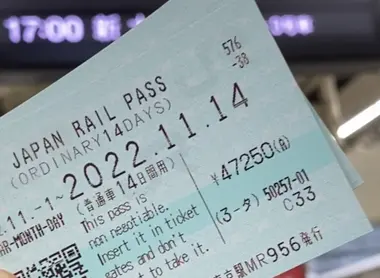
Give you local insight into Japan
Just as they'll be able to craft your tour's itinerary thanks to their extensive knowledge, our Travel Planners will give you their best tips & tricks.
Thanks to real-life experience, you'll skip the unnecessary sights and be given hidden gems recommendations. Secret spots to eat, to visit or even just to see the sunset... Follow the guide!
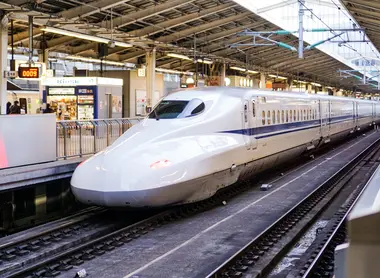
Craft a travel guidebook for you
Along with your tailor-made tour, you will receive a personalized digital travel guidebook (that can be printed, of course). In it, you'll find everything you need for your trip.
Carefully created by our team, this travel guidebook will also be a valuable asset to help you: see it as a condensed version of all our Japan knowledge!
Why book a tailor-made tour with Japan Experience?
Here at Japan Experience, our tours are imagined, built, crafted and carried out by the same team. A team that's been driven by the same passion: turning your dream trip to Japan into a reality. This makes us your perfect partner for your trip to Japan, for 3 reasons:
- We offer the best advice. We specialize only in Japan travel, meaning we know the country inside and out. Our team is made exclusively of passionate individuals having either lived or traveled extensively in Japan. Activities, accommodation... Unique spots and things to do, to create a trip that'll be personalized for you ! Of course, our team also has plenty of secret travel recommendations they'll share with you. As we're already doing with our over 5,000 articles of Japan travel advice.
- We offer the best prices. Thanks to being 100% focused on Japan travel, we have a unique network of local partners who work daily with our local team in Japan, as well as our international team making multiple trips a year to negotiate the best deals for you. This means we have a direct relationship with our local partners, which means cheaper travels for you: no intermediaries taking a cut.
- We guarantee a safe trip. Indeed, our sales team, our booking team and our assistance team are all in-house and work together to build your trip. Over 40 years of experience, multiple offices across the world, thousands of travelers trusting us every year, countless partnerships with media & influencers... Japan Experience is a leader in the Japan travel field. Oh, and we're also the 1st worldwide seller of the Japan Rail Pass.
How to book a Custom Japan Tour with Japan Experience?
Personalized Consultation
Share with us the main points of your itinerary, along with the dates, preferences you prefer during your visit and budget.
Customized Itinerary
Your dream journey takes shape here.
We design a personalized itinerary with the cities, lodgings, and activities of your choice, based on our experience and your goals.
Booking and Confirmation
Once your ideal itinerary is set, we handle the rest.
Pay your deposit and step into a world where all your travel arrangements are meticulously taken care of.
Pre-Trip Support
Our dedicated team remains at your service for any last-minute queries, before and during your trip, ensuring you embark on your journey with confidence and excitement.
Frequently Asked Questions about Tailor-Made Tours
What are the advantages of choosing a custom trip to Japan?
Opting for a tailor-made trip to Japan allows you to customize your itinerary according to your desires and interests. Whether you want to discover the temples of Kyoto, the excitement of Tokyo, the cultural richness of Osaka or travel off the beaten path, our Japanese travel experts will work with you to create an itinerary that suits your wishes. You will be able to fully enjoy the discovery of Japan at your own pace and according to your preferences.
How much does a custom tour in Japan cost? What is included in the price?
The cost of customized tours in Japan depends on many factors such as the duration of the trip, the cities visited, the accommodations chosen (hotels, ryokans, etc.), transportation, guided tours and activities. We work with you to create a customized itinerary that fits your budget. The price of your customized trip will generally include accommodations, transportation (international flights not included), some tours and activities, and the assistance of our Japan specialist consultants.
How to plan a cultural tour of temples, mountains and cities in Japan?
With custom tours, our Japan travel experts will help you plan a cultural itinerary to discover the country's riches. For example, you can visit iconic temples such as Kinkaku-ji in Kyoto, explore the Japanese mountains such as Mount Fuji or the Japanese Alps, and discover cultural cities such as Kanazawa, Hakone or Hiroshima. We will adapt to your wishes and advise you on the sites you should not miss.
What is the ideal duration of a trip to Japan?
The ideal duration for a trip to Japan depends on your interests and the time you have available. For a first trip, we recommend a stay of at least 10 to 14 nights to discover the main cities and sites of the country, such as Tokyo, Kyoto, Osaka and Hiroshima. To explore Japan in more depth and discover the beauty of its islands, countryside and mountains, it is best to stay for 3 to 4 weeks.
Can't find the answer you were looking for?
If you haven't found the answer you're looking for, please check our FAQ page for more information about our Tailor-made Tours.
The various tours we provide can be compared, allowing you to choose the one that best meets your needs. Simply click here: All our Tours in Japan
Activities in Japan
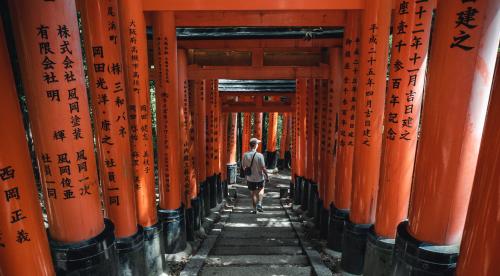
Discover our selection of things to do in Japan!
Japan isn't just Tokyo, Kyoto and Osaka; there are incredible activities to do all over the country , in places like Nara, Okayama, Nikko, Hiroshima, Kobe, or even places off the beaten track. Japan Experience offers a wide range of activities to discover the best of Japan!
- Variety of activities: Over 100 activities across Japan, to suit all tastes and interests, from culture to a tour of Japanese nature to unique experiences.
- Educational experiences: Our activities offer opportunities to learn things about Japanese culture, crafts, cuisine, religion and much more.
- Local English-speaking guides: Enjoy a tailor-made private tour at a reasonable price, accompanied by our local English-speaking tour guides for a more personal, informative and memory-filled experience.
- Quality and professionalism: All our activities are carefully selected and designed by our team of expert professionals with a passion for Japan.
- Authentic discovery: We offer you access to authentic and fascinating Japan experience, enjoyed by local people that are far from the tourist clichés.
Our most popular activities
If you're not sure where to start for your dive into Japanese culture, take a look at and book one of our most popular activities for the best way to enjoy your visit!
For thrill-seekers looking to experience a day of fun and leisure, Universal Studio Japan in Osaka is a must. In Tokyo, immerse yourself and tour the future at TeamLab Planets , one of the best art experiences in Japan or indulge in the timeless magic of Tokyo Disney Sea and Tokyo Disneyland. For an authentic Japanese experience, Kyoto offers a picturesque evening tour in Gion, a soothing tea ceremony that encapsulates the spirit of Japan, or the delicate art of making your own chopsticks. A dinner at a Yakatabune in Tokyo along with other food tour options are the best option to delight gourmets. Each of these bestseller activities offers a medley of unique experiences, ensuring that there's something for everyone to enjoy for your next visit to Japan, either in a private setting or with other ambitious travelers looking for adventure that day.
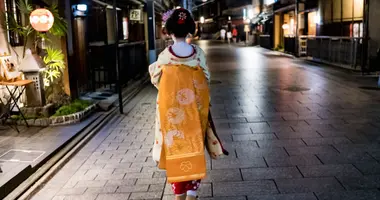
Gion Night Walk Activities in Kyoto
- Duration : 2 hour
- Location : Kyoto
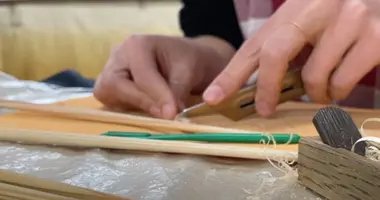
Make your own chopsticks Activities in Kyoto
- Location : 京都市

Universal Studio Japan Activities in Osaka
- Duration : 8 hour
- Location : Osaka

teamLab Borderless Activities in Tokyo
- Location : Minato City

Tokyo Disney Sea Activities in Tokyo
- Location : Tokyo

Tokyo Disneyland Activities in Tokyo
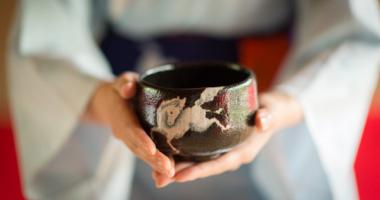
Tea Ceremony in Kyoto Activities in Kyoto
- Duration : 1 hour
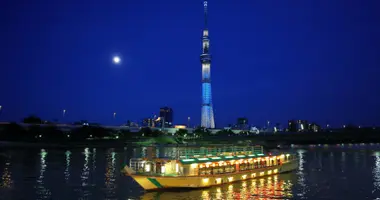
Yakatabune Diner Activities in Tokyo
- Location : Shinagawa City
Our recommended activities
We've carefully selected a range of activities to help you best discover the many facets of Japan and the local culture. Let yourself be immersed in an evening tour through Shinjuku in Tokyo and see where the local people go, or embark on a day of discovery along the tea route in Kyoto. Treat yourself to an enriching exploration of Hakone or a full day of travel in Kamakura. Become a sushi chef during a workshop in Shinjuku City or learn the art of Bento in Kyoto , activities guaranteed to be great experiences for any lover of Japanese food. Or perhaps you'd prefer a complete discovery of Kyoto from top to bottom? There are even special activities for younger travelers with our "Tokyo for Kids" experience. This is the best way to enjoy a visit with family and introduce the richness of Japanese culture. Whatever your preference, we have a unique experience waiting for you.

The Cranes of Japan Kushiro
- Location : Shibecha

Bento cooking workshop Activities in Kyoto
- Duration : 3 hour

On the Tea Road Activities in Kyoto
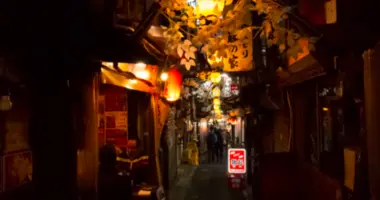
Night stroll in Shinjuku Activities in Tokyo

Kamakura Discovery, full day Kamakura
- Location : Kamakura
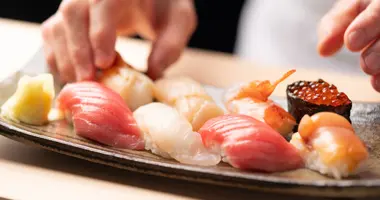
Sushi Workshop Activities in Tokyo
- Location : Shinjuku City

Tokyo for Kids Activities in Tokyo
- Location : Taito City
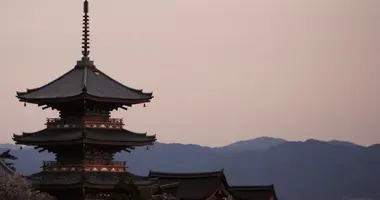
Kyoto Discovery, full day Activities in Kyoto
Frequently Asked Questions
How do I book activities ?
Booking activities is a straightforward process. Simply go to the activity page of the desired experience, follow the steps to book and pay for the activity online.
After booking, you will receive instructions about the meeting place, the time and the tickets via email. Depending on the activity, you may receive your tickets via email or through the post office. Be sure to check the instructions carefully to ensure that you have all the necessary information before your activity.
If you have any questions or concerns about booking activities, do not hesitate to reach out for assistance.
Are activities suitable for all ages?
Yes, our activities are designed to be enjoyed by all age groups. However, some may require a certain level of fitness or may not be suitable for very young children. We always encourage our customers to check the details of each activity to ensure that it is suitable for all participants. Our team is also available to help you select the best experiences to suit your needs.
What languages are available for guided tours?
The guided tours we offer are all available in English and French, as a minimum. However, guide availability may vary according to activity and date. In addition, some tours may also be available in other languages. We recommend that you consult the page dedicated to each activity for more information on the language options available.
What are the must-sees on a visit to Japan?
Japan offers a multitude of unforgettable experiences and major attractions worth exploring. Here are a few must-sees:
Tokyo : Japan's capital is a fascinating blend of modernity and tradition. Don't miss the electronic district of Akihabara, the Senso-ji temple in Asakusa, the bustling crossroads of Shibuya and Tokyo Tower. For pop culture fans, the Harajuku district and Studio Ghibli are a must.
Kyoto : Known as the cultural heart of Japan, Kyoto is home to numerous ancient temples, Zen gardens and Shinto shrines. Be sure to visit the Golden Pavilion (Kinkaku-ji), Kiyomizu-dera temple and the Fushimi Inari Taisha with its thousands of vermilion torii. A stroll through Gion's geisha district is also recommended.
Mount Fuji : Japan's highest peak, Mount Fuji is an iconic sight. For outdoor enthusiasts, climbing Mount Fuji in summer is a memorable experience. Alternatively, Fuji-Hakone-Izu National Park offers magnificent views of the mountain.
Hiroshima : Visit Hiroshima Peace Memorial Park to understand the city's history and its message of peace. Then take a short ferry to the island of Miyajima and its large floating torii at Itsukushima Shrine.
Nara : The city of Nara is famous for its huge park, home to free-roaming fallow deer. The park is also home to Todai-ji temple, which houses the world's largest bronze Buddha statue.
Osaka : Don't miss Osaka Castle and the Kaiyukan aquarium, one of the largest in the world. Enjoy takoyaki and okonomiyaki, two emblematic Osaka dishes, in the Dotonbori district.
Kobe : This port city is famous for its Kobe beef, but don't miss the picturesque Kitano district with its historic Western houses and panoramic views from Mount Rokko.
Ultimately, it is quite possible to quickly lower the price of a trip to Japan by playing on your different budgets (catering, accommodation, transport), without sacrificing the quality of your stay!
For further :
- Japan Rail Pass, the practical and economical solution for traveling by train in Japan
- How much does it cost to climb Mount Fuji?
- Preparing for your stay in Tokyo
- Preparing for your trip to Japan
Please select your country on the list below:
- Switzerland
- United Kingdom
- Other countries

9 Tips for Japan Travel You Can't Afford To Miss
I f you’re planning a trip to Japan, know that the process is a commitment . We’ve gone all over the world and back again, even traveling full-time for two years with our young children.
Even so, planning a trip to Japan sometimes felt like a Herculean task. There are so many moving parts, rules and barriers that it was easy to be overwhelmed at times. After putting together what I’d deem a very successful first visit, I’ve put together some of my best Japan travel tips to help you plan the trip of a lifetime!
I promise, you won’t want to miss these tips for traveling to Japan – they’ll help you make the most of your time with the fewest hassles.
1. Plan as far in advance as you can
As frequent readers of this website know, we’re avid travelers and have been all over the world – sometimes hopping countries on just a few days’ notice.
Japan isn’t a place where I’d want to do that. Ever.
The most important of my tips for Japan travel is to give yourself as much lead time as possible.
We were shocked at just how important it is to plan a trip to Japan well in advance. In my experience particularly if you plan to visit during a peak time (roughly March through May and, to a lesser extent, September and October) you’ll be happiest if you start arranging your hotels 4-6 months in advance. Even 4 months before our March trip, a few small or specialty hotels were already sold out. When I looked to shift our itinerary 3 months in advance, our hotel in Tokyo was double the price I had paid.
But it isn’t just about booking your flights and hotels. There are so many cool attractions in Japan that require booking at least a month in advance. It’s not just the obvious ones! Everything from TeamLab Tokyo (which we got) to Pokemon Cafe (which we didn’t) sells out. Heck, even the wonderful onsen we visited had limited availability for private rooms a month in advance.
Unfortunately the need to lock down times and places so far in advance can make Japan travel planning very tricky. Give yourself plenty of time and try not to get overwhelmed – take it one area at a time and don’t be too disappointed if you can’t get into one specific attraction or hotel. Know that you’ll still have an incredible trip and you’ll be starting to consider a return visit while you’re still there!
Pro tip: When you’re planning, don’t be afraid to book through Klook ! It’s one of the most popular sites for booking activities throughout Asia. It’s easy to use and has a great reputation. We used it many, many times without a hitch.
2. Consider the overall structure of your itinerary
Obviously the first thing to nail down when you’re planning a trip to Japan is the basic framework of your trip: your flights and roughly which regions you’ll visit when. There are a few ways to do it, which I’ll go over here. Here are some ideas for family-friendly Japan itineraries .
If you’re coming from North America, chances are you’ll fly into one of Japan’s three main international airports: Narita (NRT), Haneda (HND) or Kansai (KIX). West coasters may have the luxury of choosing where they’ll go, while travelers coming from the midwest and east coast will probably have to take what they can get based on how their connections work out.
Both Narita and Haneda are in greater Tokyo, but Haneda is much much more convenient: our taxi ride was an easy 20 minutes, which we appreciated after spending most of a day traveling. Narita would have taken over an hour and been more expensive for our family of four.
The other airport option is Kansai, which is about an hour from downtown Osaka by train. A west coast family member recently chose an open-jaw itinerary that arrived in Osaka and departed from Haneda. That was a great option as it avoided an extra few hours of train travel – and depending on your itinerary it could allow you to choose a shorter duration Japan Rail Pass (but more on that later). When we considered a similar itinerary, unfortunately the connections weren’t as favorable and the price was a lot higher but be sure to evaluate options for your airport and dates.
The second half of structuring your itinerary is figuring out the order in which you want to visit Japan’s wonderful and diverse regions. On a first visit, most tourists split their time between Tokyo , Kyoto /Osaka and Hiroshima . It’s worth considering the order of your trip, especially if you end up with a roundtrip ticket to Tokyo (as most visitors do). If you’re lucky enough to have a KIX flight on one leg, your itinerary will mostly build itself.
There are two schools of thought on how to structure your Japan itinerary . This excellent book recommends exchanging your Japan Rail Pass voucher at the airport when you arrive and immediately hopping on a bullet train for Hiroshima as one of the top tips for travelling in Japan. In theory you could also take a short domestic flight to Hiroshima, as it’s less than 2 hours and sometimes only $50 per ticket. You’ll then slowly make your way back up to Tokyo to finish out your trip. The benefits of this option are that you’ll be able to sleep for much of the 6 hour travel time (since most visitors are exhausted after crossing so many time zones) and you’ll also start off in the quieter parts of the country before tackling the hustle and bustle of Tokyo.
We took a different approach and it worked out fine as well. Our trip started with 5 nights in Tokyo, which was just a busy as advertised but allowed us to settle in and feel as rested as possible when we were clocking 10 miles on foot each day. Then once we had our bearings we went all the way to Hiroshima and Miyajima Island. Our final stay was in Kyoto , halfway between Tokyo and Hiroshima. With only 10 nights in Japan, our stays in Miyajima and Kyoto was shorter and might have been harder with the kids right when we’d gotten off the plane.
I’d probably avoid closing out your trip in Hiroshima. The security line when we returned to Haneda was one of the longest I’ve ever waited in and you would likely have to build in three hours to check in and get through security, whether you’re taking the 5-6 hour train ride or the 2 hour domestic flight (remembering to allow 60 minutes to get to the Hiroshima airport from downtown or 2.5 hours from Miyajima Island and 2 hours for domestic check in). Going through all of that followed by an incredibly long international flight is just too brutal.
3. Always factor transportation into your advance planning
Speaking of transportation, there’s a lot of it in Japan and it should factor into your planning from the beginning in terms of both time and money.
Japan is famous for its shinkansen bullet trains, but in reality the nation’s transportation network is far more vast than most people realize until they visit. Japan has more than 30,000 km of rail, which would get your 3/4 of the way around the globe if it was all laid end-to-end. Those rails are part of everything from the bullet train lines that travel at 200 mph to regional railways to local subways.
Even within a single municipality, there can be multiple overlapping transit lines run by the government, private companies or public-private partnerships. As a visitor, it can sometimes be confusing or even frustrating.
You’ll want to download the excellent JapanTravel app by NAVITIME to your phone. You can also use it on your computer though I found that it didn’t work as well. Where this app is a standout is that it allows you to select which transit passes you have (or are considering purchasing) and shows you which routes are included and which ones aren’t.
Before we talk about money, passes and more I’ll just share a quick note about the time aspect of taking trains in Japan. Overall they’re extremely efficient and get you from A to B. But Japan is home to 46 of the 50 busiest train stations in the world, and when you first arrive prepare to be a little lost. When you’re taking local trains, I recommend allowing plenty of buffer time to what the directions tell you. A “20 minute trip” could easily take you 30 minutes if you struggle to find the platform for your connection or figure out which exit the walking portion of your directions indicate. It’s not your fault, but plan accordingly if you have time-specific activities.
The first piece to figure out – at least a month before your trip but not more than 90 days – is whether or not a Japan Rail Pass is right for you. This pass gives you access to nearly every Japan Rail operated line in the country for a specific number of consecutive days. If you’ll be flitting around to different regions in a fairly short period of time it can be a great savings! You won’t typically need it for your entire itinerary. For example, we made sure that we only needed ours for 7 of our 10 days.
To give you a sense of our our calculations worked, on the second day of our JR Pass we traveled from Tokyo to Hiroshima. On the final day of our pass we traveled from Kyoto to Tokyo. Those two legs alone would have cost us more than the 7 day pass, and of course we used it many times in between.
The very fastest bullet trains – which cut an hour off of the transit between Tokyo and Hiroshima – aren’t currently included with the Japan Rail Pass but they will be when the rail pass price increases in early 2024. That price increase is going to hurt and you’ll really have to evaluate whether or not the pass makes sense for you if you’re visiting beyond 3/31/2024 (the initial announcement indicated October 2023, but it seems to have been pushed back). Of course it’s also possible that fares for individual tickets will rise as well.
Fortunately there’s no need to worry about spending for the fancy “Green Car” service. The regular class is plenty comfortable and very spacious, with reclining seats and tray tables for your bento box. And families rejoice: children 6-11 can get half-price rail passes! Each adult can also take up to two children ages 1-5 on their laps (though only one is realistic) and babies travel free.
Things get much more complicated when you’re talking about local and regional transportation.
If you’re traveling kid-free or your kids are 0-5, your simplest option is to buy an IC card . These are essentially reloadable debit cards that can be used on nearly every transportation system in areas where tourists go in Japan, plus you’ll use them for cashless payment at lots of businesses and kiosks in the country. To make your life easy, once you get your IC card add it to your Apple Wallet or Google Pay app. You can even top up your IC card directly from your phone, and Apple Watch users can scan into trains with their wrists. With an IC card you won’t have to buy individual tickets for train rides, though if you’re taking lots of trains you may end up spending more than if you purchased a train pass – more details on those below.
Unfortunately for families with kids over 6, an IC card isn’t quite so simple. First, for your children to receive discounted child fares when they tap in to a train they have to be on a child IC card. You’ll need to bring the kid and their passport to the JR East office to get it (this is the same place where you’ll exchange your JR Pass voucher for actual tickets). Second, unless they have their own cell phone they won’t be able to use the digital option and will need to carry the physical card and top it up at an actual kiosk.
Given the different fares, shopping opportunities and different reloading options, you may wind up with times when most of the family is topped up and ready to go but a kiddo’s card needs money unexpectedly at the turnstile. The upside is the most of the time you can board basically any train in the country with a simple tap and no worrying about which train line you’re taking. Some families even load their kids’ souvenir shopping money on to the IC card and empower them to stay within their budgets. That’s a great hack for family travel in Japan!
If dealing with IC cards sounds like a headache or you think you’ll ride local trains a lot, there are some additional train passes worth considering. Our family got excellent value out of the 72 hour Tokyo subway pass . It covered nearly every non-JR train we needed to take around the city, including the one conveniently located underneath our hotel . The cost of that pass just can’t be beat!
As you go in the Kansai region (encompassing Kyoto, Osaka, Nara and more) you can consider the Kansai Thru Pass for 2 or 3 days (and kids at half price). It covers nearly all non-JR rail lines plus bus lines and can be used on non-consecutive days. If you have an active Japan Rail pass you can use that for select rides in the city as well, but JR lines aren’t as ubiquitous as elsewhere.
Whether or not a pass makes sense for you will depend on how much you plan to use public transportation versus taxis and Ubers. That said, there’s also the convenience factor of nearly every trip being covered without having to stop at a ticket machine every time you want to board. You could also consider separate passes for Keihan , Hankyu and buses.
There were a few times when we felt like a taxi was the best option, for instance when we were heading to the train station with all of our luggage in the pouring rain on our last morning in Japan. I was so glad that we brought folding car seats for our kids to ride safely – I consider them a “must” to travel Japan with a family!
Want to organize your plans?
Grab our fully-customizable Japan digital travel planner!
4. Get comfortable with Google Translate
The most useful app for Japan is definitely Google Translate. Unless you’re fluent in Japanese (reading and speaking) you’ll use it all day, every day. If you only take away two traveling in Japan tips, it should be this one along with planning as early as possible.
We encountered so many people in Japan who were eager to help us in our travels but virtually none of them spoke English. And that’s understandable, because it’s their country and Japanese is the local language. Thankfully Google Translate was there to bridge the divide. We had plenty of “conversations” that consisted of us typing a few sentences into our app and a Japanese person typing their reply into their own Google Translate.
The other piece of Google Translate that’s indispensable is translating text in images, whether it’s a sign on a storefront or a Japanese-only menu. Particularly if you have any dietary restrictions, you’ll want to take advantage of this.
I recommend that you download the Japanese dictionary within your Google app before you go. When you go to the translation module, click “Detect language” and find Japanese on the list. Then click the download icon to the right. Your translations will be faster when you’re on the ground and you won’t have to worry about using mobile data.
5. Bring power backups for your phone
If you’re anything like us, you’ll use your phone all day long in Japan. Directions, photos, translations and more… it all takes a toll.
We love this portable charger because it plugs directly into our iPhones without a cord and still fits in our pockets. There’s an Android-friendly version as well. We brought one with us, but only because I forgot the second one charging at home when I packed! There were plenty of days we wished we had the second battery pack. It tops my list of what to bring to Japan.
On our smarter days, we brought a USB charging cable and wall plug with us. Plenty of restaurants in Japan have outlets near the tables so we were able to charge while we ate.
Speaking of plugs, Japan uses the same style outlets as the USA. Even so, I ended up bringing this gadget because it saved tons of space and energy on USB wall adapters!
Other things to put in your day pack for Japan: a plastic bag to carry around your trash, a small travel washcloth and hand sanitizer.
6. Pack strategically
I have plenty more to say about what to pack for Japan specifically, but as you’re planning your trip it’s helpful to have an overall strategy that takes your itinerary into account.
First, packing light is always a good thing. I love the travel capsule wardrobe strategy for maximizing my outfits while minimizing my luggage.
Second, if you plan to take trains around the country (which nearly everyone does) know that there’s limited space for huge suitcases in each compartment. Carry-on suitcases and travel backpacks will fit on the overhead racks without issue.
For our family of four, we traveled with two carry-on suitcases, one 35L travel backpack (which I’m wearing above) and our kids backpacks. We also tucked this awesome packable daypack into our luggage to use on the ground. Since we were sharing luggage, we made liberal use of packing cubes to organize everyone’s stuff. Japan isn’t a country that requires a lot of specialized equipment and we made sure to book one hotel with laundry , so packing light was easy!
Now for the strategy part… our itinerary included a very busy 48 hour stretch that saw us taking trains, buses, boats and taxis as we went all the way down to Miyajima Island and doubled back to Kyoto with a half-day stop in Osaka. It was a whirlwind!
But thanks to the excellent Ta-Q-Bin luggage forwarding service run by Yamato, we didn’t have to lug all of our stuff with us. Ta-Q-Bin is beloved by locals and visitors alike, as it reliably and affordably moves your items around the country. The service is available via 7-11 and many hotels. We arranged it the night before with the concierge at our Tokyo hotel . For just $50 we sent both of our suitcases and a supplied cardboard box containing the kids’ backpacks to Kyoto, and we just brought our 35L backpack and daypack for two nights on Miyajima Island. Without a hitch, our items were waiting in our hotel room in Kyoto when we got there!
Having the freedom to move through busy parts of your itinerary unencumbered is amazing. Sure there are luggage lockers in many places (the one time I tried to snag one they were full) but we didn’t always go and come back the same way.
Some visitors also use Ta-Q-Bin on the day they arrive in Japan. While the service generally calls for about 48 hours of lead time, Yamato offers same-day service within Tokyo from the airports if your flight comes in early enough. That means you can drop off your luggage when you arrive and immediately go sightseeing without stopping at your hotel first!
7. Engage with Japanese people
While it’s true that Japanese people are generally quiet and respectful in public, don’t let that scare you from interacting. Overall we found warmth, generosity and an overwhelming desire to help us as tourists – all of this despite the understandable language barrier.
We encountered kindnesses of all sizes, from the businessman who went ten minutes out of his way to help us find a hidden train station to the young people who saw us picnicking and offered us a spare tarp to sit on. Even though there are differences in how we approach public life, plenty of Japanese people we met were happy to chat about their favorite restaurants, the sports teams they support and all of the other normal aspects of daily life.
Private or small-group tours are a great way to forge those connections, even for the DIY traveler. You’ll have an opportunity to ask all of your burning questions about life in Japan and hear an insider’s perspective from someone who is eager to be a bridge.
8. Don’t be afraid of unfamiliar (or inexpensive!) foods
I’m not afraid to say that Japan’s food scene is incredible. Whether you’re craving fresh, creative, comforting or affordable you’ll find it in spades. But the most important thing to bring when you dine (other than perhaps a reservation) is an open mind.
You’ll undoubtedly encounter plenty of foods in Japan that you never imagined, from cabbage-laden okonomiyaki to octopus-filled takoyakio to sakura mochi wrapped in salt-pickled leaves for dessert. As long as they’re within any particular dietary restrictions you have, give it all a shot!
On the note of dietary restrictions, be sure to have your Google Translate app ready at restaurants if you’re particular about what you’re eating. It can be tough.
Pro tip: If you’re looking for pork-free ramen or vegan ramen in Tokyo, don’t miss the rainbow ramen at Afuri. There are locations throughout the city.
By the same token, don’t discriminate against affordable food in Japan. There are plenty of solid options where you can get yakitori , sushi or fried chicken for just a few dollars and they’re absolutely delicious. Many Japanese people grab sandwiches or other simple lunch foods at convenience stores like 7-11 or Lawson’s – these are perfect to bring along for a lunch picnic in one of the thousands of beautiful parks you’ll stumble across.
I’ll be honest and say that we had one of our most filling and satisfying breakfasts at Denny’s of all places – but it was delicious chicken and rice porridge for the adults and broiled salmon with rice for the kids. You could eat for $15-20 per day and really enjoy a huge range of Japanese food!
9. Plan some unique activities
With the ever-increasing costs of flights and hotels, it’s tempting to try to save on other parts of your trip to Japan. There are plenty of free things to do in Japan, from visiting all of the unique temples and shrines to searching out your favorite garden.
But it would be a shame to miss out on some of the more unique things to do in Japan that you have to pay for. Check out some of these great only-in-Japan experiences that we loved:
- Take an in-home cooking class
- Dress in a kimono and participate in a traditional tea ceremony
- Attend a sumo tournament
- Stay in a traditional ryokan where you can enjoy everything from sleeping on futons to soaking in an onsen to dining on a local gourmet breakfast
Of course there are a million other things you can do in Japan! One fact is certain: no matter where you go or what you, you’ll walk away anticipating your next visit.
Planning your trip to Japan
I hope these travel tips for Japan have give you the confidence to plan your own adventure!
Ready to dive in? Don’t miss these helpful resources for planning your own Japan trip!
- Buy your Japan Rail Pass
- Best Things to do in Japan With Kids: A Kid’s Take
- Essential Japan Itinerary: 10 Days of Family-Friendly Travel
- What to Pack for Japan in Spring (and What to Leave at Home)
- Things to do in Tokyo With Kids: Itinerary for 4 Days of Old and New
- The Best Hotels in Tokyo for Families (and How to Choose Yours)
- Visiting Kyoto With Kids: 2+ Day Itinerary + Must-Read Travel Tips
- Best Family Hotels in Kyoto
- Awesome Pokémon Things to do in Japan
- Visiting the A-Bomb Sites in Hiroshima with Kids
- 10 Japan Cultural Activities & Attractions For Your Bucket List
The post 9 Tips for Japan Travel You Can’t Afford To Miss appeared first on The Family Voyage .
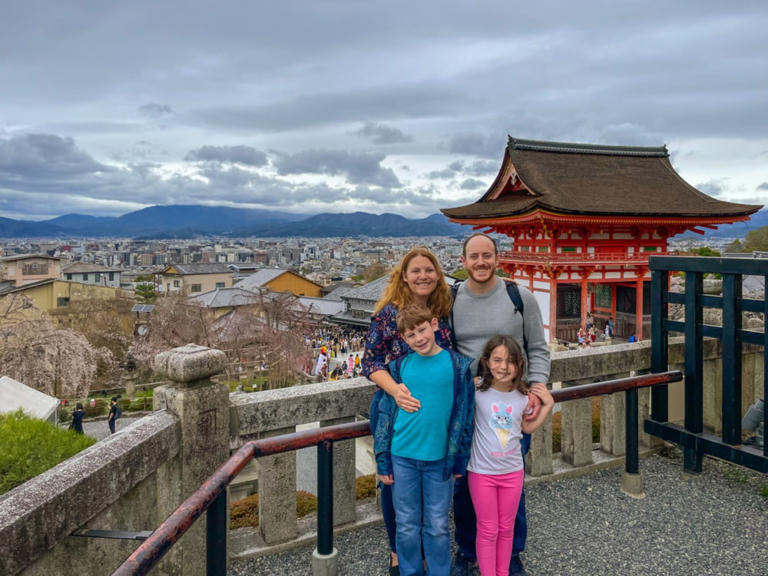
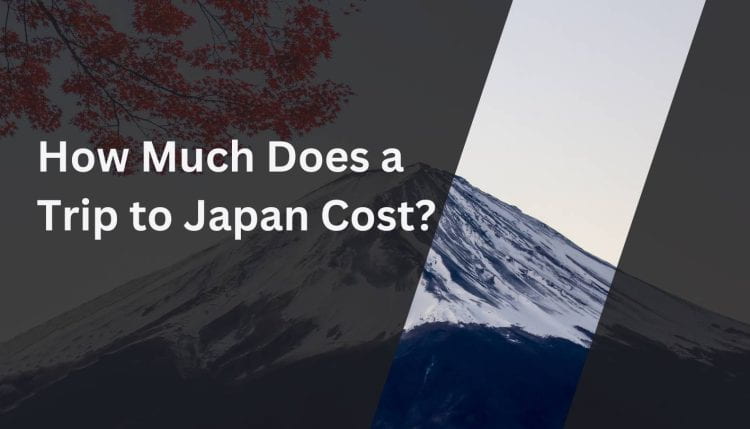
How Much Does a Trip to Japan Cost? Breaking Down Your Japan Travel Budget
As someone who has traveled to Japan multiple times, I’m here to give you the inside scoop on what it really costs to travel to this amazing country.
Whether you’re dreaming of cherry blossoms in Tokyo, exploring historic temples in Kyoto, or chowing down on street food in Osaka, Japan is a bucket list destination for many. But before you start packing your bags, it’s important to understand the japan trip cost so you can budget appropriately.
In this post, I’ll break down all the major expenses you can expect on a trip to Japan, including:
- Accommodations
- Transportation
- Activities and attractions
By the end, you’ll have a clear idea of how much to budget for your dream trip to Japan. Let’s dive in!
Flights to Japan
Unless you live in Asia, flights will likely be your biggest upfront expense. Prices can vary significantly depending on your departure city, time of year, and how far in advance you book.
Here are some sample round-trip flight prices to Tokyo from major cities:
- New York City to Tokyo: $800-$1500
- Los Angeles to Tokyo: $700-$1300
- London to Tokyo: £600-£1200
- Sydney to Tokyo: $700-$1100
To get the best deal, I recommend starting your flight search early and using tools like Google Flights or Skyscanner to compare prices and set up alerts. Avoid peak travel times like Cherry Blossom season and the summer months if possible. Shoulder season (March to May and September to November) can be a great time to score cheaper flights.
Accommodations in Japan
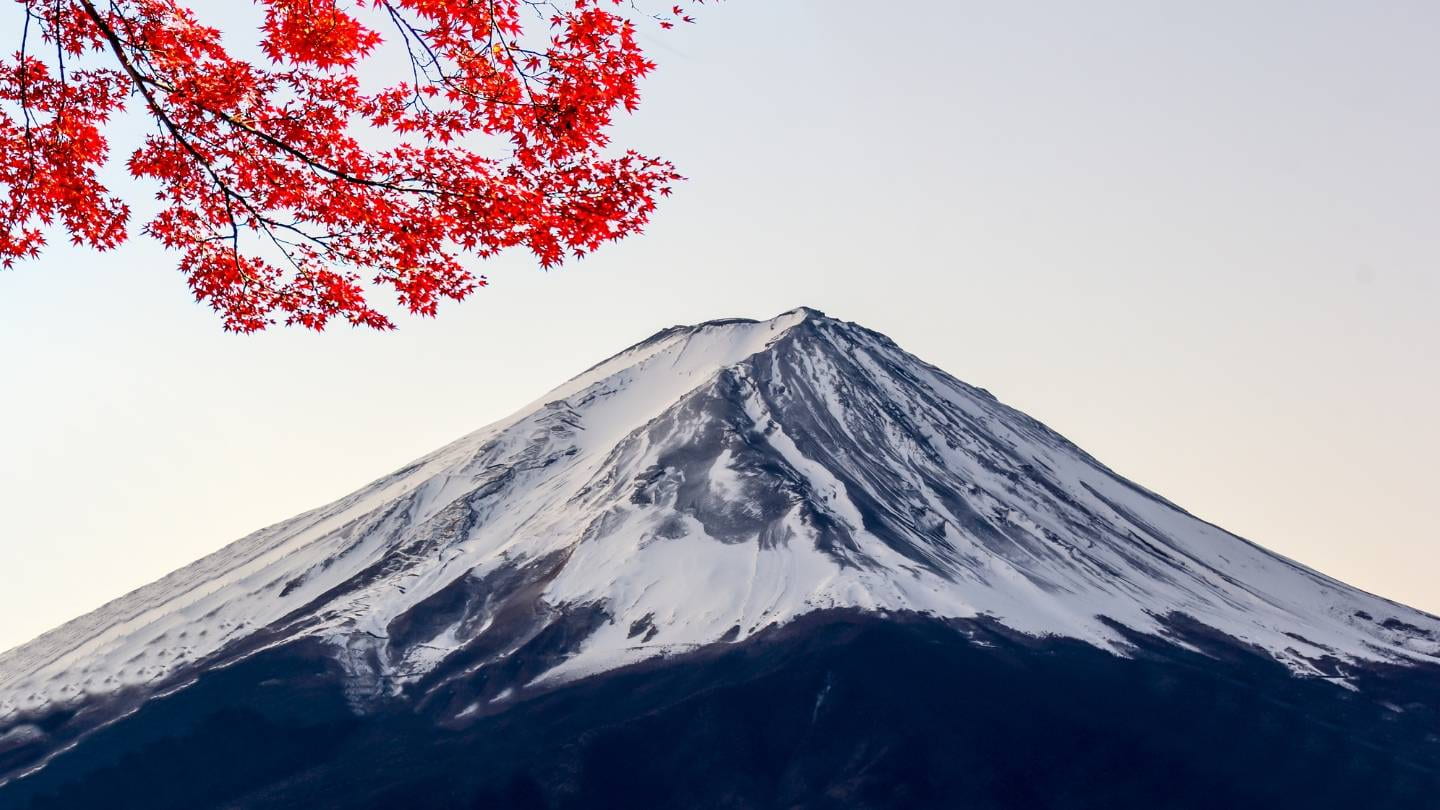
After flights, accommodations will be your next biggest expense in Japan. Hotel prices can be quite high, especially in big cities like Tokyo. Hostels and capsule hotels offer budget-friendly options, while mid-range hotels will run you $100-300 per night.
Here’s a rough breakdown of accommodation prices:
- Budget hostel/capsule: $20-50/night
- Mid-range hotel: $100-300/night
- High-end hotel: $300+/night
To save money, consider:
- Staying in less central neighborhoods
- Booking accommodations with kitchens so you can cook some meals
- Using hotel points if you have them
Airbnb can also be a good option in Japan, especially for larger groups or those who want a more local experience. Just be sure to book well in advance as the best places fill up quickly.
Transportation in Japan
Japan has one of the world’s most efficient and comprehensive transportation systems. The iconic Shinkansen (bullet train) can zip you between cities at speeds of up to 200 mph. Within cities, subways and buses make it easy to get around without a car.
However, all this convenience comes at a price. Here are some common transportation costs to budget for:
- 7-day JR Pass (for foreigners only): $250-300
- One-way Shinkansen ticket (Tokyo to Kyoto): $120-150
- Single subway/bus ride: $2-3
If you plan on visiting several cities, a JR Pass can be a good value as it allows unlimited rides on most JR trains, including the Shinkansen. However, it must be purchased before arriving in Japan.
For getting around cities, I recommend getting an IC card like Suica or Pasmo. These reloadable cards can be used on most subways and buses and will save you the hassle of buying individual tickets.
Food Costs in Japan
One of the best parts of traveling to Japan is experiencing the incredible food. From sushi and ramen to yakitori and okonomiyaki, there’s no shortage of delicious things to eat.
Food costs can vary widely depending on your tastes and budget. Here’s a general idea of what to expect:
- Street food/convenience store meal: $5-10
- Cheap restaurant meal: $8-15
- Mid-range restaurant meal: $15-30
- High-end sushi or kaiseki meal: $100+
To save money on food:
- Eat at convenience stores and supermarkets – the quality is very high!
- Have a few picnics with food from grocery stores
- Look for lunch specials at restaurants
- Splurge on a few nice meals but balance it out with cheaper eats
Activities & Attractions in Japan
Japan is packed with amazing things to see and do. What to do in Japan depends on your interests, but some popular options include:
- Visit historic temples and shrines in Kyoto
- See the famous Fushimi Inari Shrine
- Take a trip to Tokyo Disneyland or DisneySea
- Explore the quirky shops and cafes of Harajuku
- Hike or take a cable car up Mount Fuji
- Experience the craziness of the Shibuya Crossing
- Visit one of Japan’s many excellent museums
- Attend a sumo wrestling match or kabuki performance
Most temples and shrines have admission fees of $3-8. Theme parks and other big attractions can cost $50-80 for a day pass. Museums are usually $5-15.
To save money, take advantage of free activities like wandering neighborhoods, visiting parks, and window shopping. Check the events calendar for free festivals as well.
Mobile Data & eSIM in Japan
Staying connected is essential these days, especially when traveling in a foreign country. While you can usually find free wifi in hotels, cafes and some public spaces in Japan, having your own mobile data can make things a lot easier.
One convenient and affordable option is to get a Japan eSIM for your trip. An eSIM is a digital SIM that allows you to get mobile data without having to physically swap out your regular SIM card.
Several companies offer eSIM data plans for Japan, including:
- Airalo Japan eSIM: from $4.50 for 1GB, 7 days
- Ubigi Japan Travel eSIM: from $8 for 1GB, 8 days
- GigSky Japan Data eSIM: from $10 for 500MB, 15 days
You can easily buy and activate these eSIMs online before your trip. Then once you arrive in Japan, your phone will automatically connect to the local network and you’ll have data to use for maps, translation apps, and staying in touch with folks back home.
Prices start around $5 for a few GBs of data, which can be a lot cheaper than paying for international roaming from your home carrier. Just be sure your phone is unlocked and eSIM-compatible before buying.
Example Trip Budget
To help you put it all together, here’s an example budget breakdown for a 10-day trip to Japan for one person:
- Flights from Los Angeles: $1000
- Accommodations (mix of hostels & mid-range hotels): $1000
- 7-day JR Pass: $300
- IC card with $100 preloaded: $100
- Food (mix of cheap eats & a few nice meals): $500
- Activities (4 big attractions + several smaller ones): $300
- Shopping & souvenirs: $200
- Travel insurance: $100
TOTAL: $3500
Of course, your japan trip cost will depend on your specific itinerary and travel style. You could easily spend less by staying in hostels and eating on the cheap, or much more by staying in nice hotels and splurging on meals and activities.
The key is to make a budget ahead of time so you know what to expect. Don’t forget to factor in things like travel insurance, shopping, and any pre-trip expenses like gear or vaccinations.
Final Tips for Saving on Your Japan Trip
To recap, here are my top tips for saving money on your trip to Japan:
- Travel during shoulder season for cheaper flights and hotels
- Stay in budget accommodations like hostels or capsule hotels
- Get a JR Pass if you plan on taking several train trips
- Eat cheap meals at convenience stores and grocery stores
- Take advantage of free activities and attractions
- Set a budget ahead of time and stick to it
With some careful planning and budgeting, a trip to Japan can be surprisingly affordable. By using the information and tips in this post, you’ll be well on your way to making your Japan travel dreams a reality without breaking the bank.
The japan trip cost can seem intimidating at first, but don’t let that hold you back from experiencing all the incredible things this country has to offer. Start saving, do your research, and get ready for the trip of a lifetime! You won’t regret it.
Let me know if you have any other questions as you plan your trip. I’m always happy to help fellow Japan travelers. Safe travels!
Share this:
↞ Previous Post
Next Post ↠
Important: Read our blog and commenting guidelines before using the USF Blogs network.
We've detected unusual activity from your computer network
To continue, please click the box below to let us know you're not a robot.
Why did this happen?
Please make sure your browser supports JavaScript and cookies and that you are not blocking them from loading. For more information you can review our Terms of Service and Cookie Policy .
For inquiries related to this message please contact our support team and provide the reference ID below.
Weak Yen Drives Japan’s Record-Breaking Tourist Arrivals
Peden Doma Bhutia , Skift
April 17th, 2024 at 10:11 AM EDT
The depreciation of the Japanese yen against major currencies, particularly the U.S. dollar, has played a pivotal role in driving unprecedented levels of tourist arrivals to Japan.
Peden Doma Bhutia
Japan’s tourist arrivals soared to a record-breaking high last month, with over 3 million visitors exploring the country, as reported by the Japan National Tourism Organization on Wednesday.
Contributing to this milestone were a weak yen, currently trading at a 34-year low against the dollar, along with the influx of travelers eager to see Japan’s famed cherry blossoms.
This is the first time Japan has surpassed the 3 million-visitor mark in a single month, surpassing the previous high of 2.99 million in July 2019.
Compared to the same period last year, March arrivals increased by almost 70%, and were up approximately 12% compared to March 2019.
Top Source Markets
South Korea emerged as the leading source market for Japan’s tourism, contributing over 663,000 arrivals, followed by Taiwan and China.
Despite Chinese arrivals remaining 35% below 2019 levels, tourist numbers from 17 markets, including Europe, the U.S., Australia, Vietnam, and India, hit an all-time high. Tourism arrivals from Australia went up 87%, while the U.S. experienced a surge of over 64%.
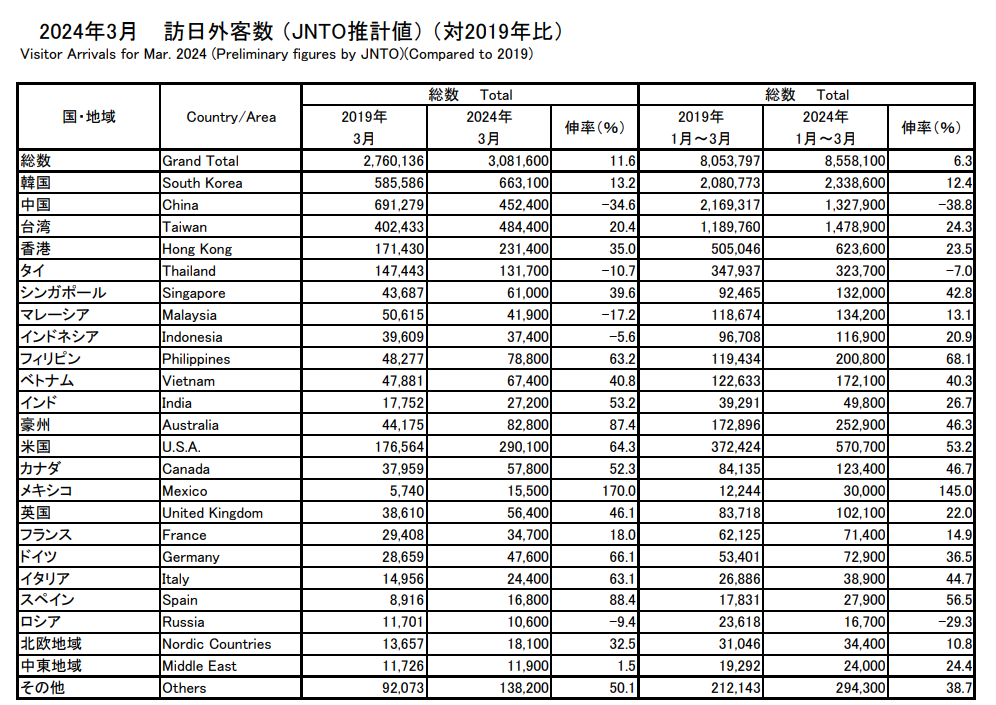
For the first quarter of this year (January-March), Japan welcomed over 8.5 million tourists. During this period, international travelers collectively spent JPY1.8 trillion ($12 billion), averaging approximately JPY210,000 ($1,358) per person per stay — a record-breaking figure.
As Japan aims to attract 60 million foreign visitors annually by 2030, the country looks to surpass its pre-pandemic high of 32 million arrivals by 2025 .
In 2023, Japan hosted around 25 million visitors, who collectively spent a record JPY5.3 trillion ($34 billion), with an average tourist spending approximately JPY210,000 ($1,360) per stay.
The China Focus
As Chinese arrivals are still below pre-Covid levels, Japan has been wanting to increase tourism numbers from China.
On Monday, China’s biggest online travel company Trip.com Group announced that it will be working with Japan National Tourism Organization (JNTO) to support the recovery and growth of Japan’s tourism industry.
As a leading global travel service provider, https://t.co/QnNAnxosSn Group has been working closely with the Japan National Tourism Organization (JNTO) and various Japanese prefectures to support the recovery and growth of Japan's tourism industry. With a focus on attracting… pic.twitter.com/odRfr4ai2b — Trip.com Group (@tripcomgroup) April 15, 2024
“With a focus on attracting affluent Chinese travelers aged 20-40, our collaborative efforts aim to showcase Japan’s natural beauty, rich culture, and diverse experiences,” the company said in a release.
In 2023, Trip.com Group noted encouraging signs of recovery, with passenger numbers reaching 58% of 2019 levels.
Japan Digital Nomad Visa
This month, Japan also introduced the digital nomad visa tailored for remote workers, requiring a minimum annual income of JPY 10 million ($68,300) to qualify.
Citizens from 49 countries and territories with either a tax treaty or reciprocal visa-exemption with Japan, including all EU nations, U.S., UK, Turkey, Australia, South Korea, Taiwan and Singapore, can apply.
Holders of the digital nomad visa can stay in Japan for up to six months.
Applicants must be tourists working remotely for overseas companies or freelancing for international clients. They must possess private health insurance. Accompanying spouses and children are permitted to stay for the duration of the visa.
The Daily Newsletter
Our daily coverage of the global travel industry. Written by editors and analysts from across Skift’s brands.
Have a confidential tip for Skift? Get in touch
Tags: asia monthly , asia newsletter , china , coronavirus recovery , currency , japan , japan national tourism organization , tourism , trip.com group
Photo credit: Japan's famed cherry blossoms. Yu Kato / Unsplash
- Meetings & Events
- Newsletter Sign-up
- Coronavirus (COVID-19) Advisory Information
- Select Language 简体中文 繁體中文(香港) 繁體中文(臺灣) India (English) Bahasa Indonesia 한국어 ภาษาไทย Tiếng Việt Singapore (English) Philippines (English) Malaysia (English) Australia/New Zealand (English) Français Deutsch Italiano Español United Kingdom (English) Nordic countries(English) Canada (English) Canada (Français) United States (English) Mexico (español) Português العربية Japan(日本語) Global (English)
- India (English)
- Bahasa Indonesia
- Singapore (English)
- Philippines (English)
- Malaysia (English)
- Australia/New Zealand (English)
- United Kingdom (English)
- Nordic countries(English)
- Canada (English)
- Canada (Français)
- United States (English)
- Mexico (español)
- Global (English)
- Fujiyoshida
- Shimonoseki
- Ishigaki Island
- Miyako Island
- Kerama Island
- Tokyo Island
- Koka & Shigaraki
- Hida Takayama
- Ginza, Nihonbashi
- Beppu & Yufuin (Onsen)
- Ginzan Onsen
- Nagasaki Islands

- Kumano Kodo
- Shikoku Karst
- Amami Oshima
- Hachimantai
- Omihachiman
- Aizuwakamatsu

- Diving in Japan
- Skiing in Japan
- Seasonal Flowers in Japan
- Sustainable Outdoors
- Off the Beaten Track in Japan
- Scenic Spots
- World Heritage
- Home Stays & Farm Stays

- Japanese Gardens
- Japanese Crafts
- Temple Stays
- Heritage Stays
- Festivals and Events
- Theater in Japan
- Japanese Tea Ceremony
- Cultural Experiences in Japan
- Culture in Japan

- Local Cuisine Eastern Japan
- Local Cuisine Western Japan
- Local Street Food
- Japan's Local Ekiben
- Japanese Whisky
- Vegetarian and Vegan Guide
- Sushi in Japan Guide
- Japanese Sake Breweries

- Art Museums
- Architecture
- Performing Arts
- Art Festivals
- Japanese Anime and Comics
- Japanese Ceramics
- Local Crafts

- Scenic Night Views
- Natural Wonders
- Theme Parks
- Samurai & Ninja
- Iconic Architecture

- Wellness Travel in Japan
- Japanese Ryokan Guide
- A Guide to Stargazing in Japan
- Relaxation in Japan
- Forest Bathing (Shinrin-yoku)

- Experiences in Japan
- Enjoy my Japan
- National Parks
- Japan's Local Treasures
- Japan Heritage
- Snow Like No Other
- Wonder Around Japan

Visa Information
- Getting to Japan
Airport Access
- COVID-19: Practical Information for Traveling to Japan
- Anime Tourism
- Countryside Stays
- Accessible Tourism
- Hokkaido Great Outdoors
- Scenic World Heritage in Tohoku
- Shikoku’s Nature and Traditions
- Southern Kyushu by Rail

- Traveling by Rail
- How to Travel by Train and Bus
- JR Rail Passes
- Scenic Railways
- Renting a Car
- Sustainable Travel in Japan
- Travel Brochures
- Useful Apps
- Online Reservation Sites
- Eco-friendly Accommodation
- Luxury Accommodations
- Traveling With a Disability
- Hands-free Travel
- How to Book a Certified Tour Guide
- Volunteer Guides
- Tourist Information Center

- Japanese Manners
- Spring in Japan
- Summer in Japan
- Autumn in Japan
- Winter in Japan
- Cherry Blossom Forecast
- Autumn Leaves Forecast

- Japan Visitor Hotline
- Travel Insurance in Japan
- Japan Safe Travel Information
- Accessibility in Japan
- Vegetarian Guide
- Muslim Travelers
- Safety Tips

- News from JNTO
US Partner News
- Interesting Articles
- Press Release
- Newsletter Archives
- Trade Newsletter
- Tender Notice

My Favorites
${v.desc | trunc(25)}
Planning a Trip to Japan?
Share your travel photos with us by hashtagging your images with #visitjapanjp
Travel Japan - The Official Japan Guide
U.S.-JAPAN TOURISM YEAR 2024
Go Beyond Japan’s Major Cities: Hokuriku Shinkansen Extension in 2024
Sakura and Beyond: Famous Japanese Flowers to Check Out in 2024
"Open the Treasure of Japan" in 2023 and Beyond
The Japan You Never Knew | VICE Guide to Ehime
Ehime is shaping up to be an emerging tourist destination in Japan.
Sustainable Stays: Enhance Your Japan Experience and Have a Positive Impact with Incredible Accommodations
Inspiration Awaits You at Every Turn: Discover the Indelible Art of Japan
Let Japan’s Spirituality Heal Both Your Body and Soul
Highlighted Features
Adventure in Japan’s Great Outdoors and Explore Japanese Culture with 5 Unforgettable Summer Activities
Experience the rich nature, traditional culture and contemporary art of uncharted Japan
Experience Japanese Culture Online
From Zen to Geisha
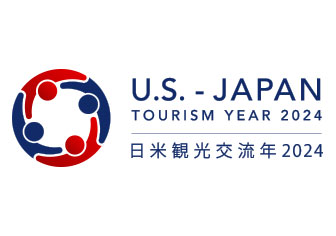
Important Notice
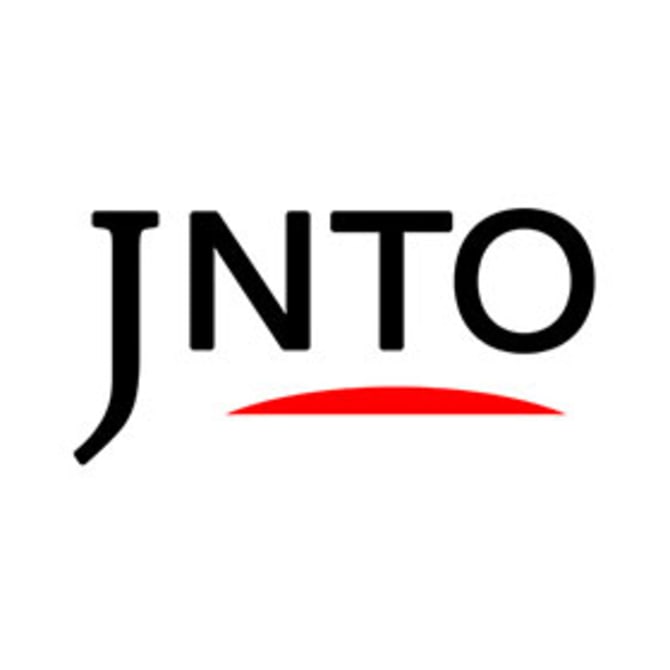
Travel Highlights
Popular places.
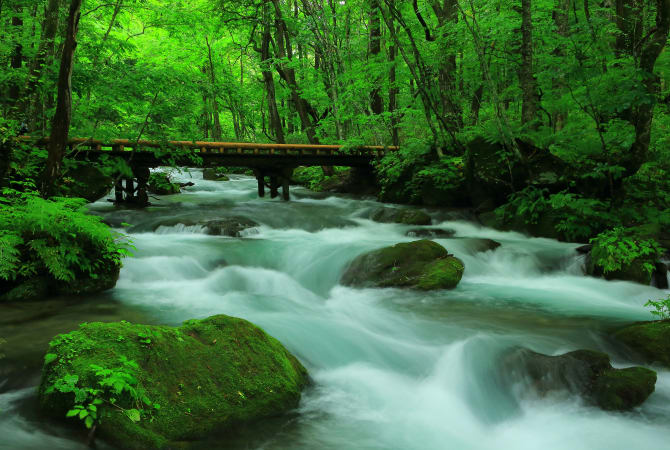
Explore by Interest
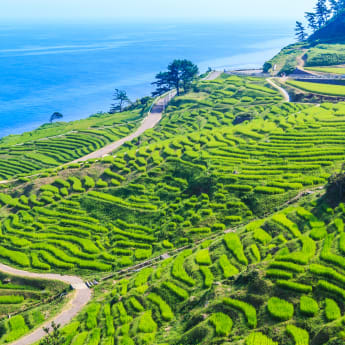
News from JNTO & Our Partners

Visitor Photos
Share your travel photos with us by hashtagging your images with #visitjapanUS
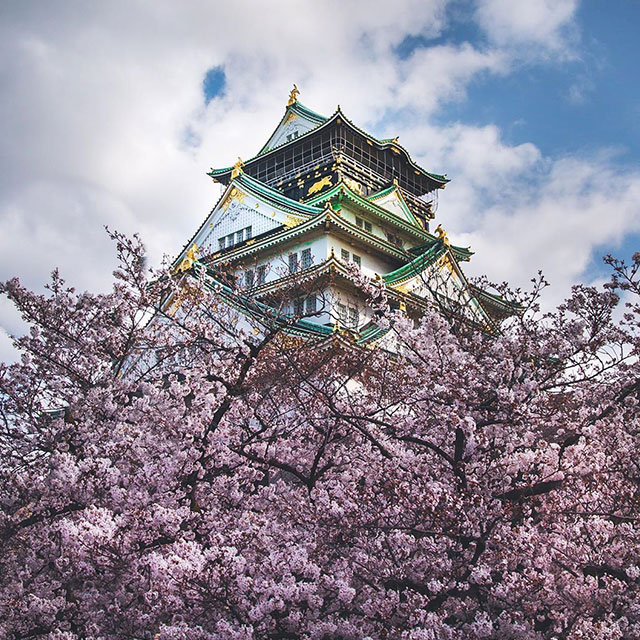
For First-Time Visitors
- Wi-Fi & Connectivity
- Weather & Geography
- IC Travel Cards
Where to Stay
- Luxury Stay
- Haneda Airport
- Narita Airport
- Osaka (KIX)
- Fukuoka Airport
Getting Around
- Shinkansen (Bullet Train)
- Luggage & Storage
Suggested Walks & Tours
- Tokyo 48 Hours
- Golden Route
- 2 Weeks in Japan
- Tour & Activities
Brochure Download
- Tours and Activities
Japanese Government Information
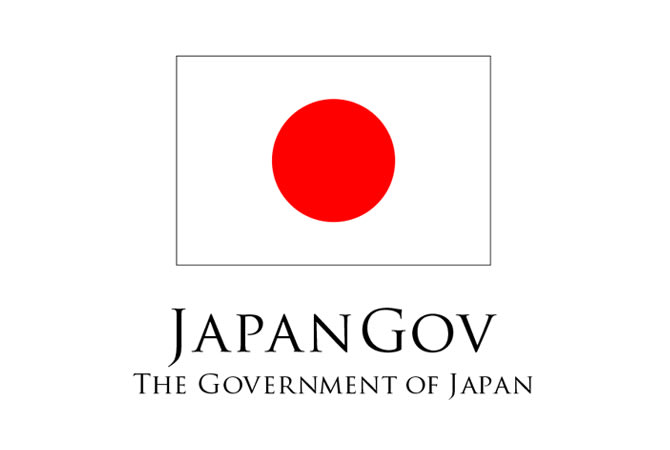
Aug 28, 2019

Aug 26, 2019
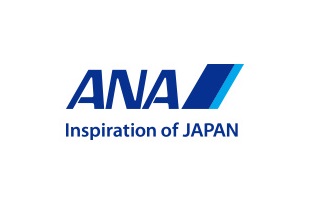
Aug 09, 2019

Please Choose Your Language
Browse the JNTO site in one of multiple languages
- Account details
- Newsletters
- Group subscription
Japan foreign tourists top 3m in March, fueling record spending boom
Travelers looking to capitalize on weak yen push up hotel and service prices
TOKYO -- The number of monthly visitors to Japan exceeded 3 million for the first time in March, while tourism spending broke a quarterly record as the weak yen drove spending on services and experiences, government data shows.
But while the rebound is bringing the government's goal of 15 trillion yen ($97 billion) in annual tourism spending by 2030 within reach, it is also driving up prices and creating problems for local residents in especially popular areas.
Japan's Hakuba resort tries to avoid skiing into Niseko's rut
Japan's expo 2025: osaka triumph or billion-dollar folly, japan hotel rates spike 25% as weak yen draws foreign tourists, japan's bullet train network just became bigger with new stops, japan to trim red tape for tourism off the beaten path, bento food tourism lures visitors to japan, japan's ryokan inns get a makeover by younger owners, latest on travel & leisure, japan-south korea travelers help incheon air traffic hit pre-covid levels, visitors to asean hit 100m in 2023, 70% of pre-covid level, jal launches boeing 'cockpit' hotel room to tap your inner pilot, sponsored content, about sponsored content this content was commissioned by nikkei's global business bureau..
Nikkei Asian Review, now known as Nikkei Asia, will be the voice of the Asian Century.
Celebrate our next chapter Free access for everyone - Sep. 30

IMAGES
VIDEO
COMMENTS
How much does it cost to travel to Japan? You should plan to spend around $122 (¥18,714) per day on your vacation in Japan. This is the average daily price based on the expenses of other visitors. Past travelers have spent, on average for one day: $30 (¥4,568) on meals; $18 (¥2,719) on local transportation
How Much Does it Cost to Travel in Japan? It's time to tally up all of my expenses to see my total travel costs! Accommodation: $97 per day Transportation: $27 per day Food: $23 per day Activities/Entrance Fees: $2 per day Miscellaneous: $2 per day. Average amount spent in Japan: $151 a day!
Bus Passes. One way to save on transport costs in Japan is by purchasing a Willer Express Bus Pass. This pass allows you to travel for 3, 5 or 7 days within a period specified by you. Advantages: The days of travel do not need to be consecutive, giving you flexibility in your itinerary.
Budget Couple's Trip. The lowest cost for a couple to visit Japan for a week is $1,781-$4,306 ($254-$615 per day) Food, Travel, and Sightseeing: $48 to $96 per day for two people's daily expenses. Flights: $1,127 to $2,788 for economy. Lodging: $53 to $62 per night for one 1-star hotel room. or $110 to $141 per night for a 1-bed vacation ...
The estimated total cost for 2 weeks in Japan is about $7,856 or £5,986 for 2 people based on 2024 prices. How much cash should I bring to Japan for 2 weeks? A good rule of thumb is to have about 10,000 to 20,000 yen with you in cash at all times. For 2 weeks, ¥100,000 ($700, £550) was enough cash for us.
Asia / Japan /. For a trip to Japan, you should plan for daily costs anywhere between $49 to $318. If there's two of you traveling, your daily expenses could range from $98 to $636. These price ranges are based on the average daily spending of $125 (¥18,714) per person which comes from the travel expenses of other visitors.
Tokyo to Sapporo flight (one-way): $35 - $85. Tokyo to Osaka flight (one-way): $32 - $97. Tokyo to Okinawa flight (one-way): $75 - $190. Good to know: When comparing flights to trains, be sure to account for the cost of transportation getting to and from the airport, as this can add quite a bit.
In general, a private Japan tour costs US$350-500 per person per day (with 2-4 people), including private car, private guides, local 4-star hotels, tickets for attractions, and full-day itineraries. Thus, the total cost is around US$2,500-3,500 for a week and around US$5,000-7,000 for 2 weeks. Riding a private car offers a more ...
Adults and teenagers from 12 years and older. Children From 6 to 11 years old. Small ones 5 years old and under. Plan your travel in Japan with Kanpai and calculate before you go the necessary budget for transportation, accommodation, and the general cost of living.
Medium budget: 500 - 1000 yen per day. Many coffee shops and some restaurants in shopping areas and around train stations offer breakfast sets for around 500 to 1000 yen. High budget: above 1000 yen per day. Hotel breakfasts and breakfast buffets will usually cost you more than 1000 yen.
Generally speaking, you can travel around Japan on a budget of $60-$120 per day (per person). As you can see in the infographic, our Japan daily budget was ¥13.418 (€107/$122) as a couple. Read the post for detailed information about the costs of a trip to Japan, exactly how much we spent on accommodation, food, transport, and activities ...
The price chart on this page is designed to give an idea of what you can expect to pay for a variety of everyday and travel-related items in Japan. Food, Drink and Sundries Price; drink: about 130 yen: cup of coffee: 100-600 yen: can of beer: about 250 yen: pint of beer: from about 500 yen: 1/2 liter of mineral water:
This is usually only a few euros, but in three weeks it can easily add up to a rather high amount. The entrance fee for temples is usually between 200 to 600 Yen (1,50 to 5 euros). More expensive are viewpoints, as for example in Tokyo and Osaka. Here the prices range from 600 yen (5 euros) to 3,000 yen (25 euros).
Don't plan a trip to Japan without watching this! EVERYTHING you need to plan a trip to Japan is RIGHT HERE! This page is your one-stop-shop Japan travel planning guide to plan out your trip itinerary, set your budget, find accommodations, understand the Japan train system, what to understand about the local culture AND which aps to download.
In Tokyo, for example, the cost of using the metro train system is extremely affordable, with certain short-distance rides costing only 200yen (approx. $1.85USD). That all depends on the destination, of course, as some rides within the city can go up to 700-800yen (approx. $7.50USD).
4. Go camping in the summer months. If you really want to do Japan on the cheap, you can rely on its network of well-maintained campsites in rural or resort areas; prices range from ¥500 to ¥1,000 per person or tent. Note that many sites are only open in the summer. 5. Swap a night in a hotel for an overnight bus ride.
From the United States, a round-trip flight to Japan can be anywhere from $800 USD to $1500 USD. This cost will fluctuate depending on the time of year you choose to travel and where you're traveling from, so keep an eye on prices and see if you can score yourself a deal.
Best & Most Useful Japan Travel Apps. Traveling in Japan is made so much easier (and less confusing!) with a few handy apps. Before packing your bags, be sure you have these helpful Japan travel apps downloaded to your phone to make transportation a cinch and the language barrier practically non-existent.
Before you leave for Japan, you should create a thorough budget outlining the general budget of your vacation. The average cost of a 7-day trip to Japan is $1,659 for a solo traveler. That leaves us at about $237 per day per person. This includes travel expenses, local transportation, food, accommodation, and sightseeing.
Japan Travel Guide. Last Updated: February 18, 2024. Japan is one of the most amazing, beautiful, interesting, and friendly countries in the world. From bustling Tokyo and Zen-like Kyoto all the way to laid-back Okinawa and wintery Hokkaido, Japan rocks. It boasts mouthwatering food, majestic temples and shrines, serene gardens, lush national ...
Trip to Japan Calculator. Every traveler has a different budget and situation. Our calculator takes all possibilities into consideration for a quick trip or a long vacation in Japan. 1) Length of Stay. 2) Number of Travelers. 3) Choose City (s) you want to Visit: East & Central Japan. (Tokyo, Nagoya, Nagano, Nikko, Hakone)
As we're already doing with our over 5,000 articles of Japan travel advice. We offer the best prices. Thanks to being 100% focused on Japan travel, we have a unique network of local partners who work daily with our local team in Japan, as well as our international team making multiple trips a year to negotiate the best deals for you.
1. Plan as far in advance as you can. As frequent readers of this website know, we're avid travelers and have been all over the world - sometimes hopping countries on just a few days' notice ...
Ubigi Japan Travel eSIM: from $8 for 1GB, 8 days; GigSky Japan Data eSIM: from $10 for 500MB, 15 days; You can easily buy and activate these eSIMs online before your trip. Then once you arrive in Japan, your phone will automatically connect to the local network and you'll have data to use for maps, translation apps, and staying in touch with ...
The average daily room rate for March was about 20,986 yen ($136), the highest level since August 1997 and a nearly 20% increase from the same period last year, according to CoStar Group. The ...
Source: Japan National Tourism Organization. For the first quarter of this year (January-March), Japan welcomed over 8.5 million tourists. During this period, international travelers collectively ...
Planning a Trip to Japan? Share your travel photos with us by hashtagging your images with #visitjapanjp. Travel Japan - The Official Japan Guide. None U.S.-JAPAN TOURISM YEAR 2024. None Go Beyond Japan's Major Cities: Hokuriku Shinkansen Extension in 2024. None
SATSUKI KANEKO, Nikkei staff writer April 18, 2024 01:54 JST. TOKYO -- The number of monthly visitors to Japan exceeded 3 million for the first time in March, while tourism spending broke a ...